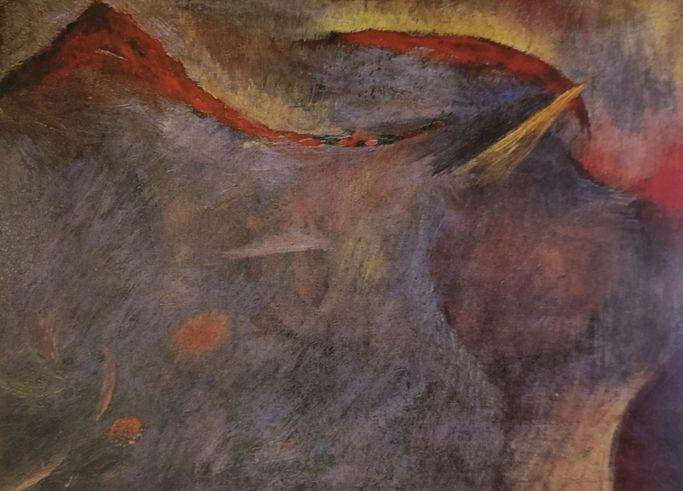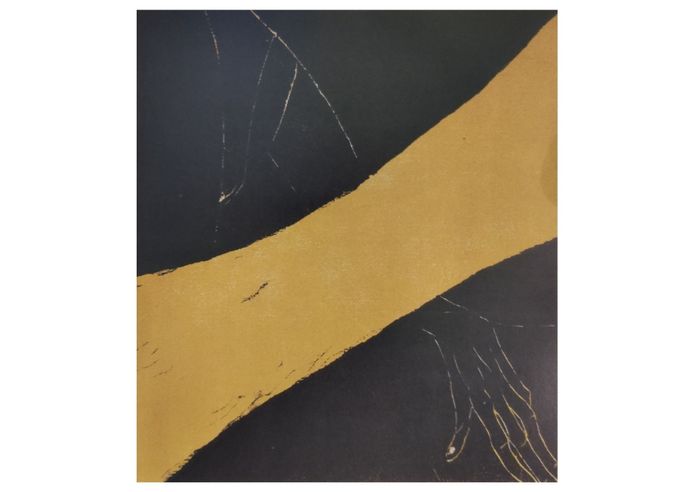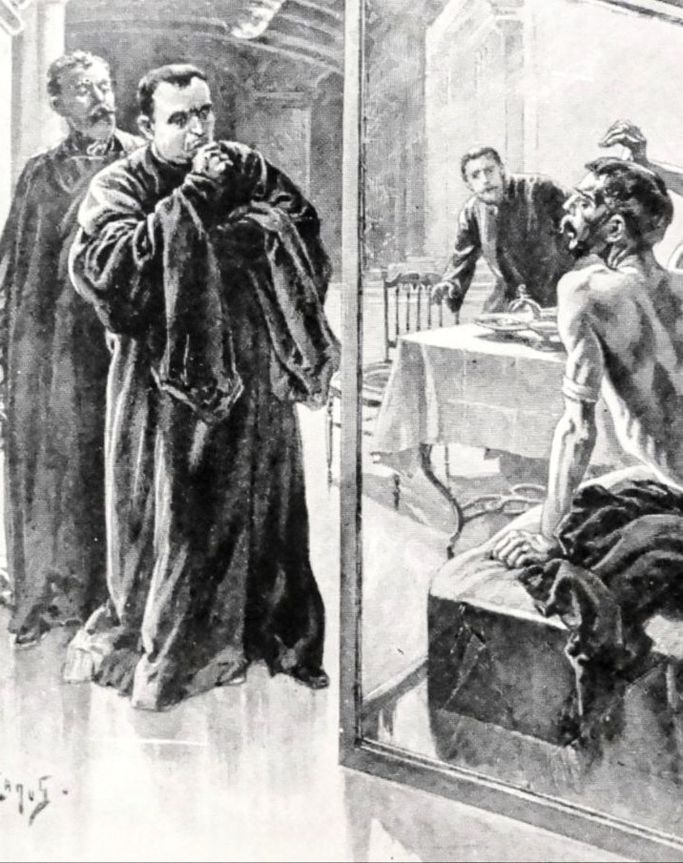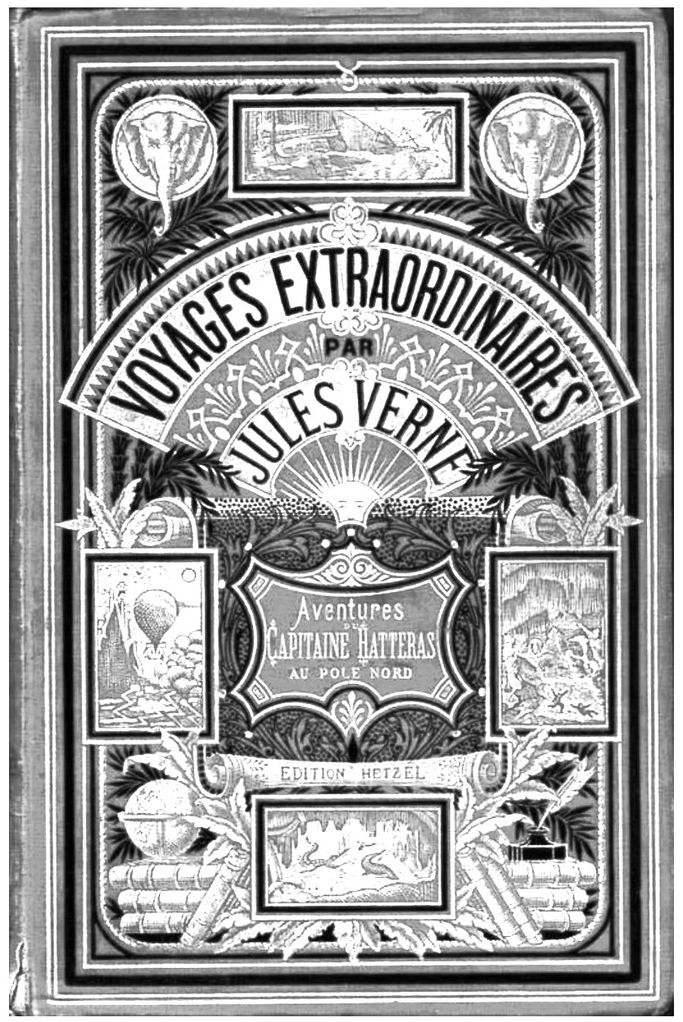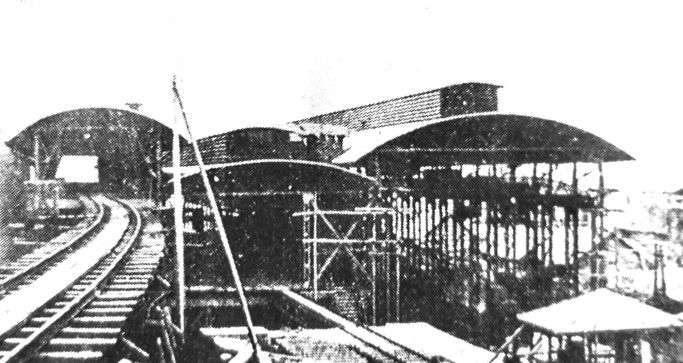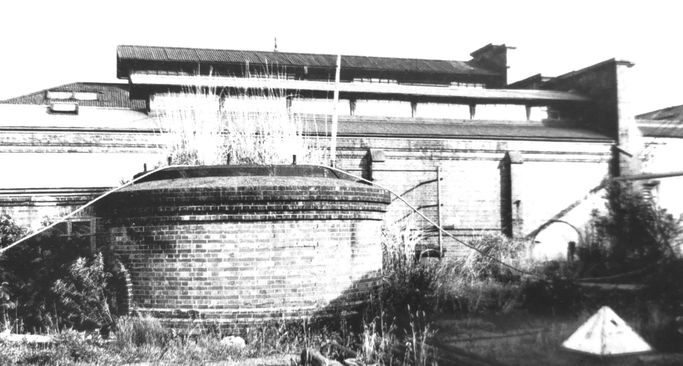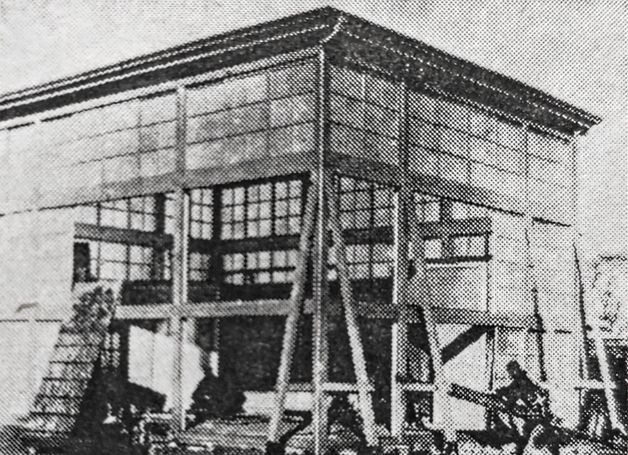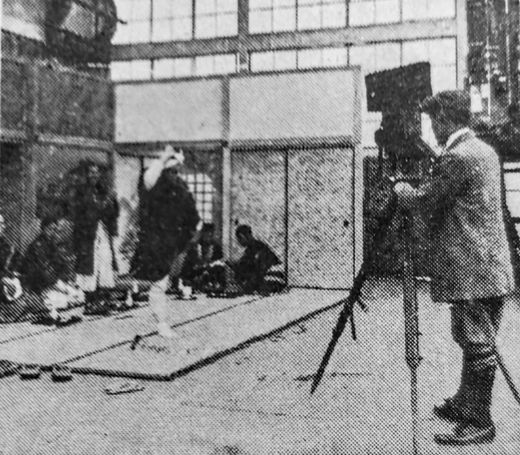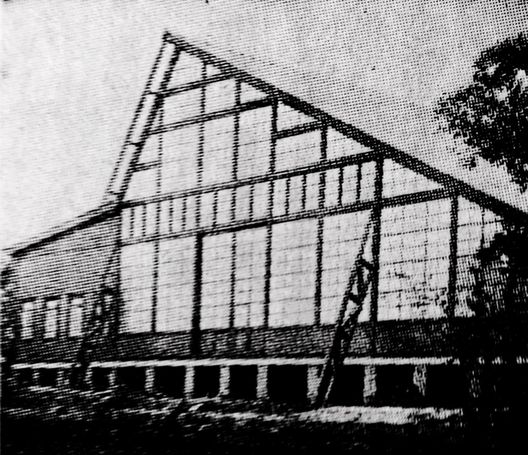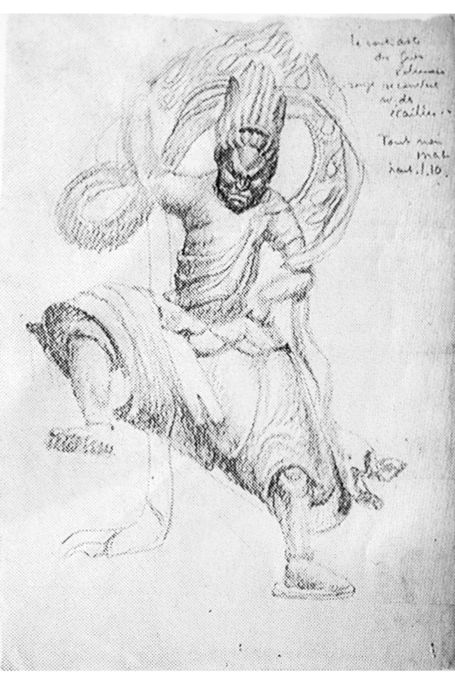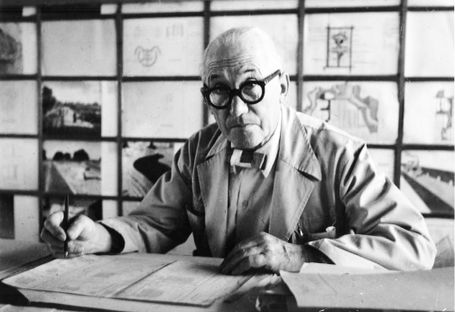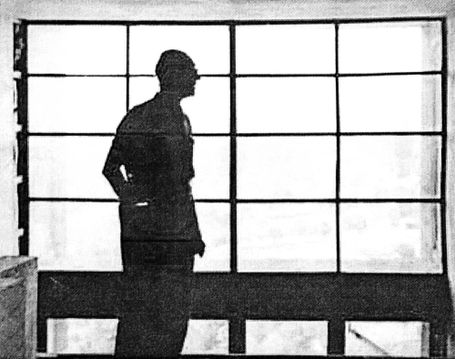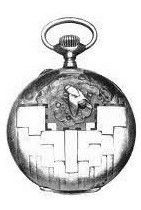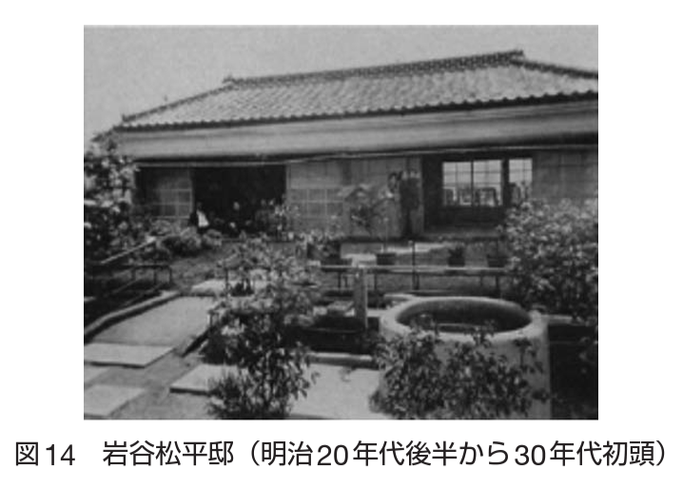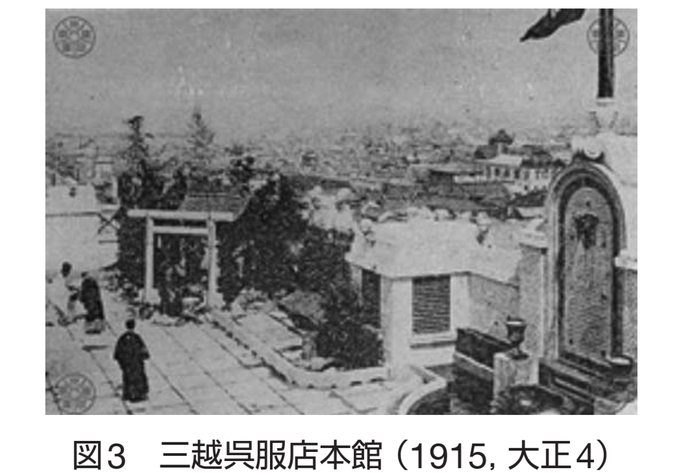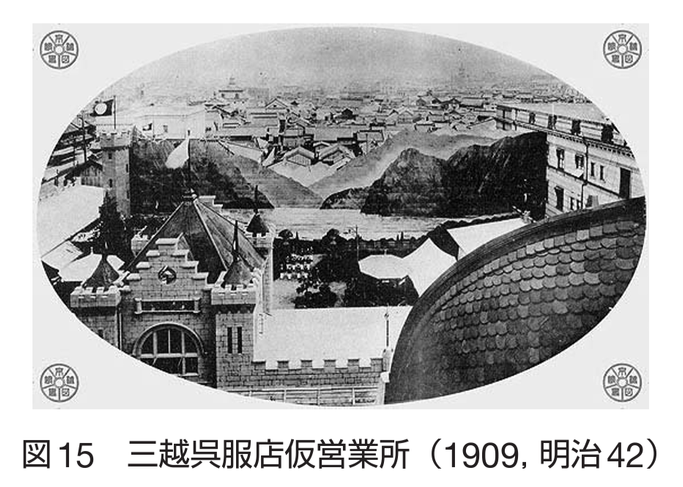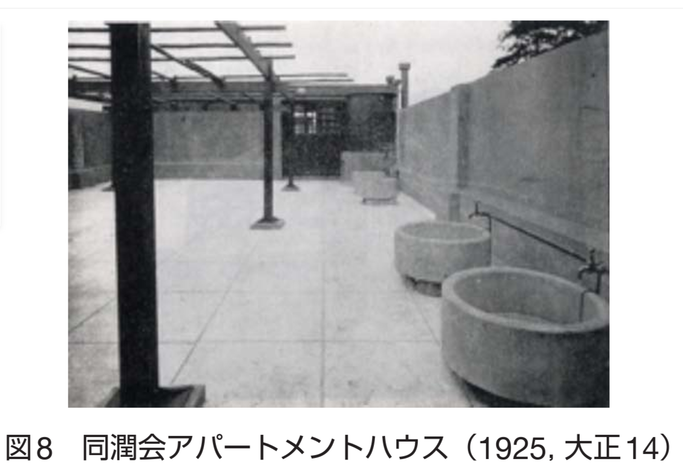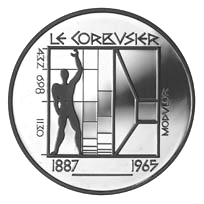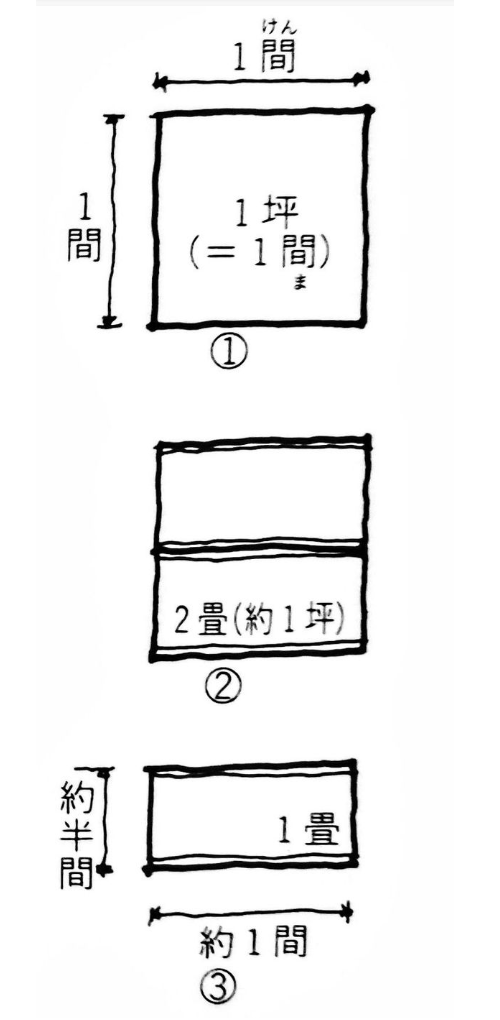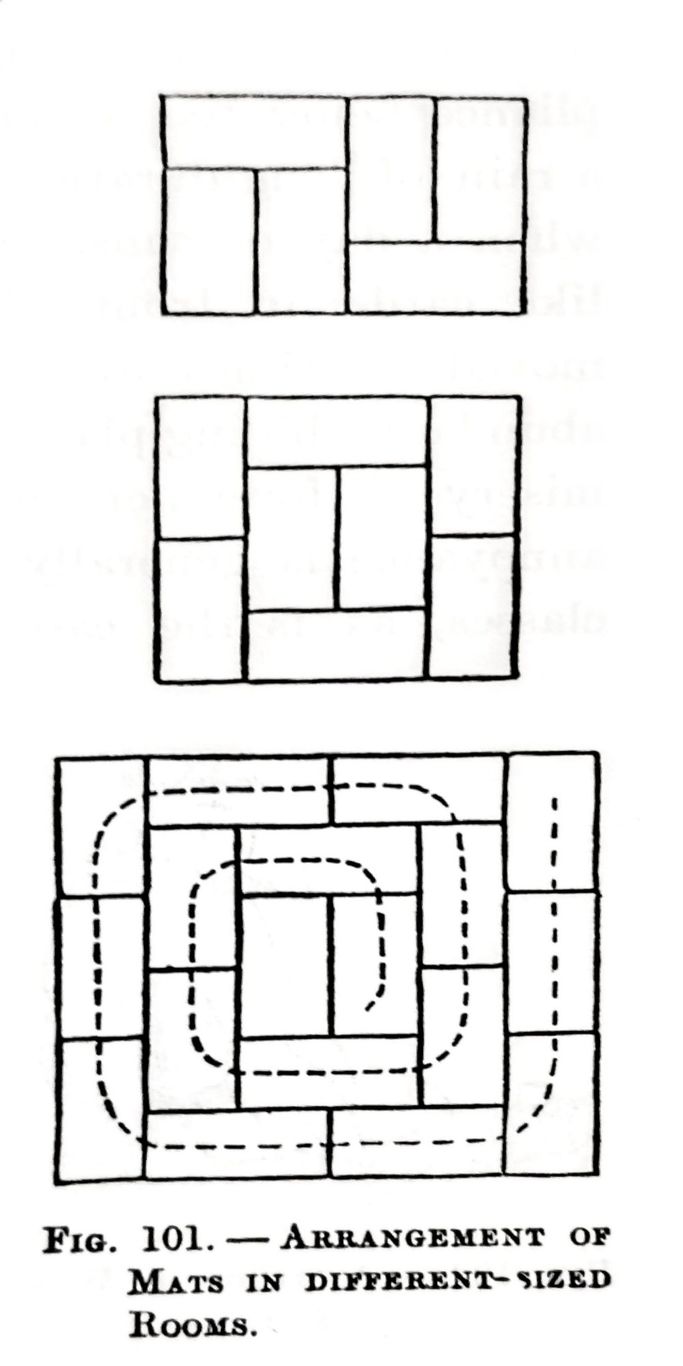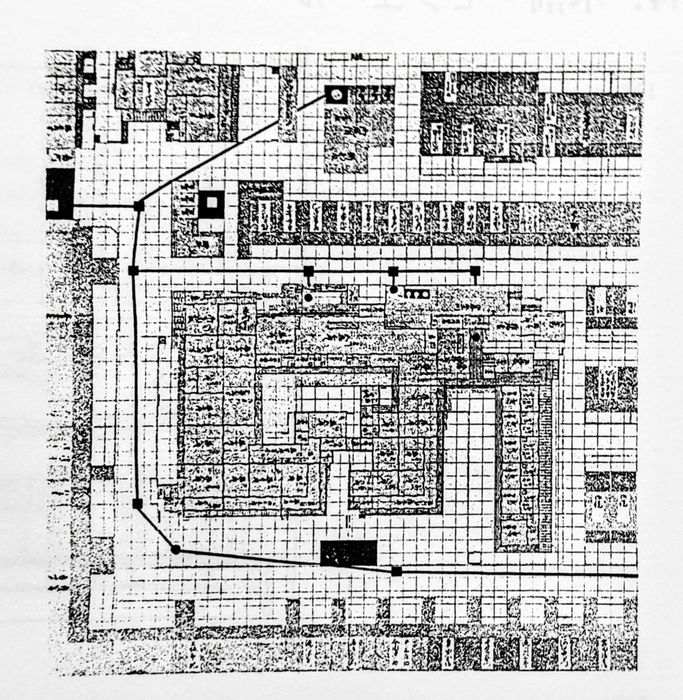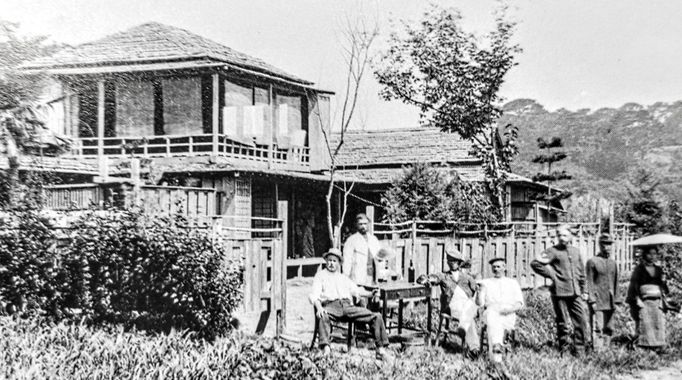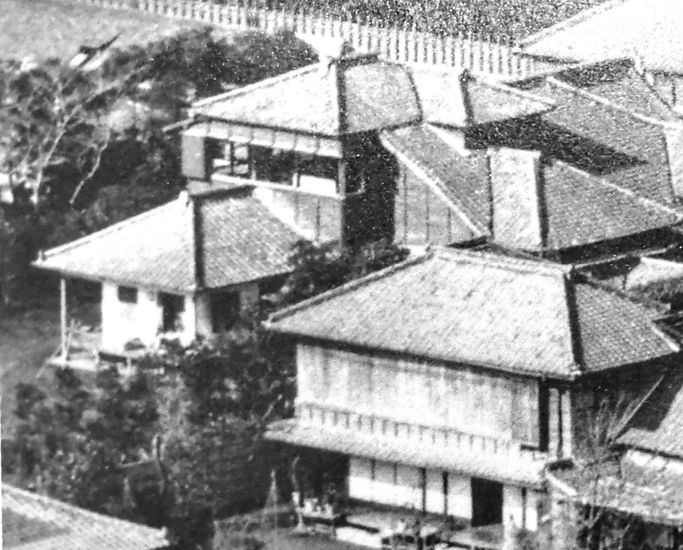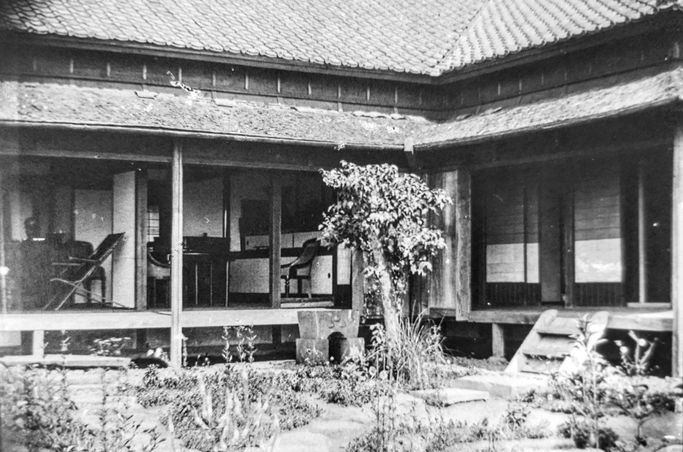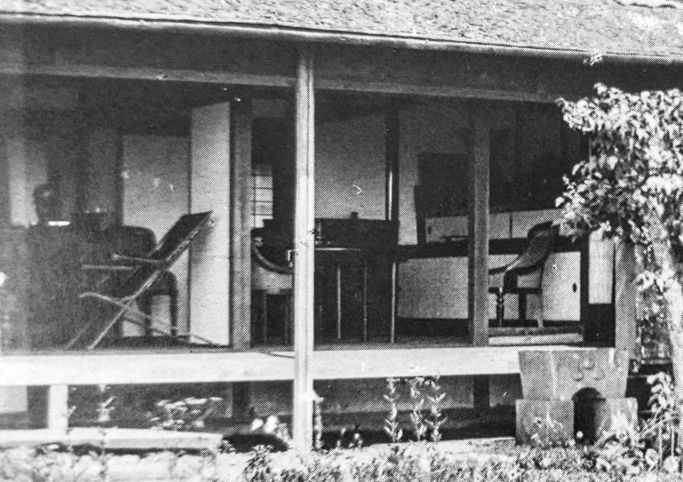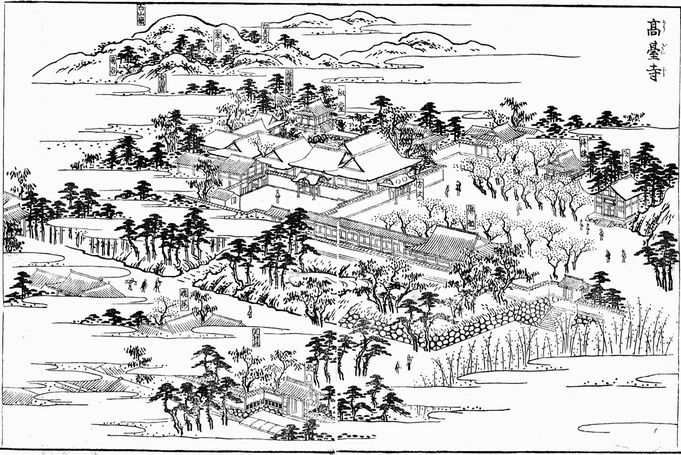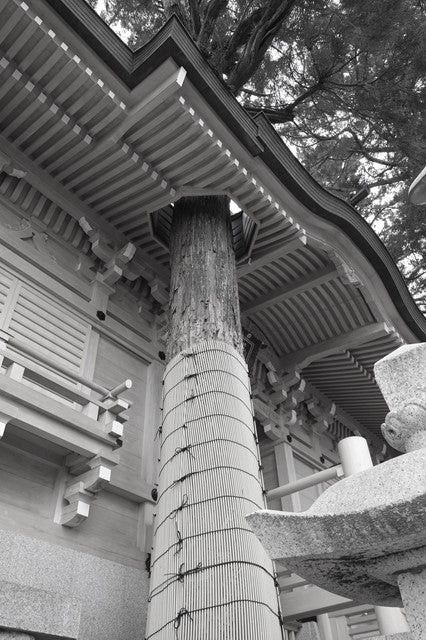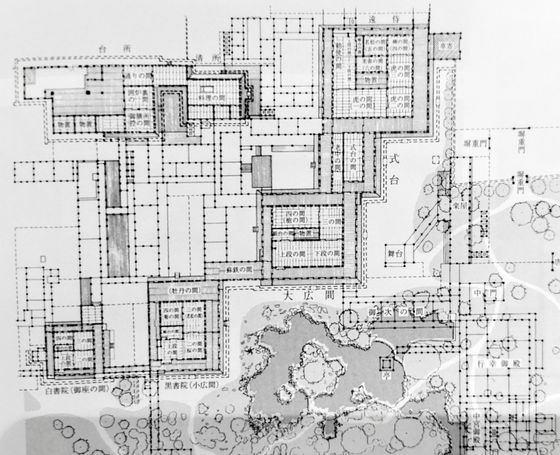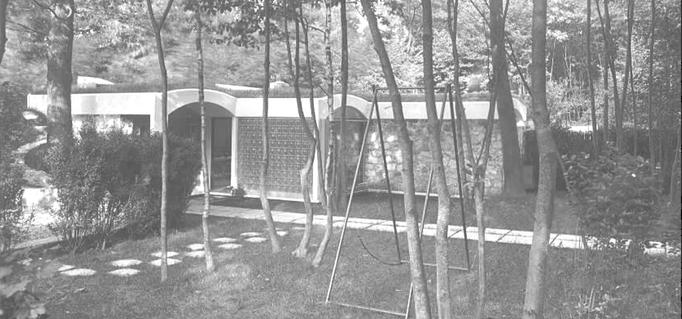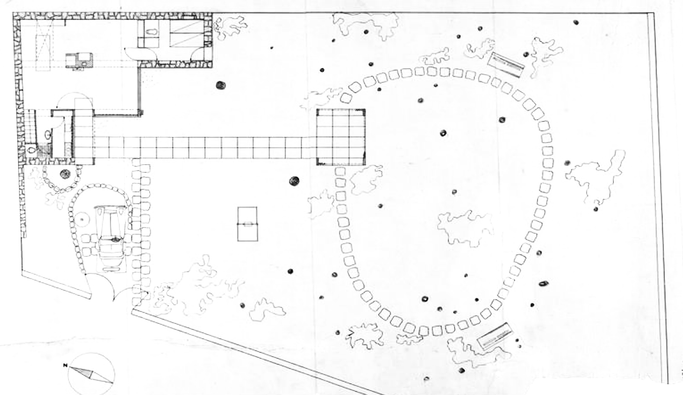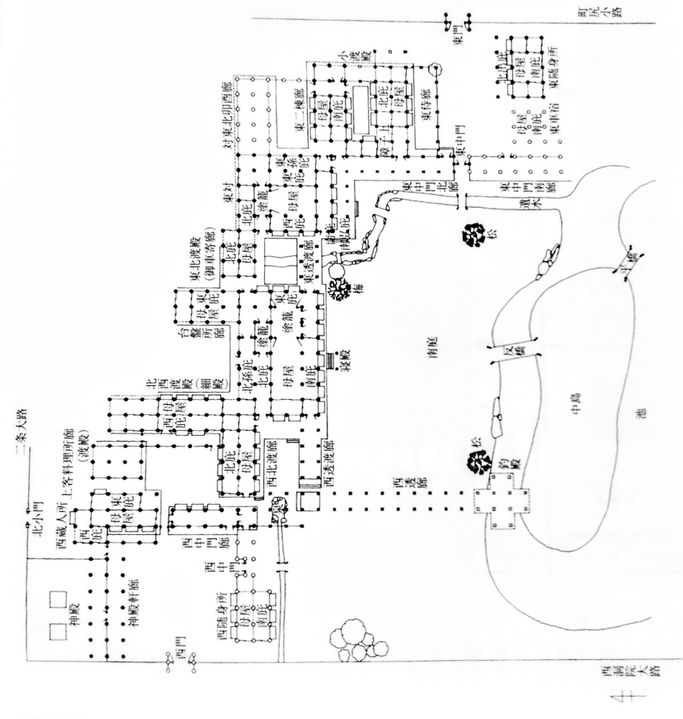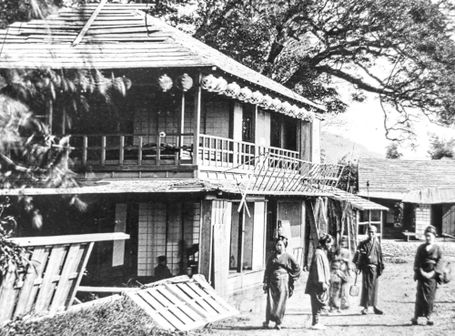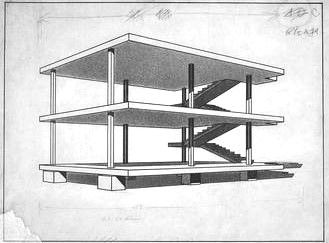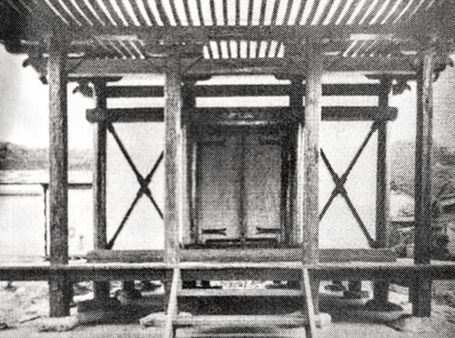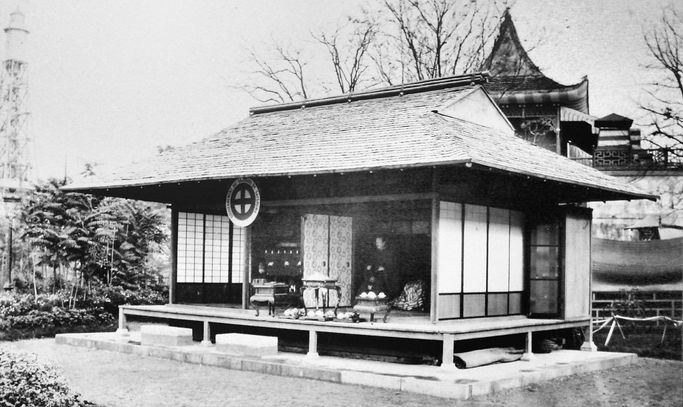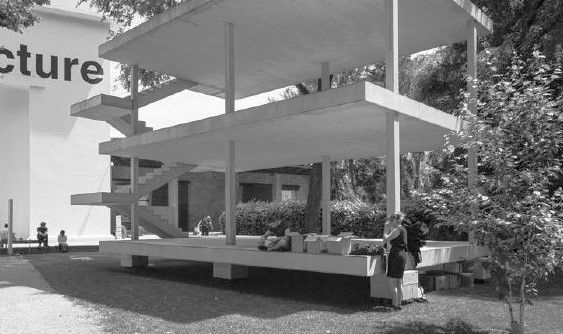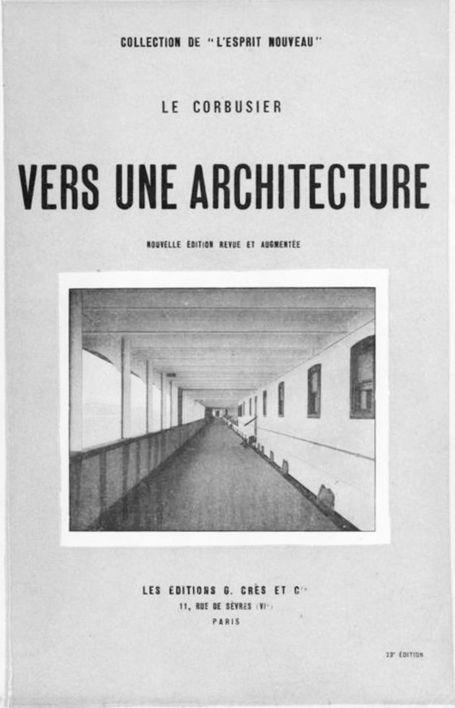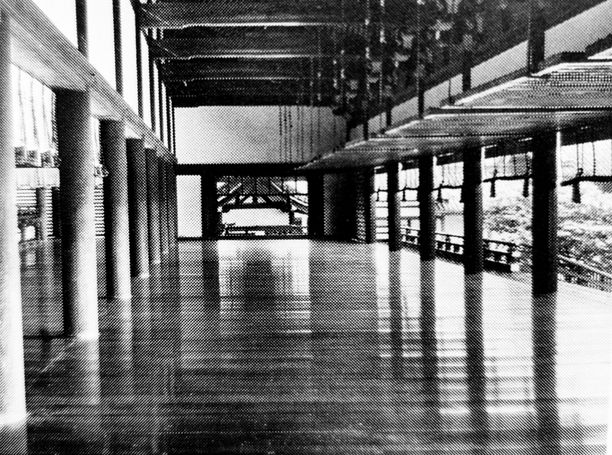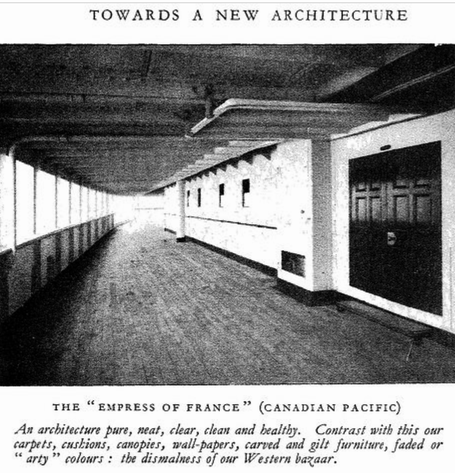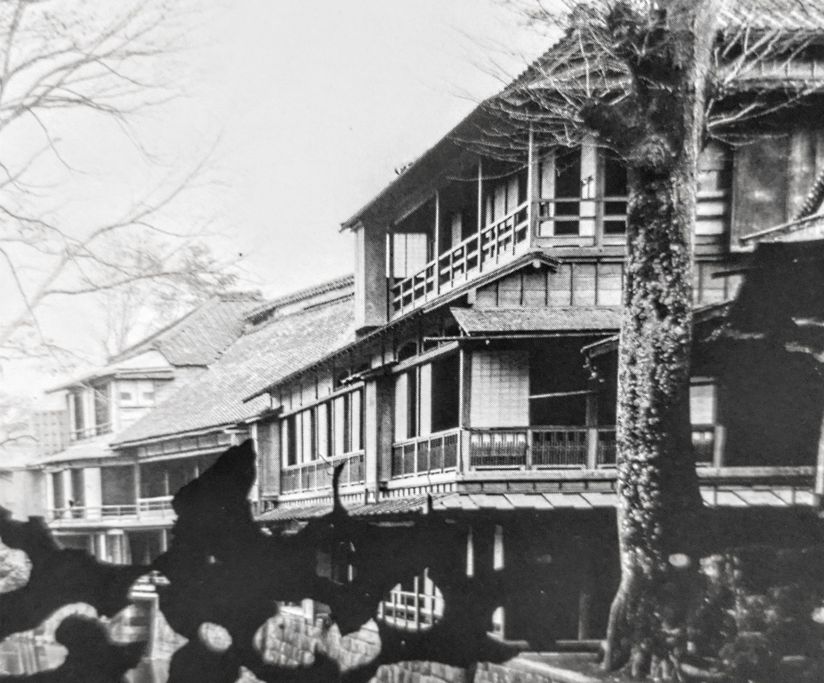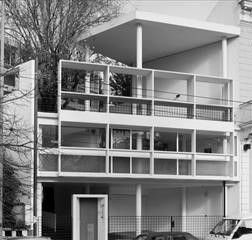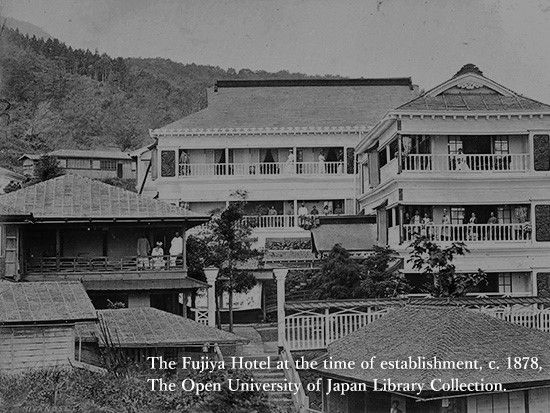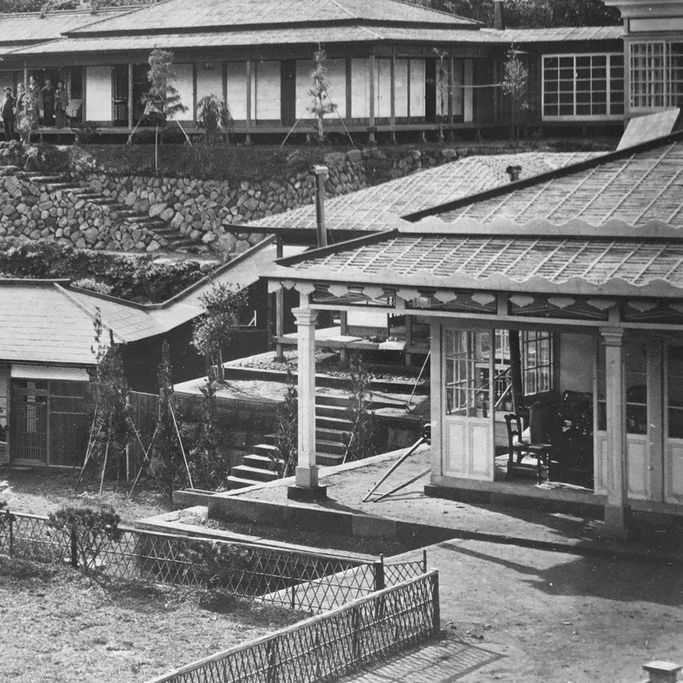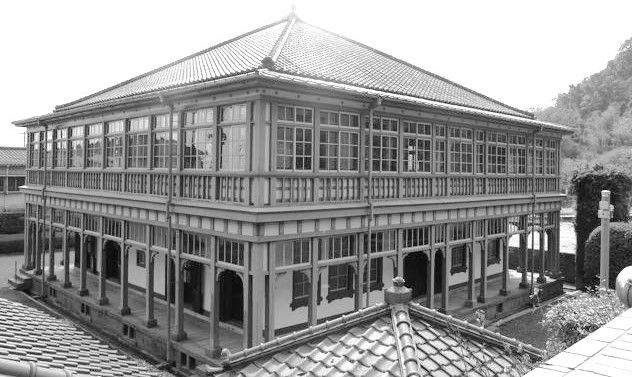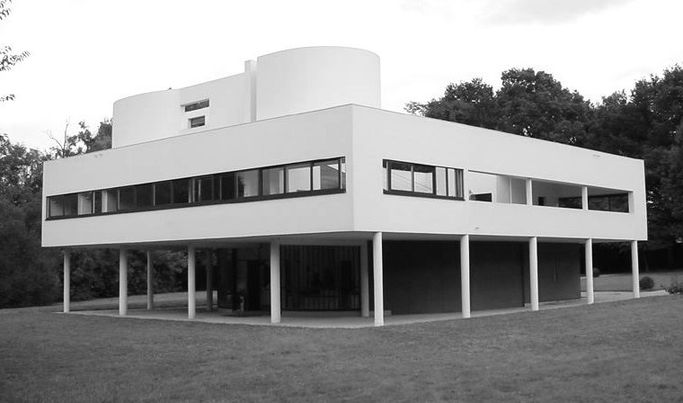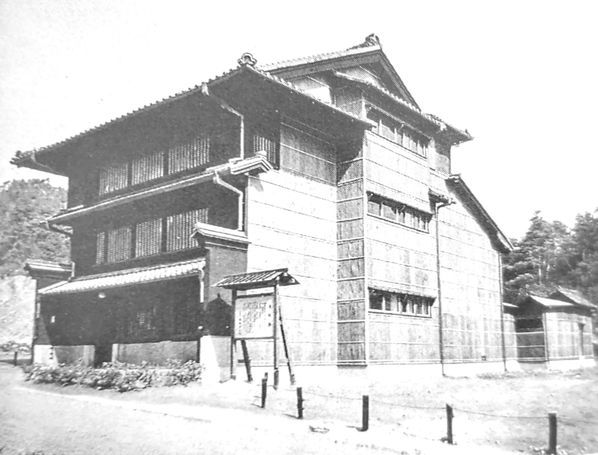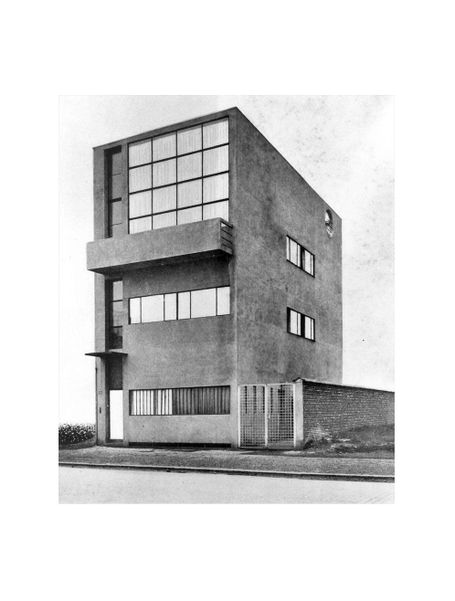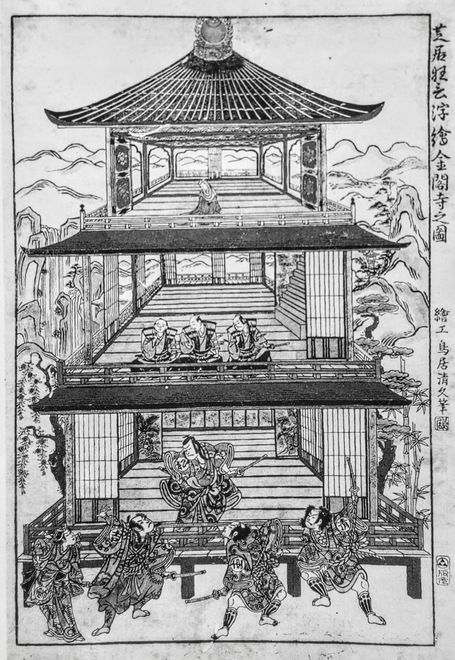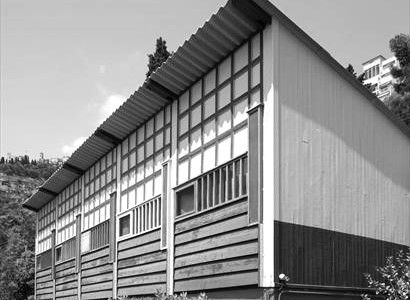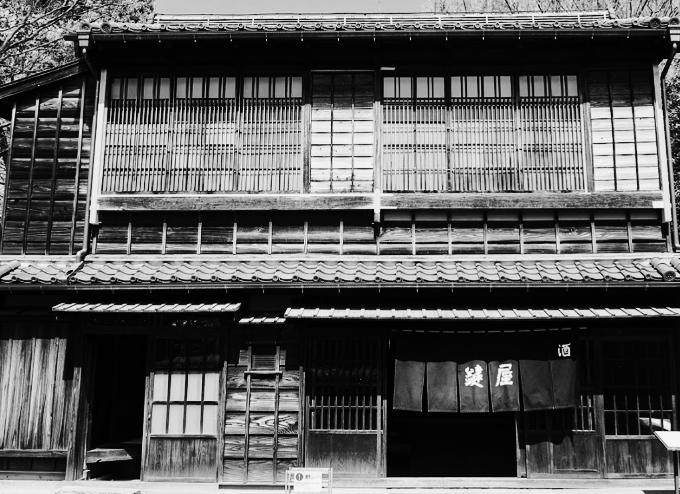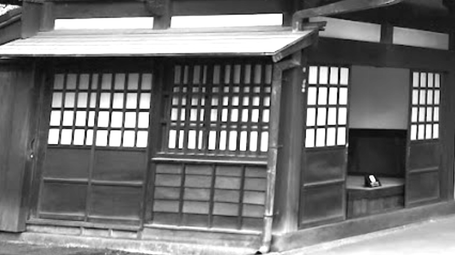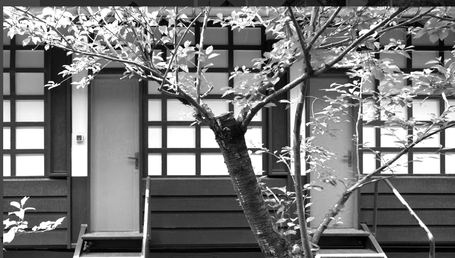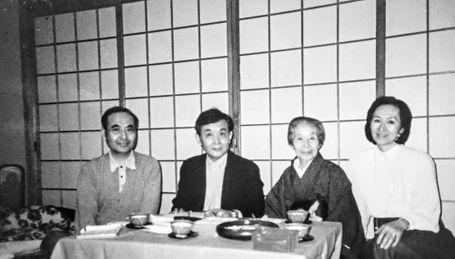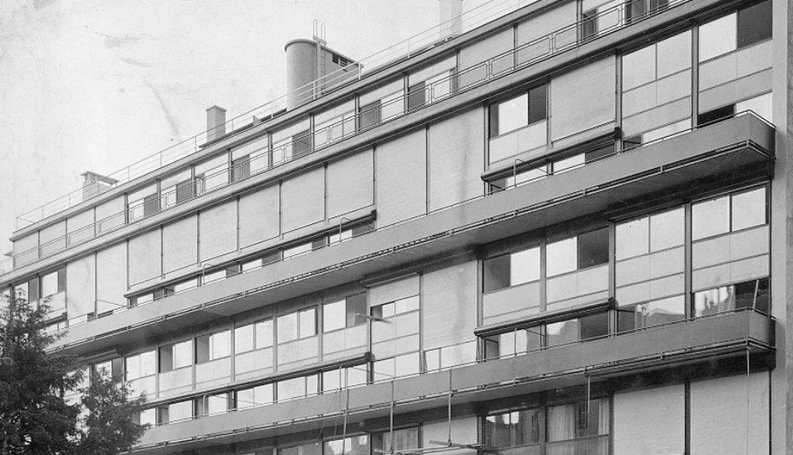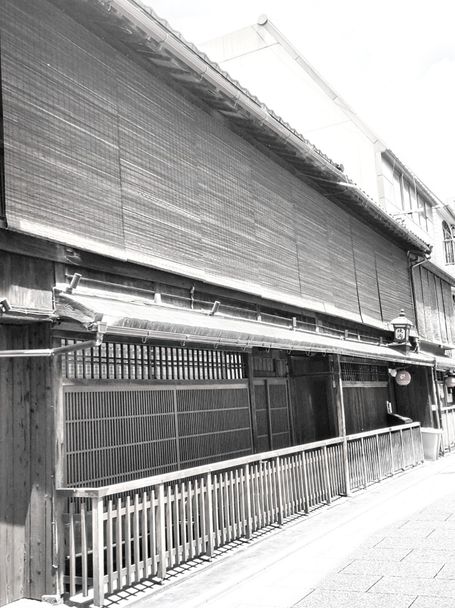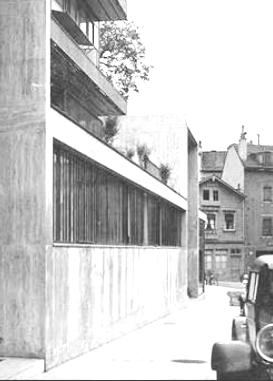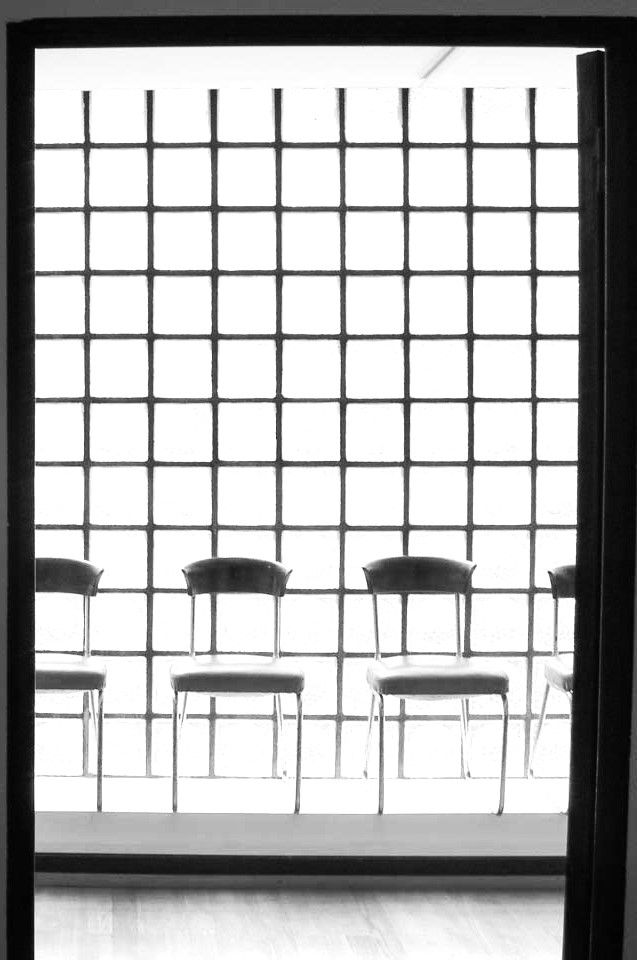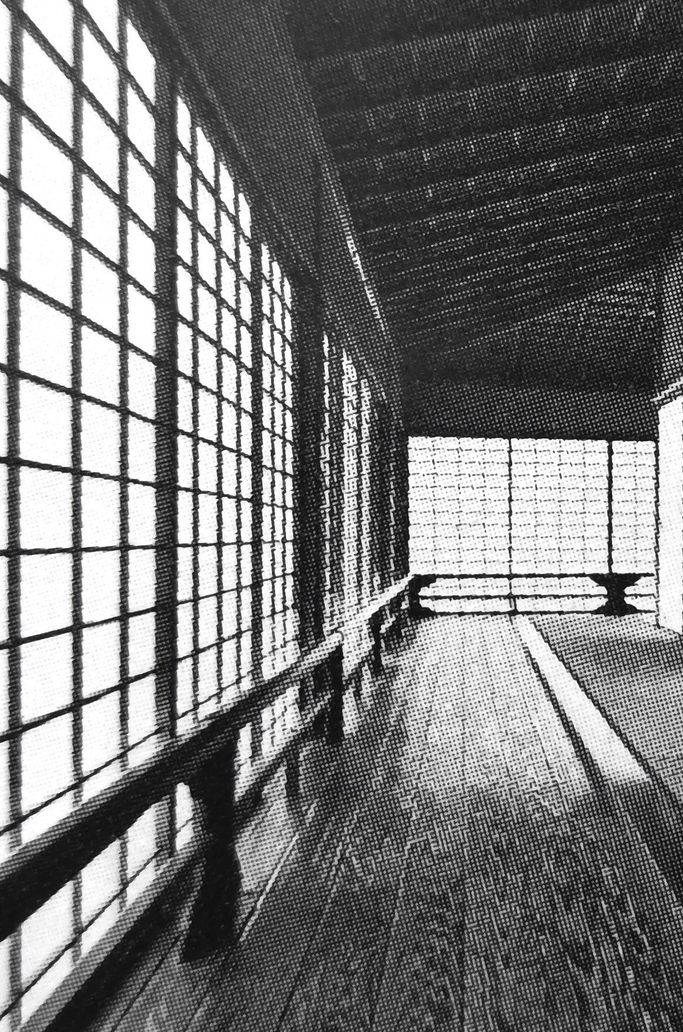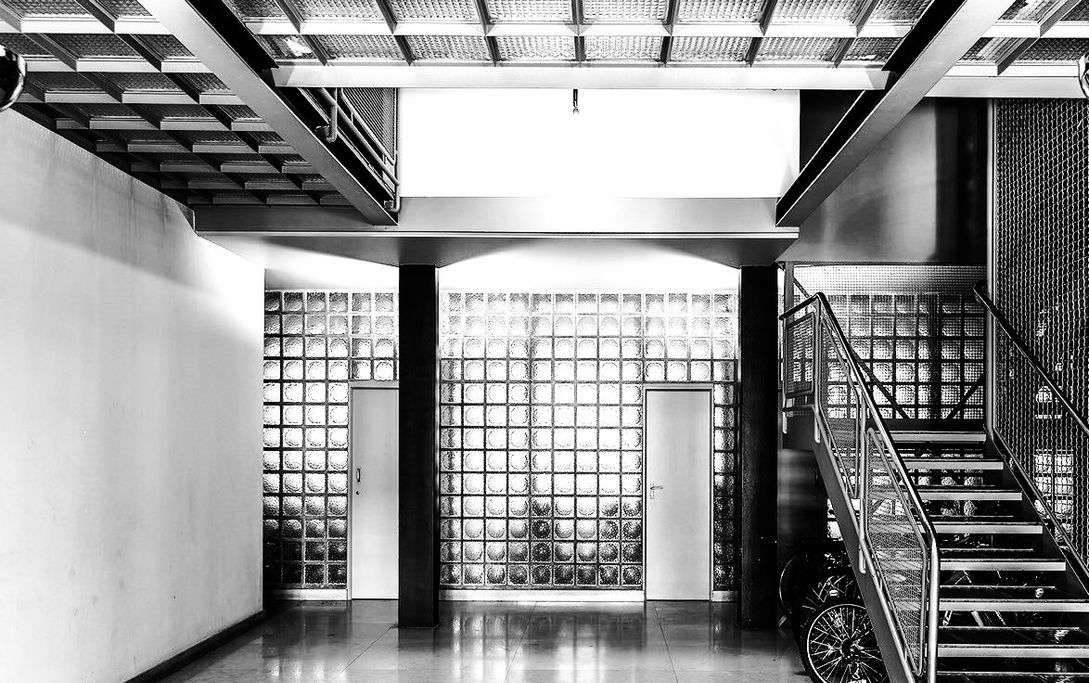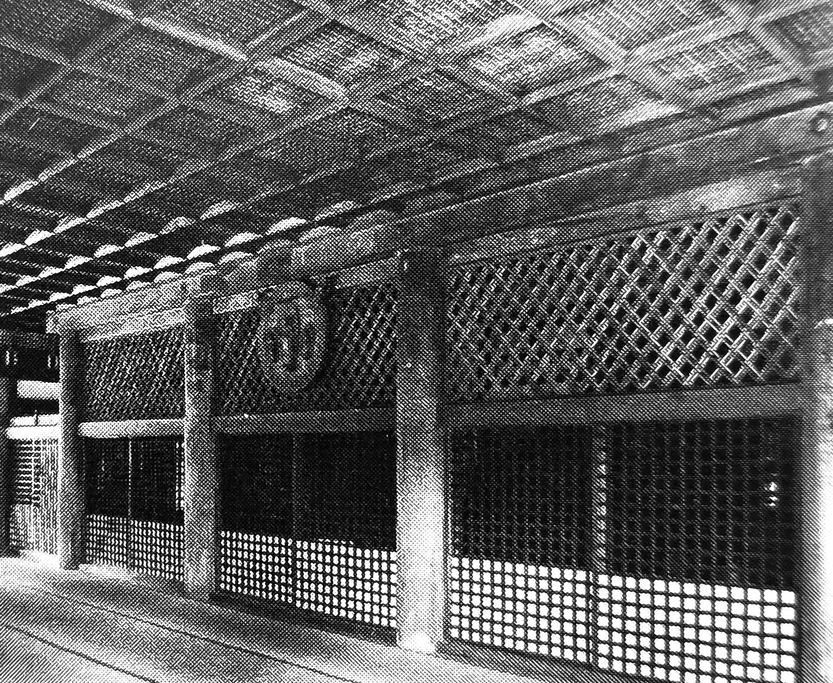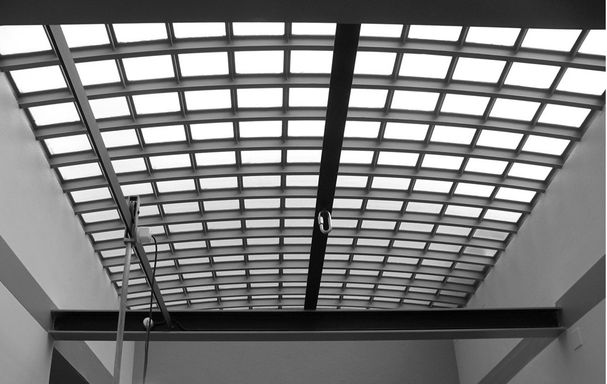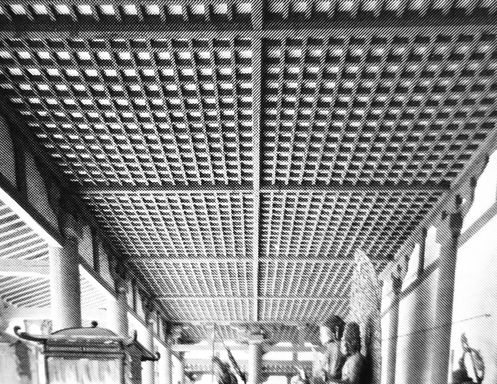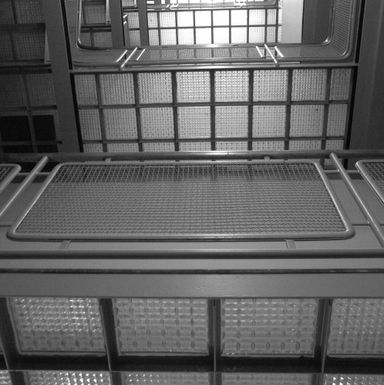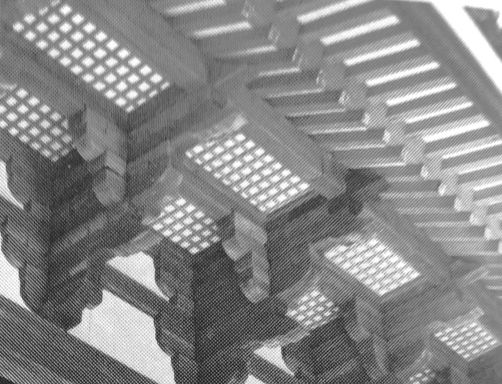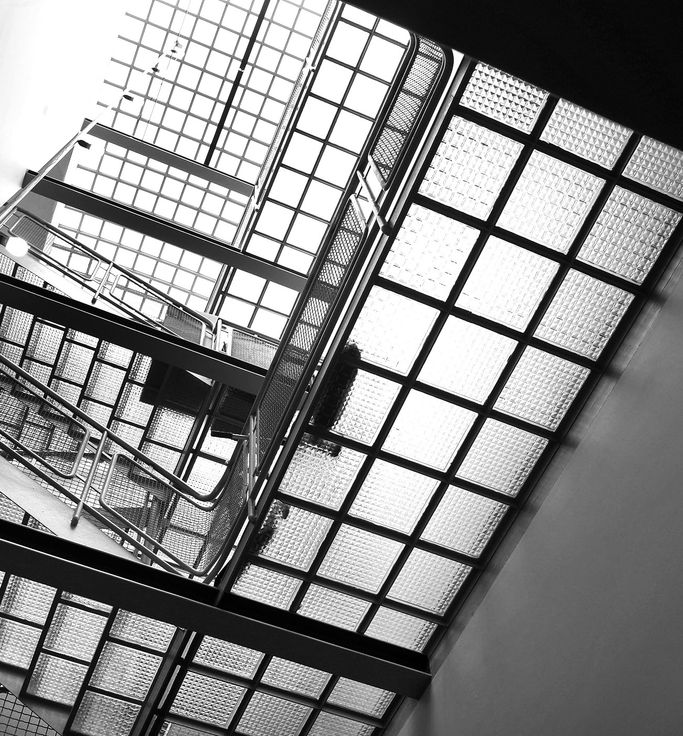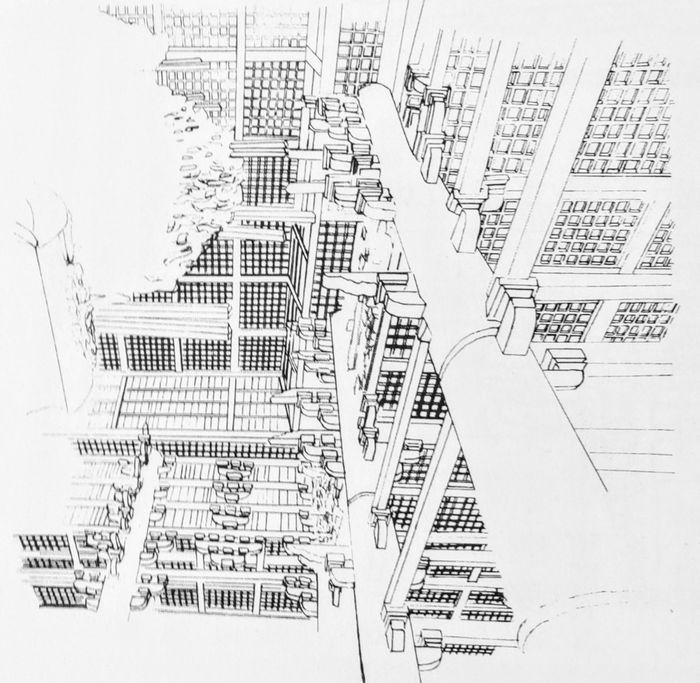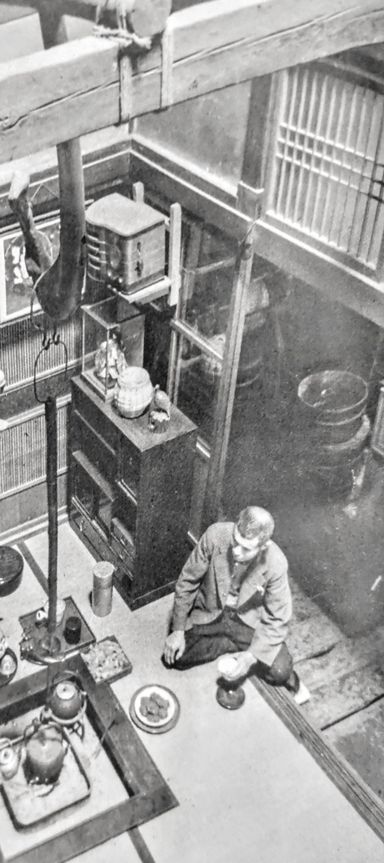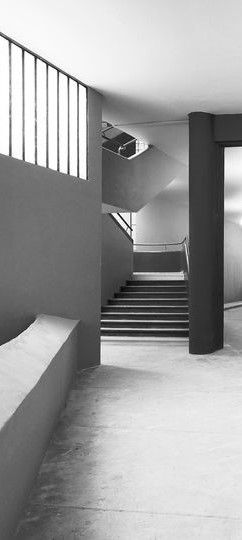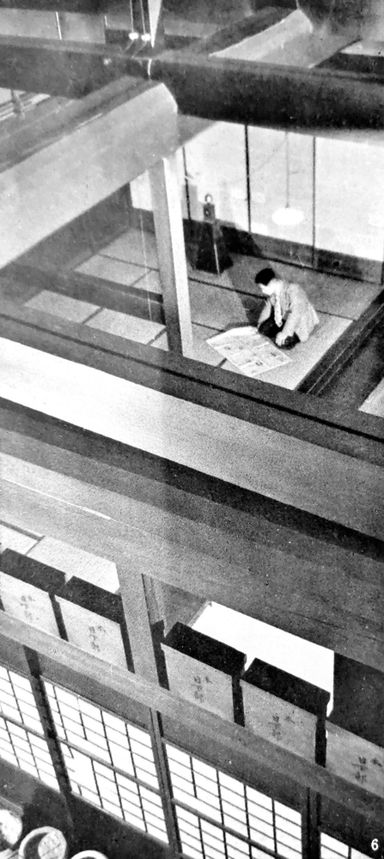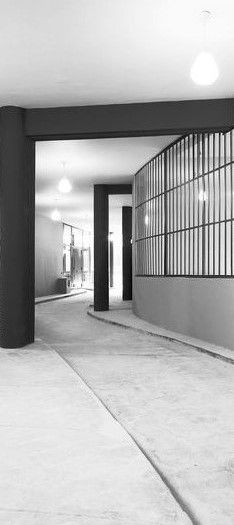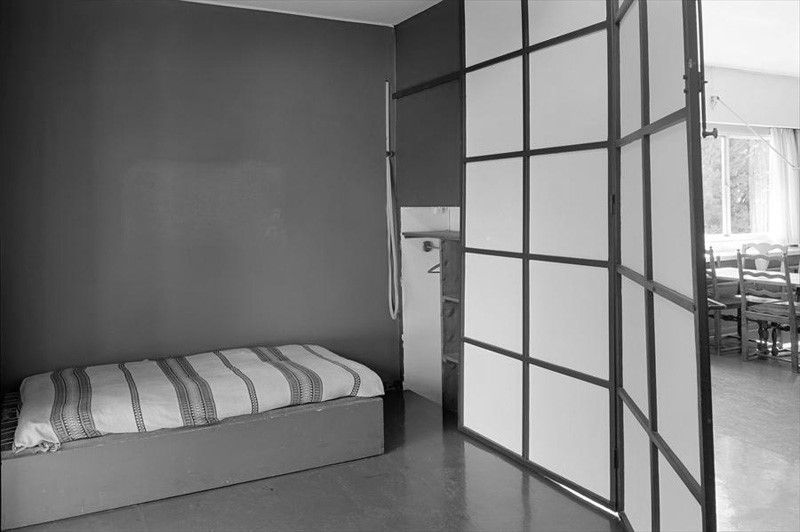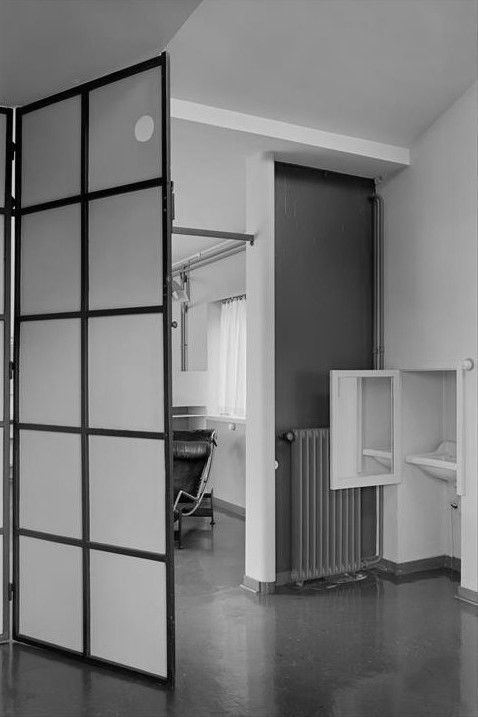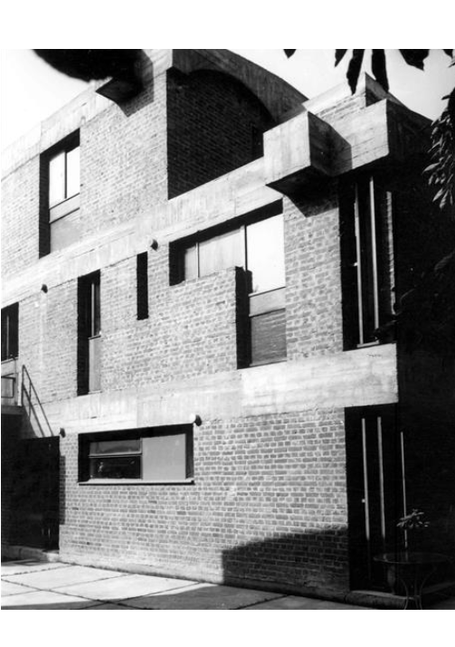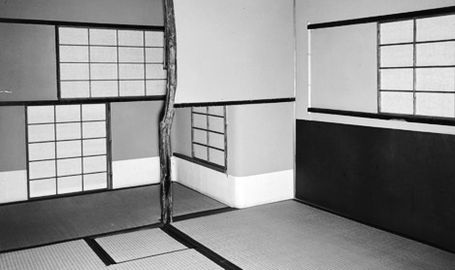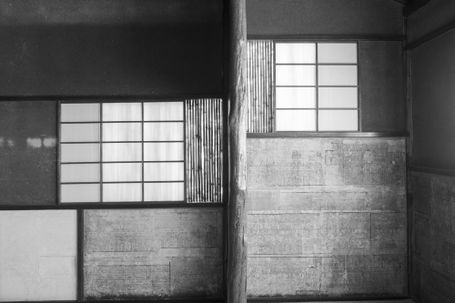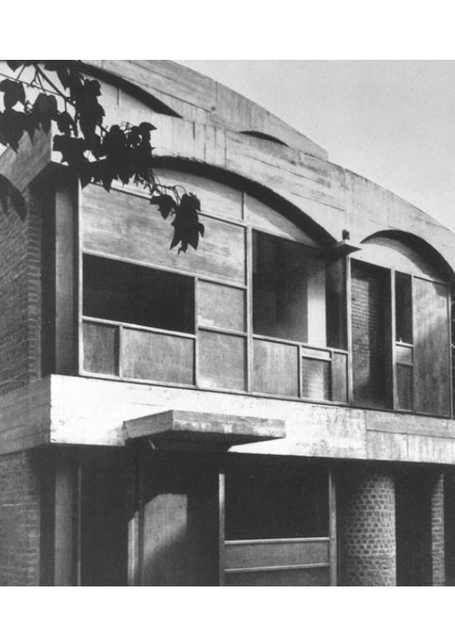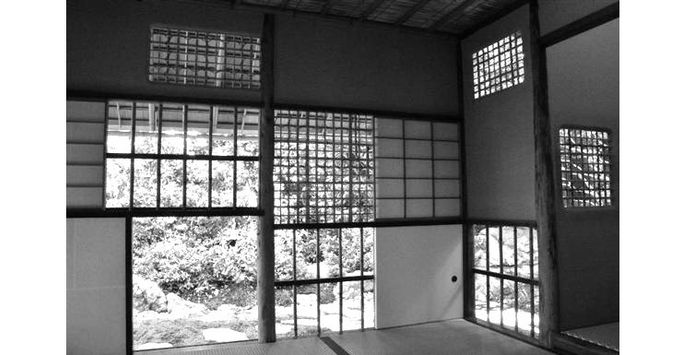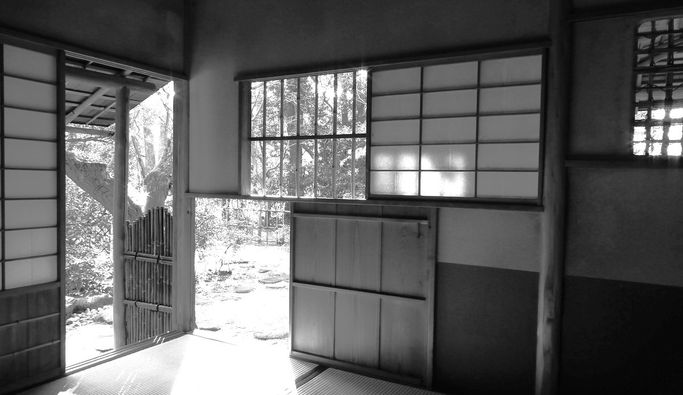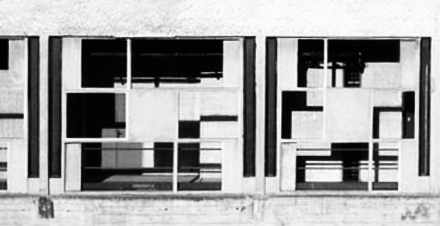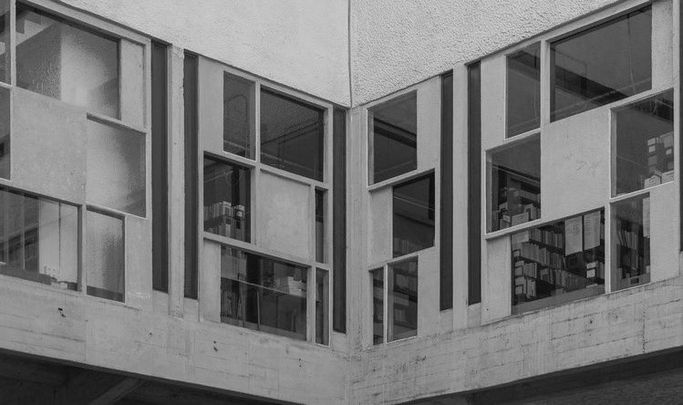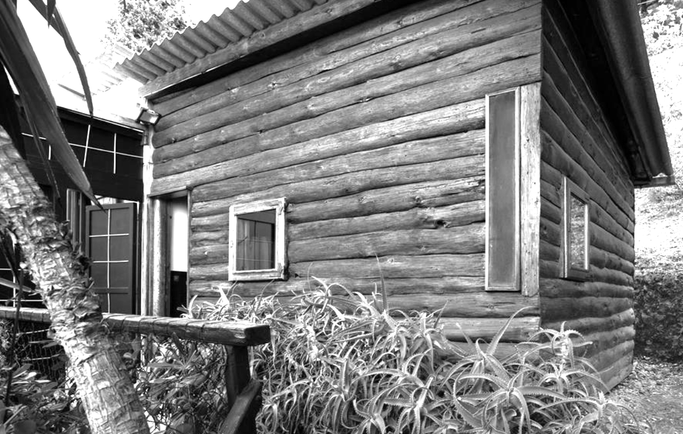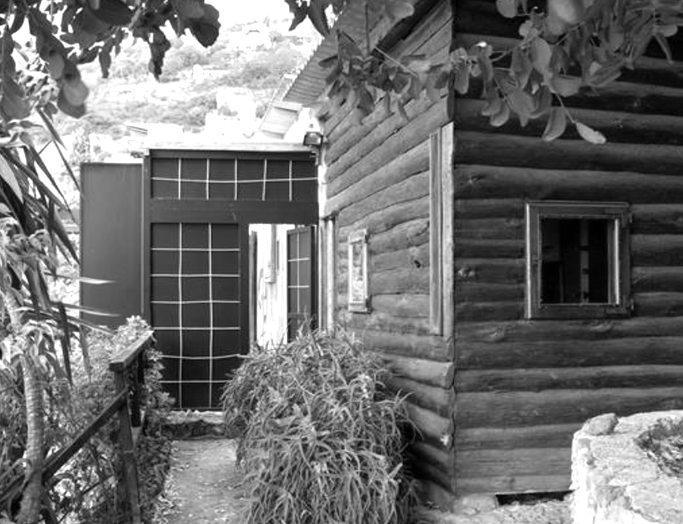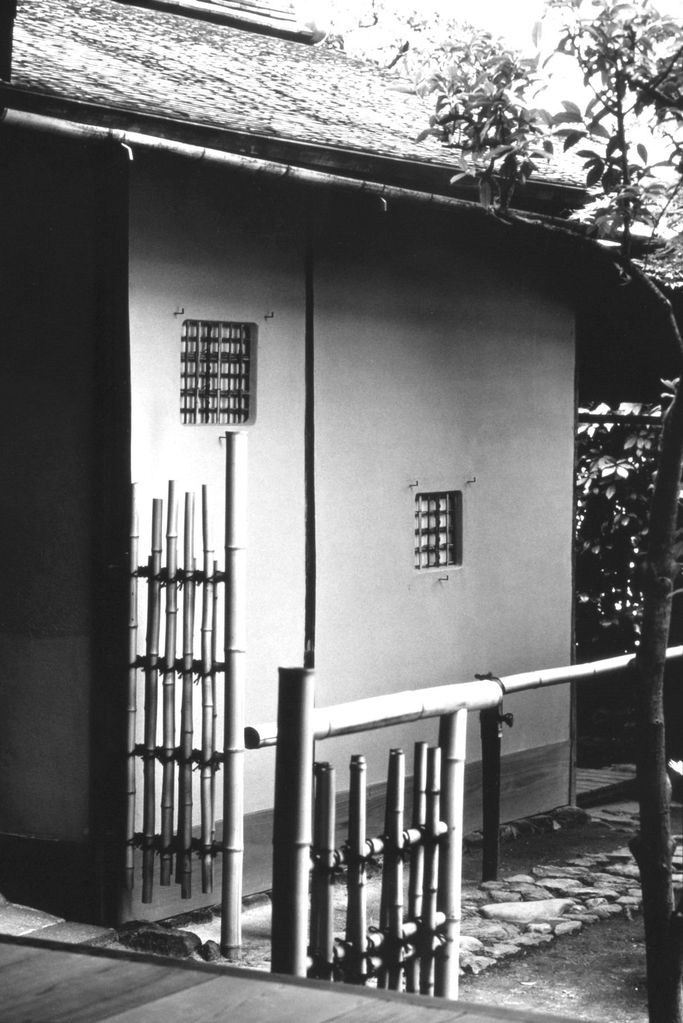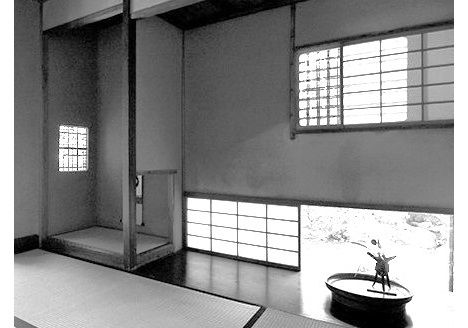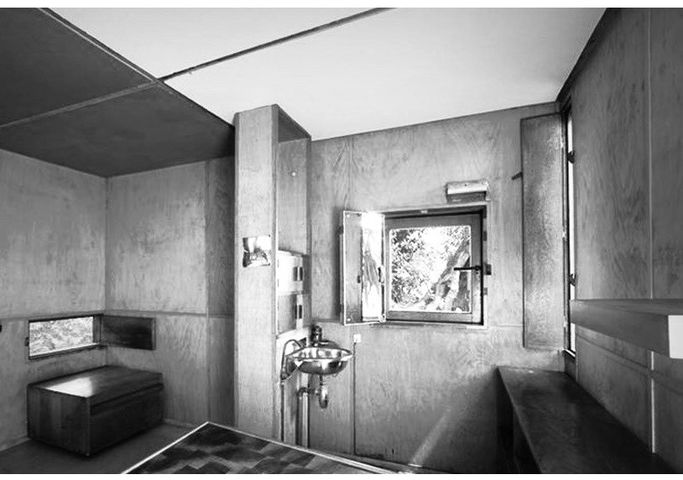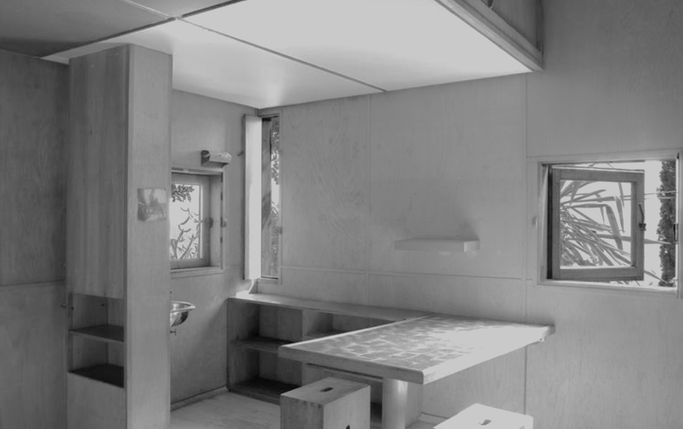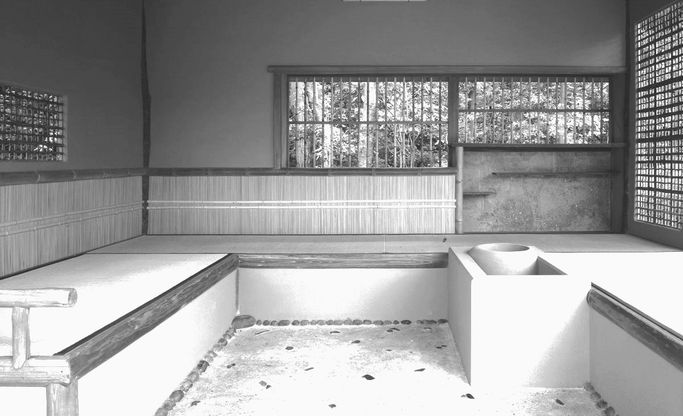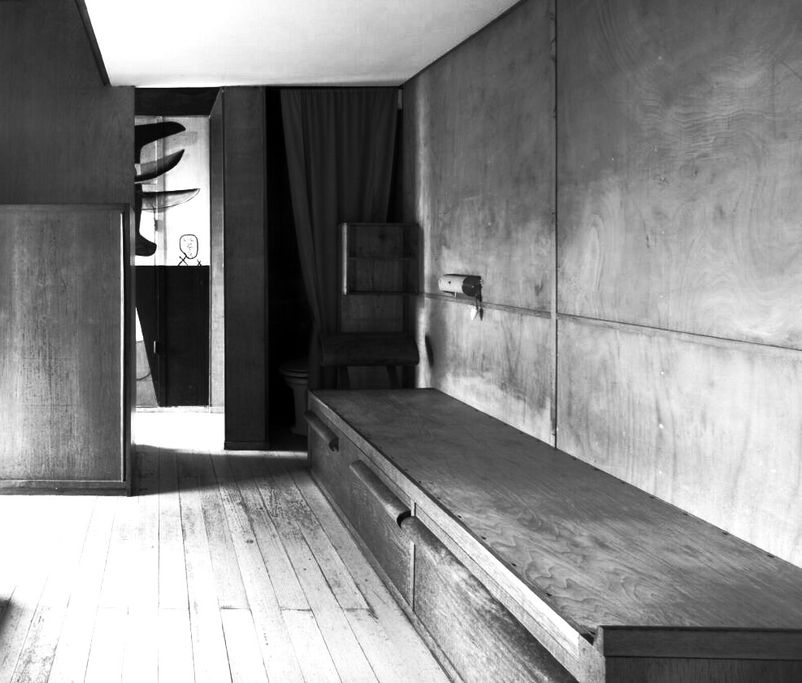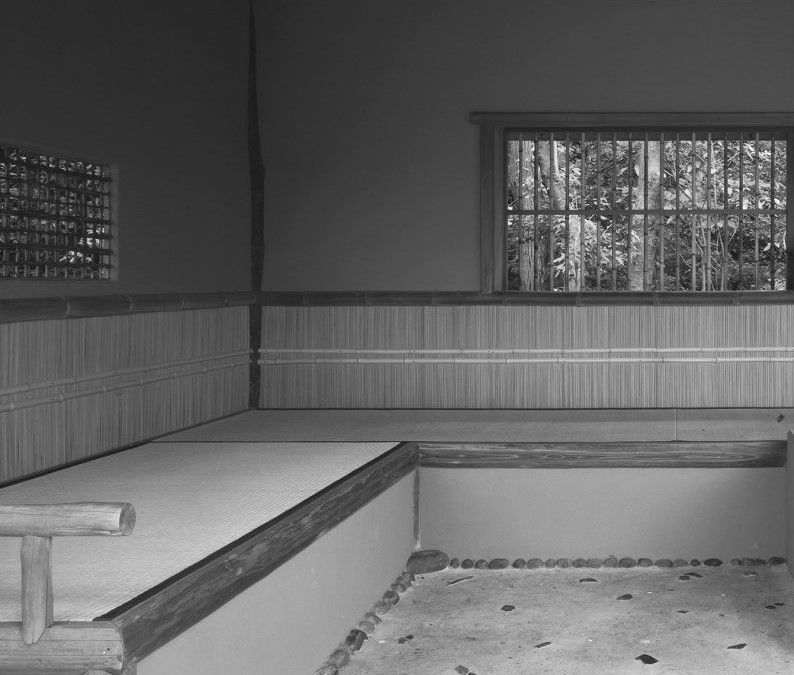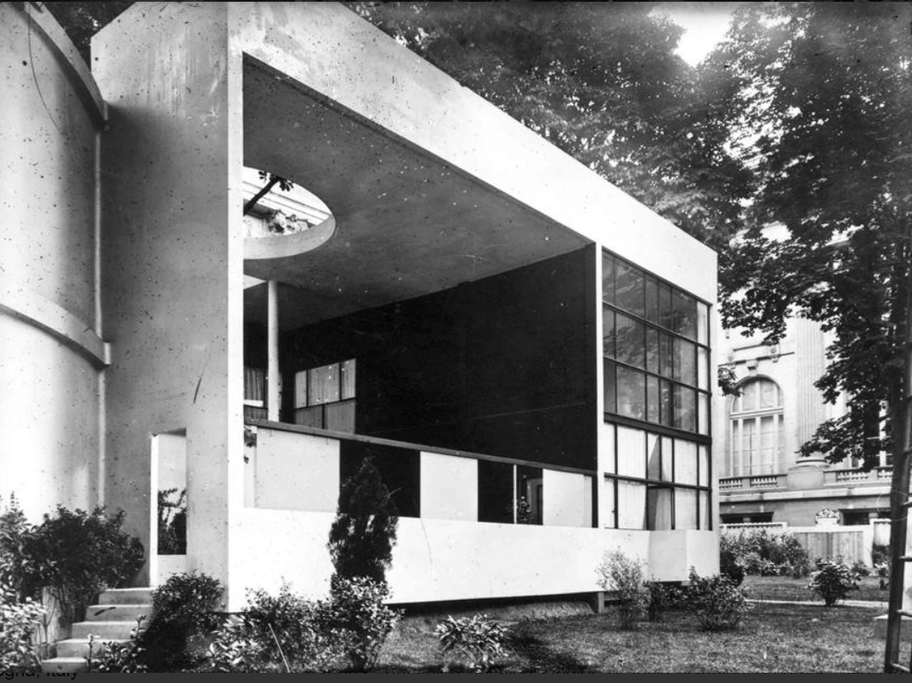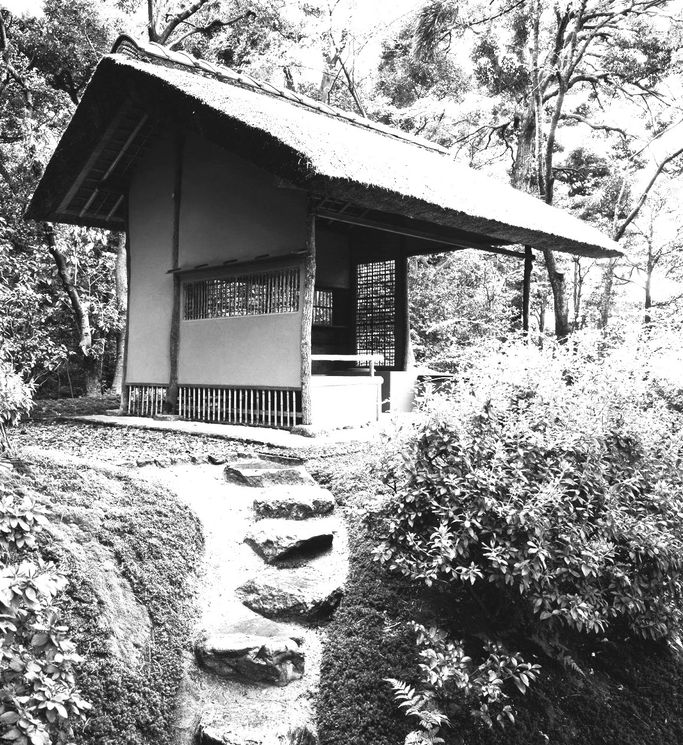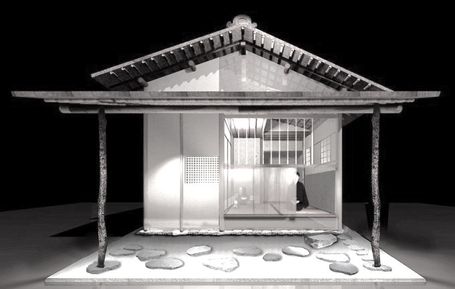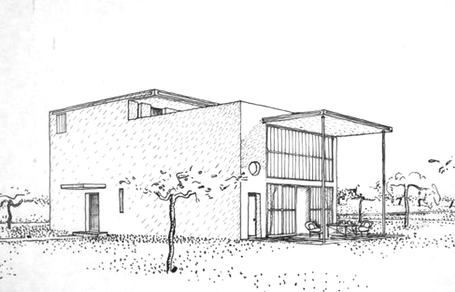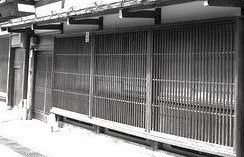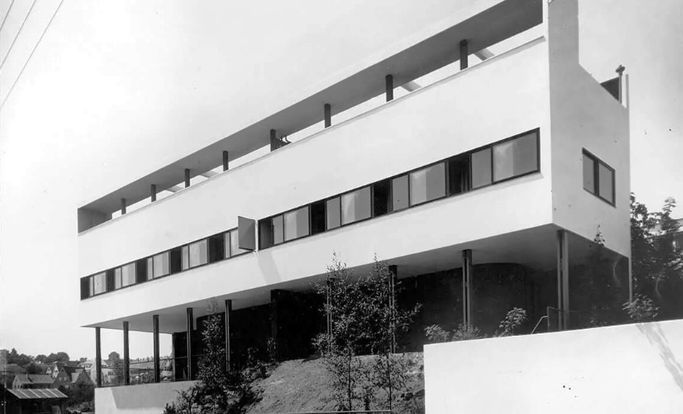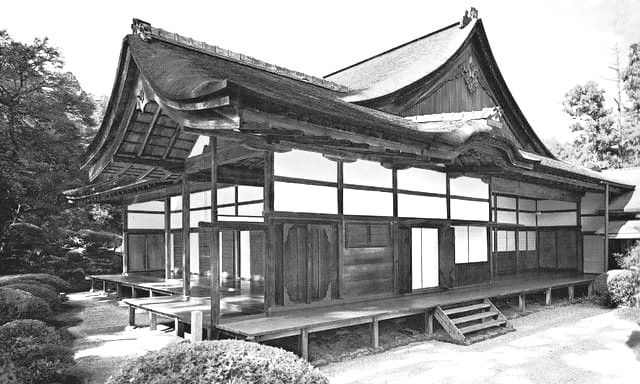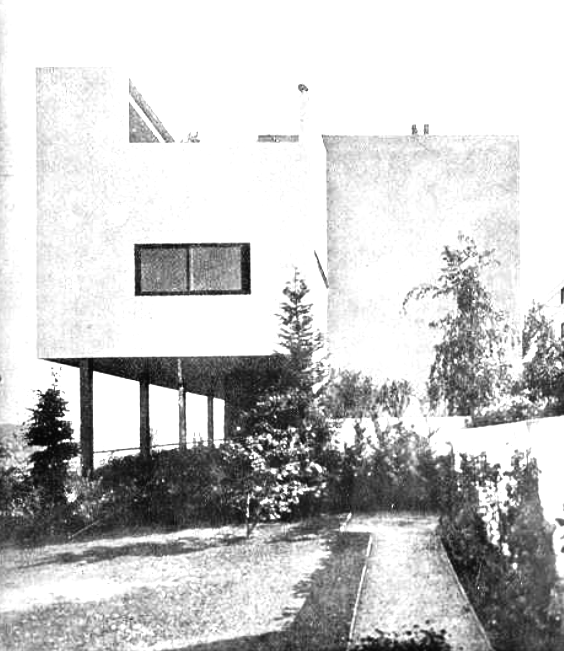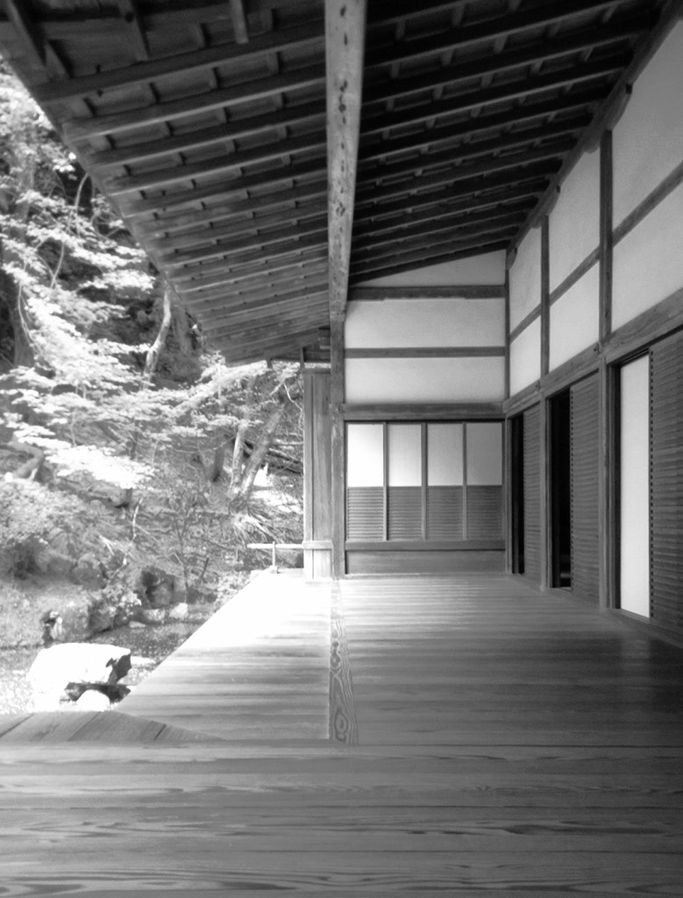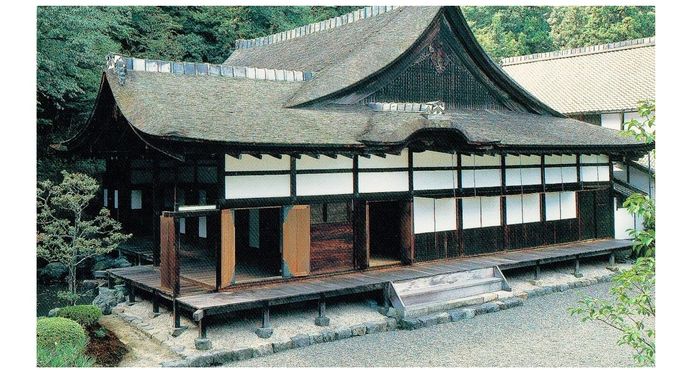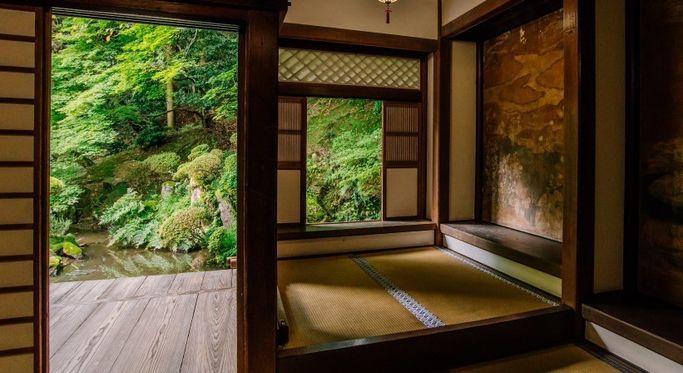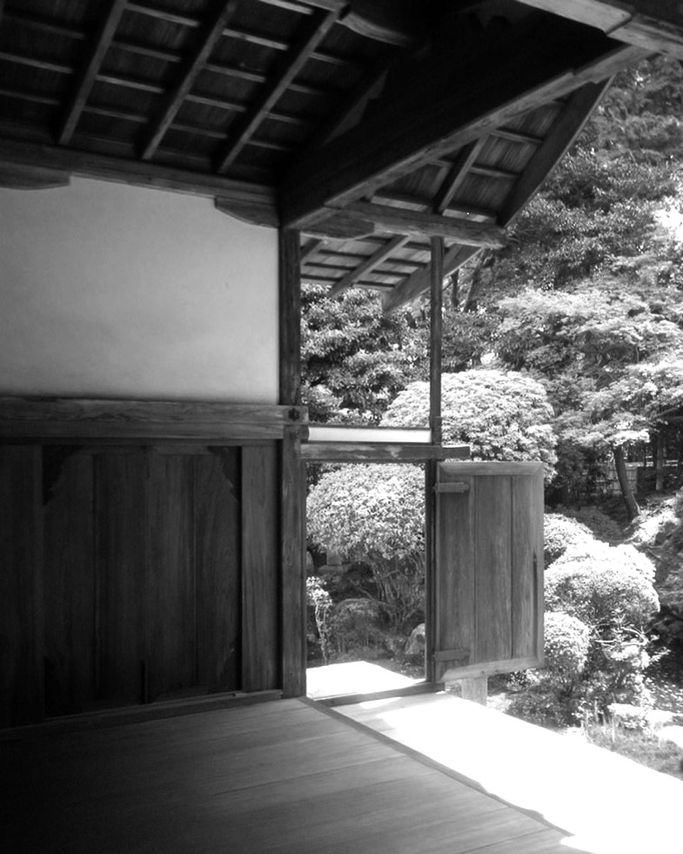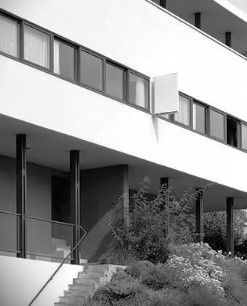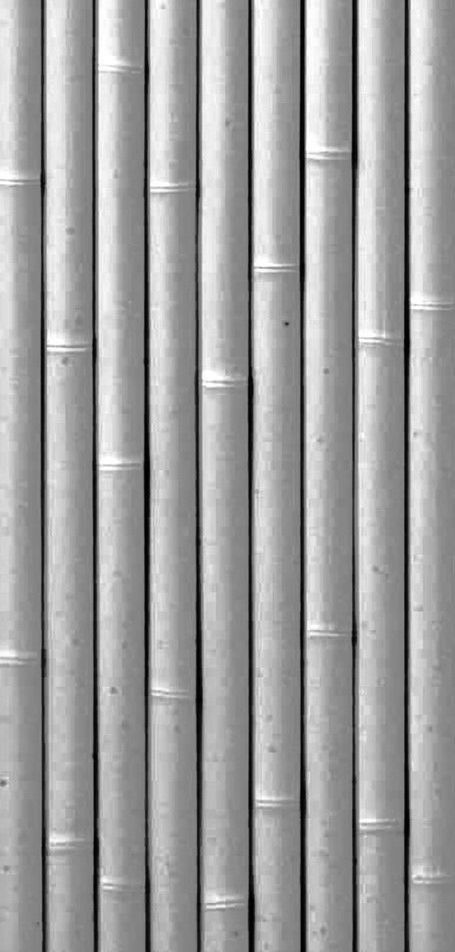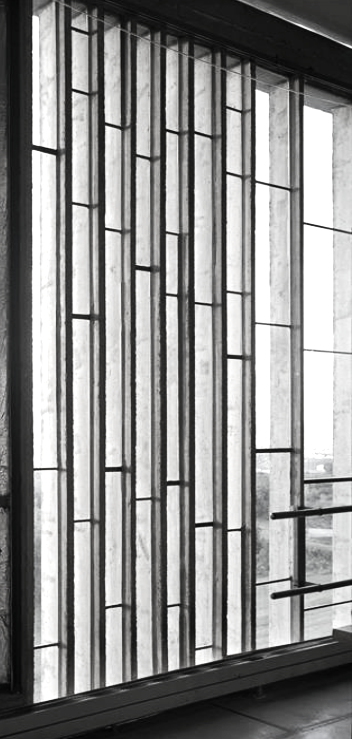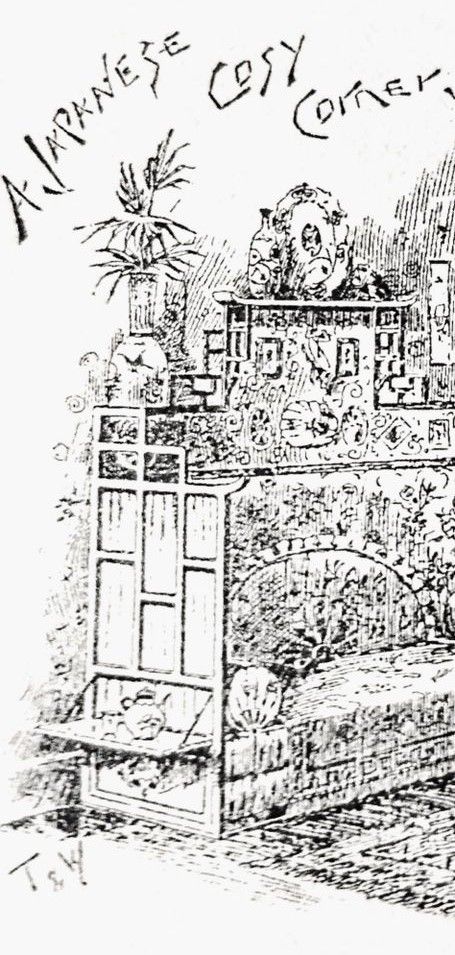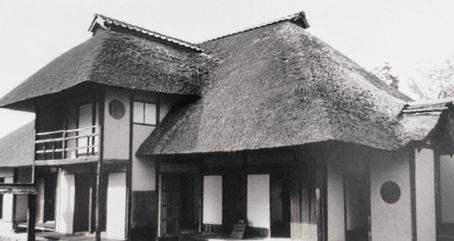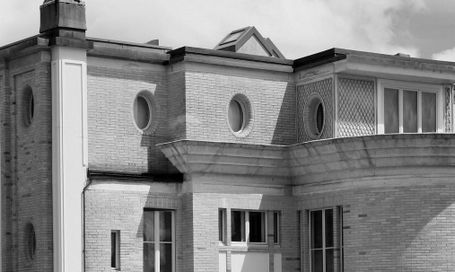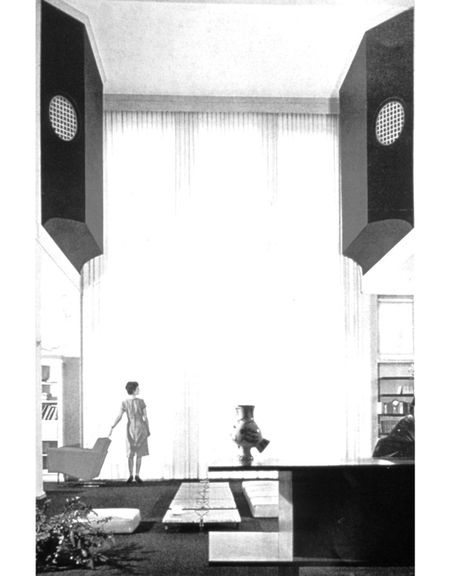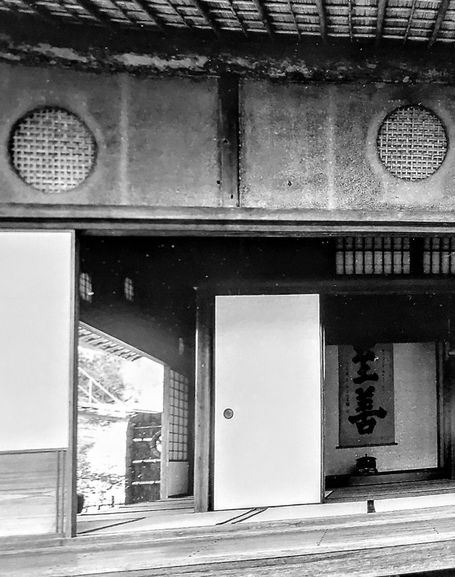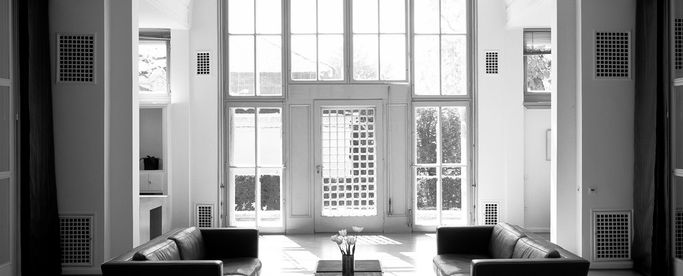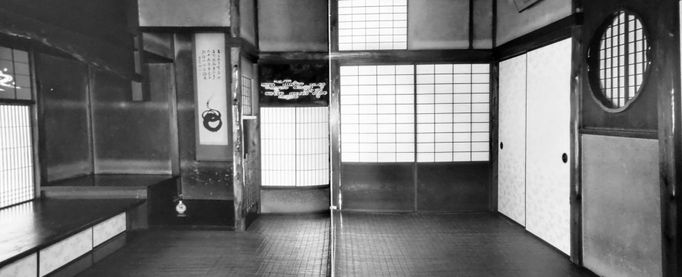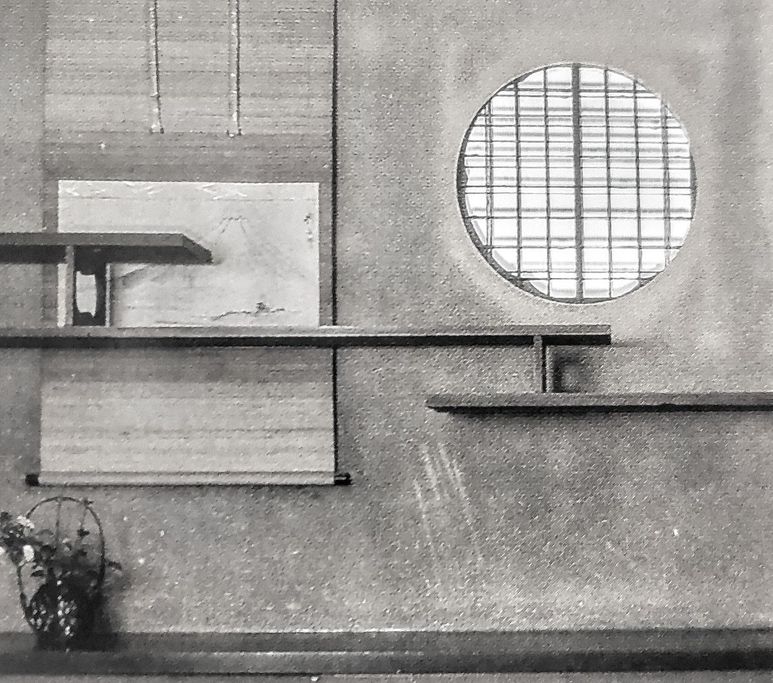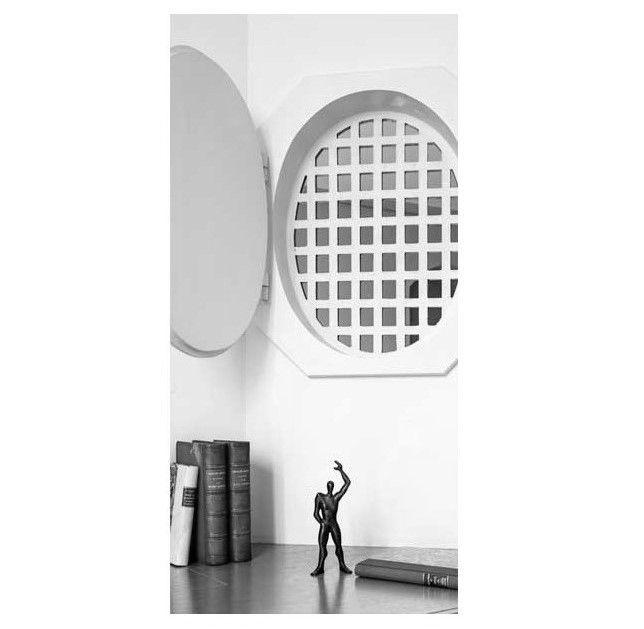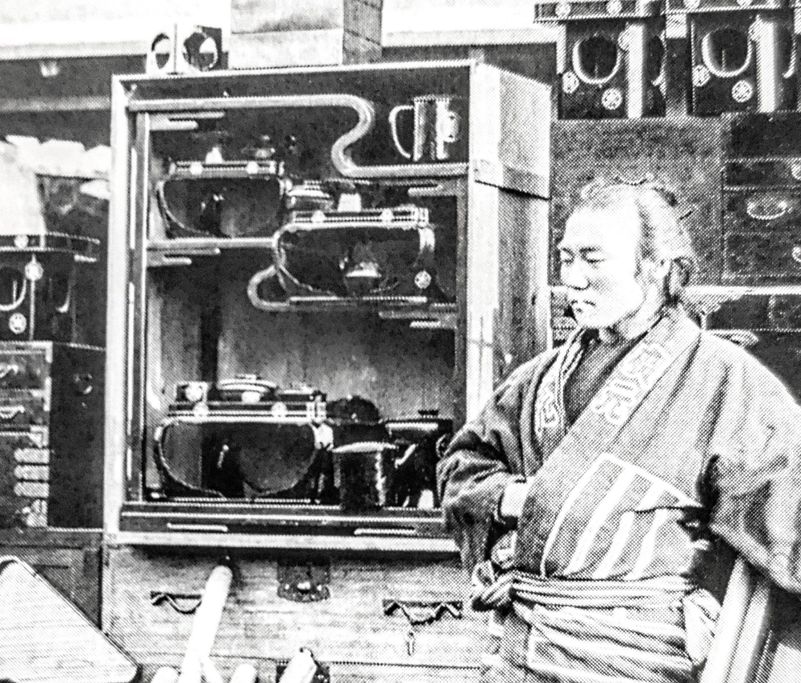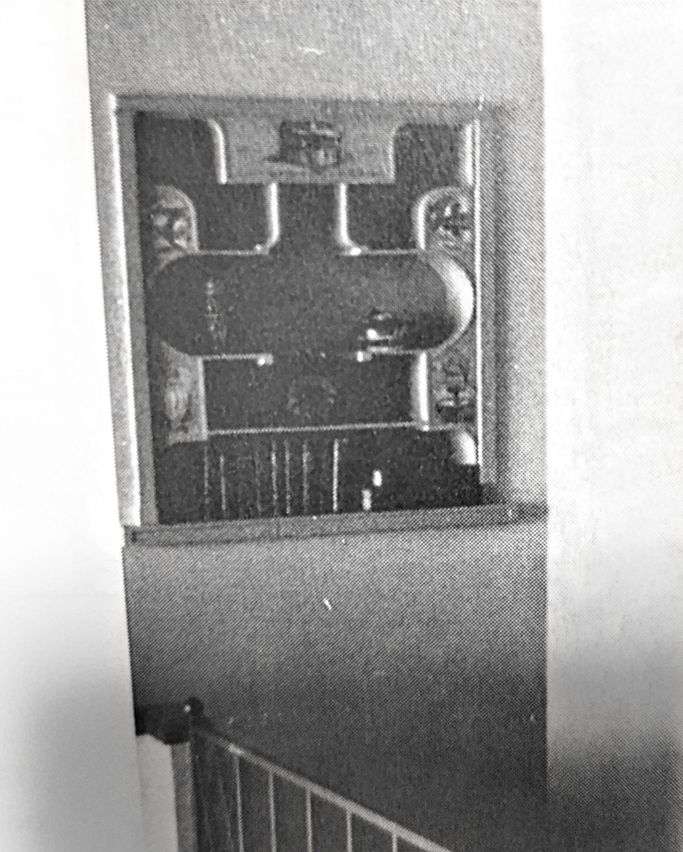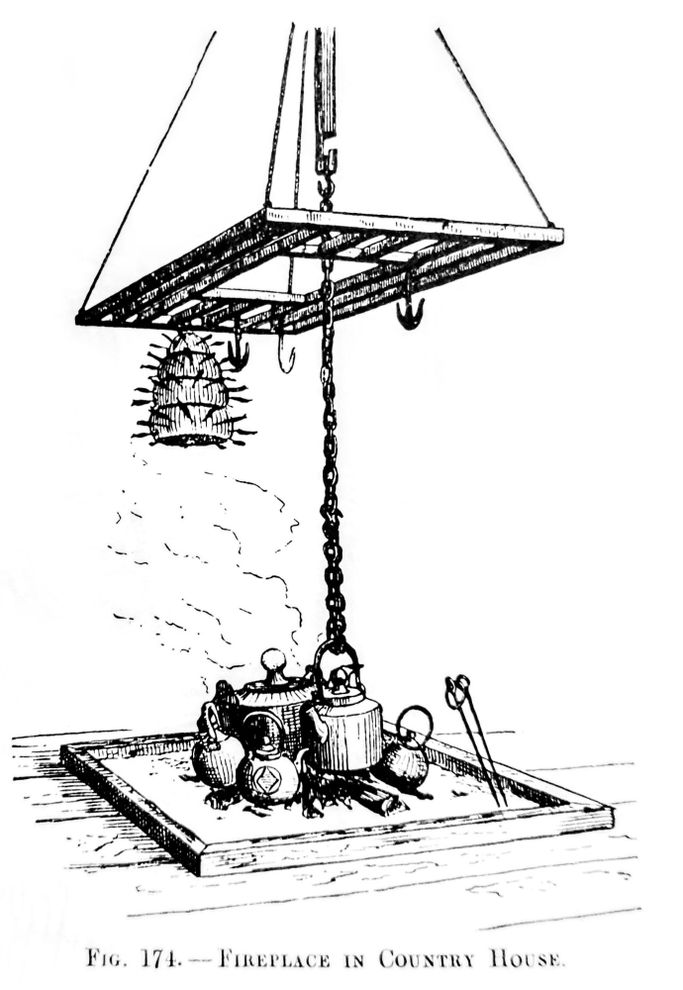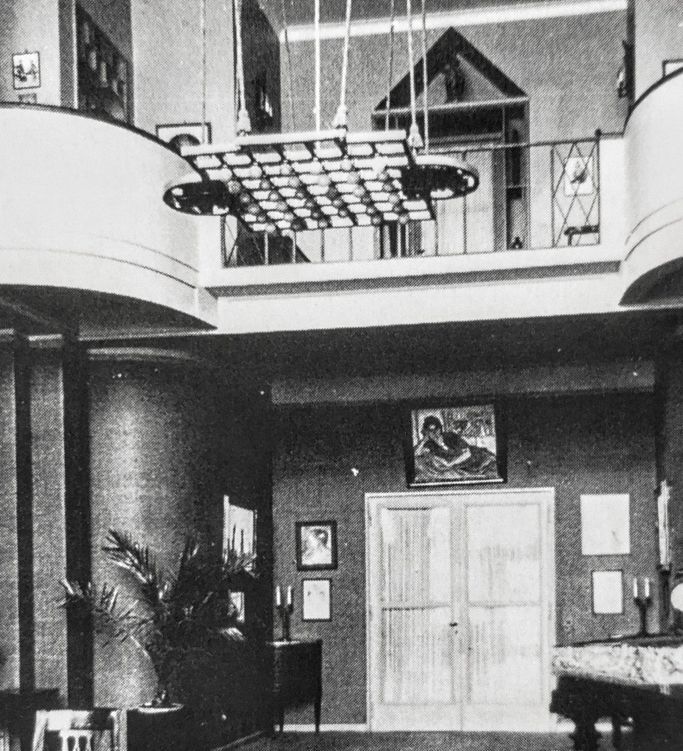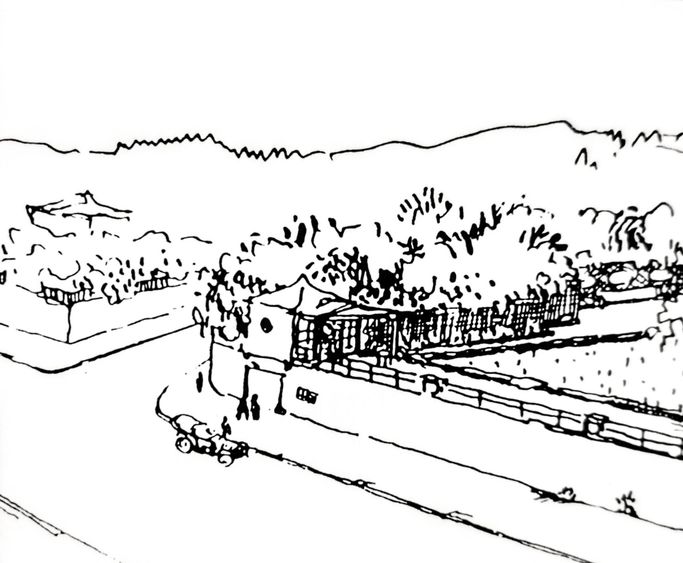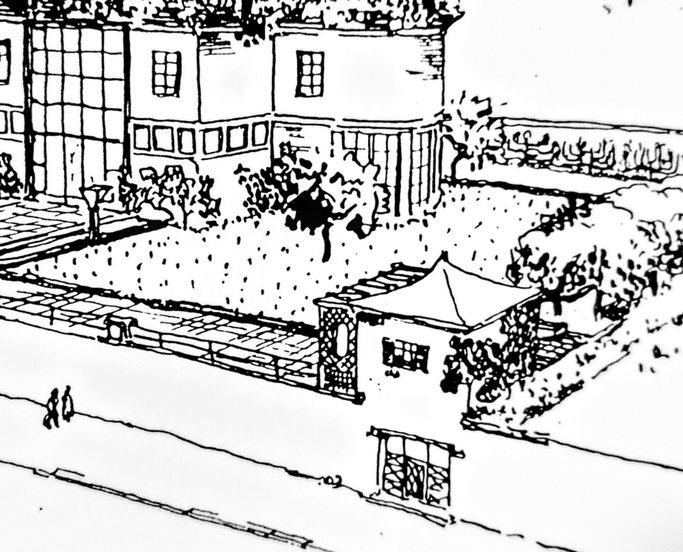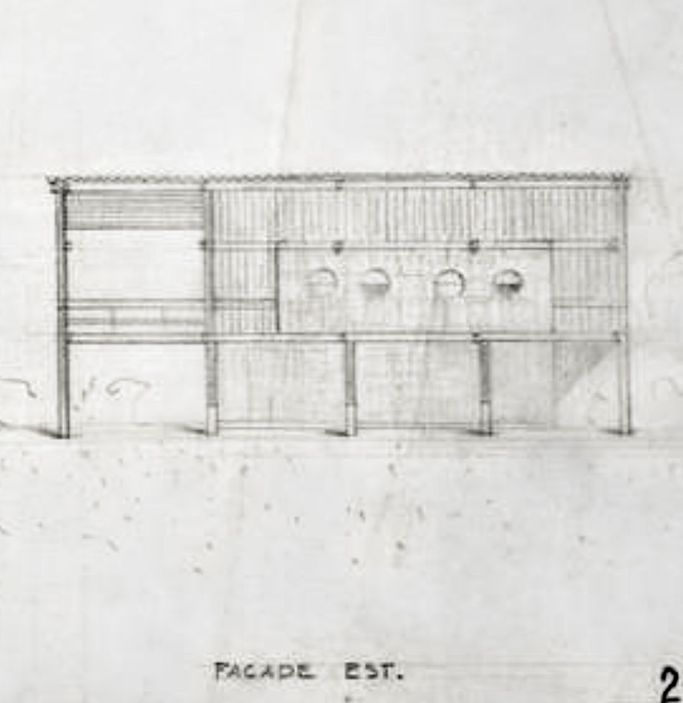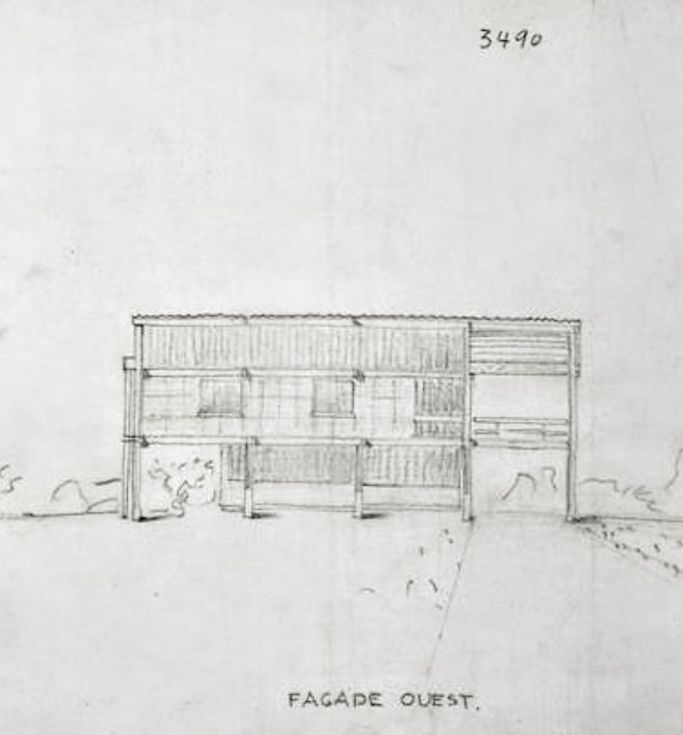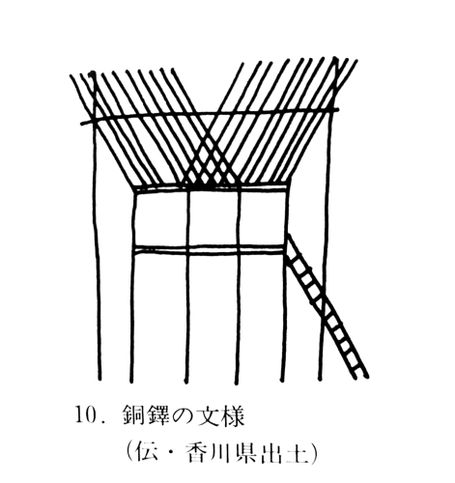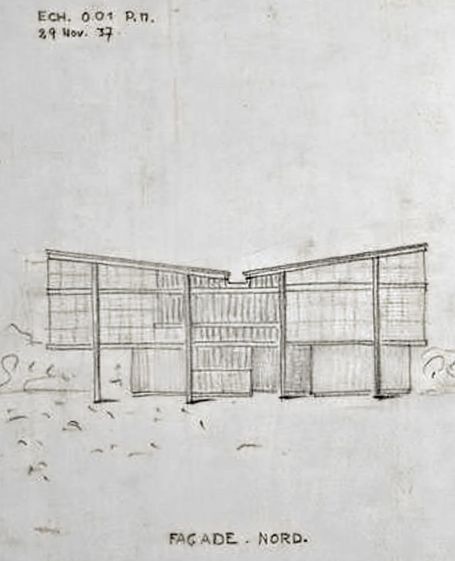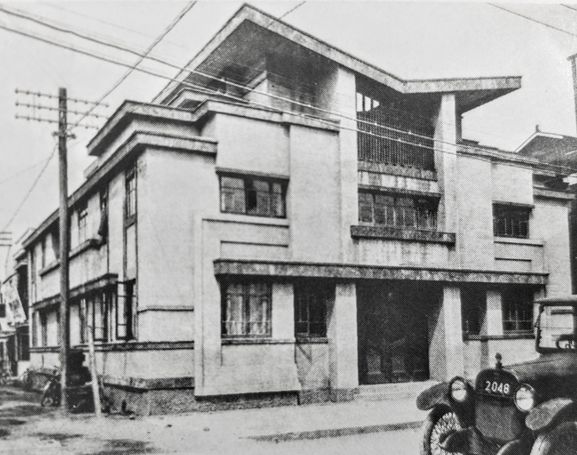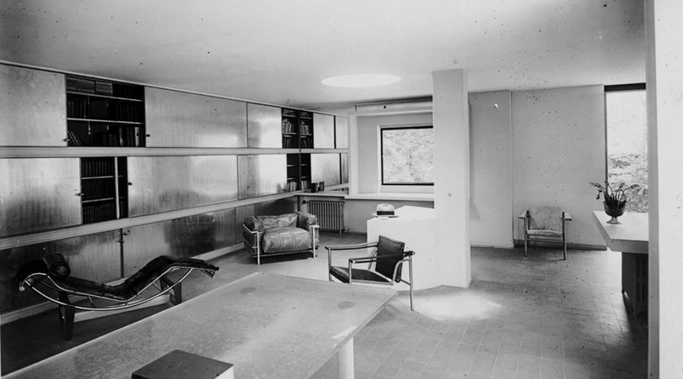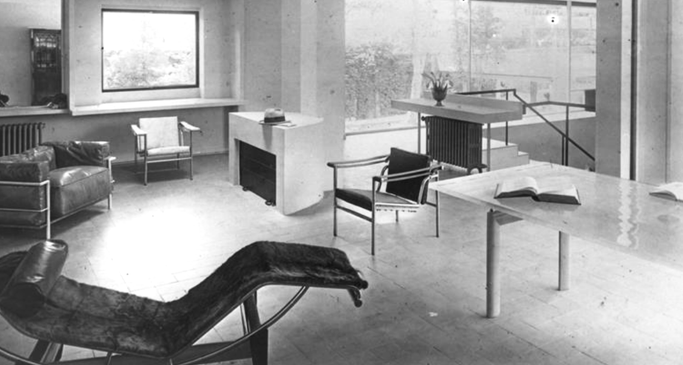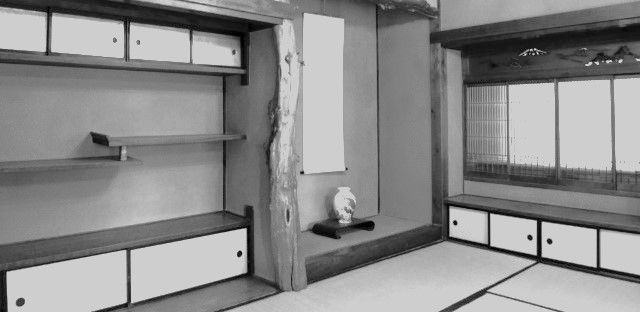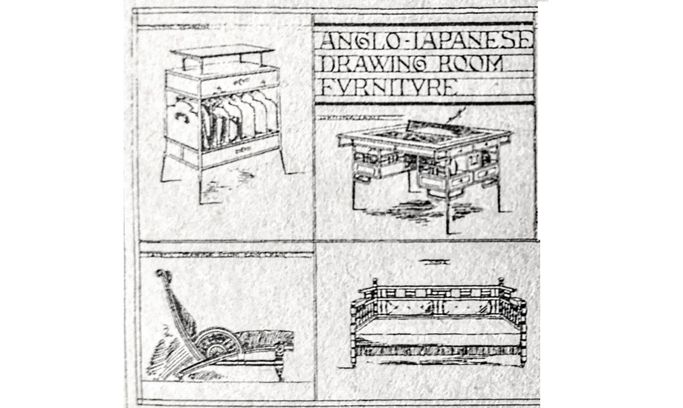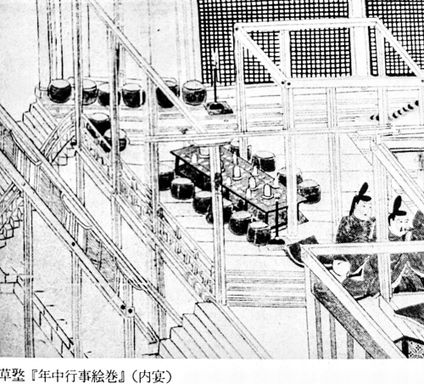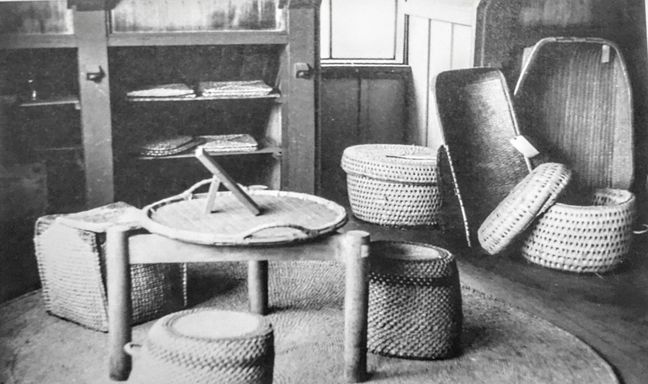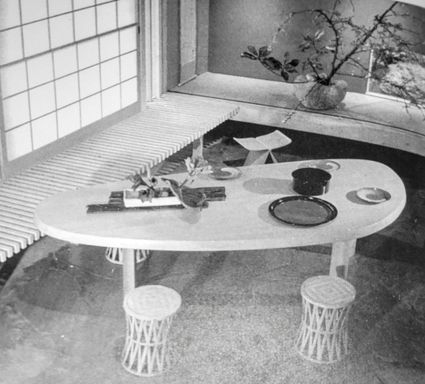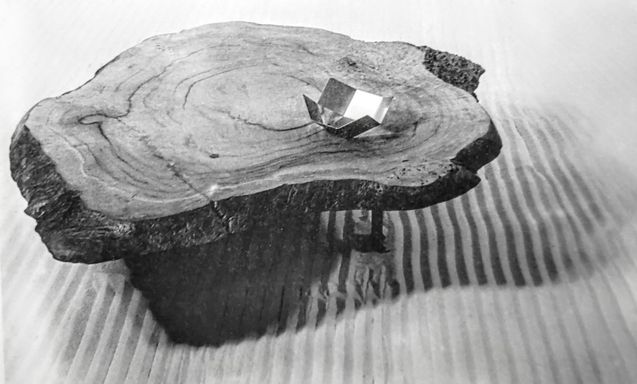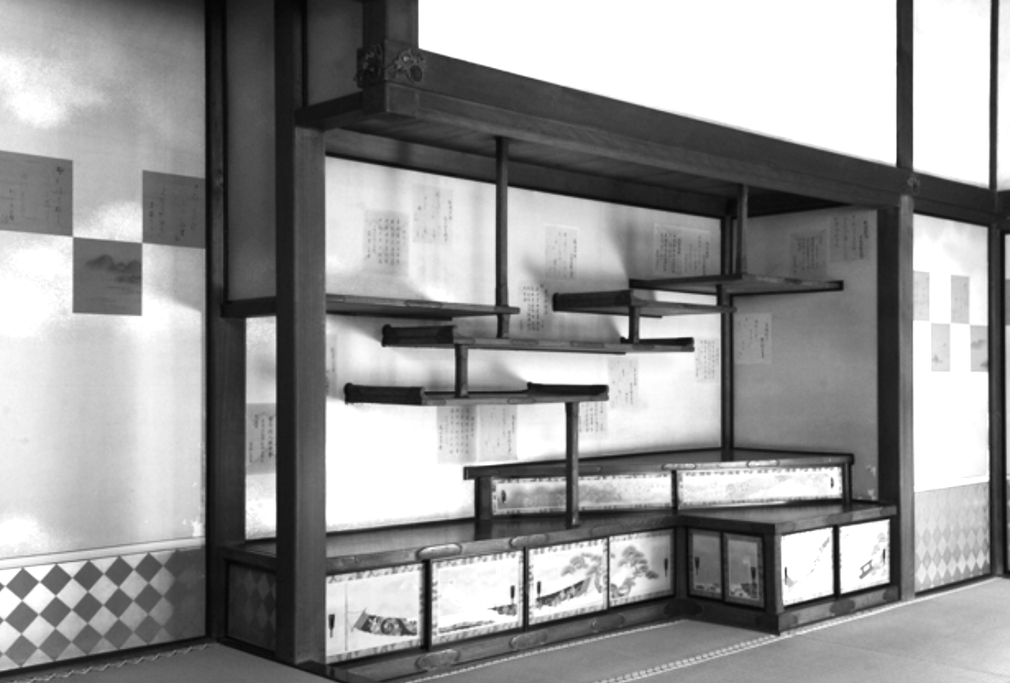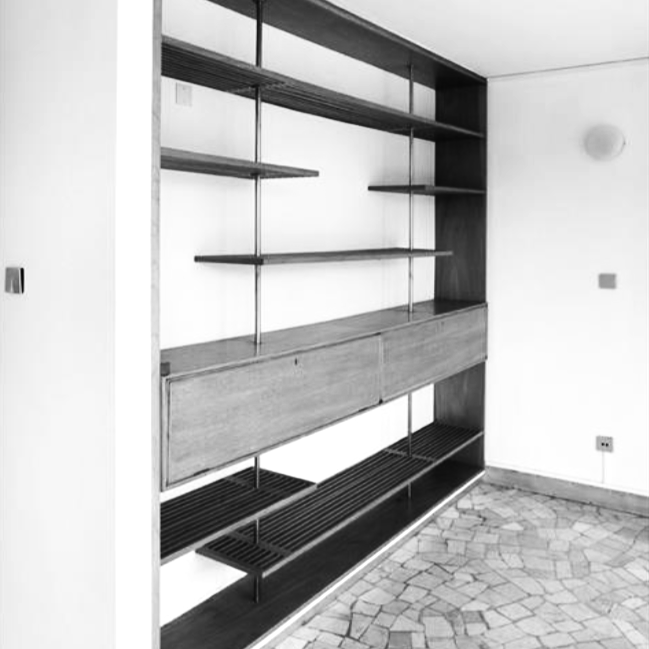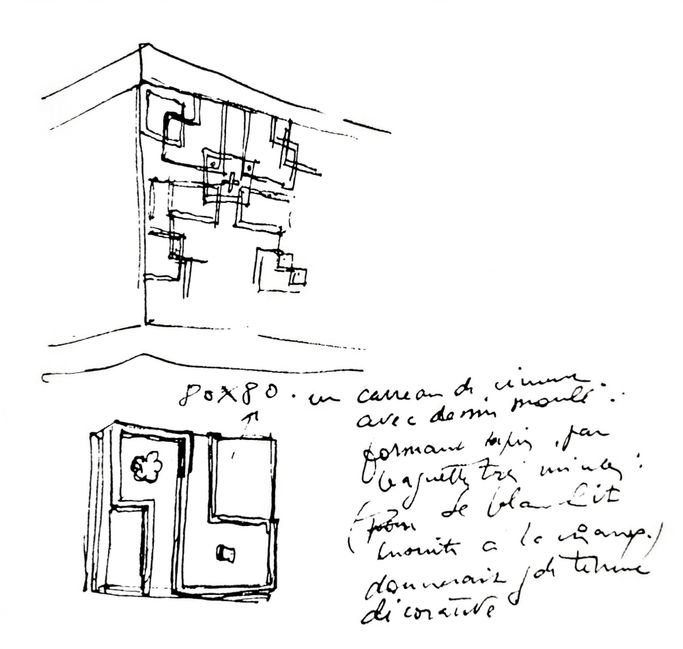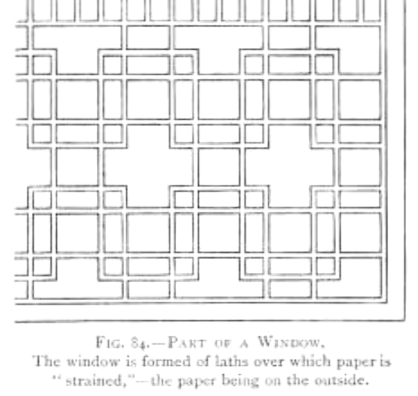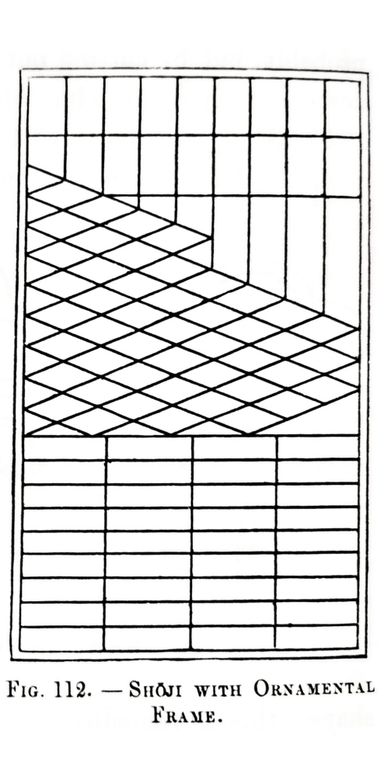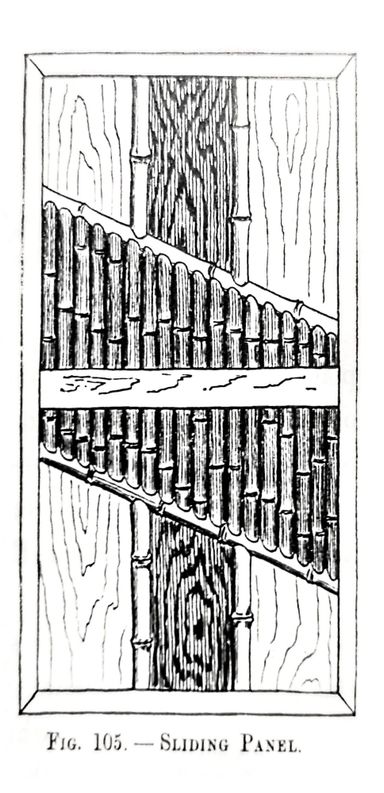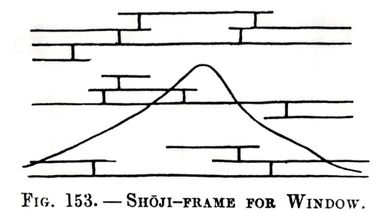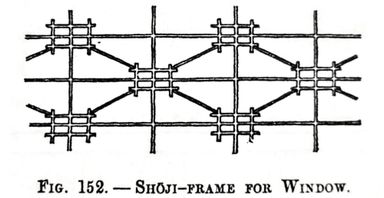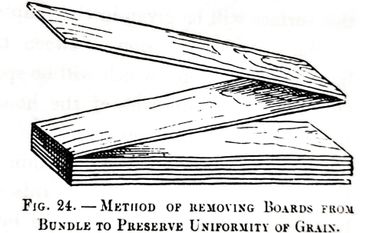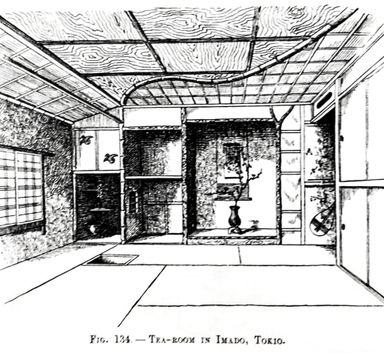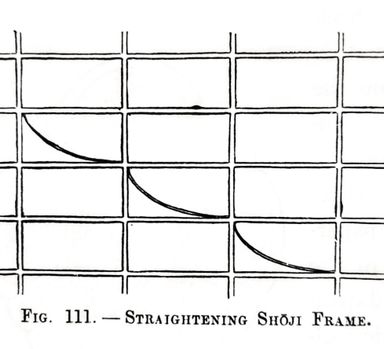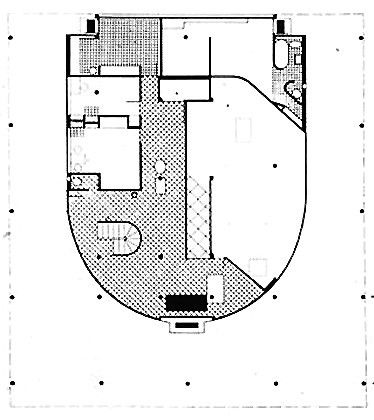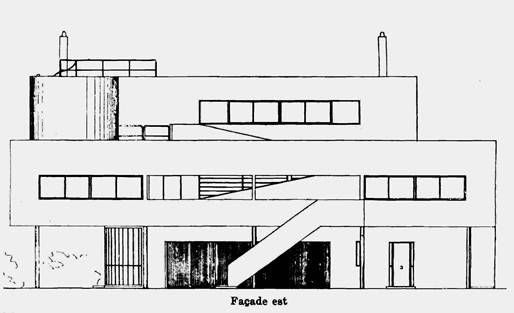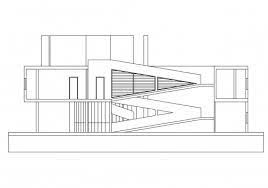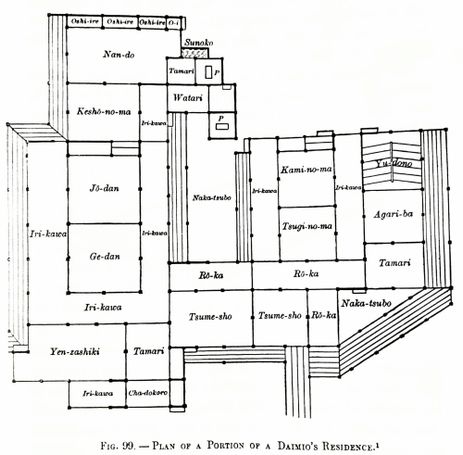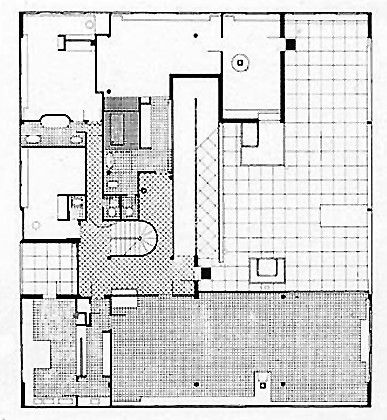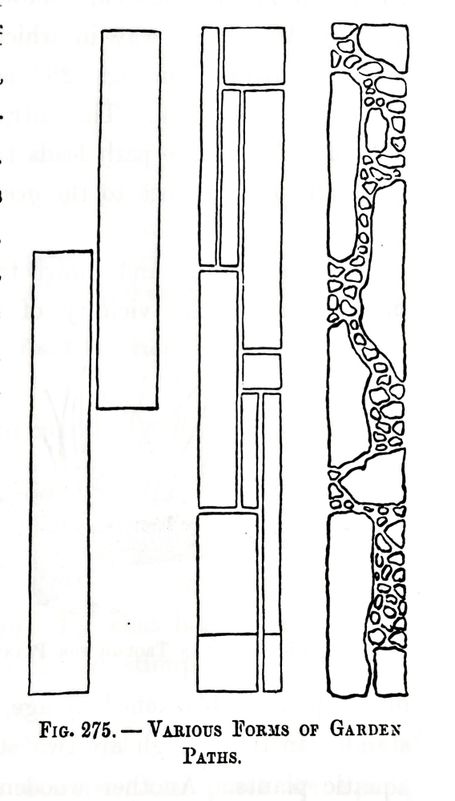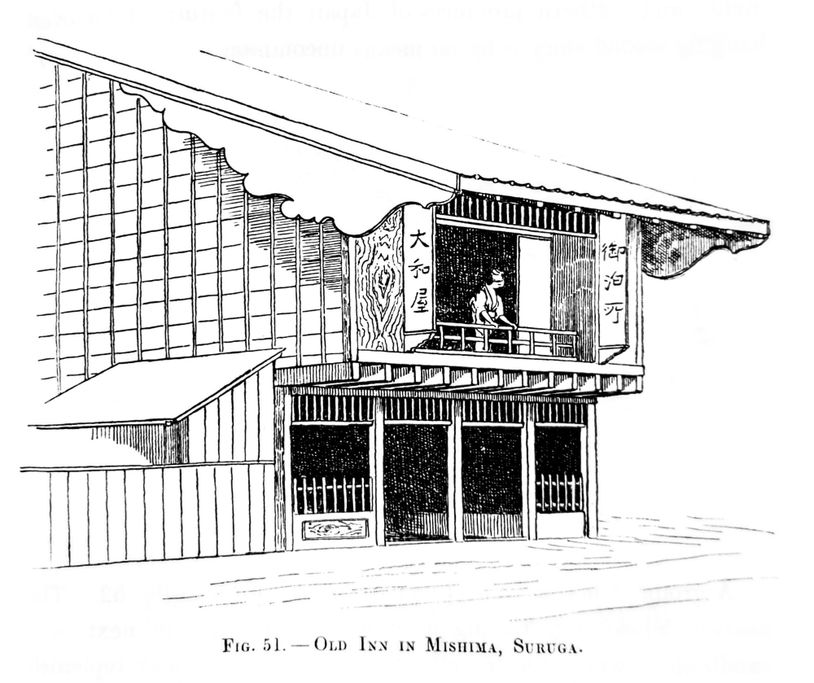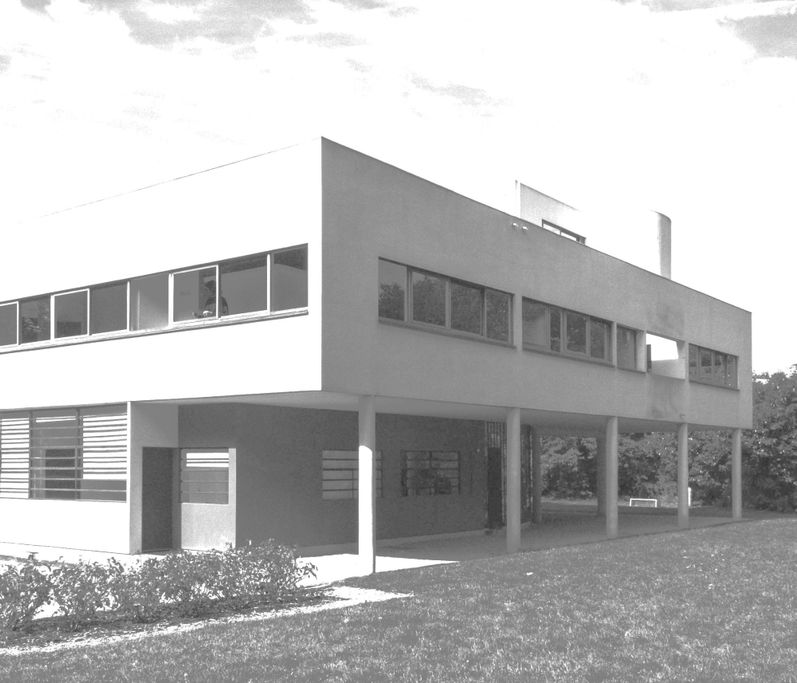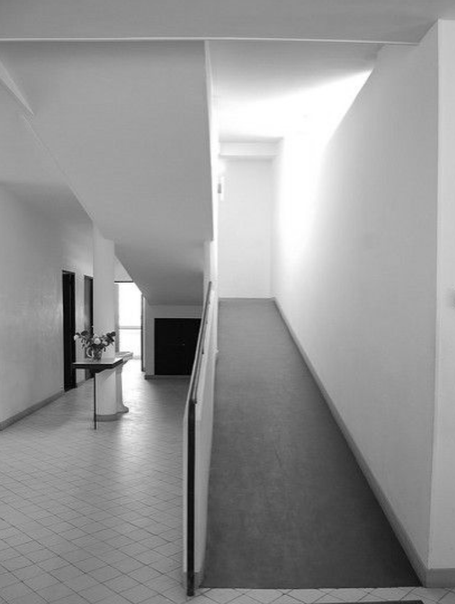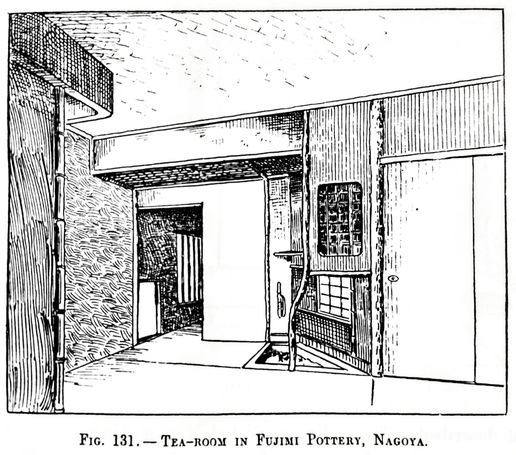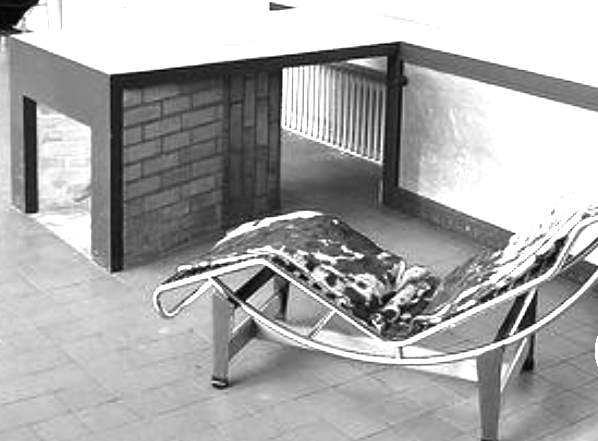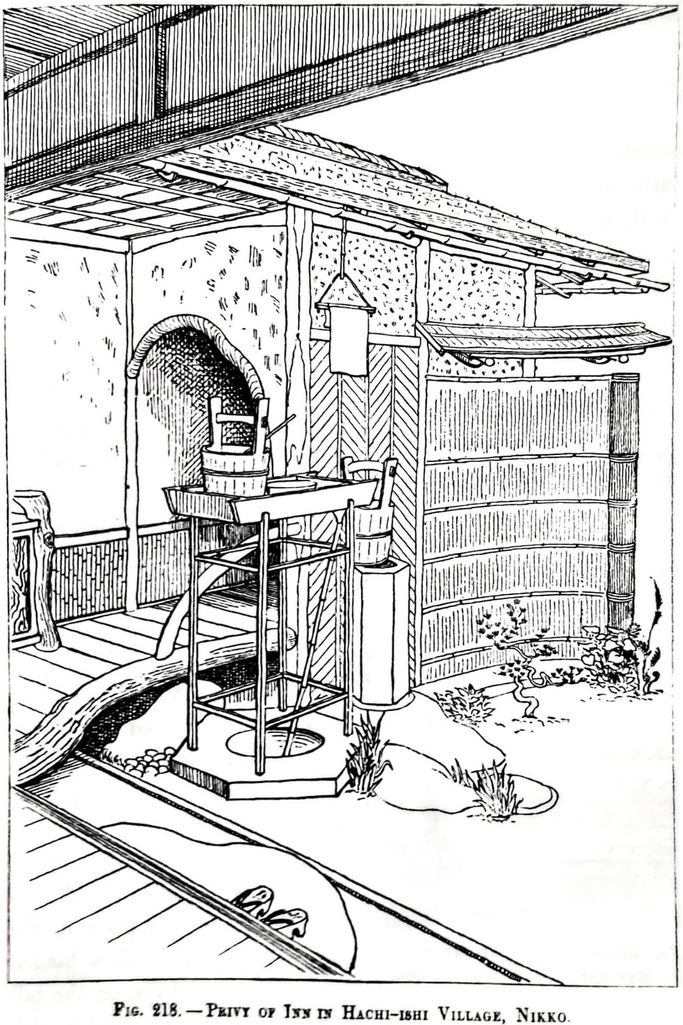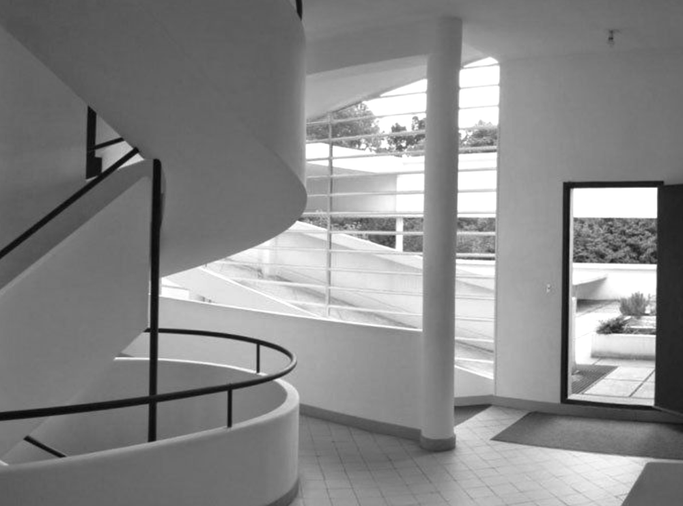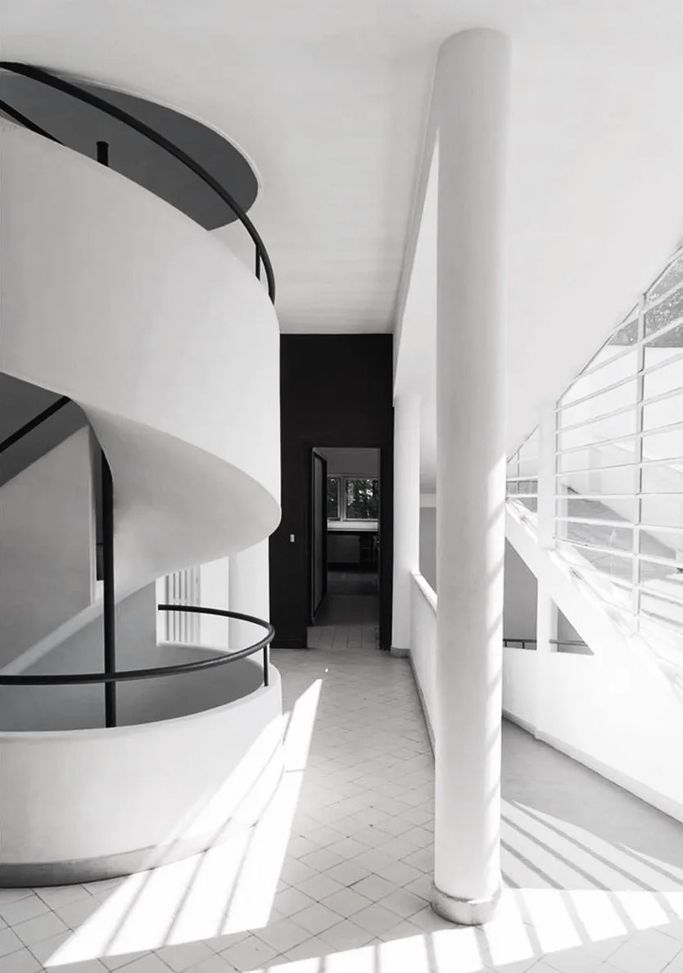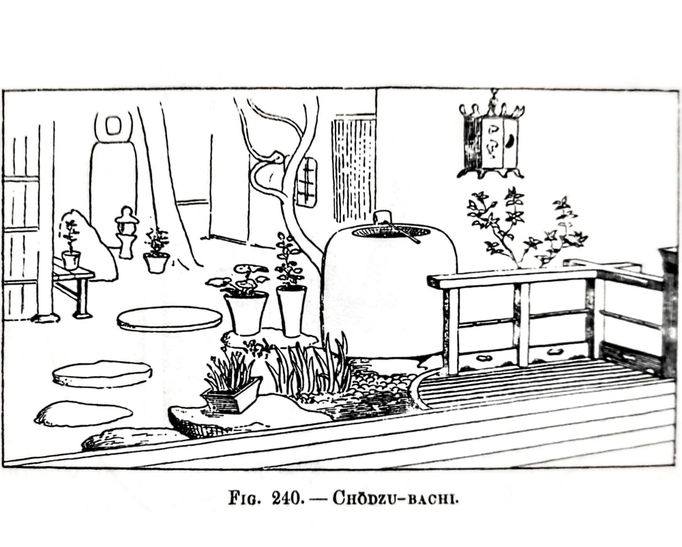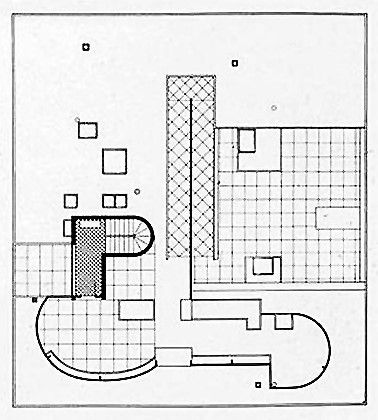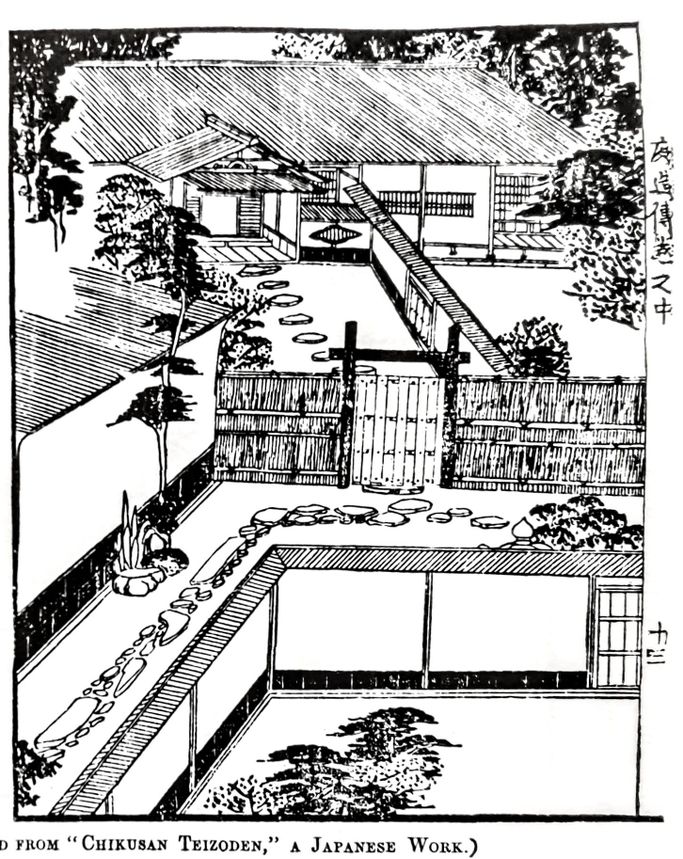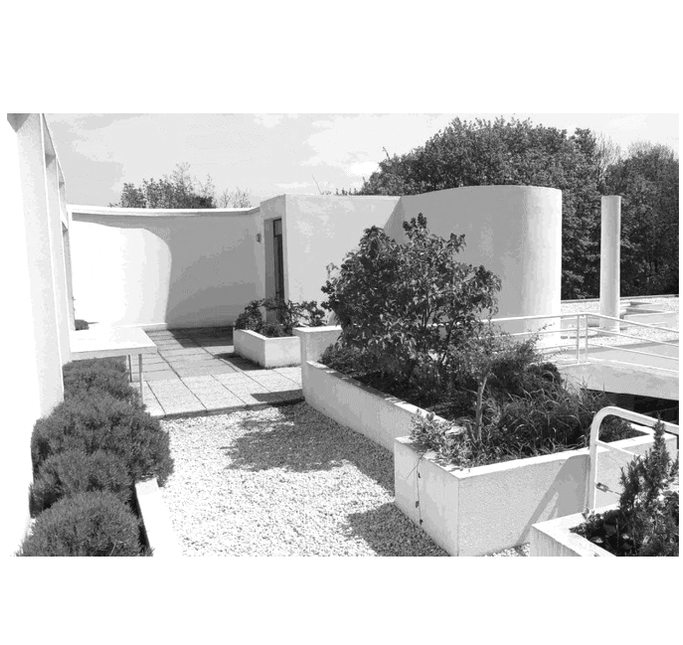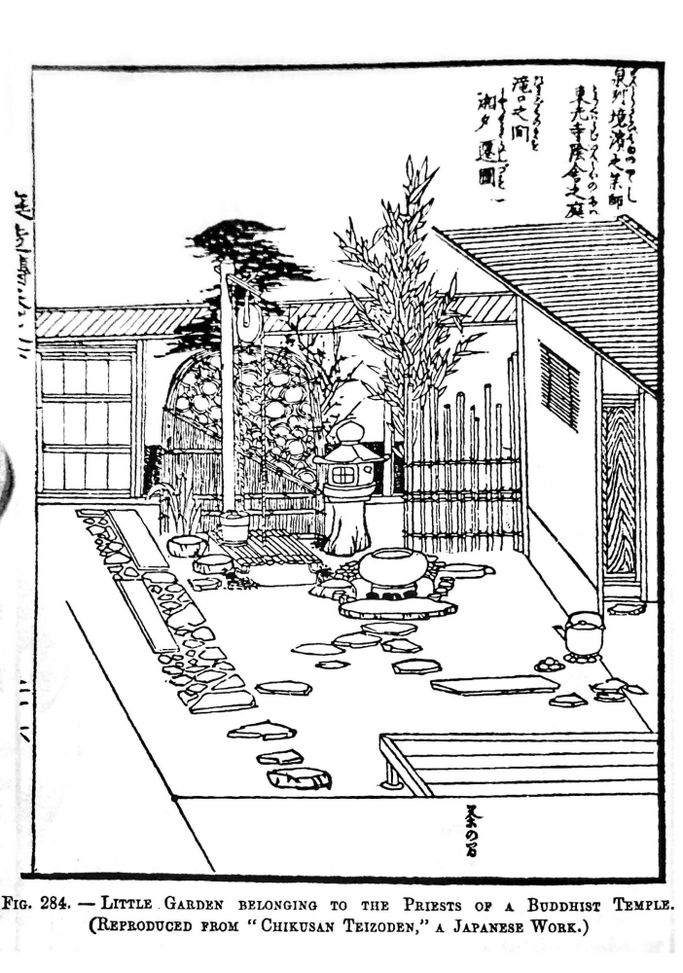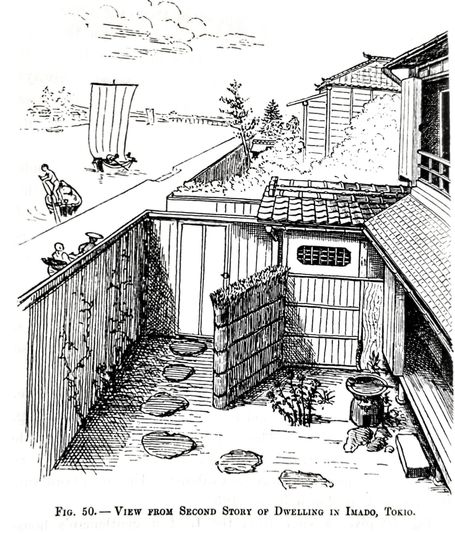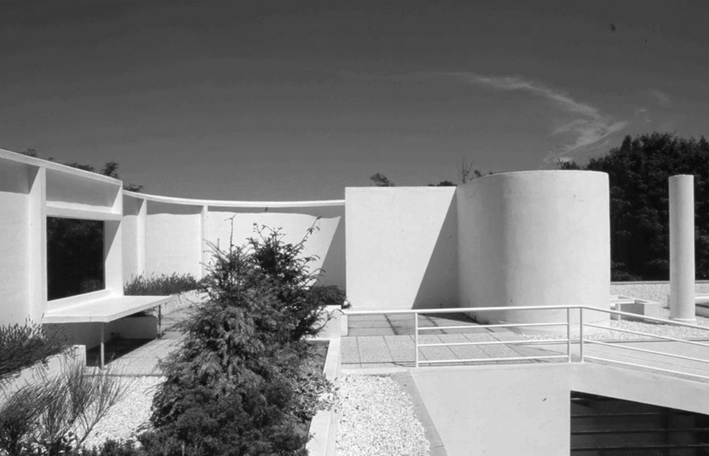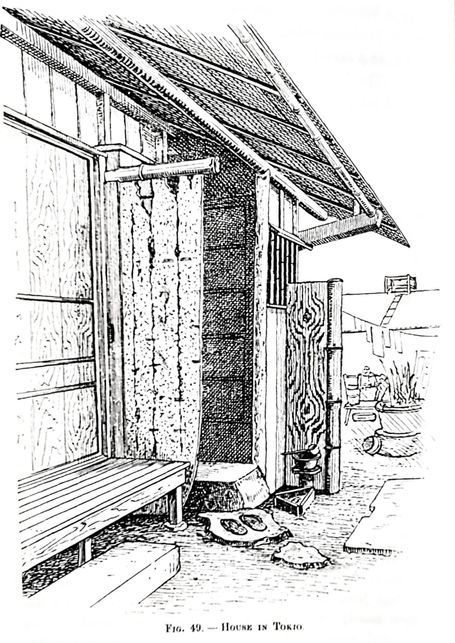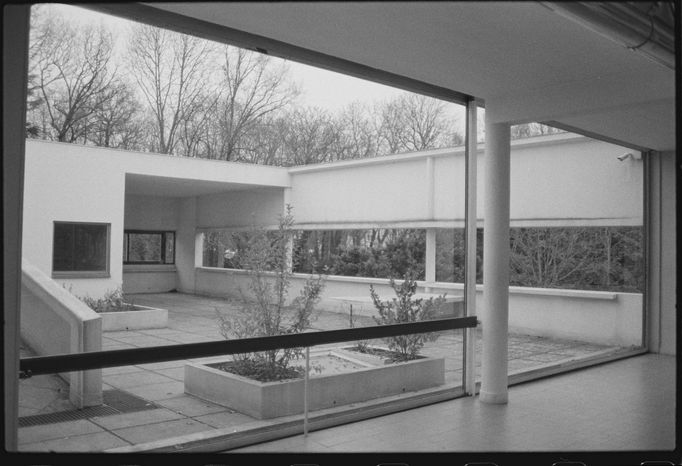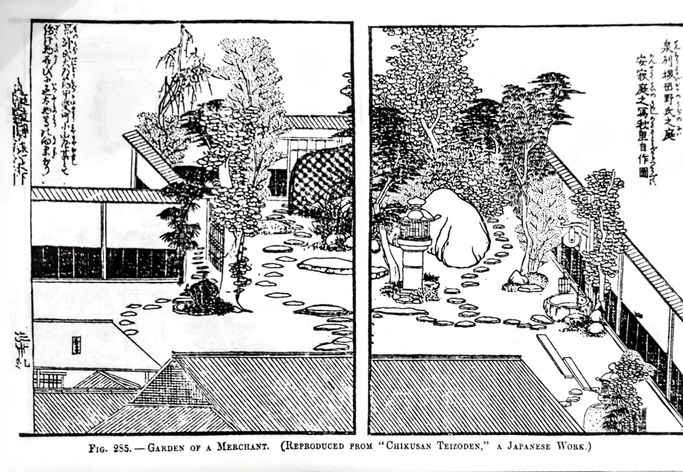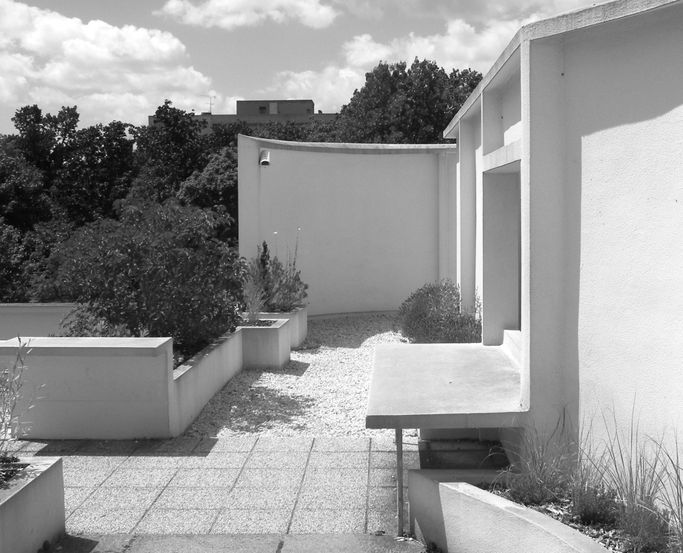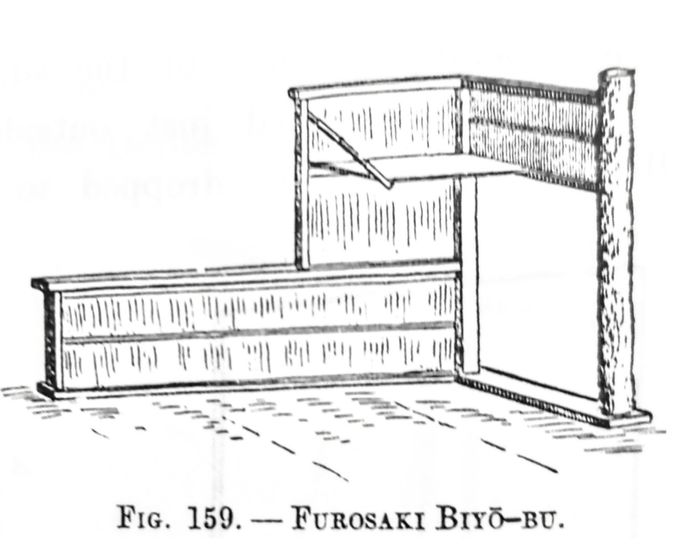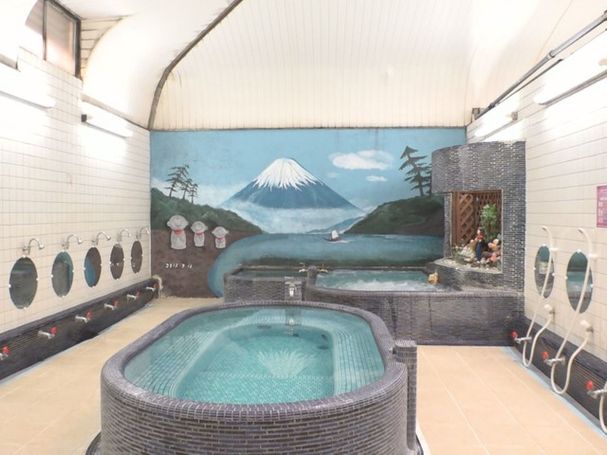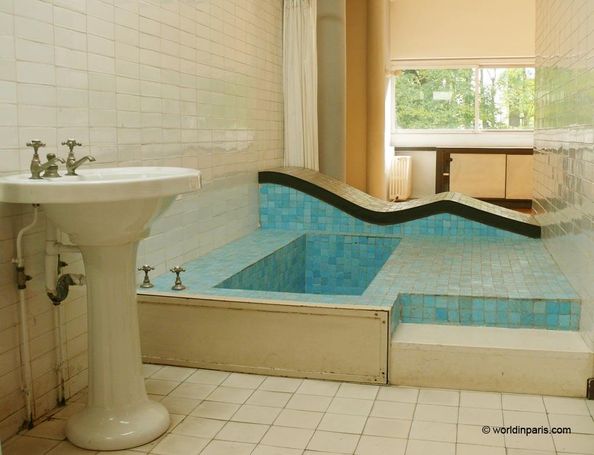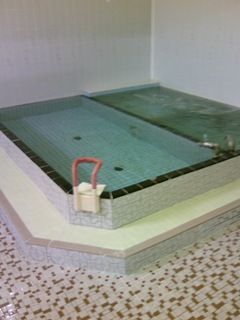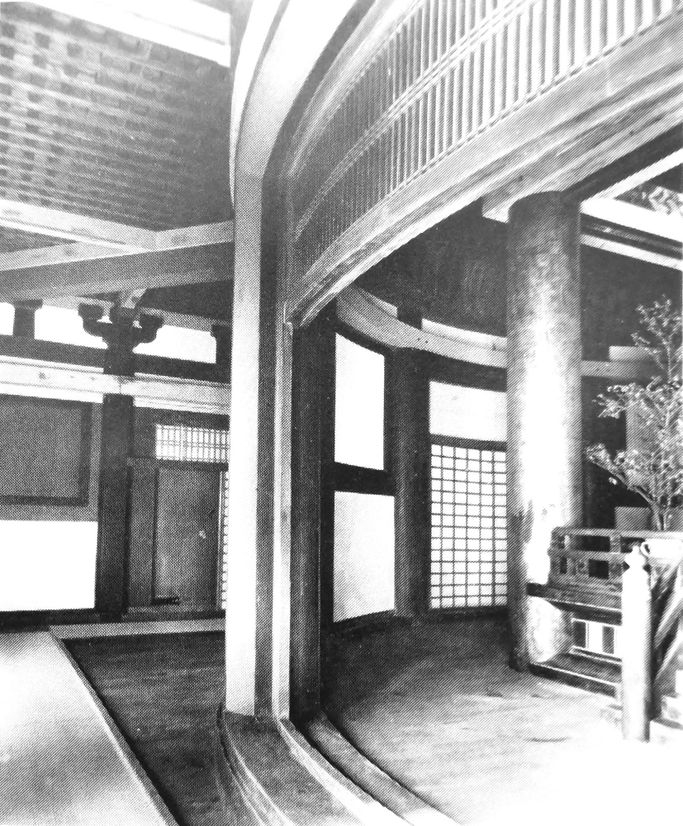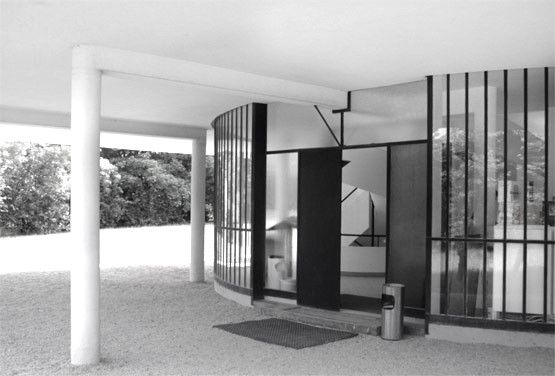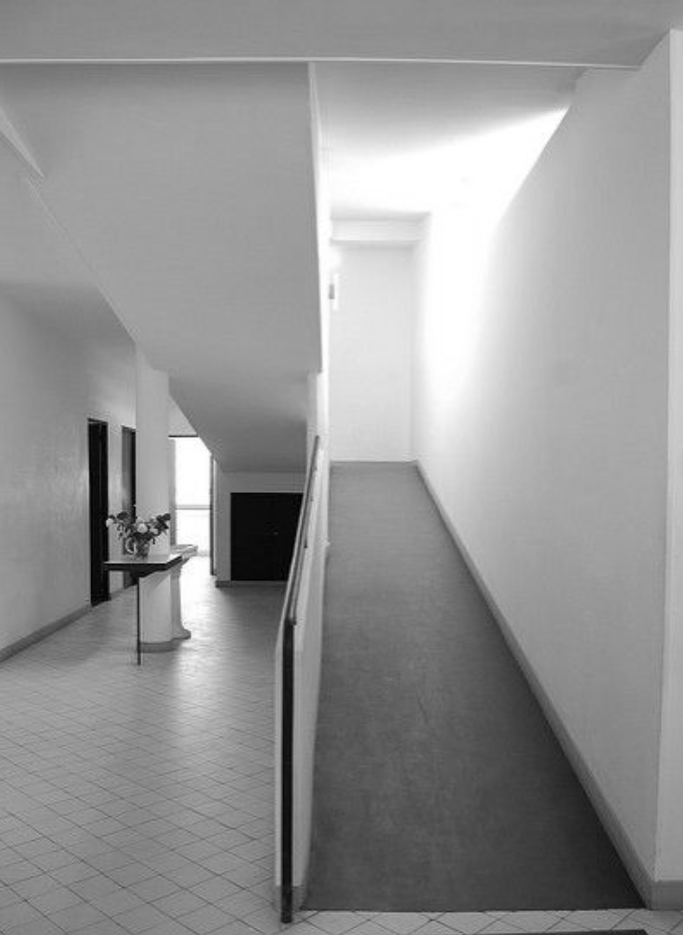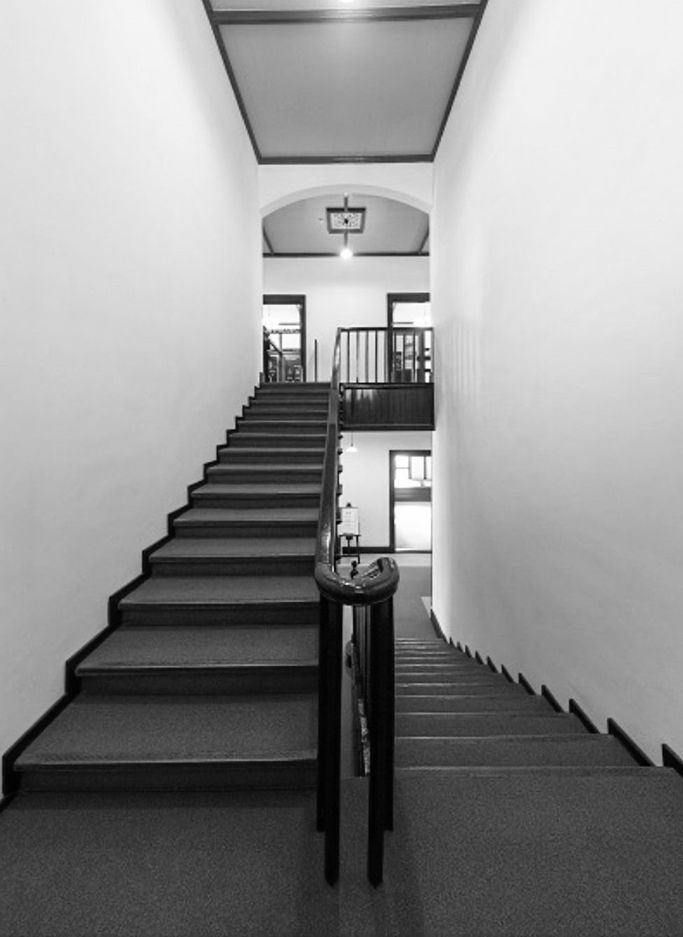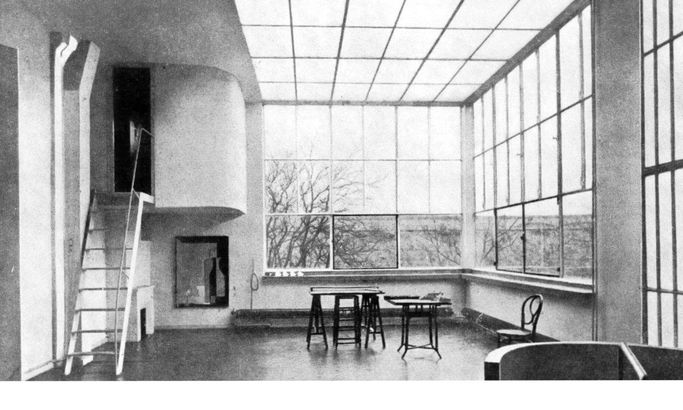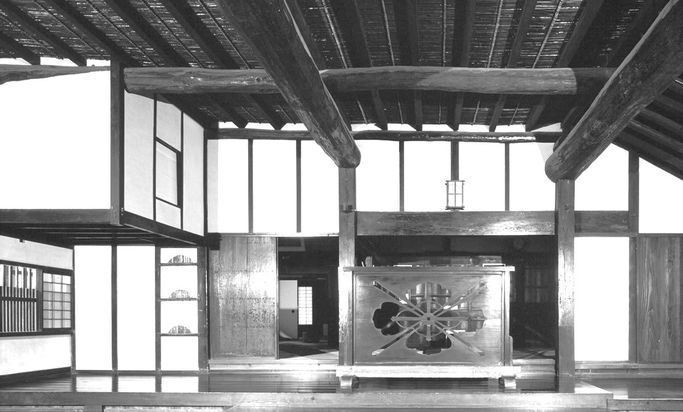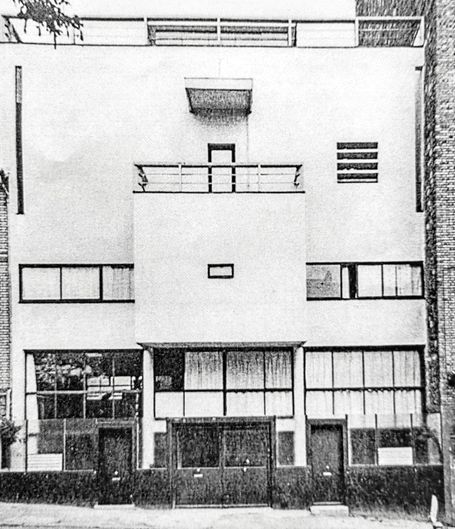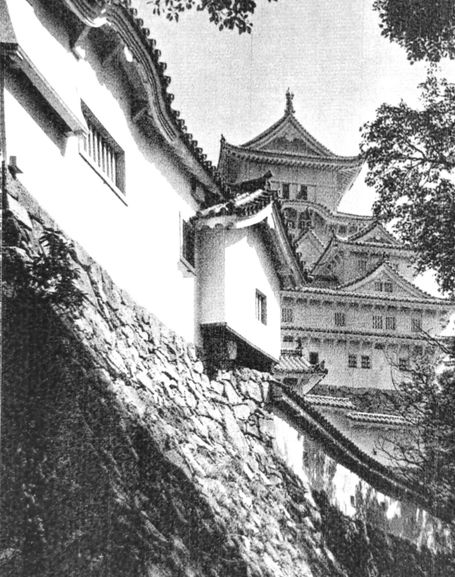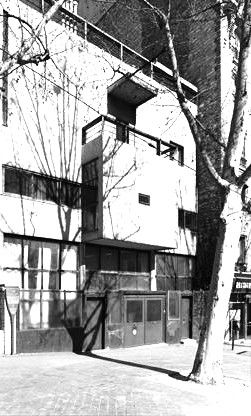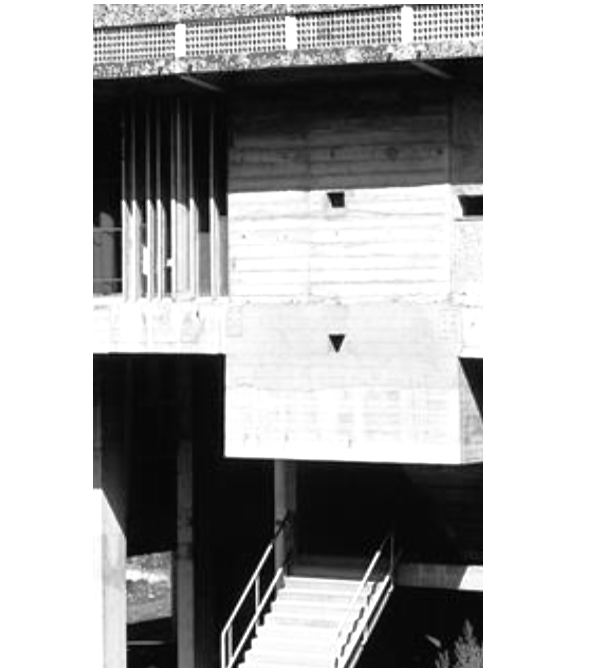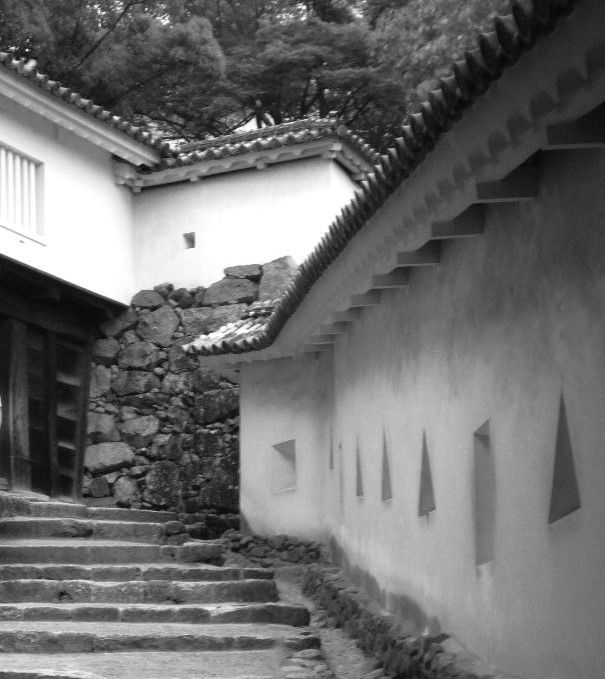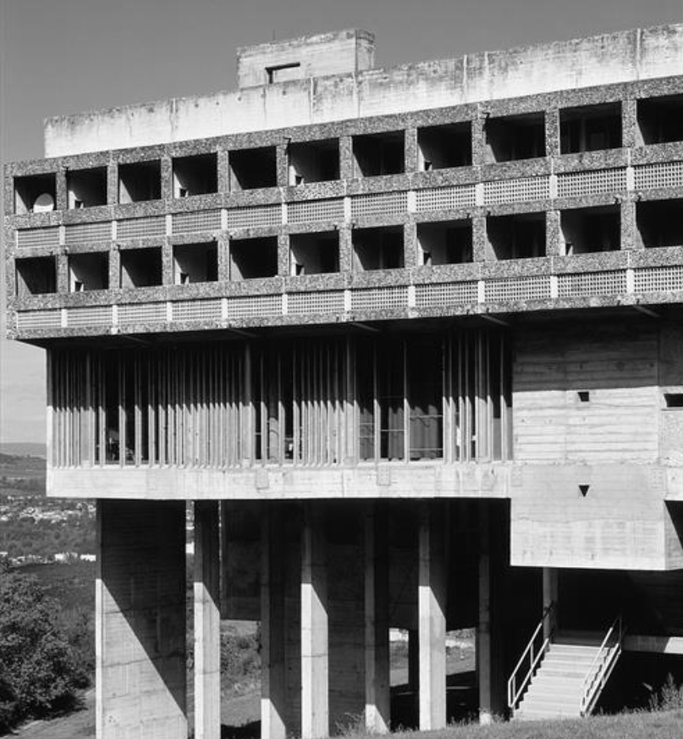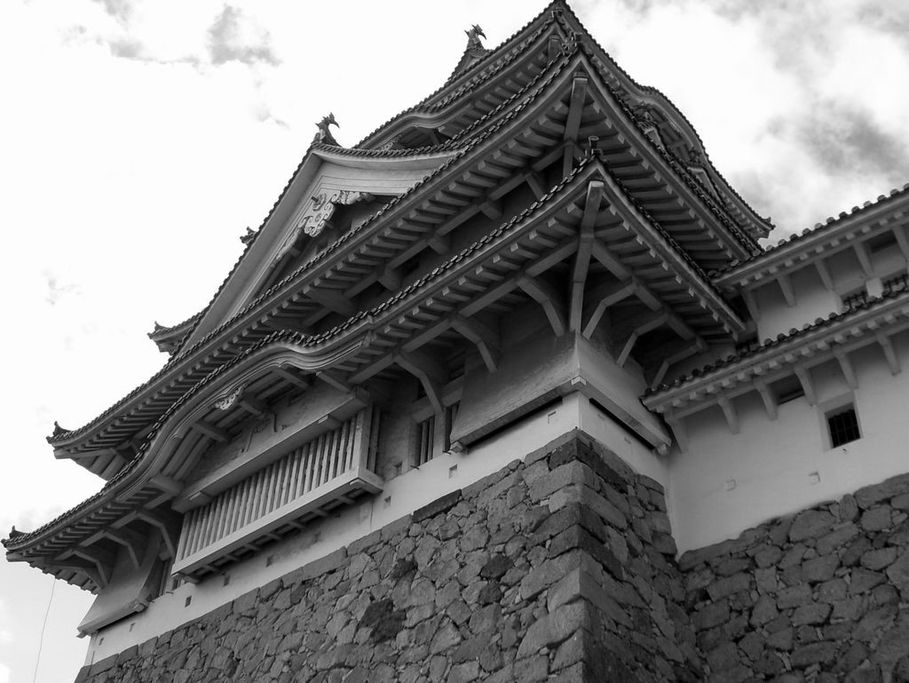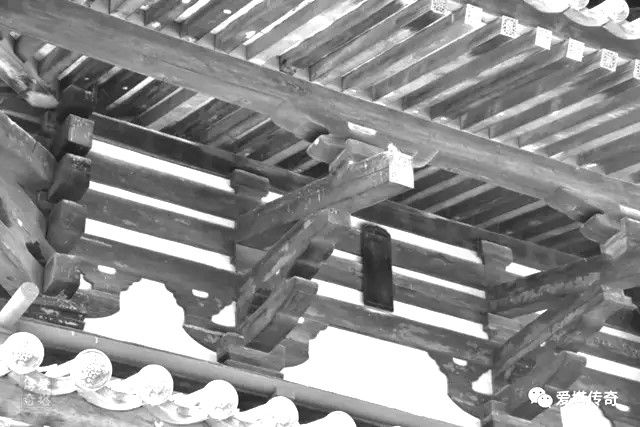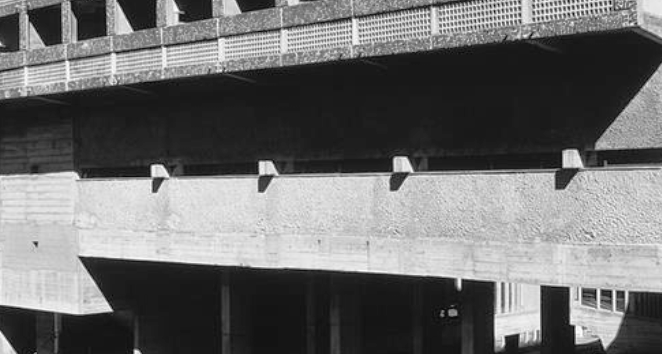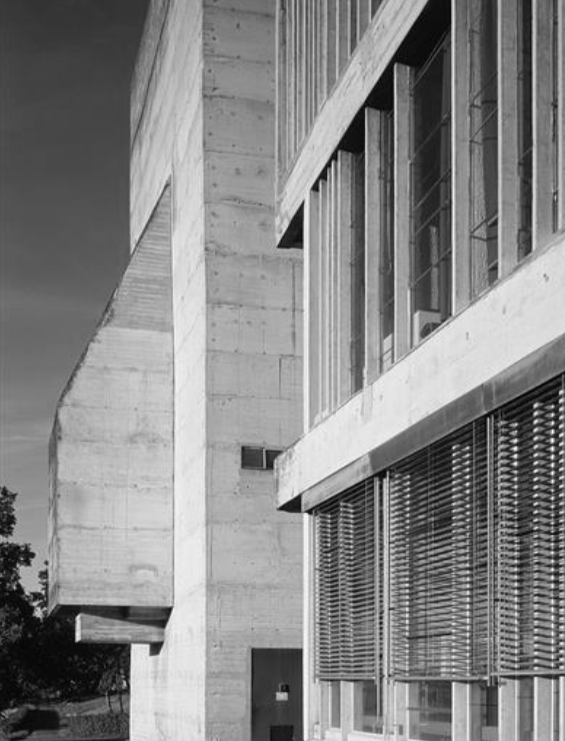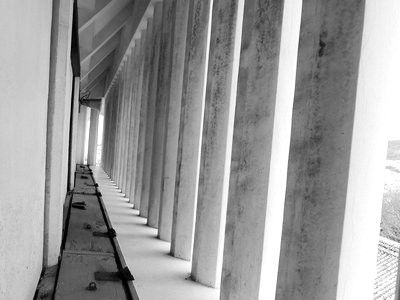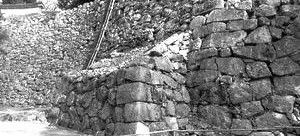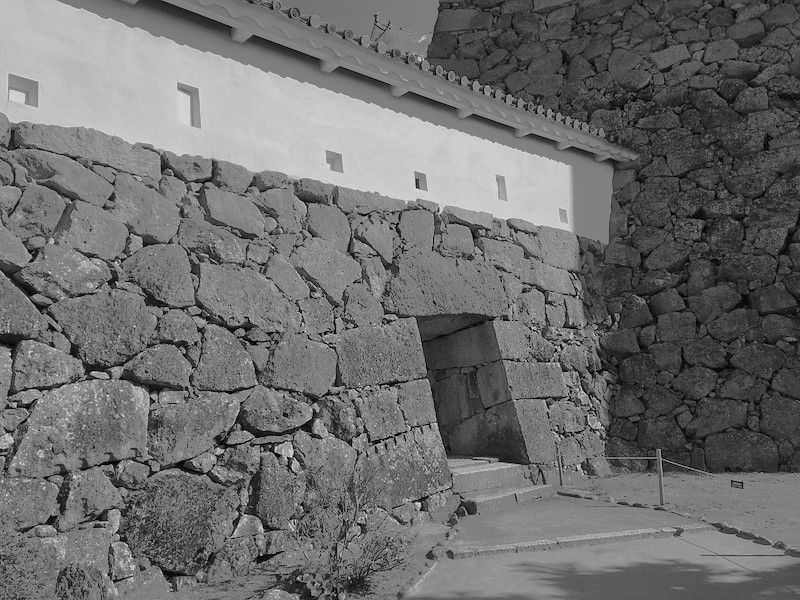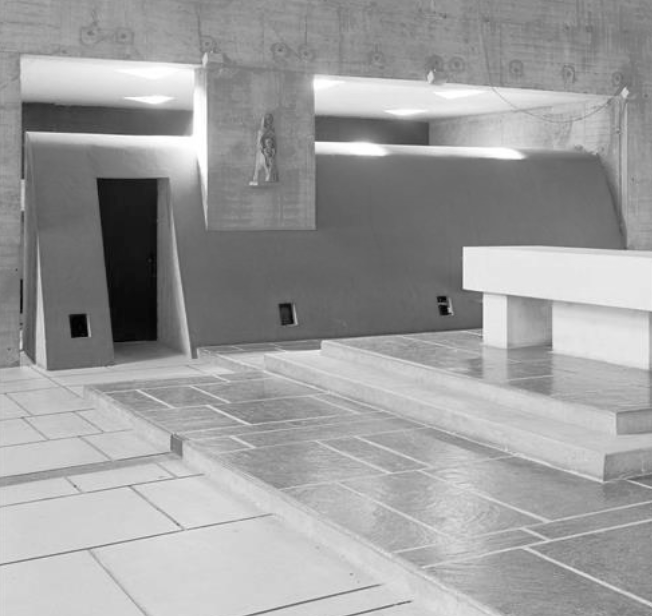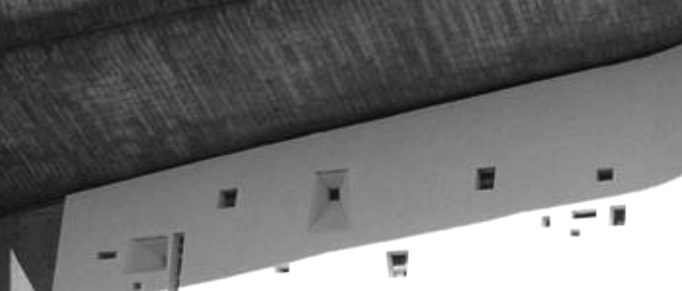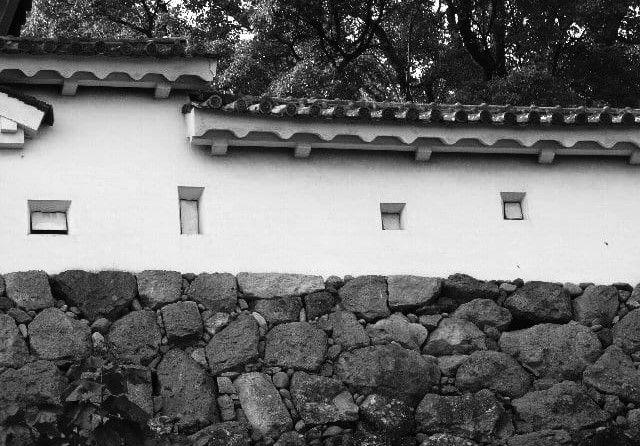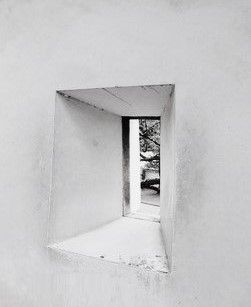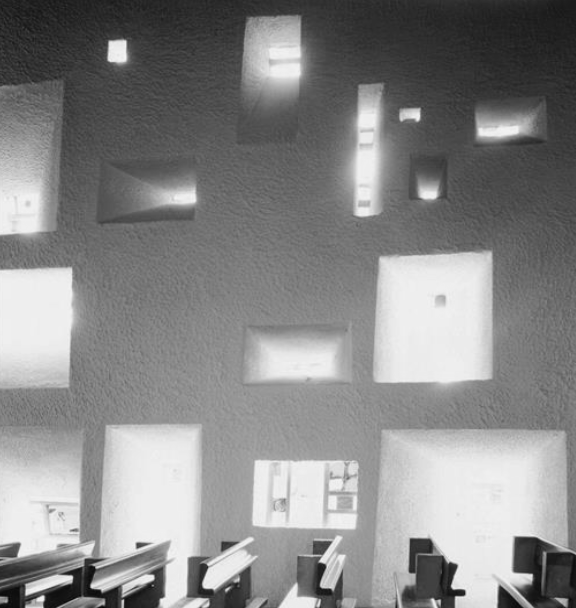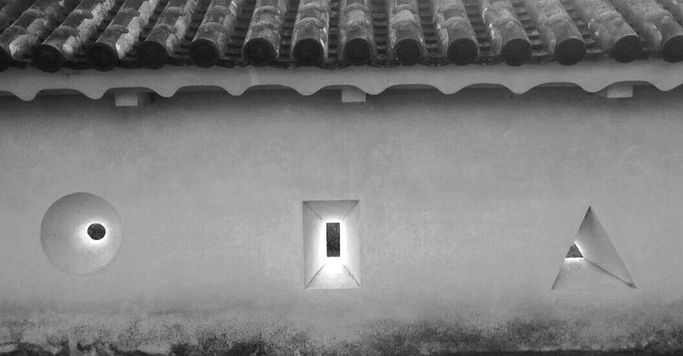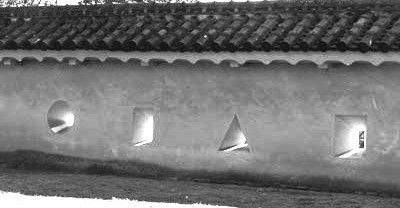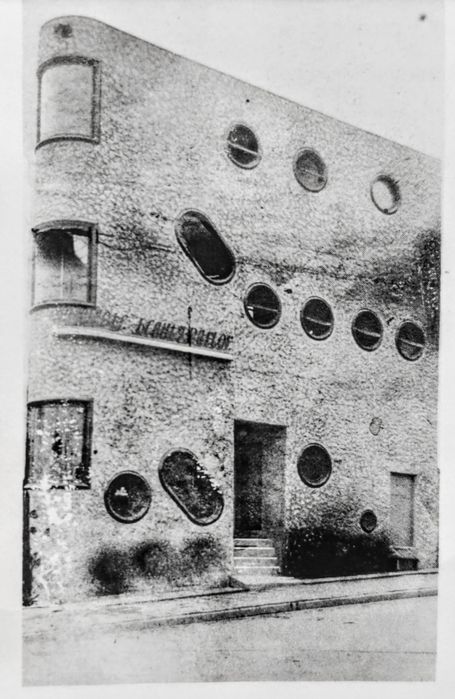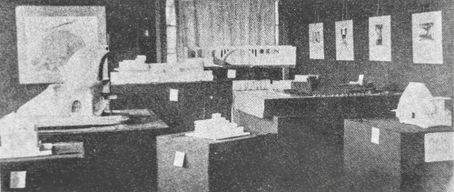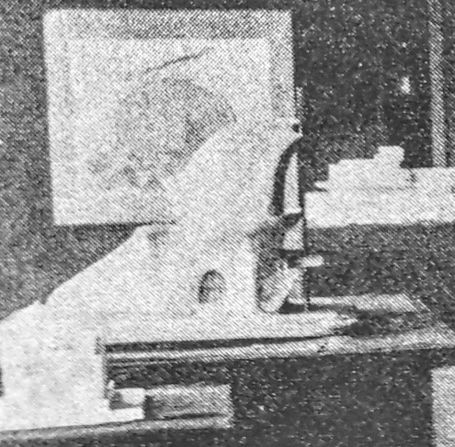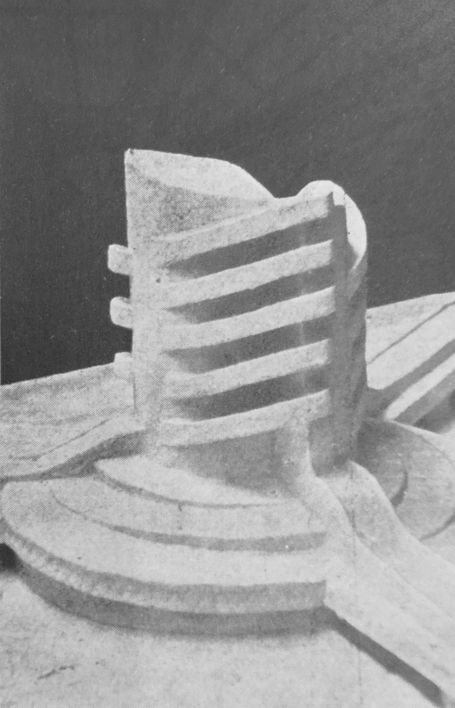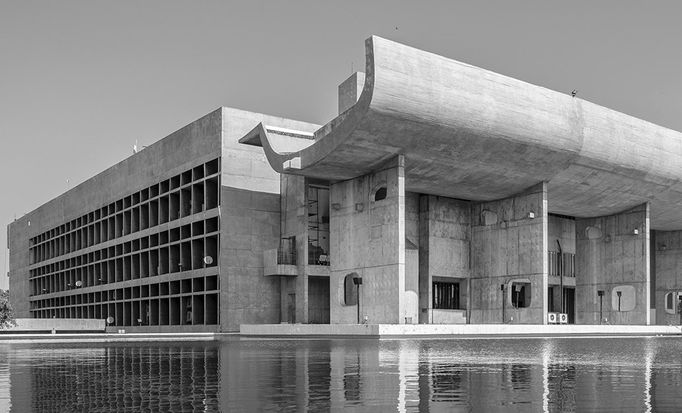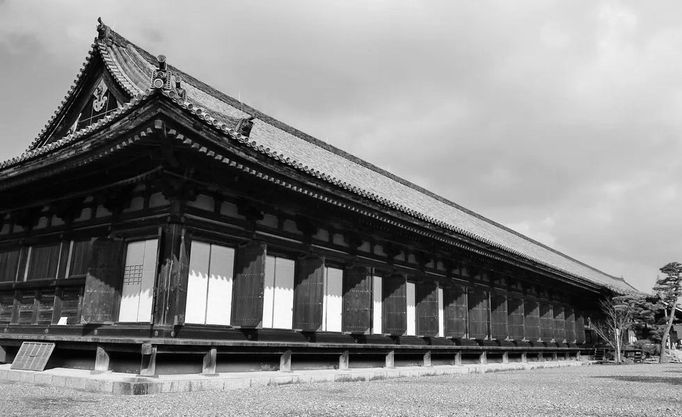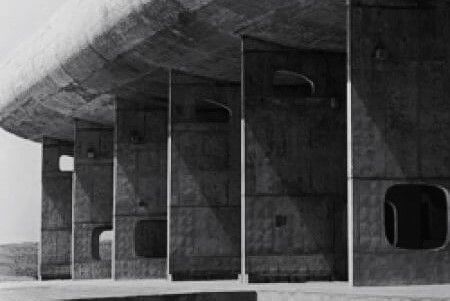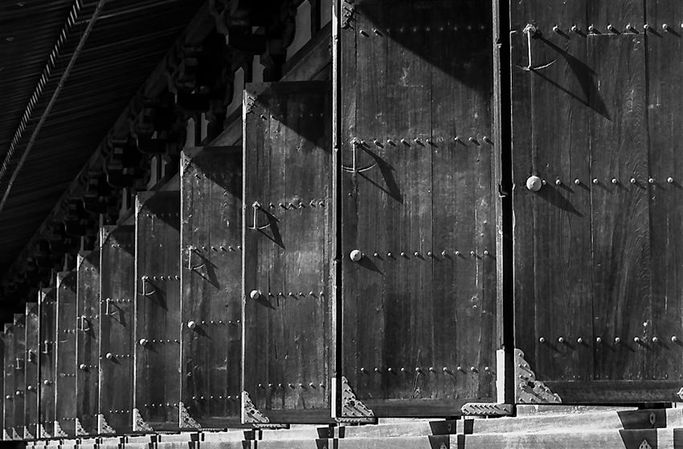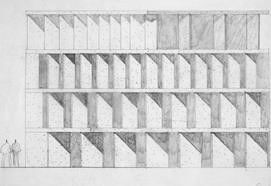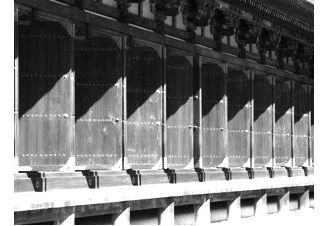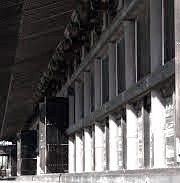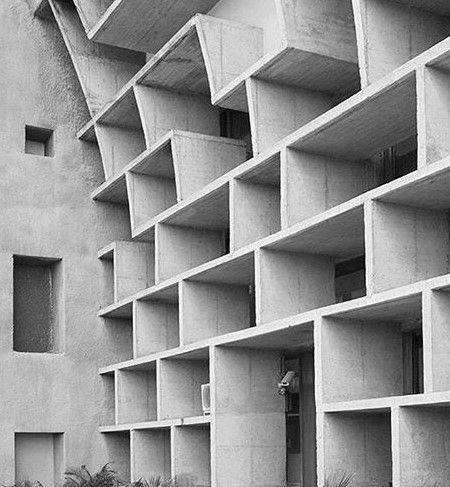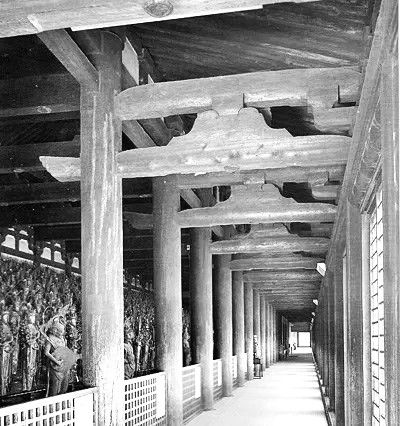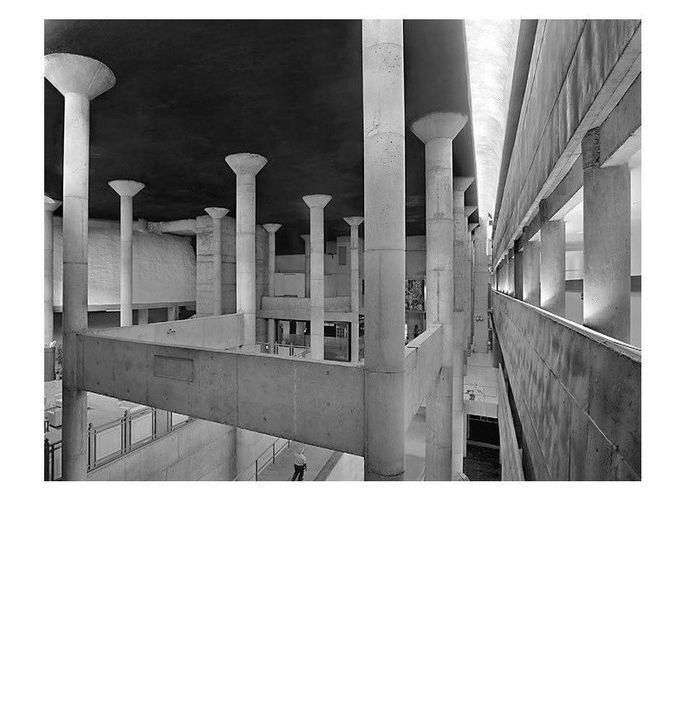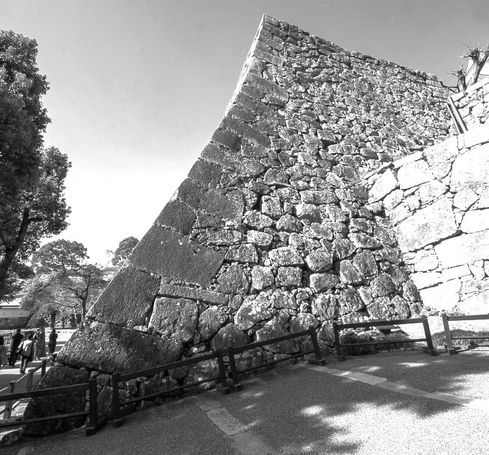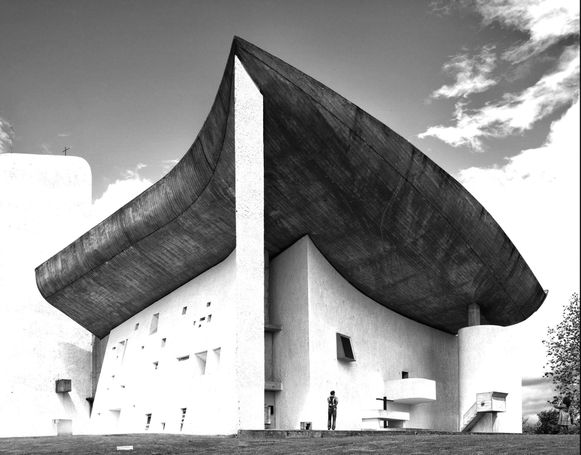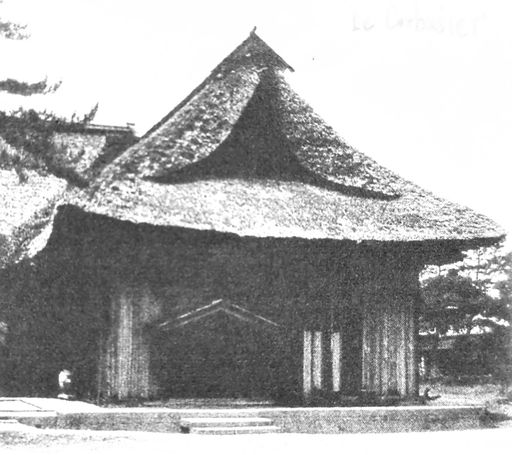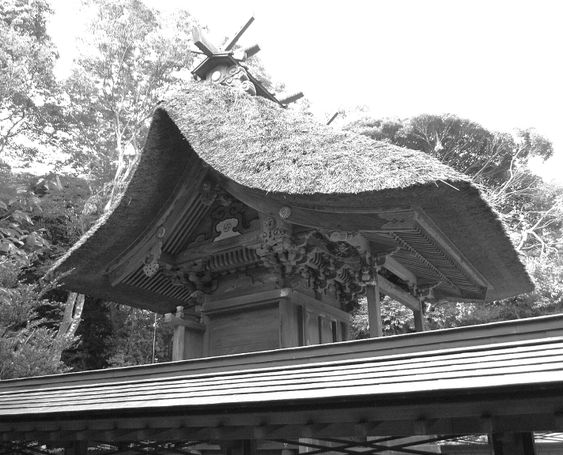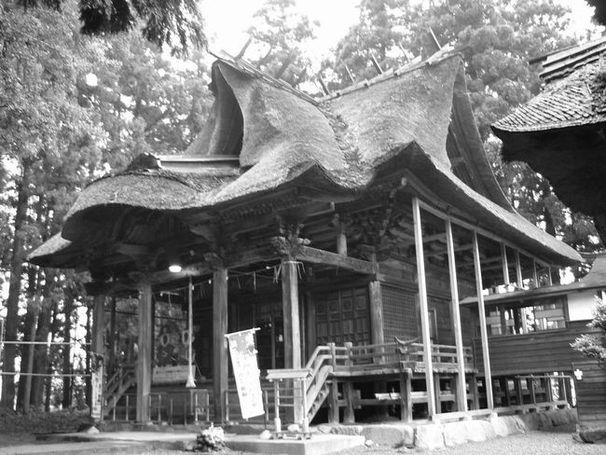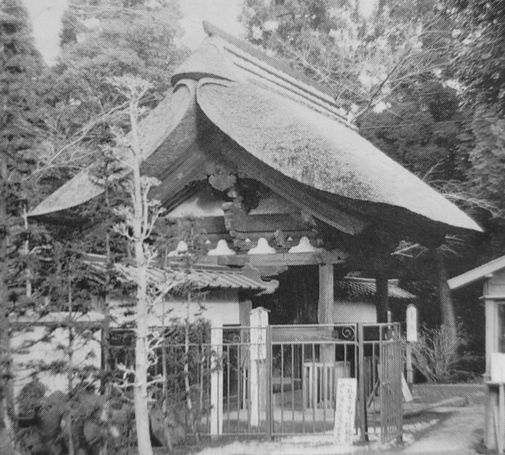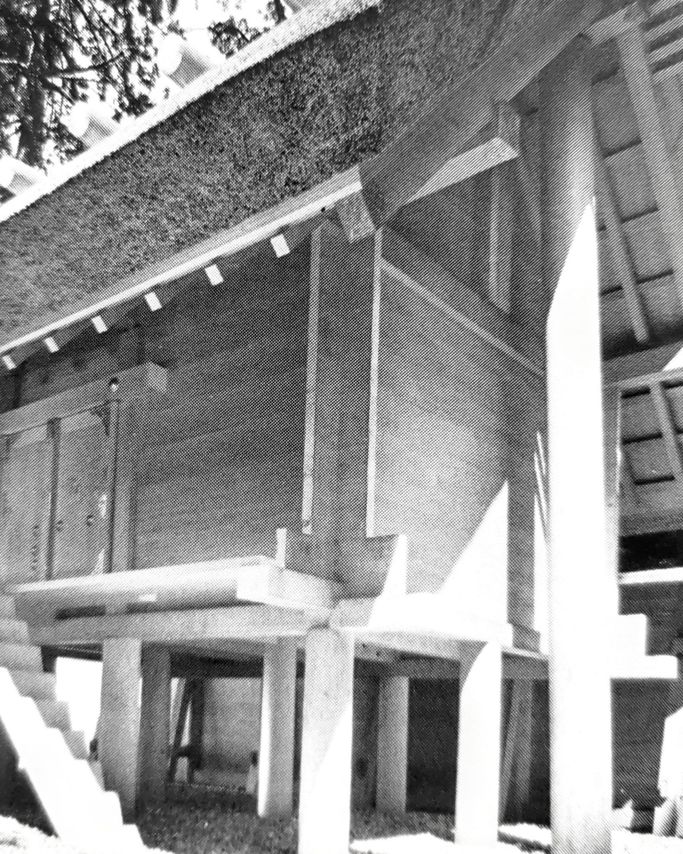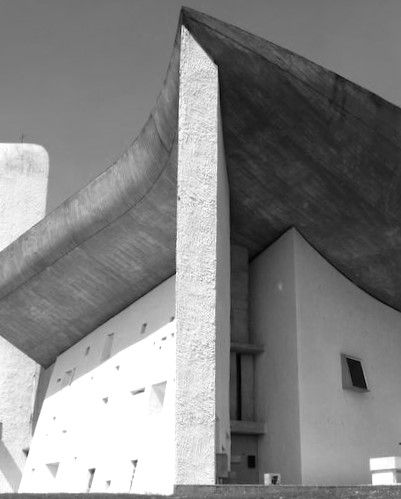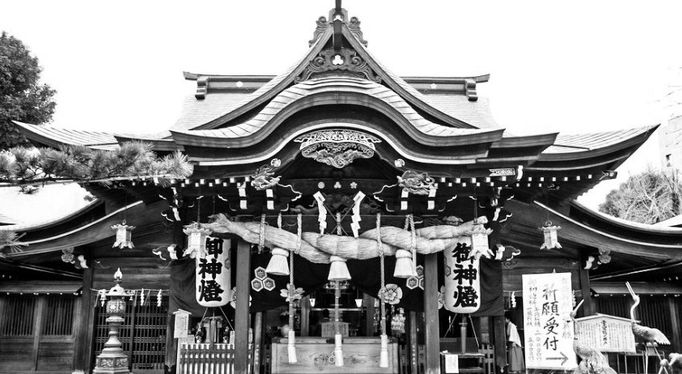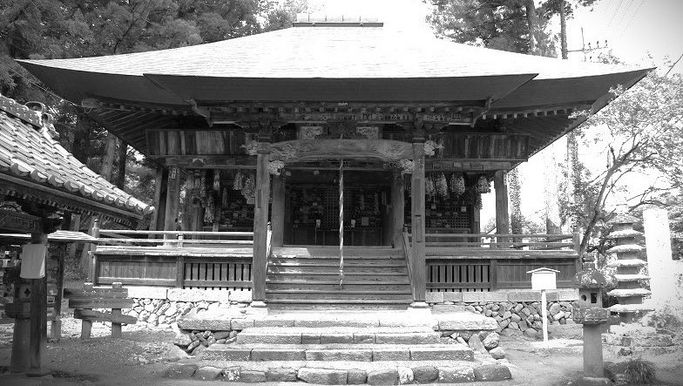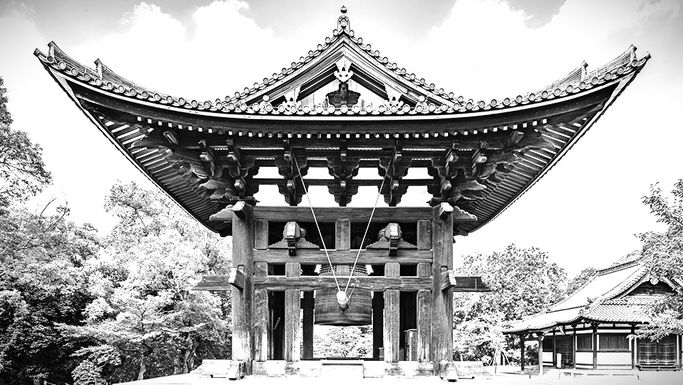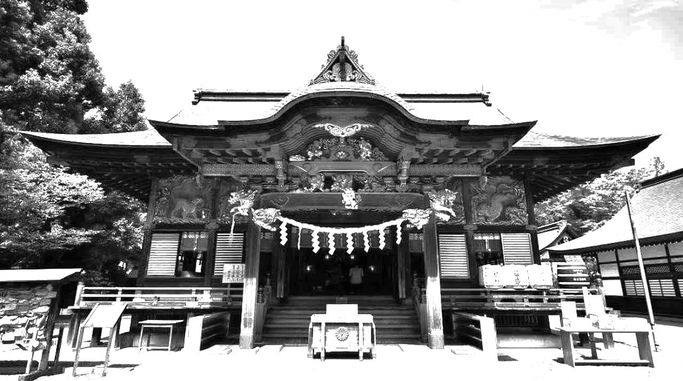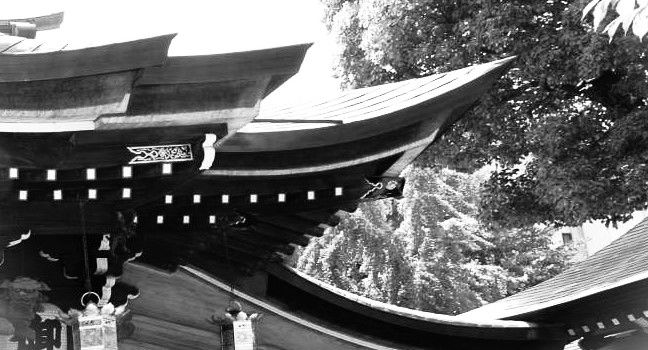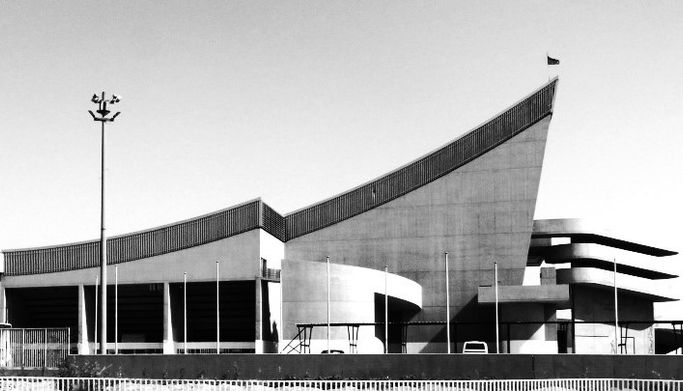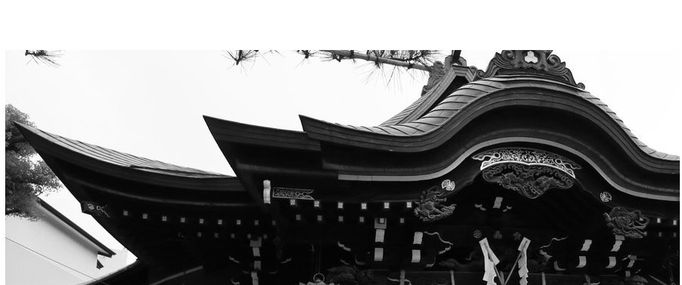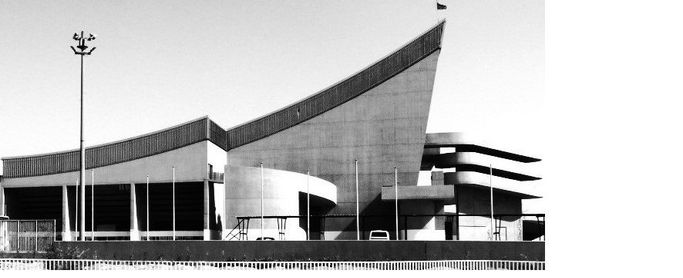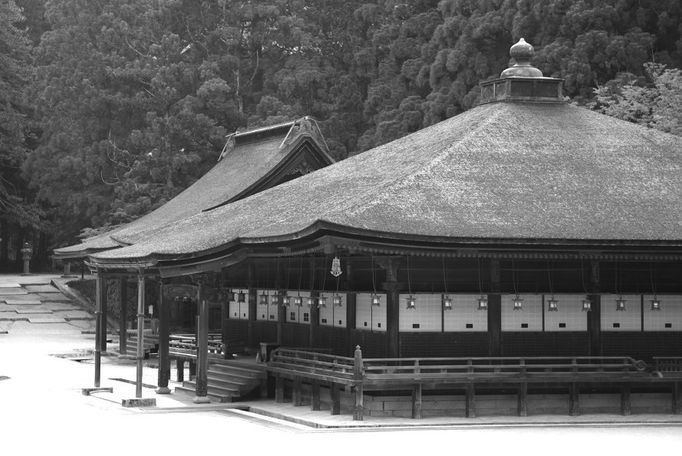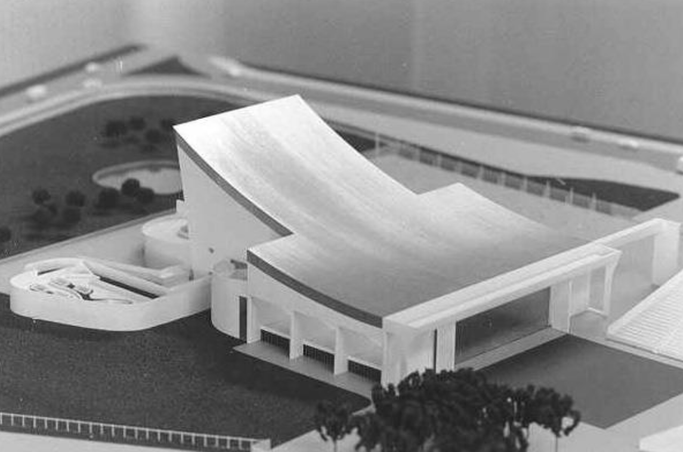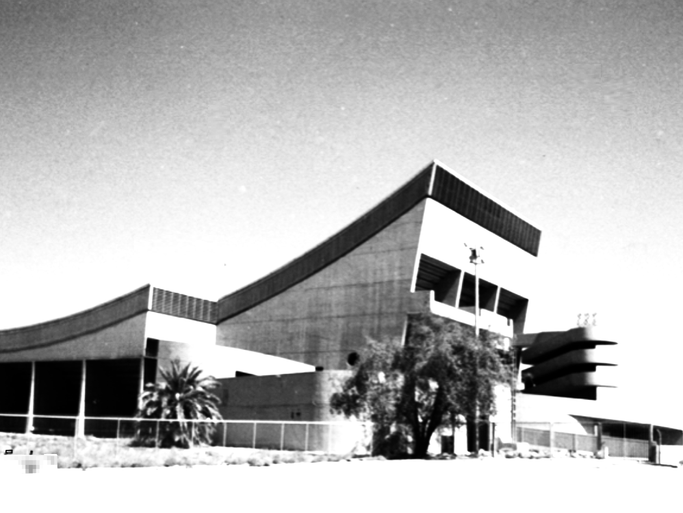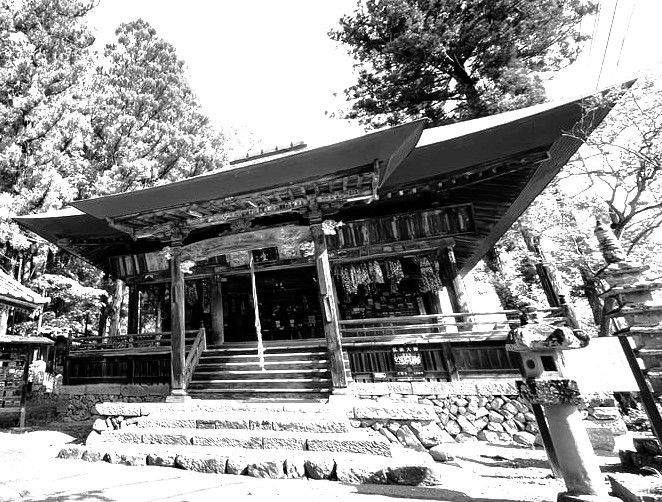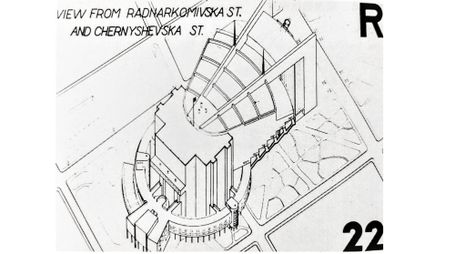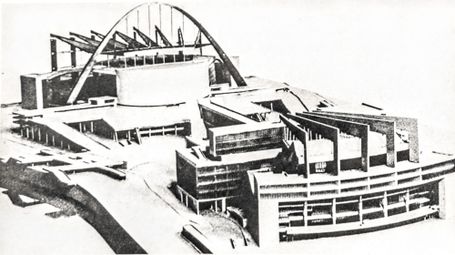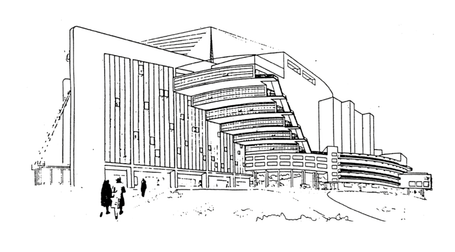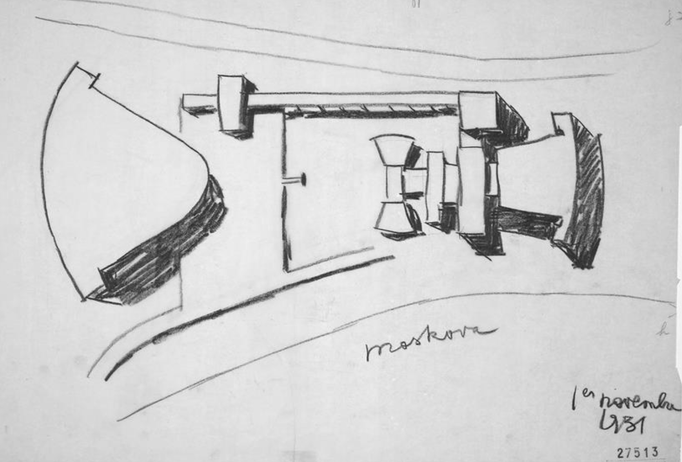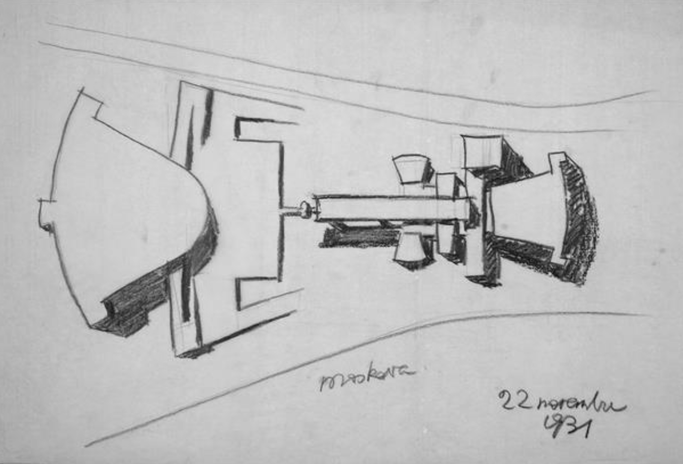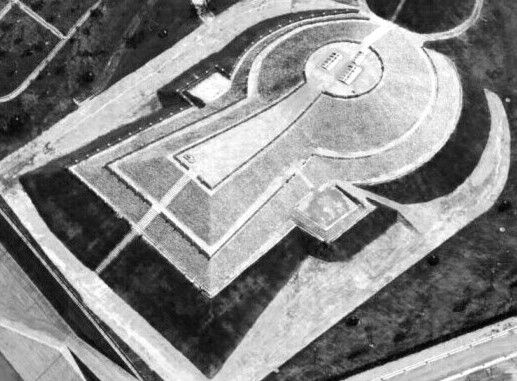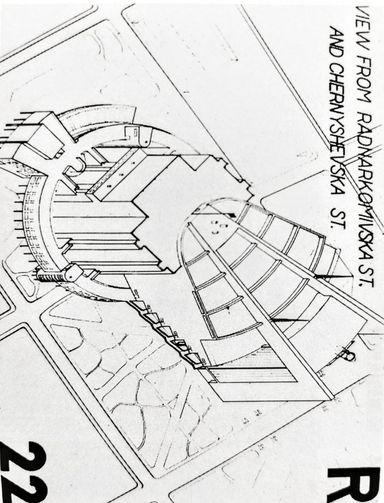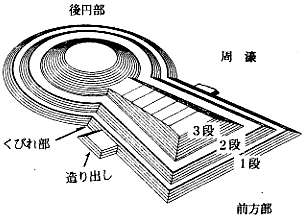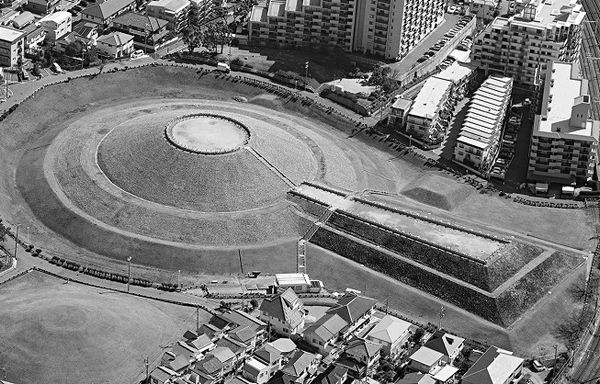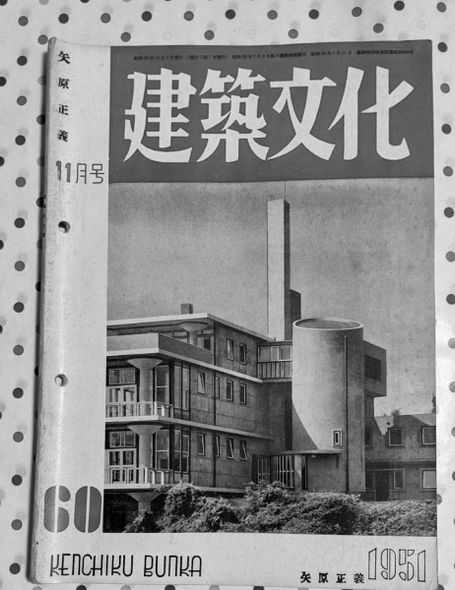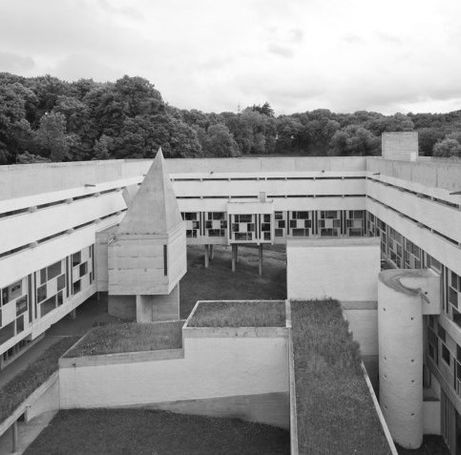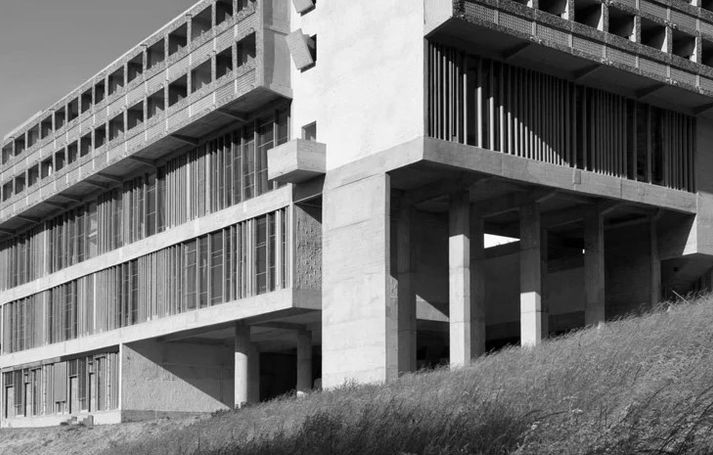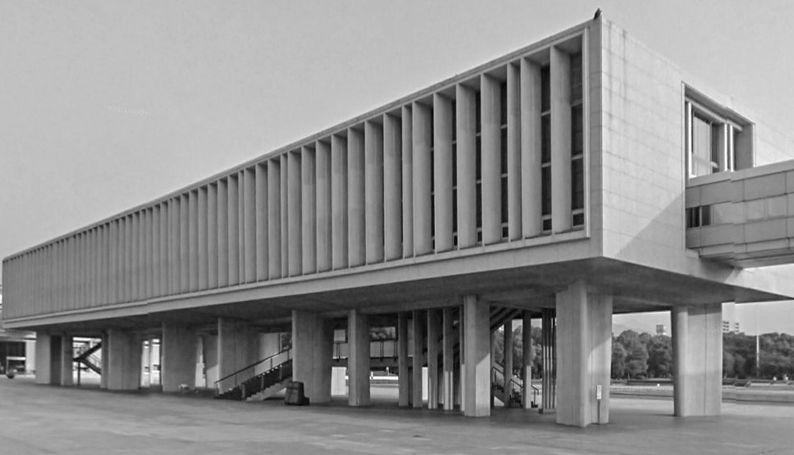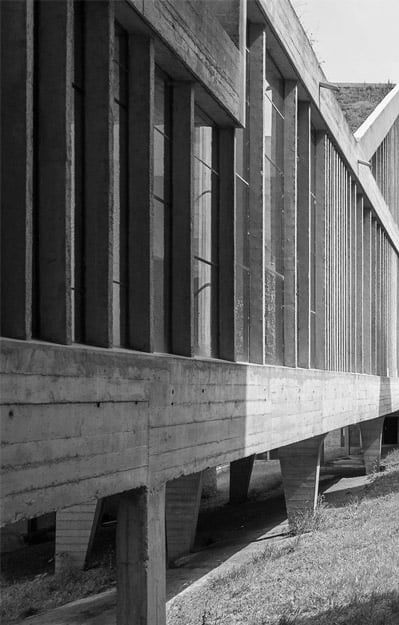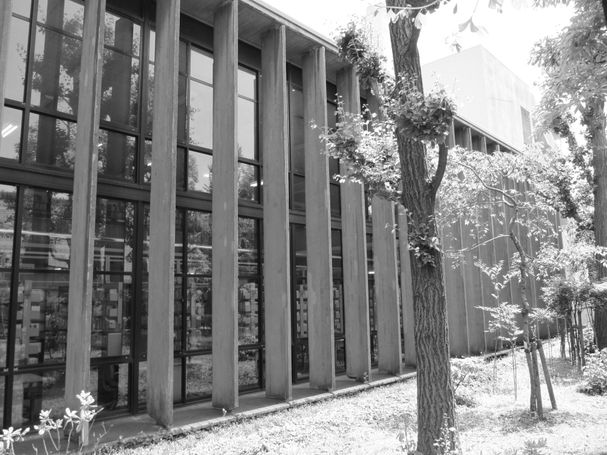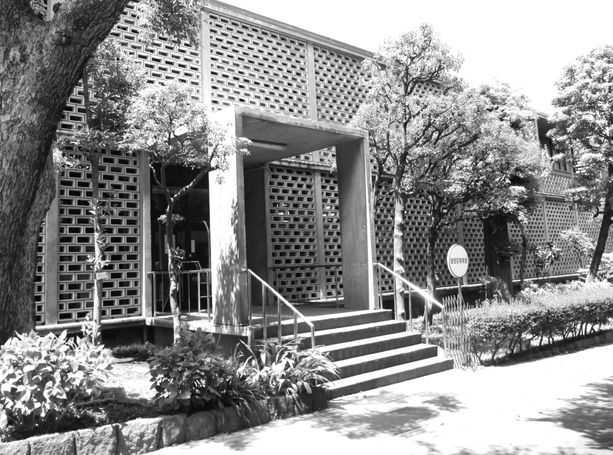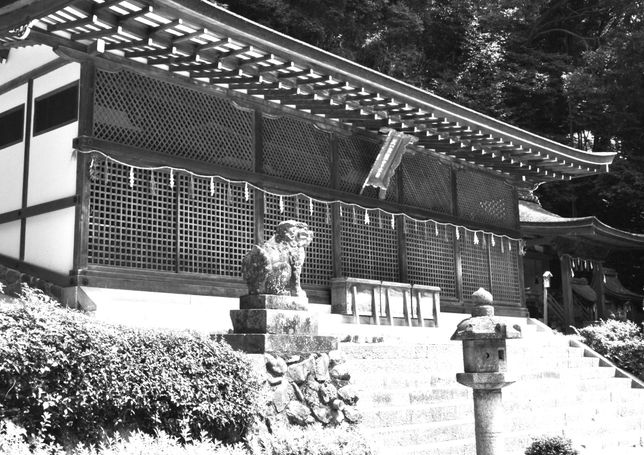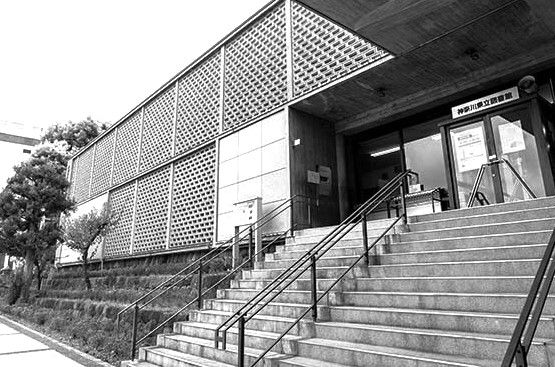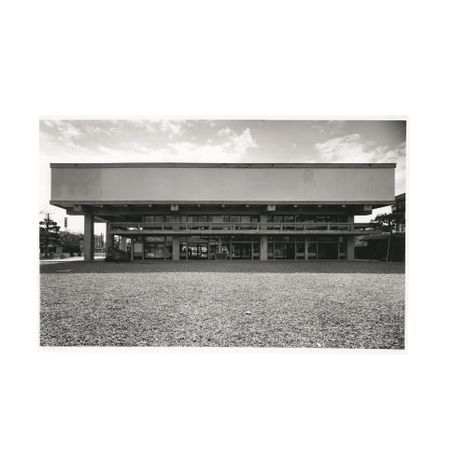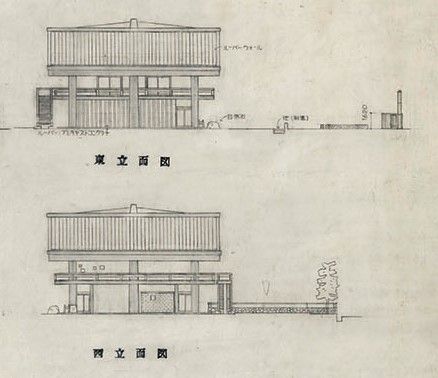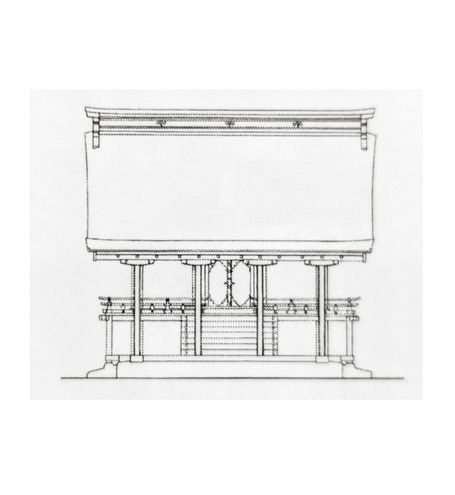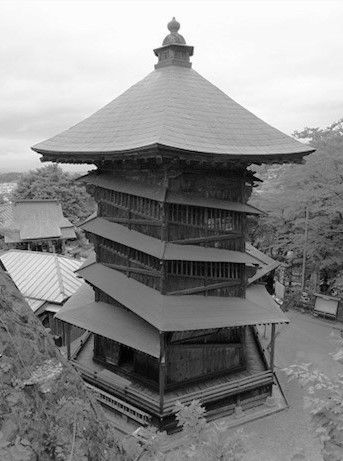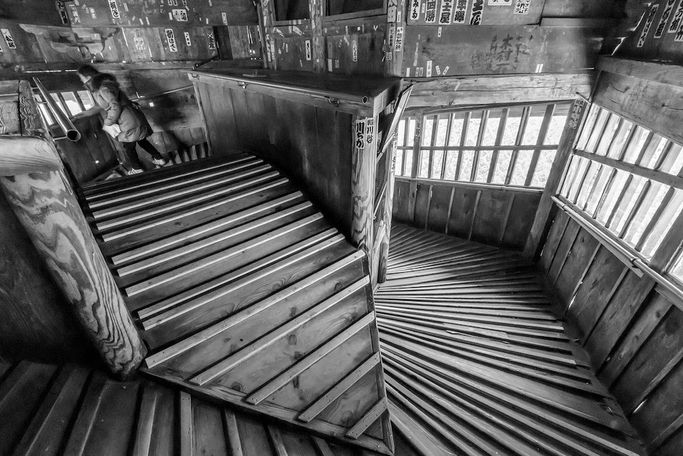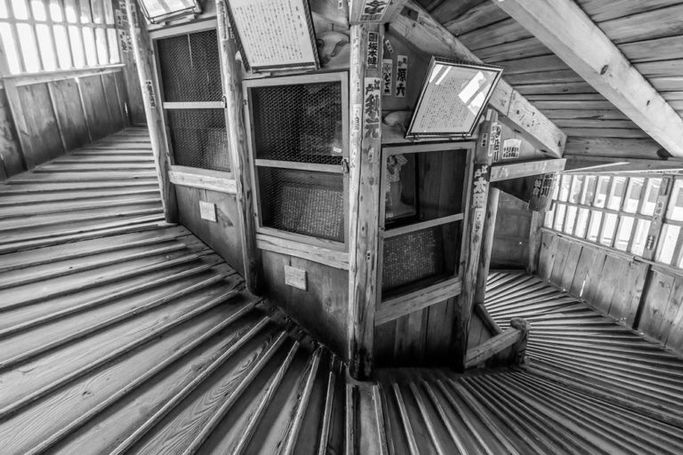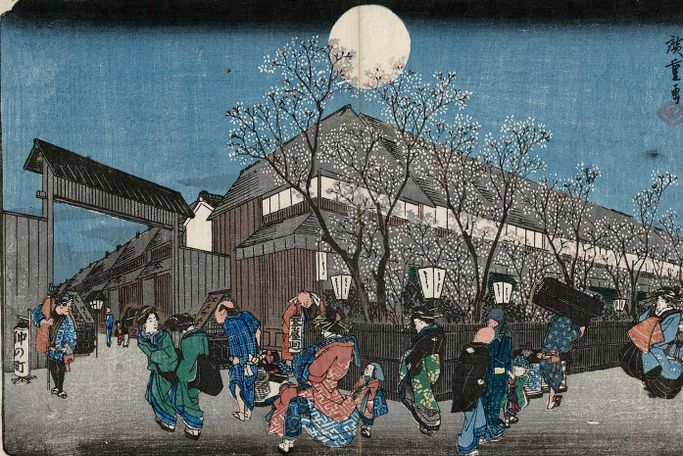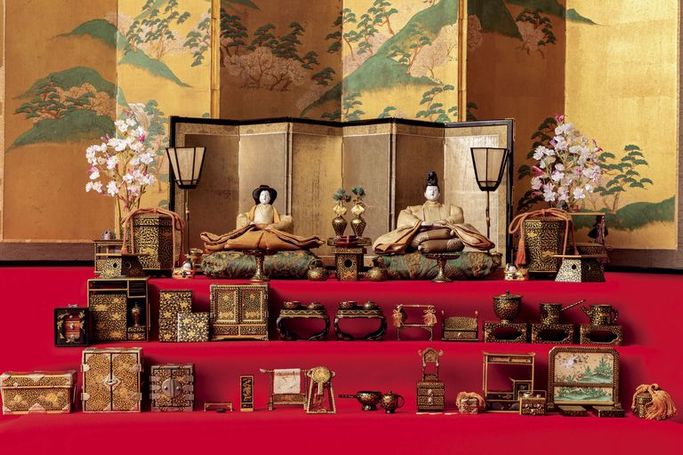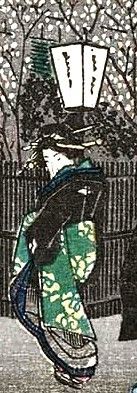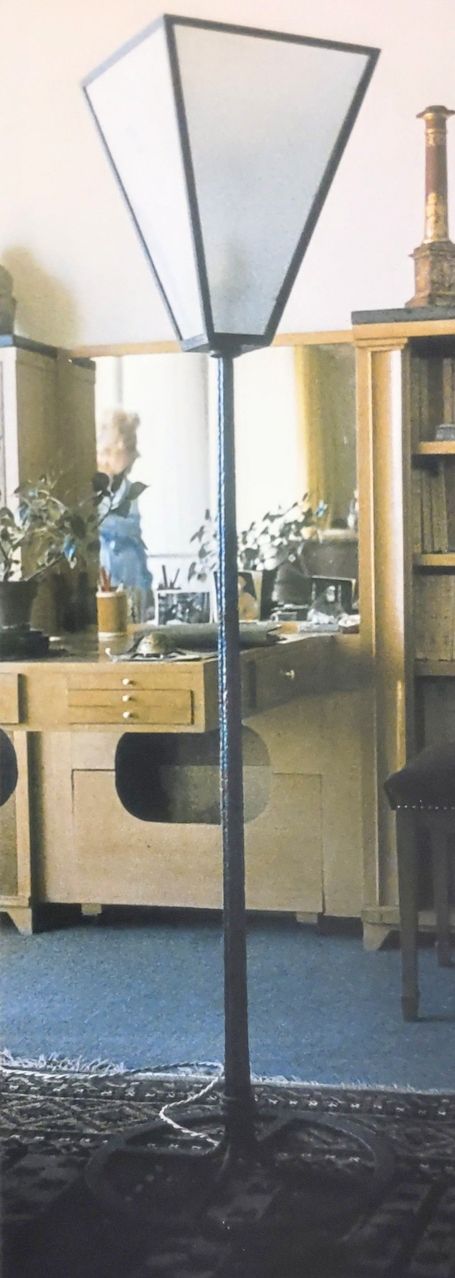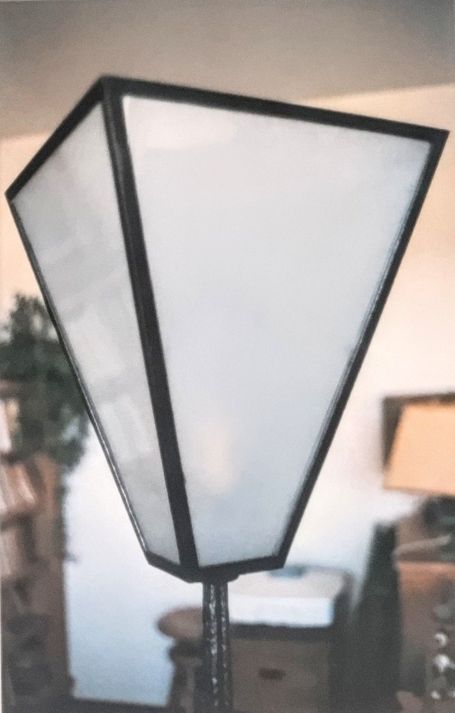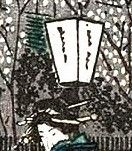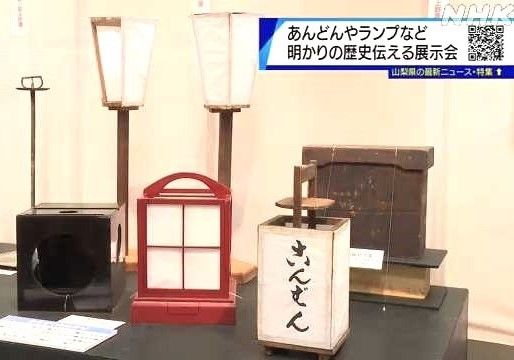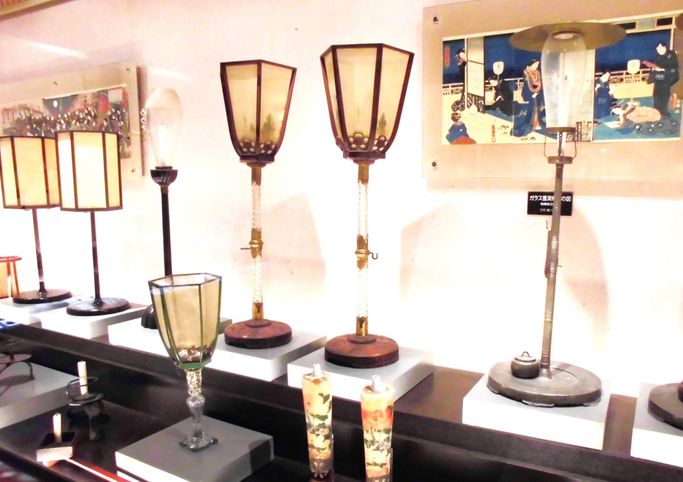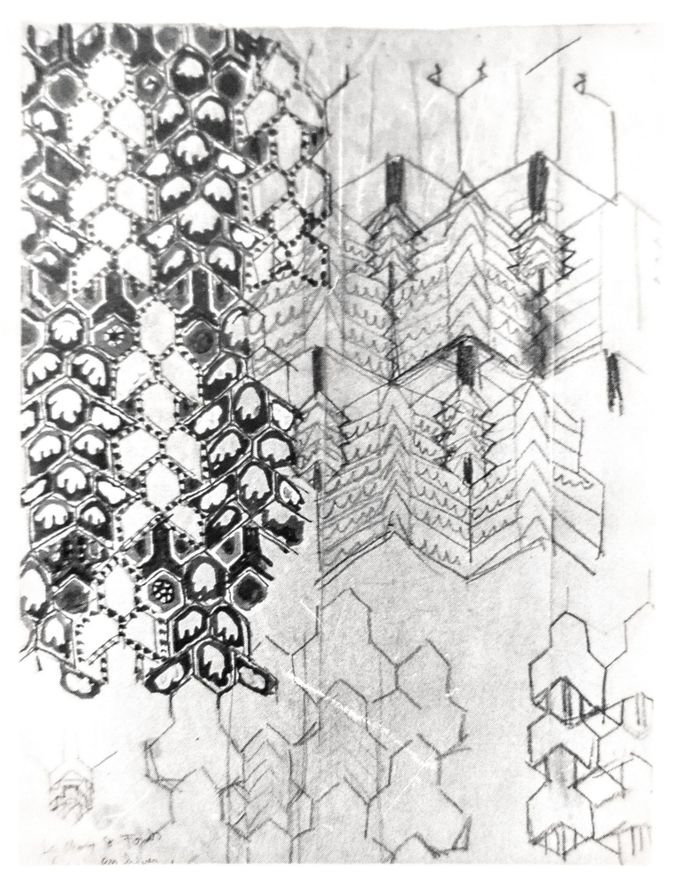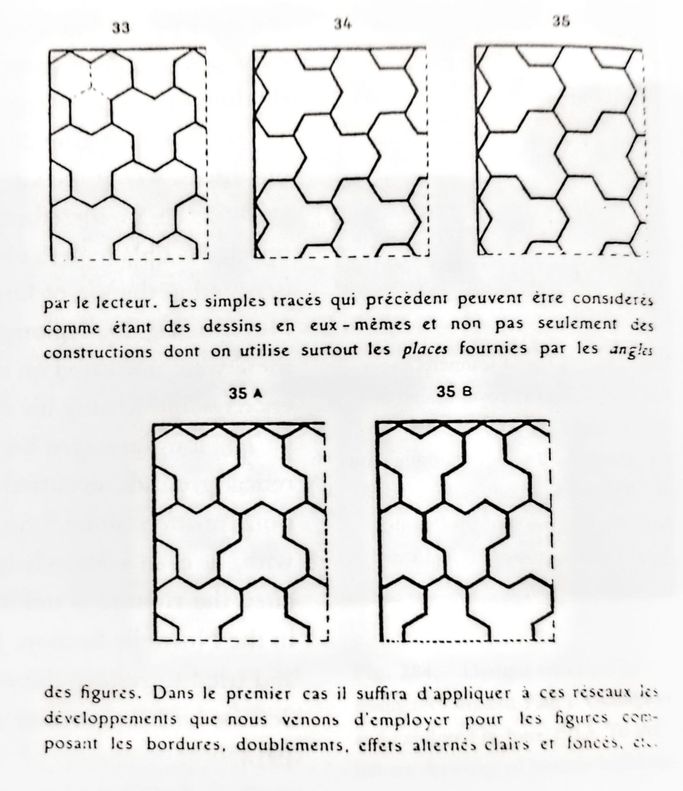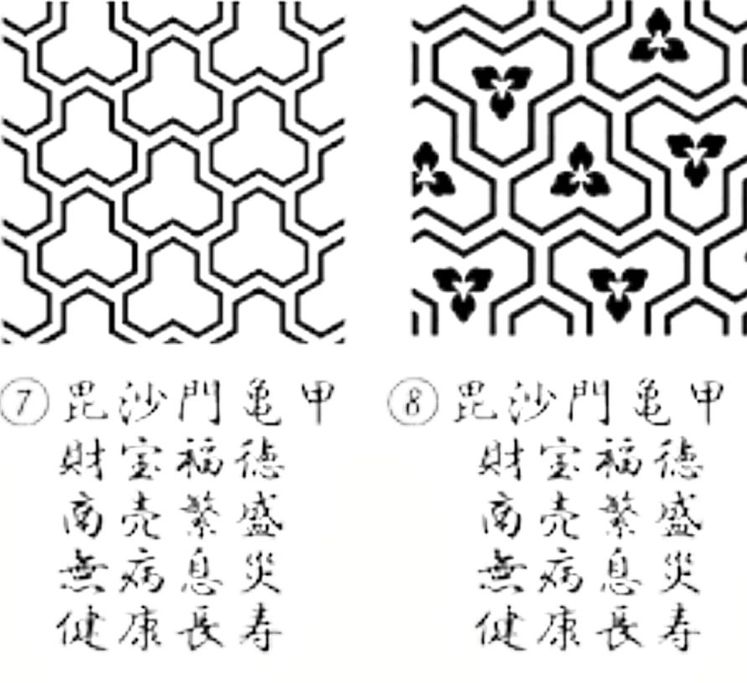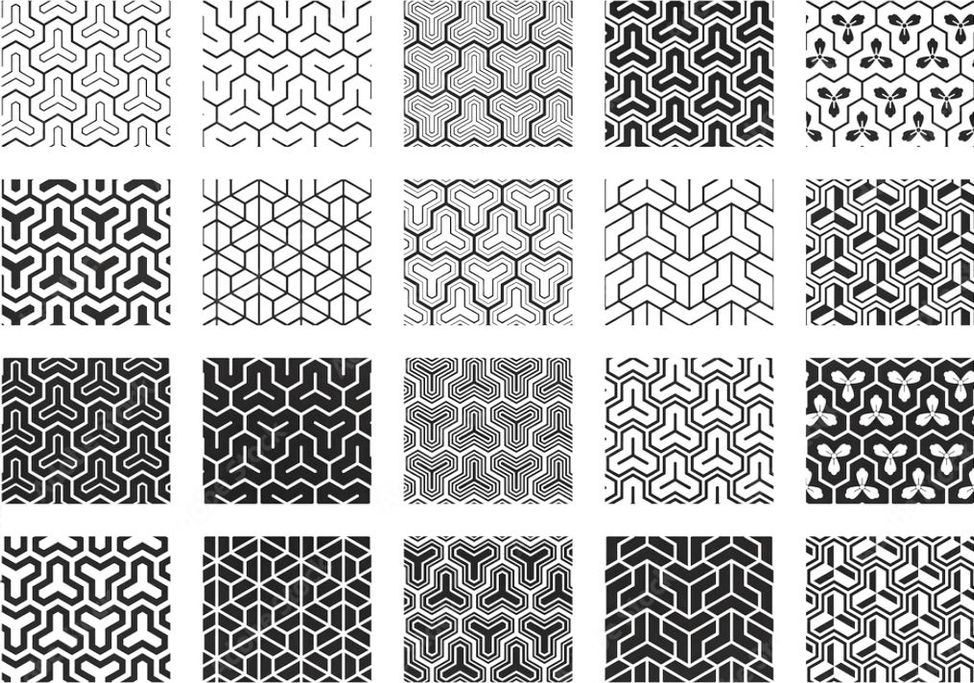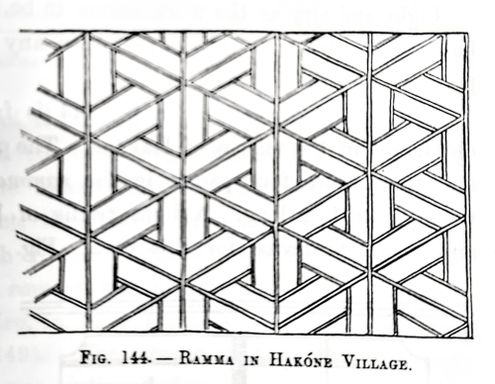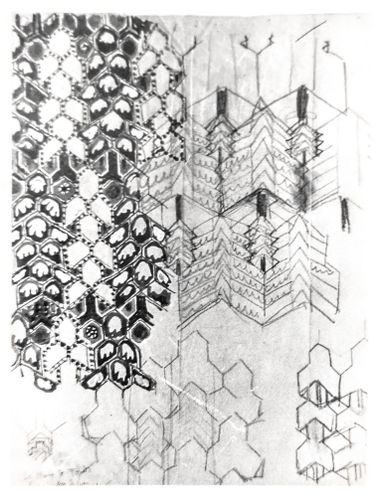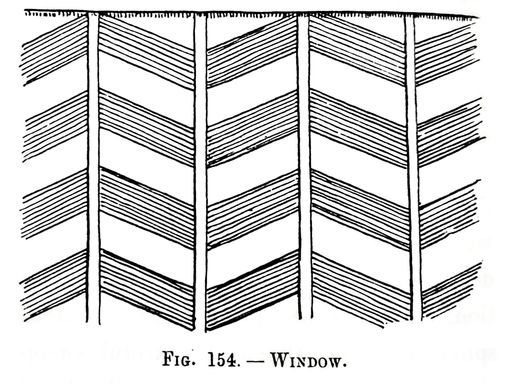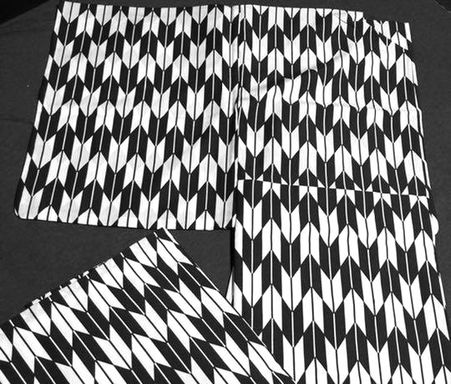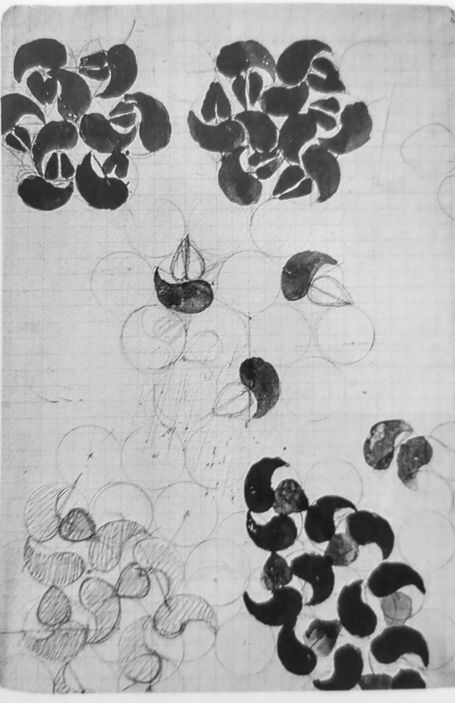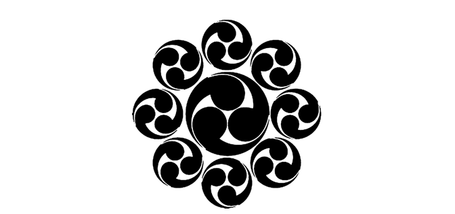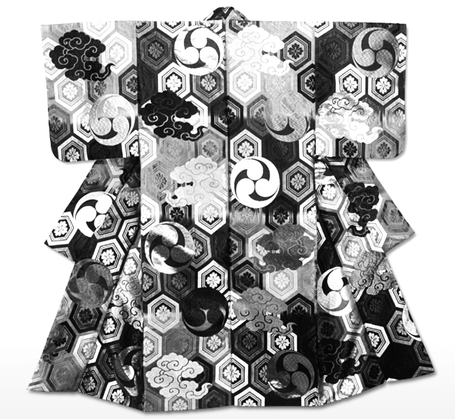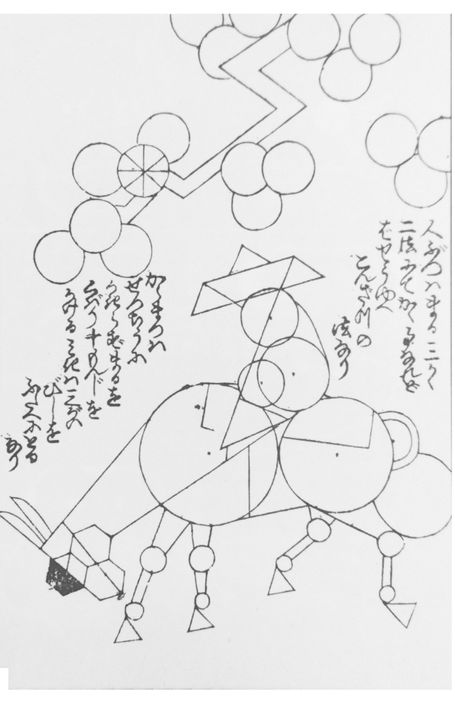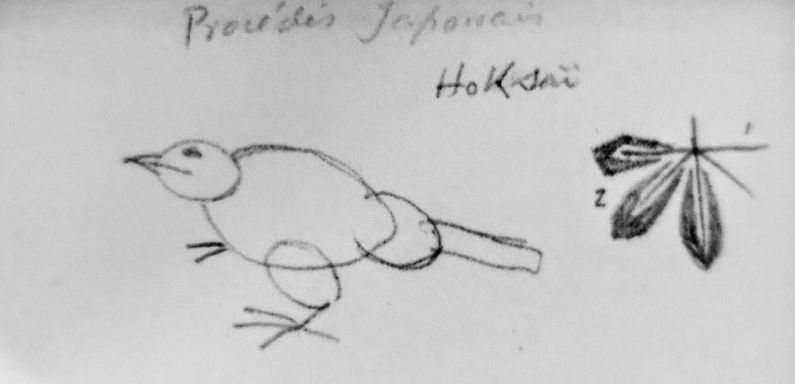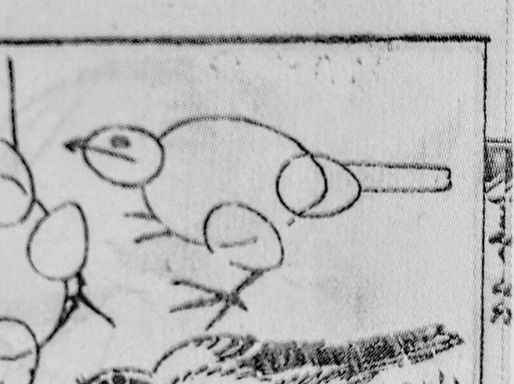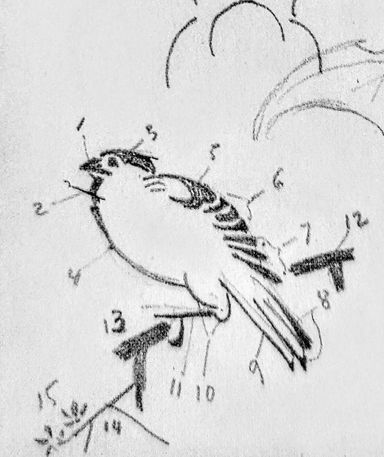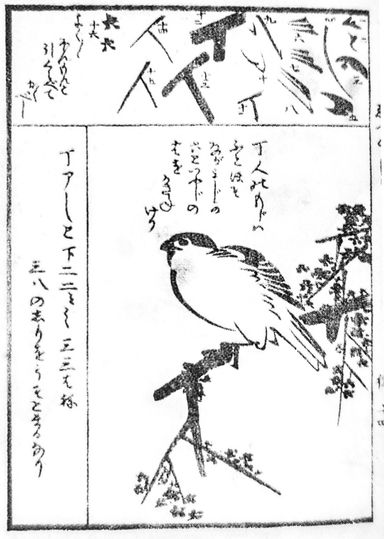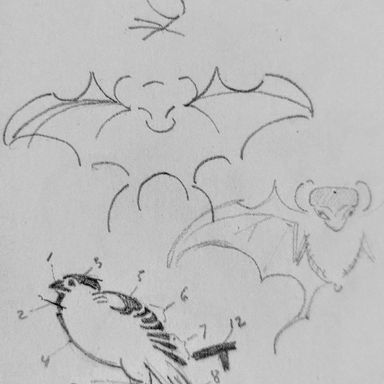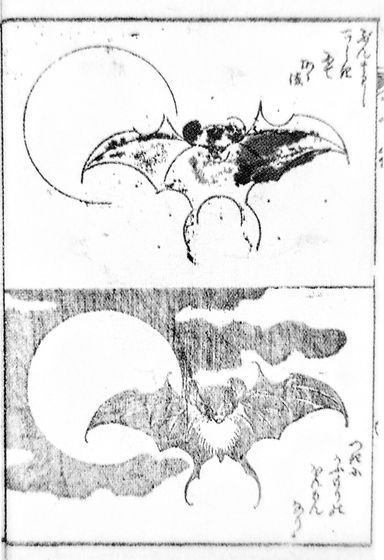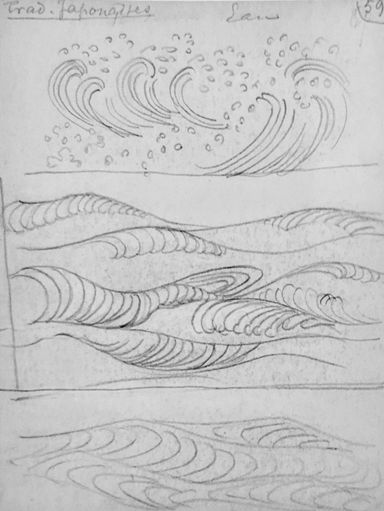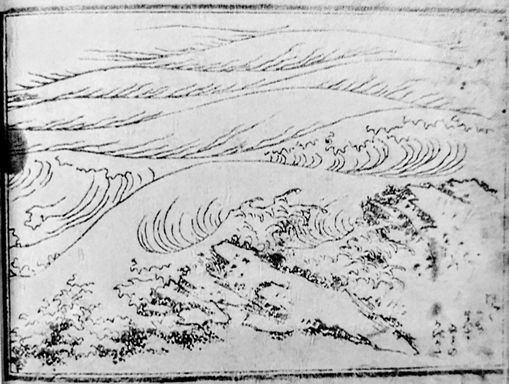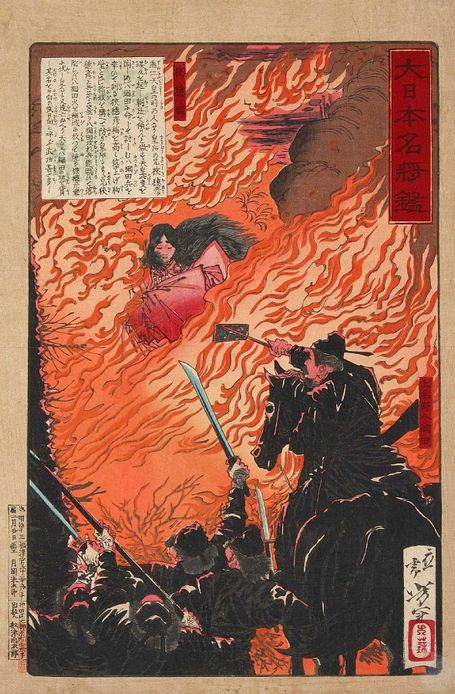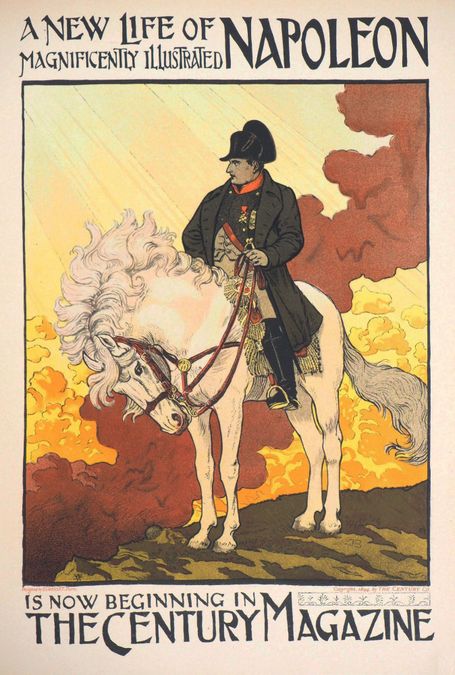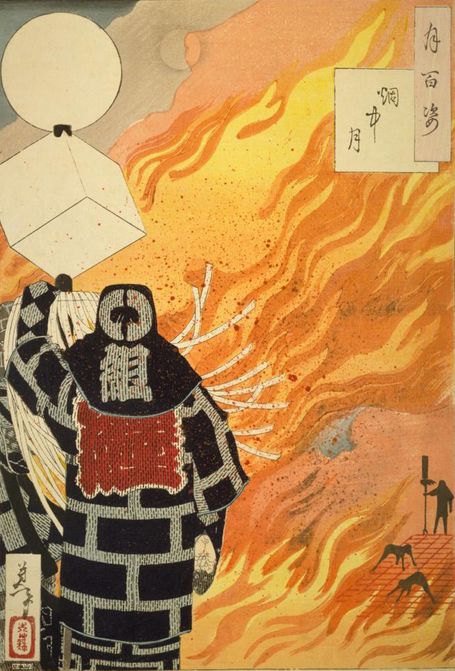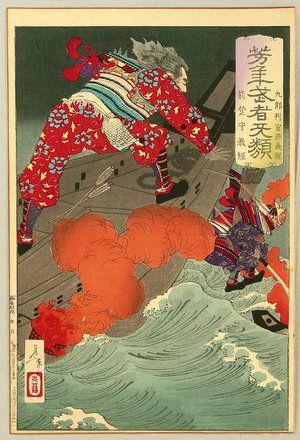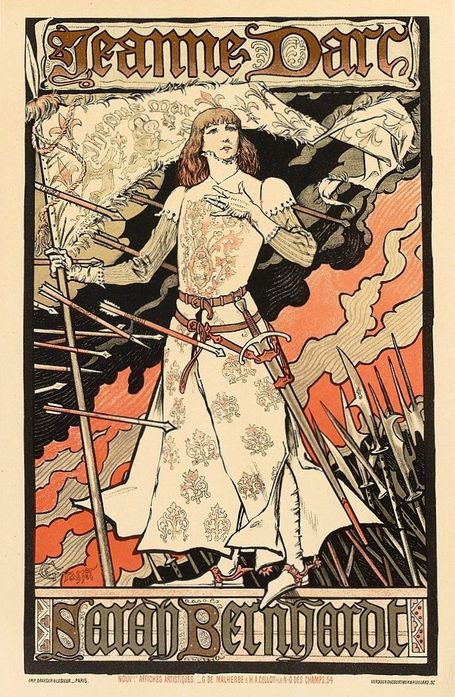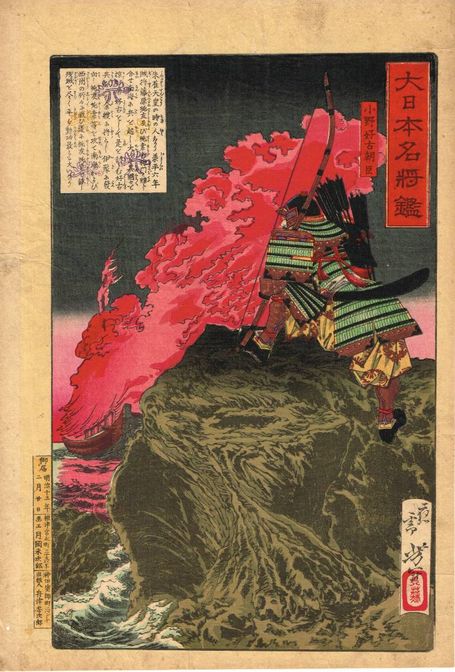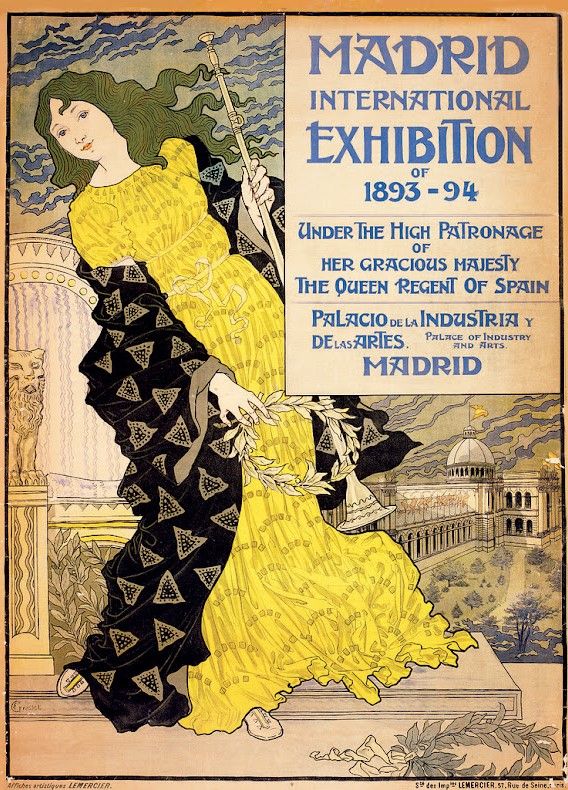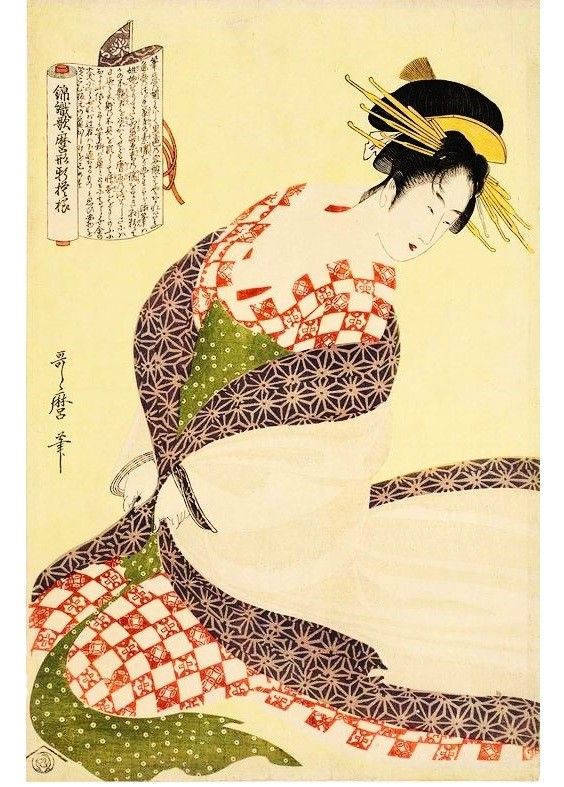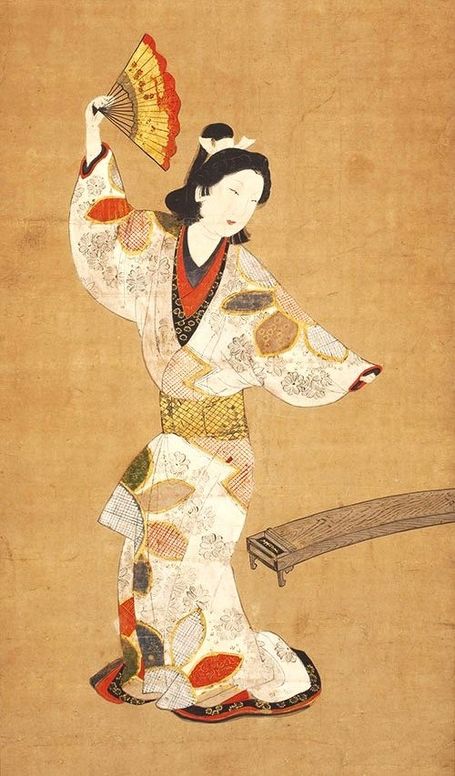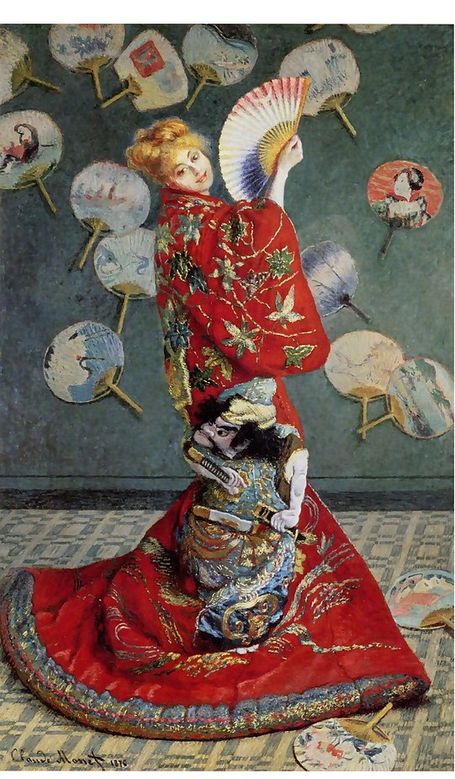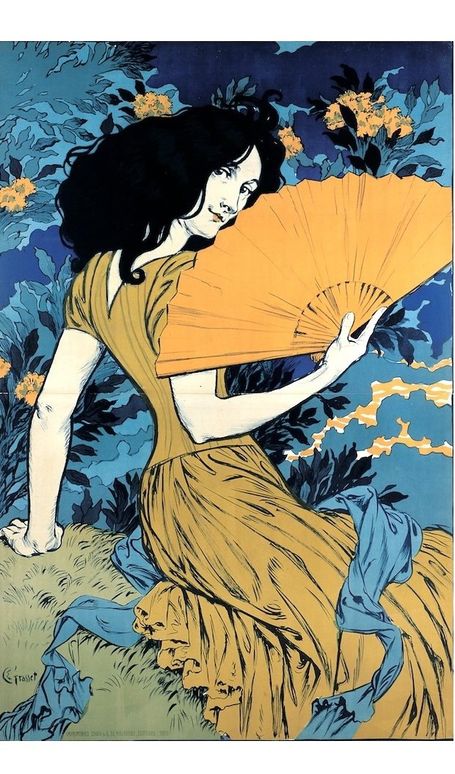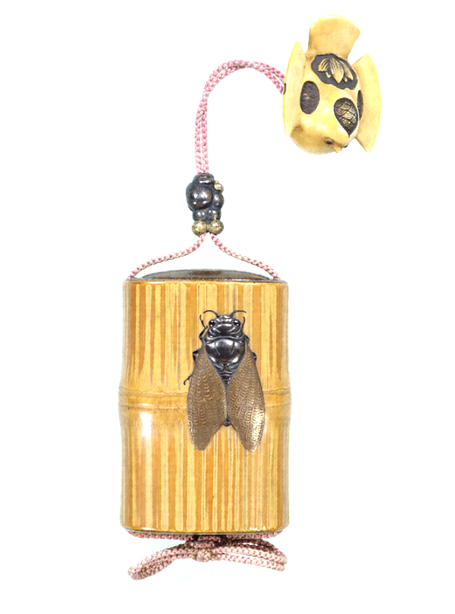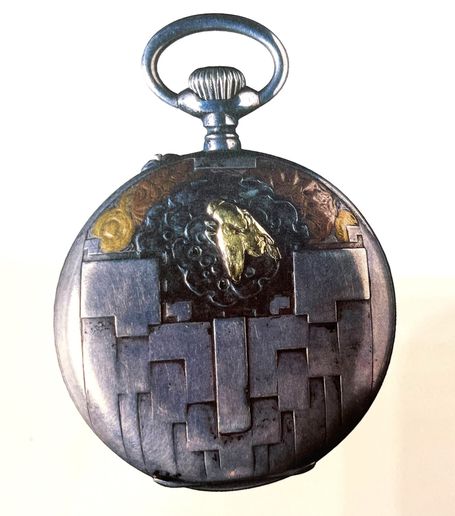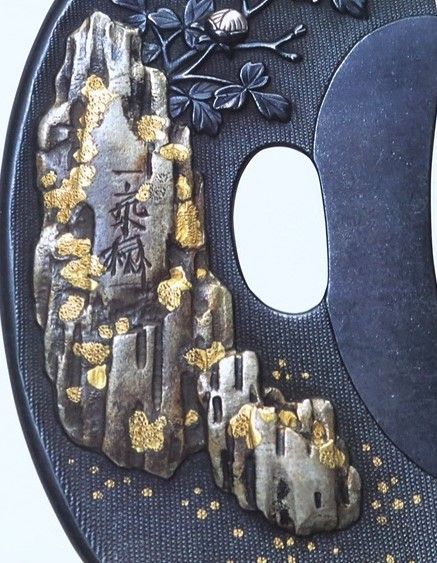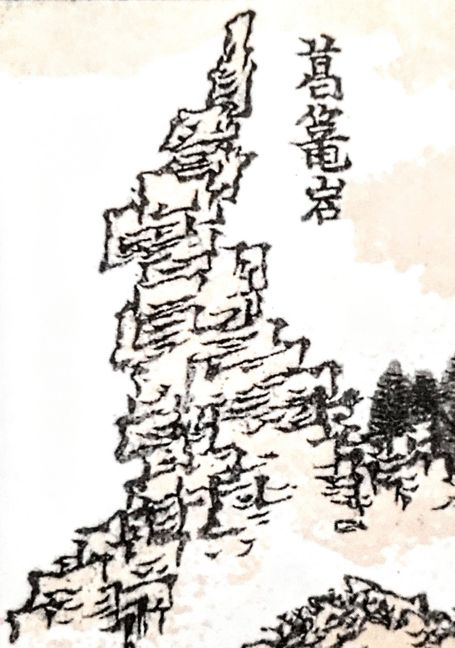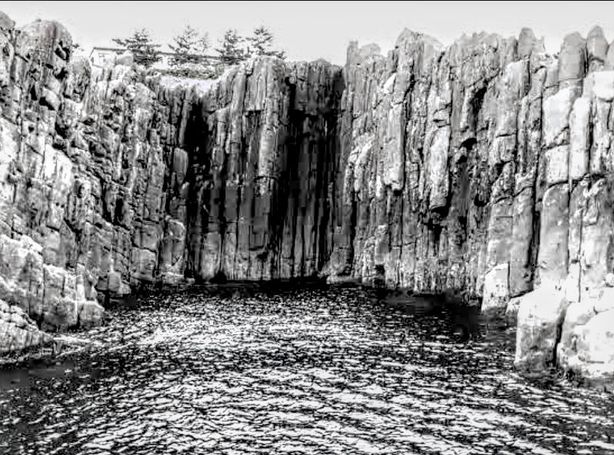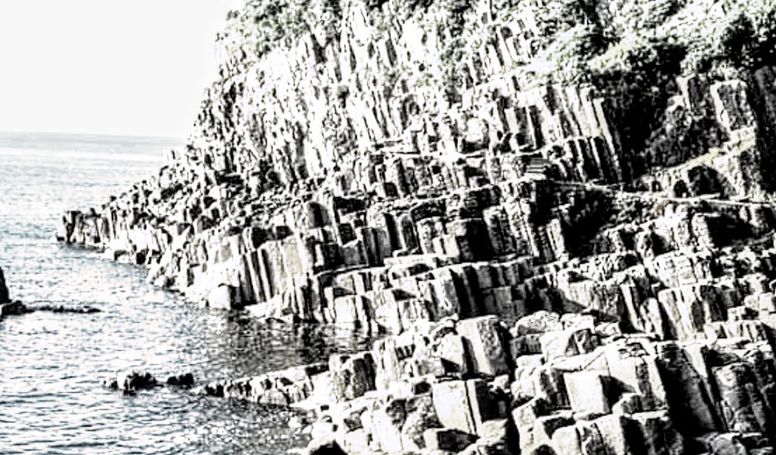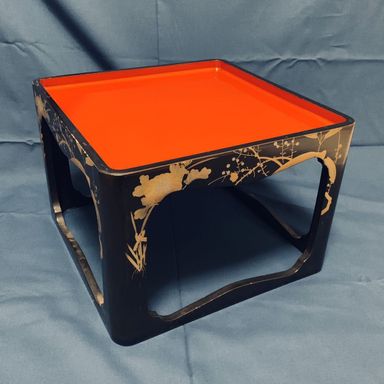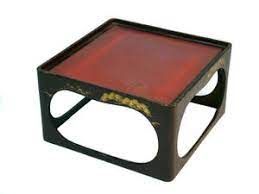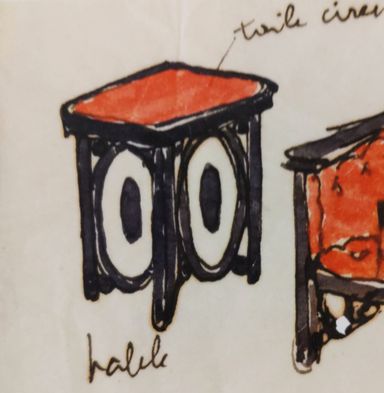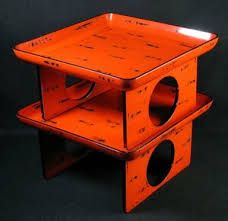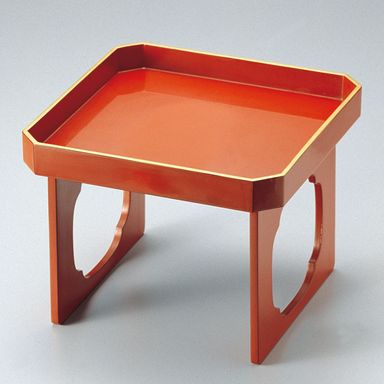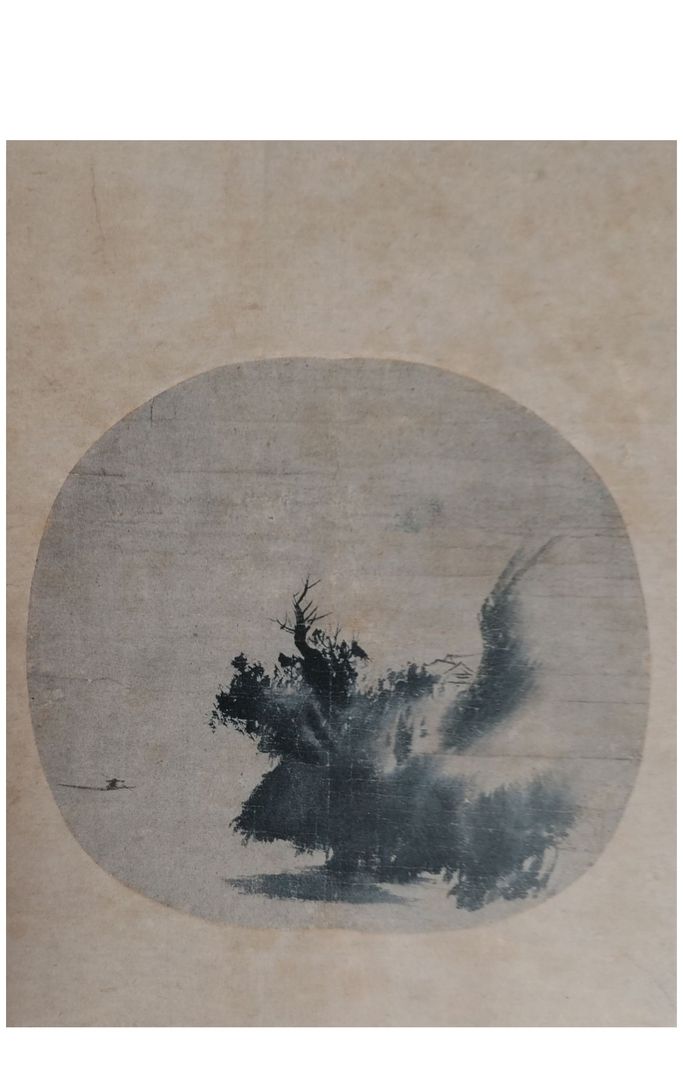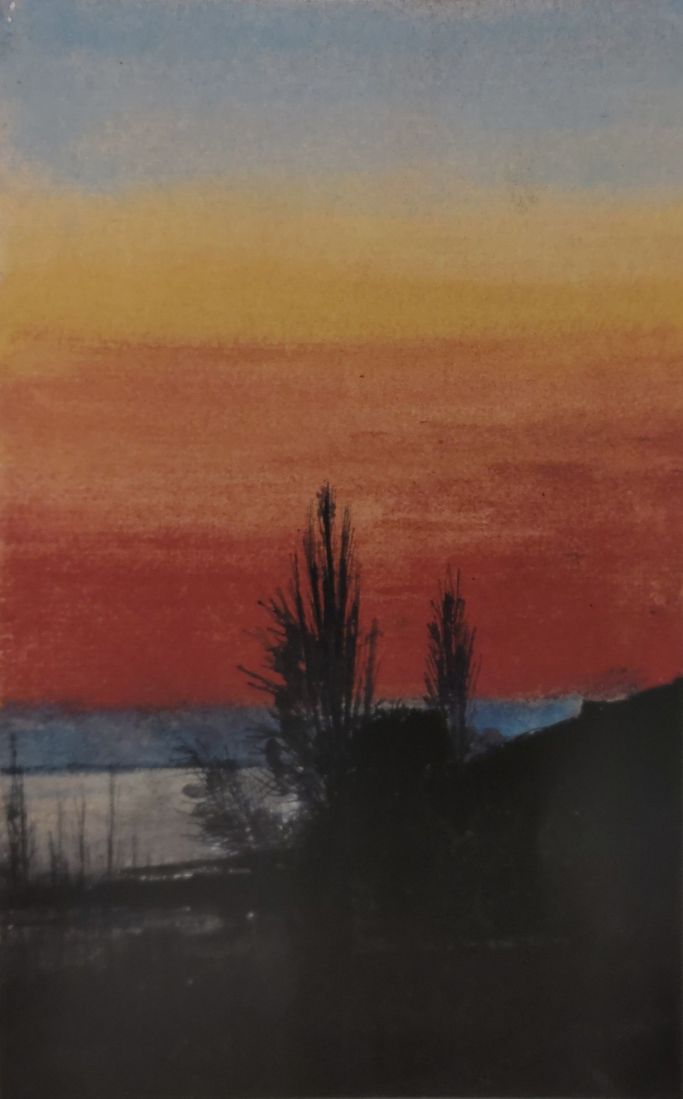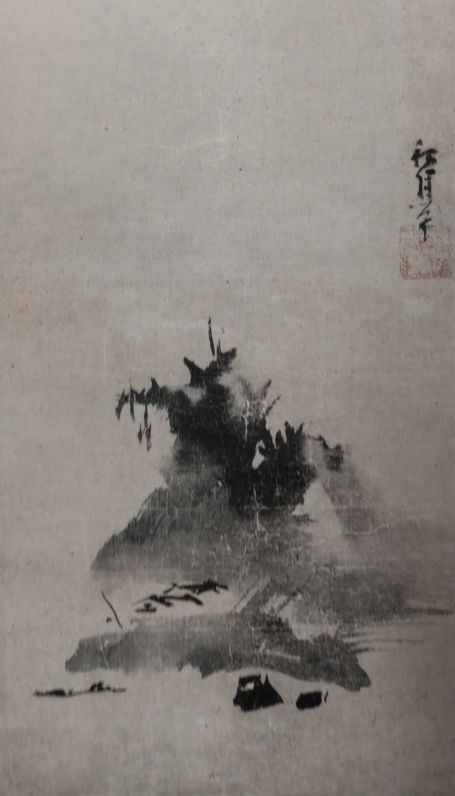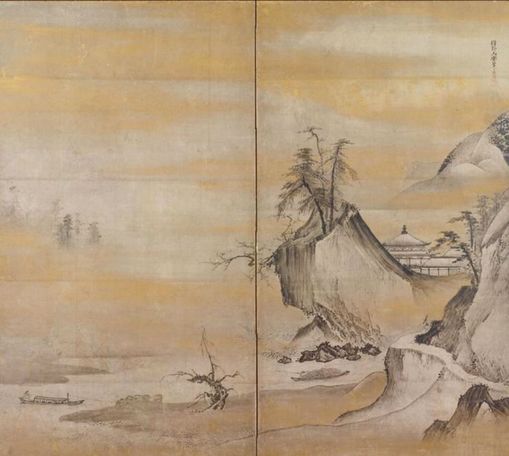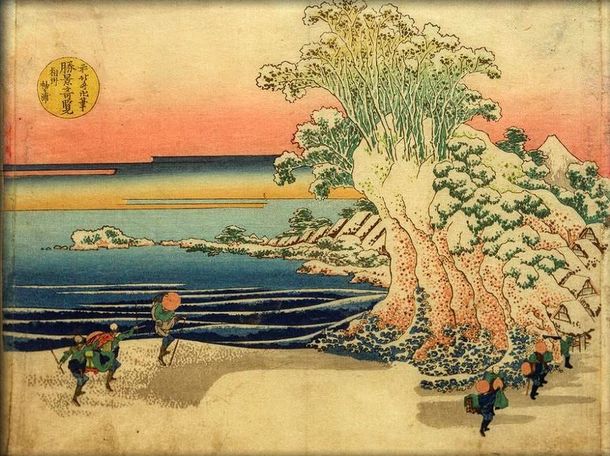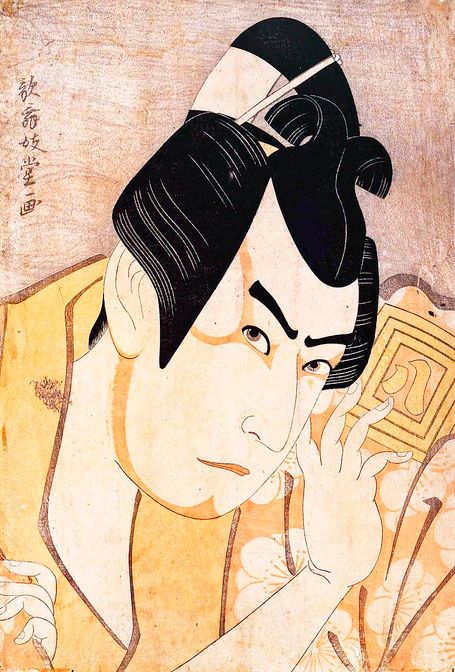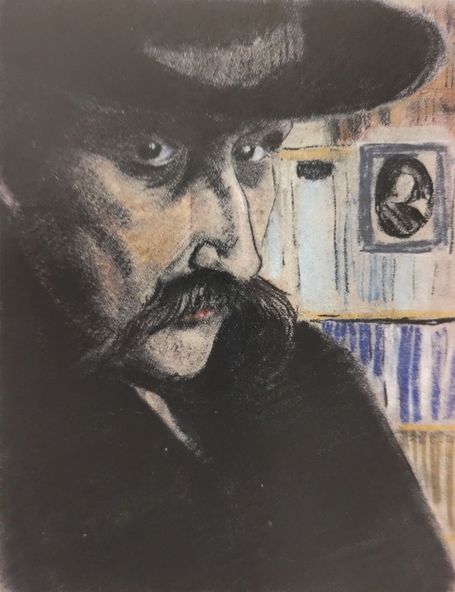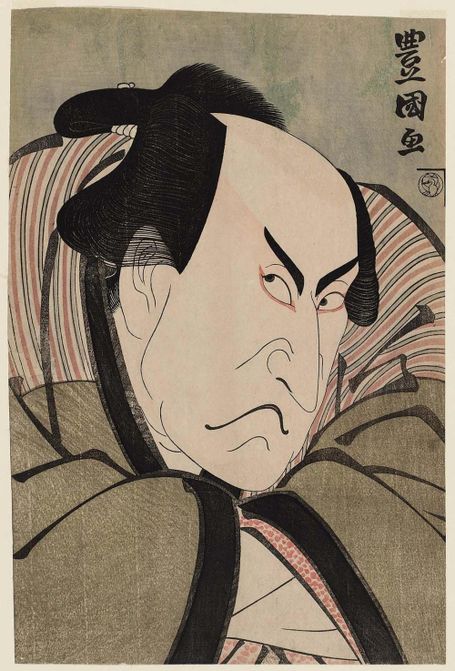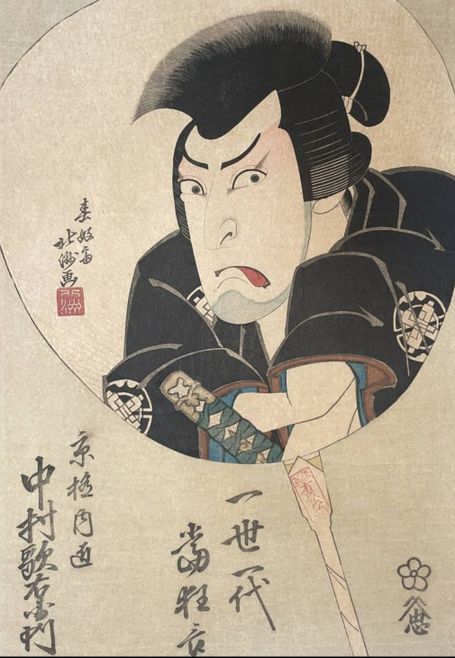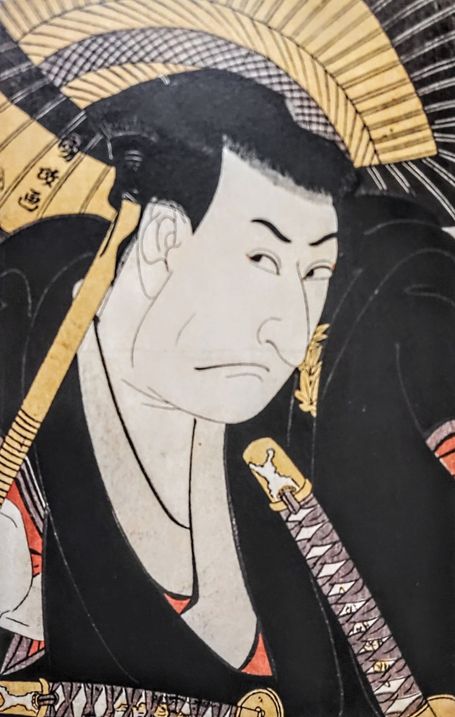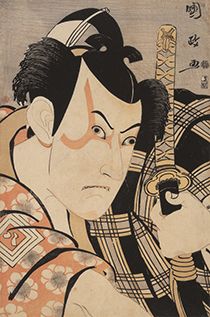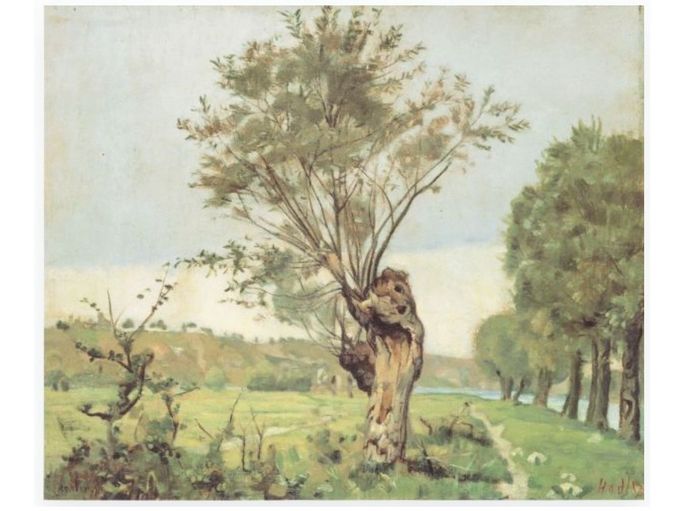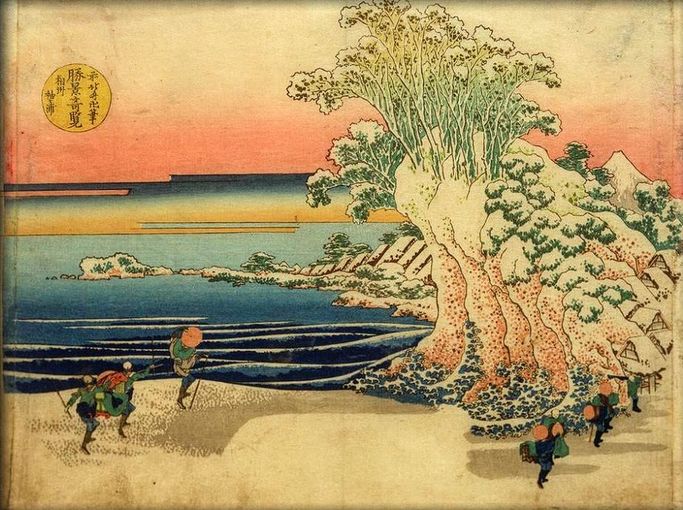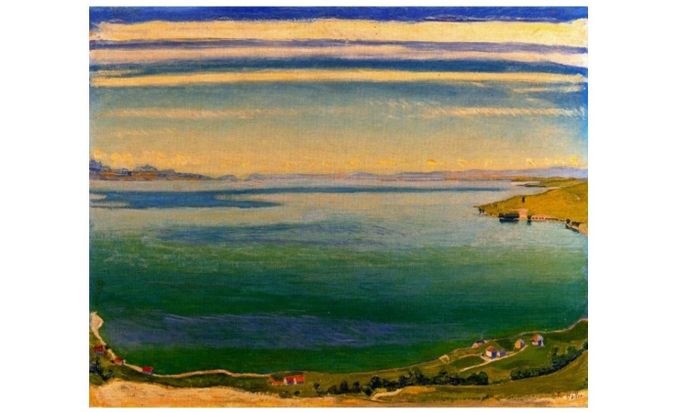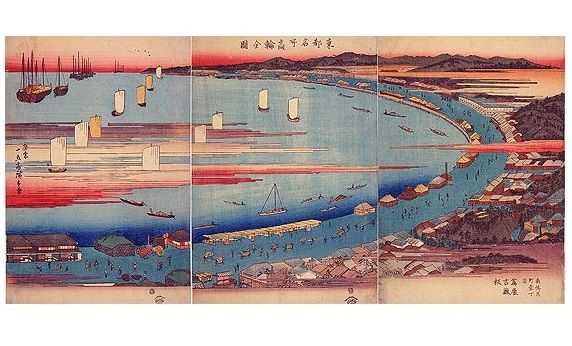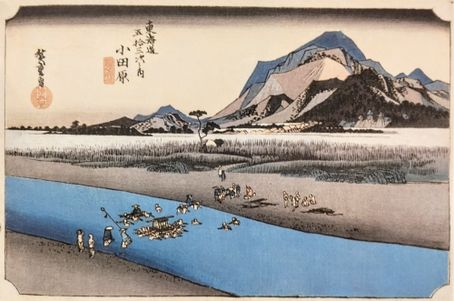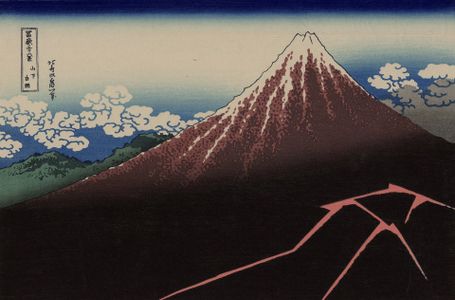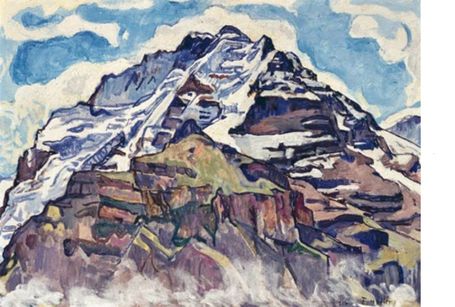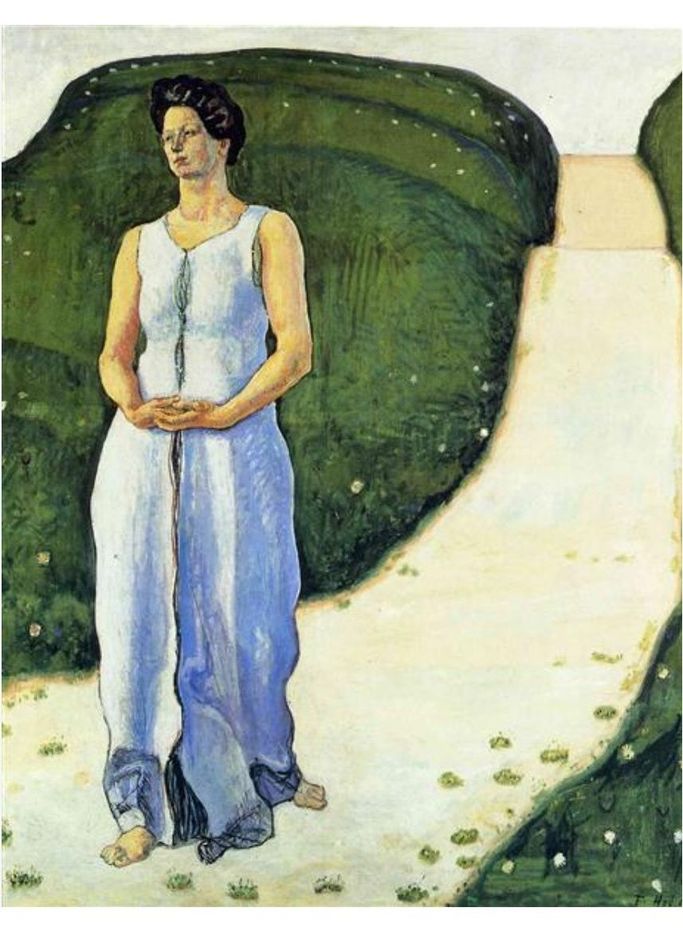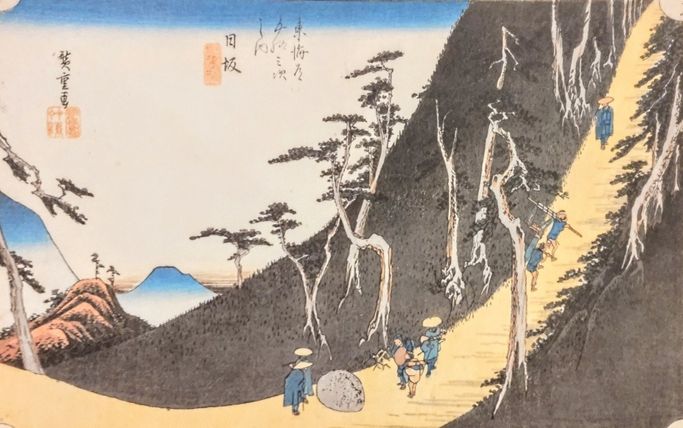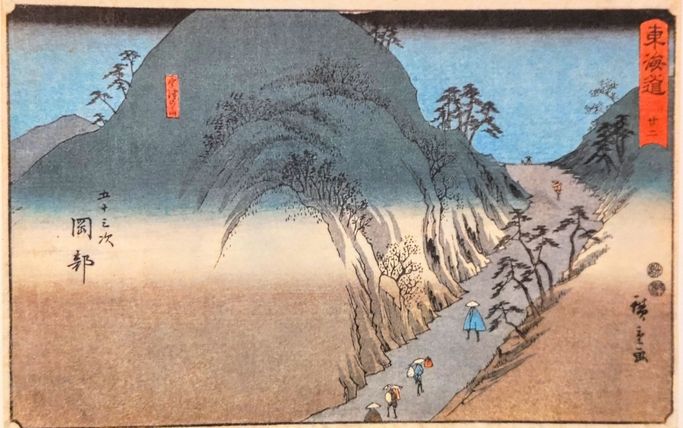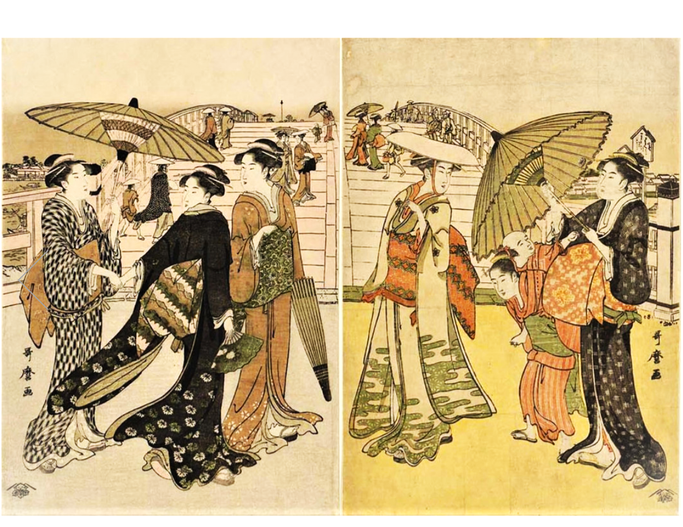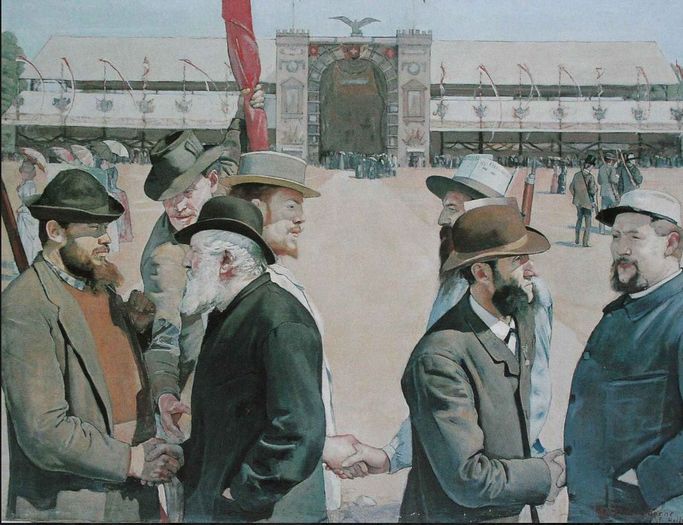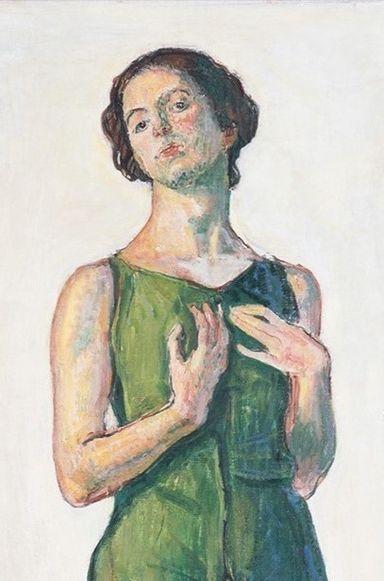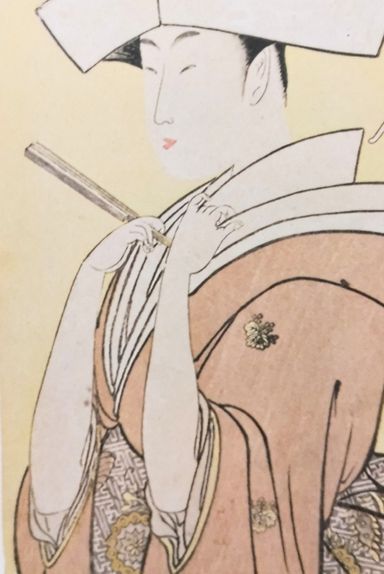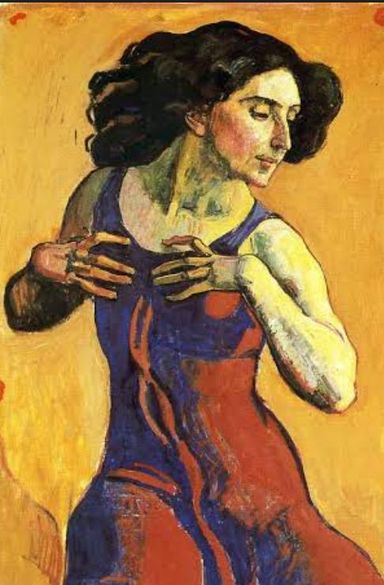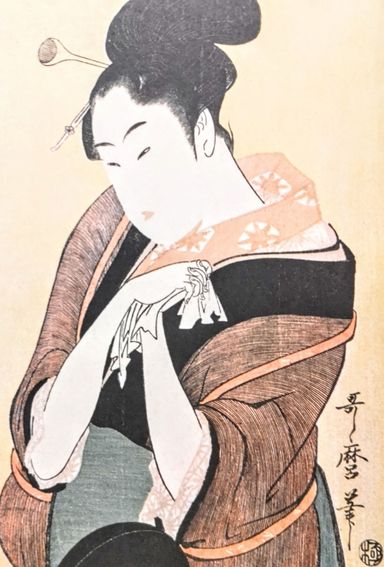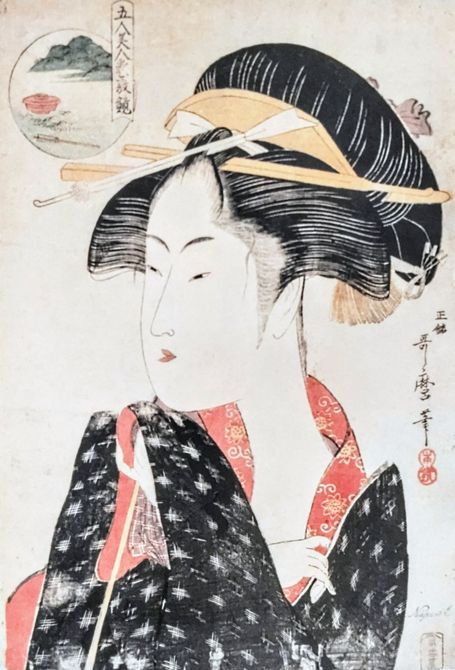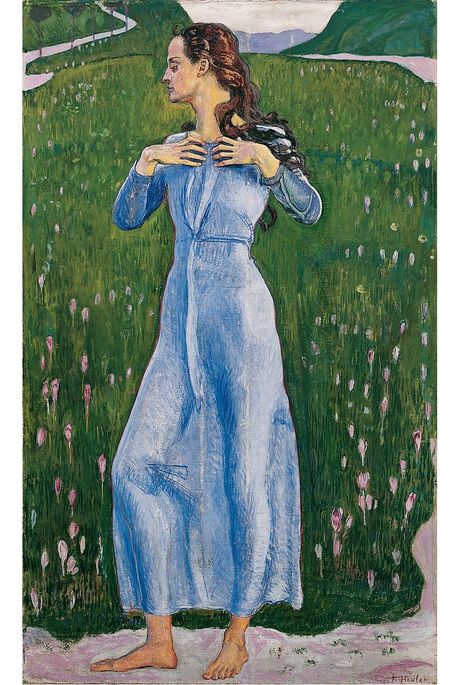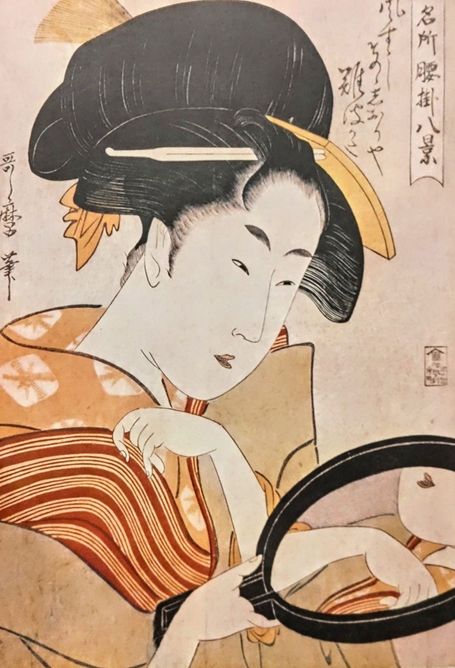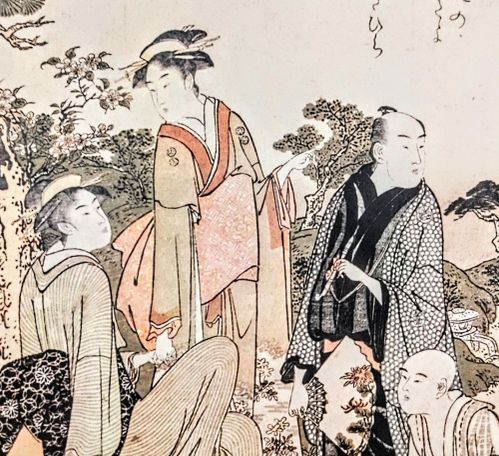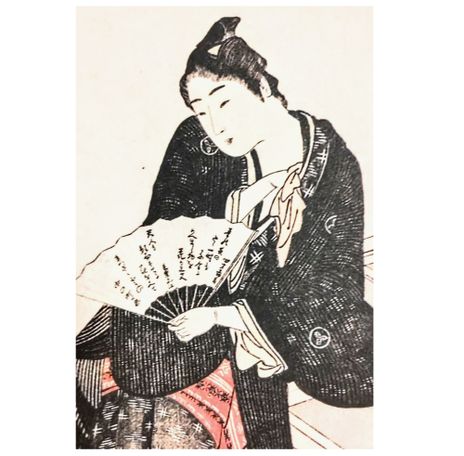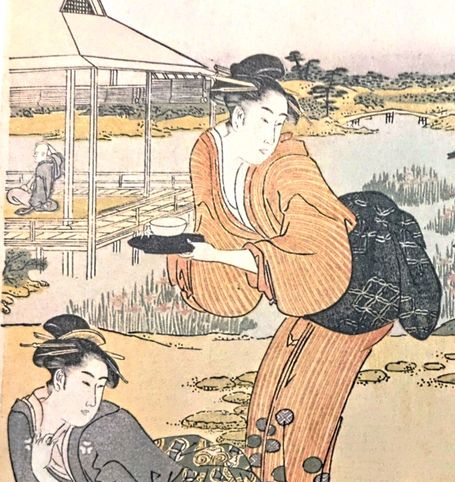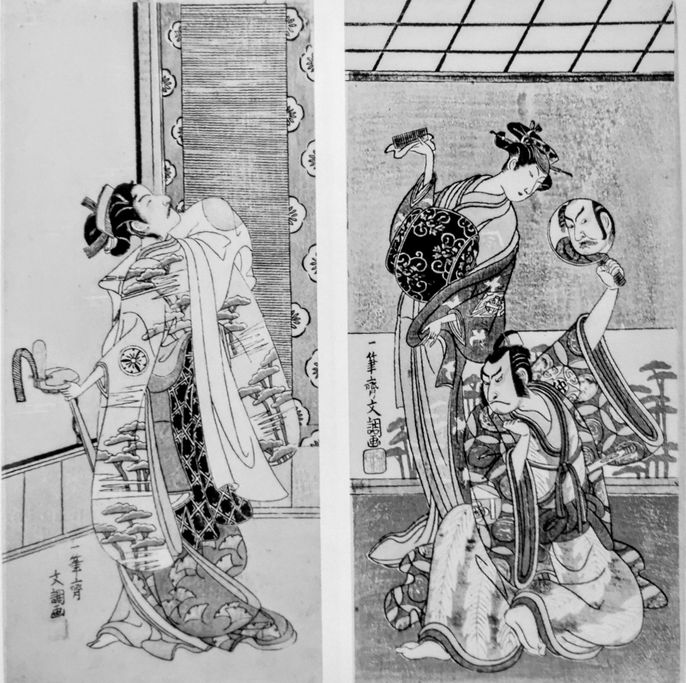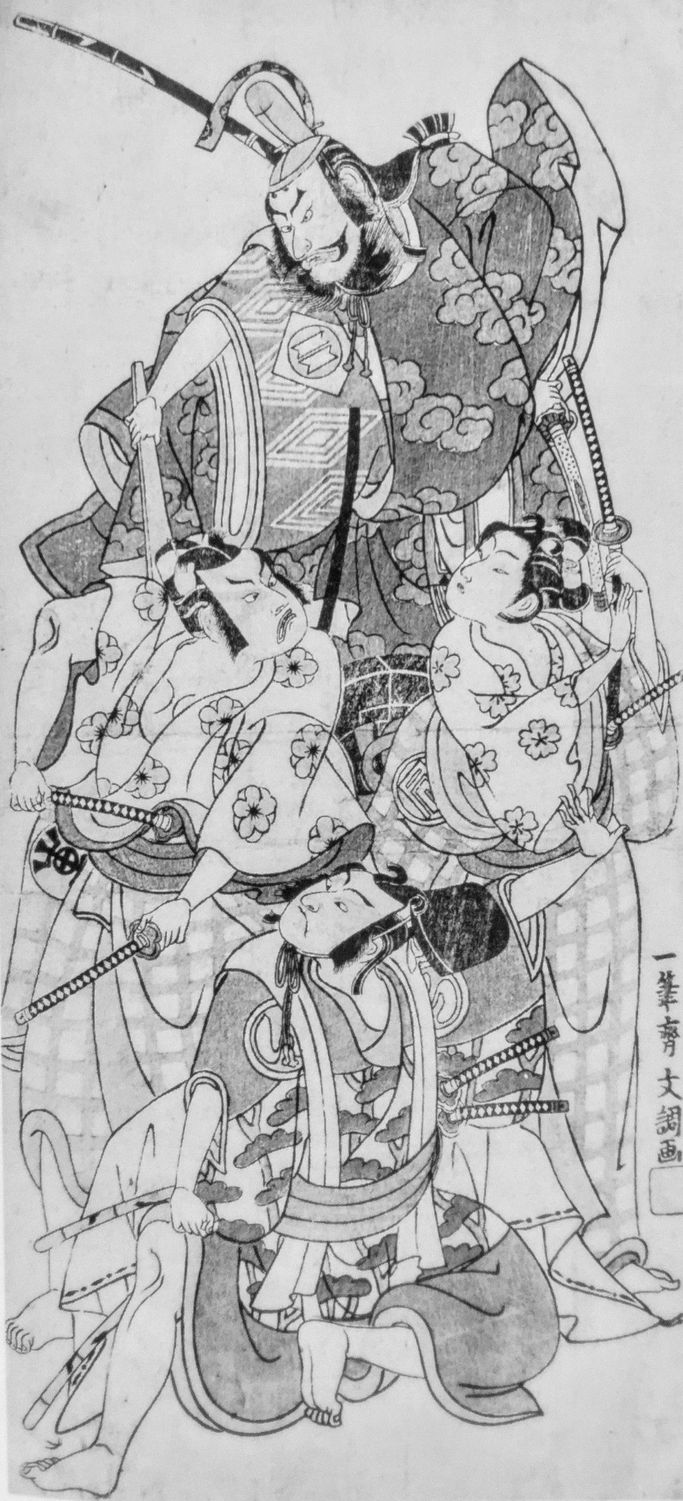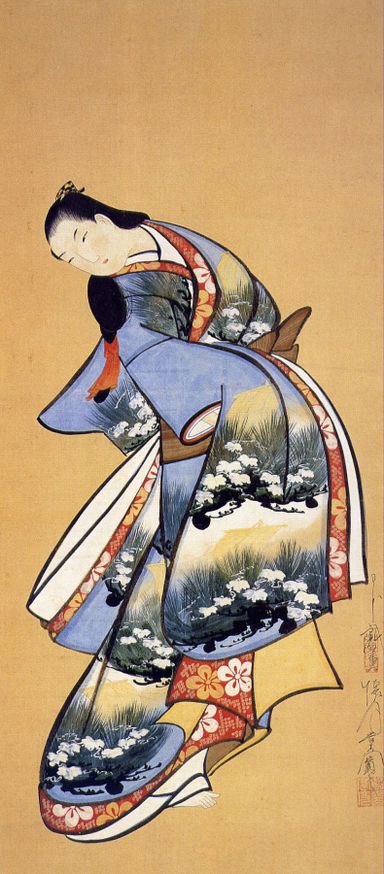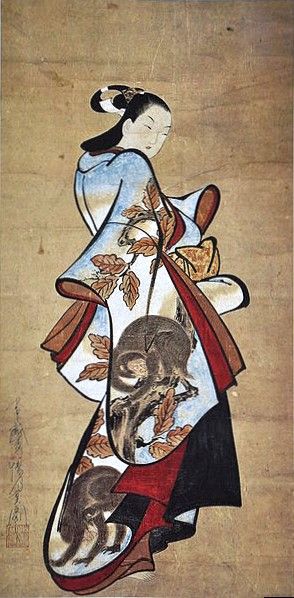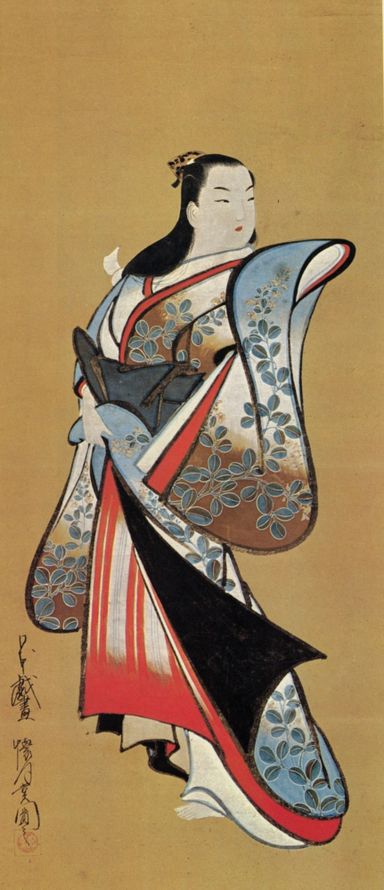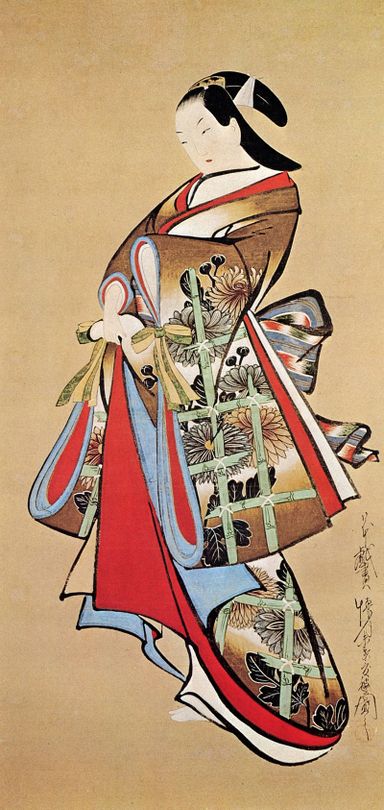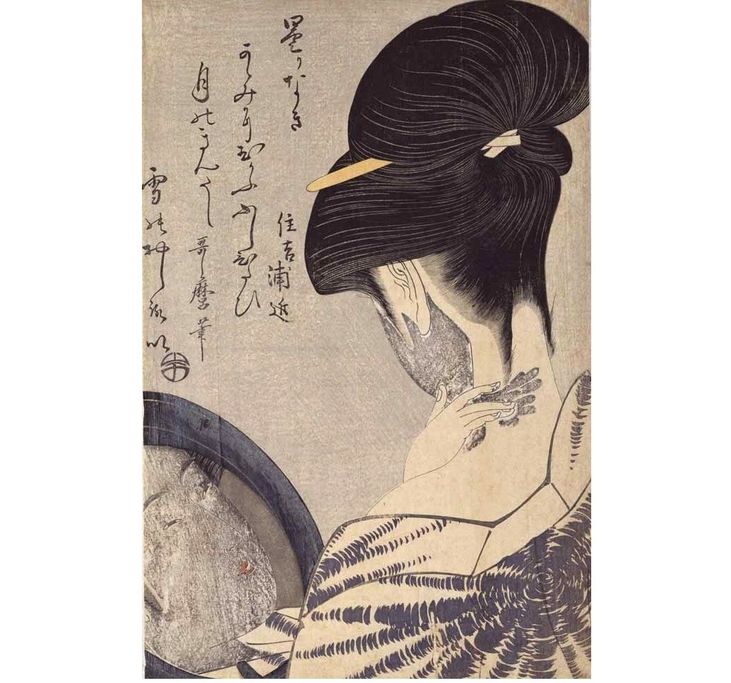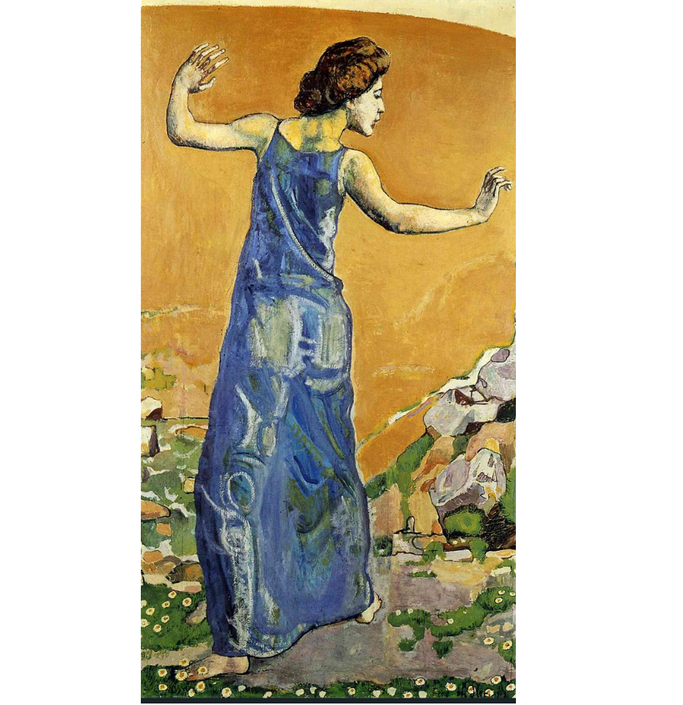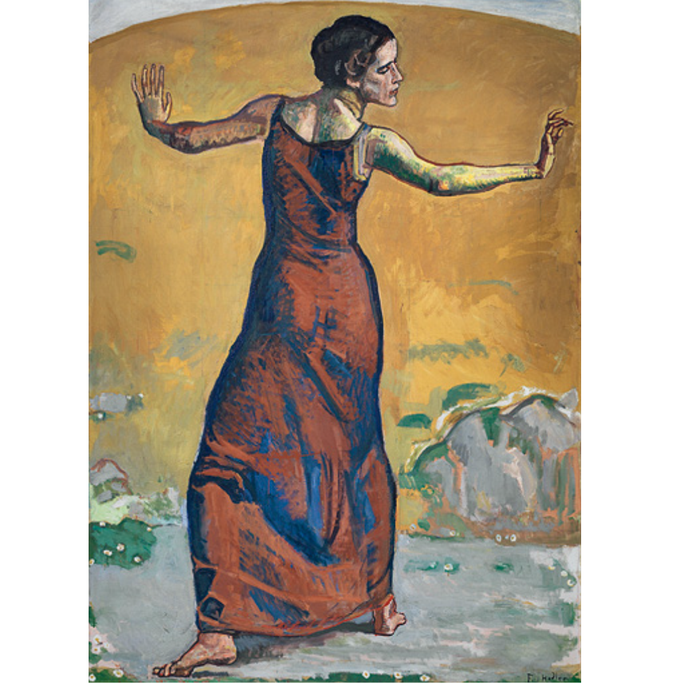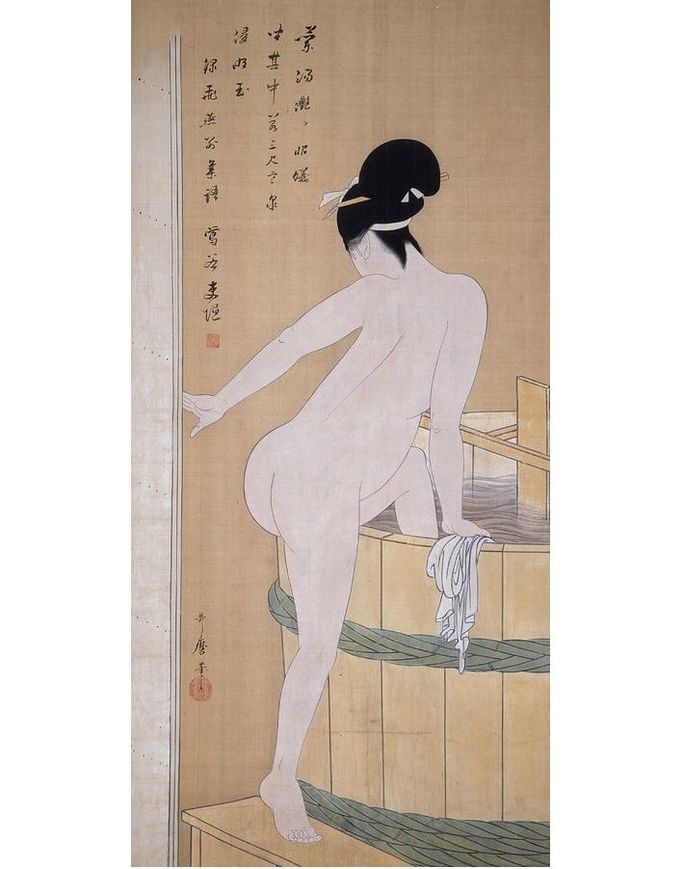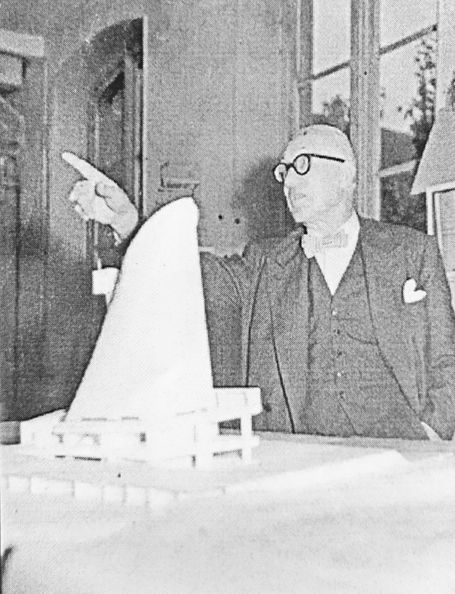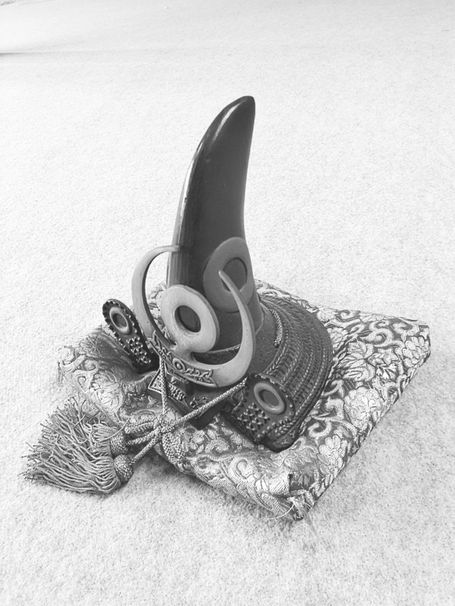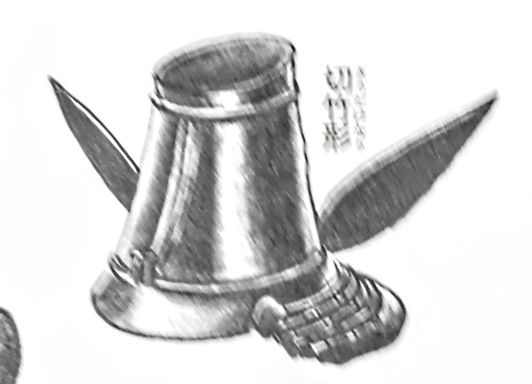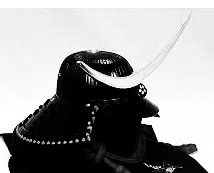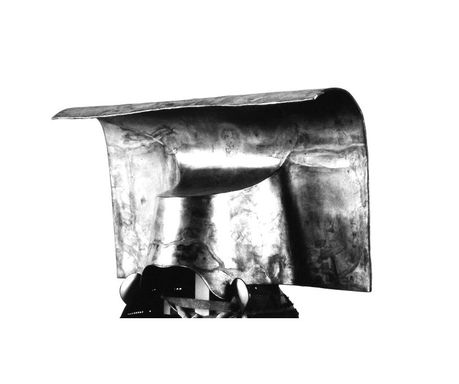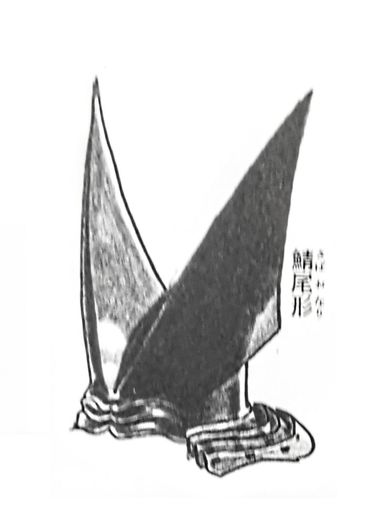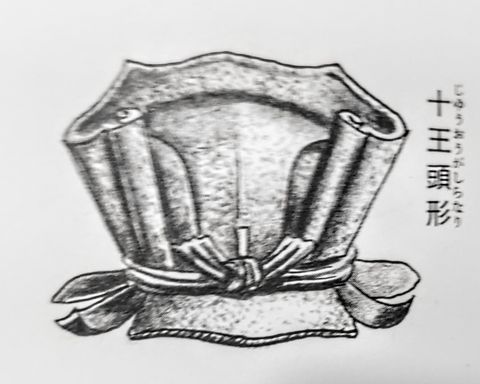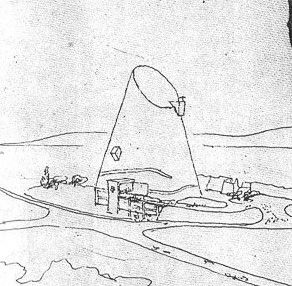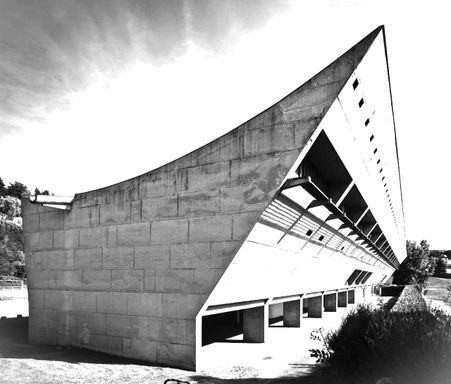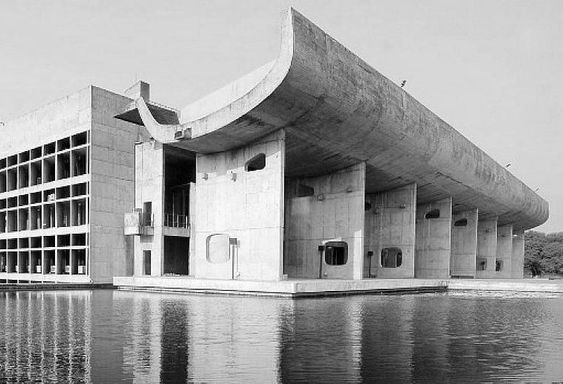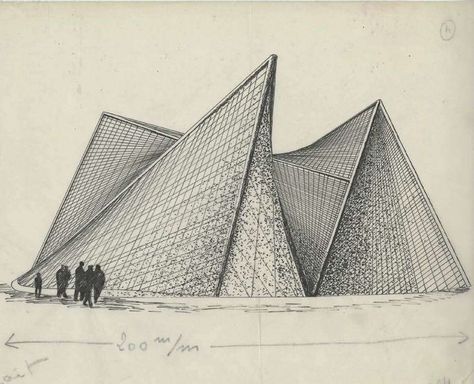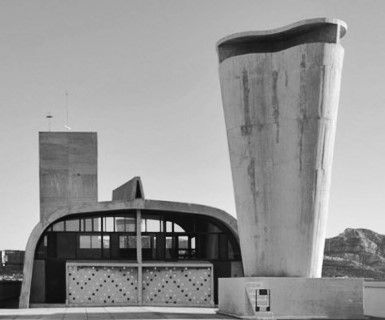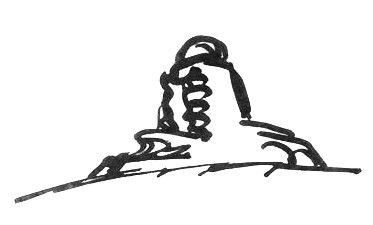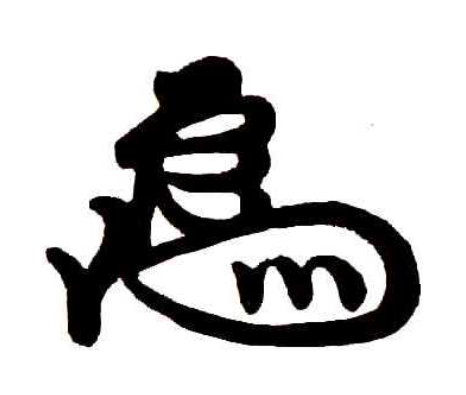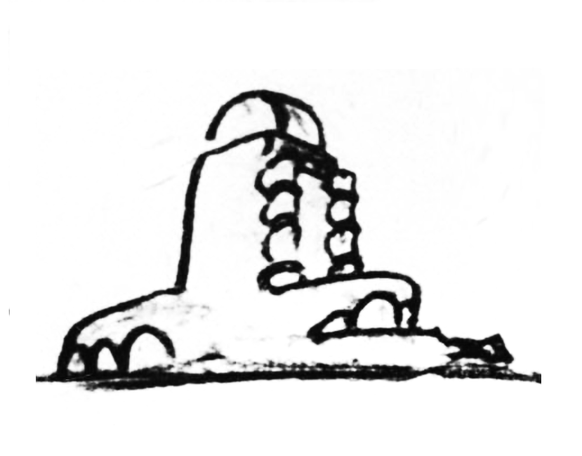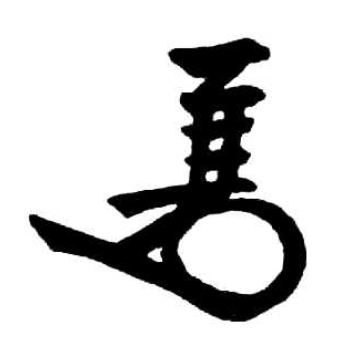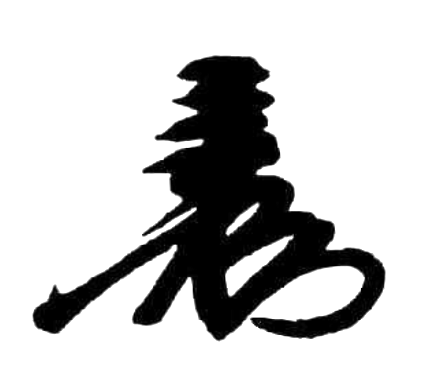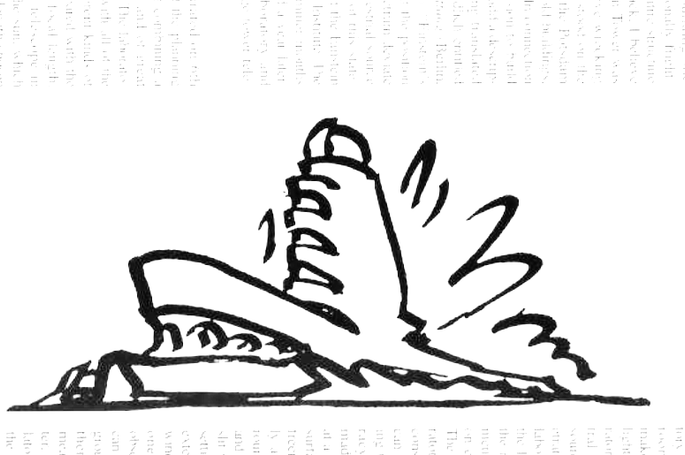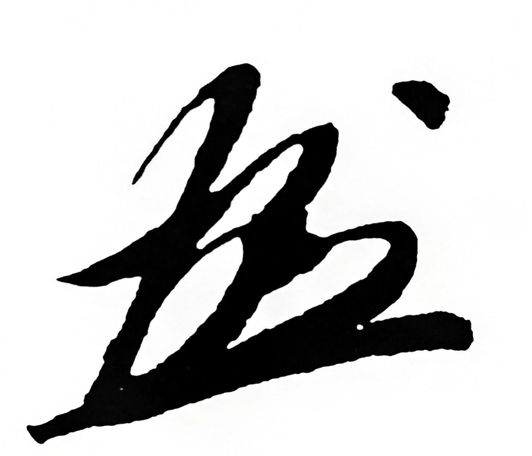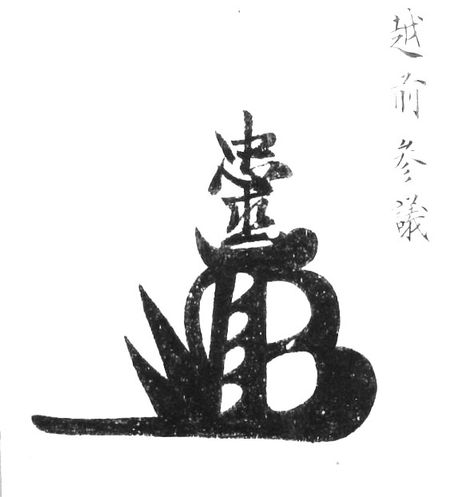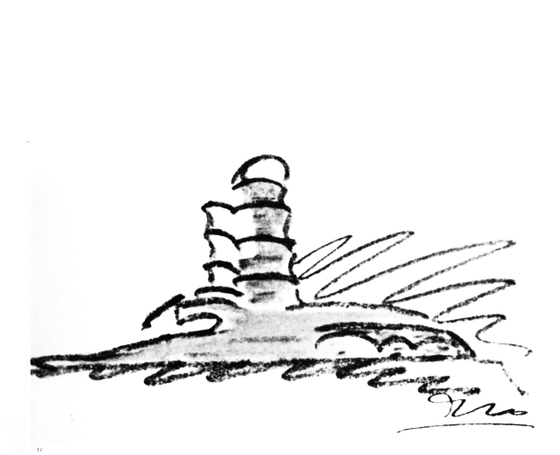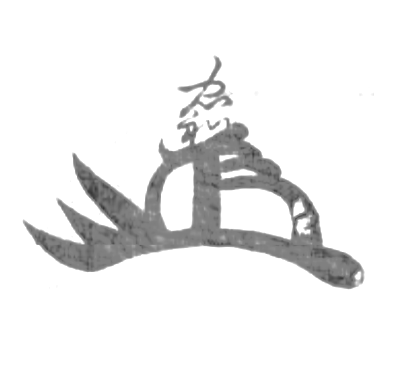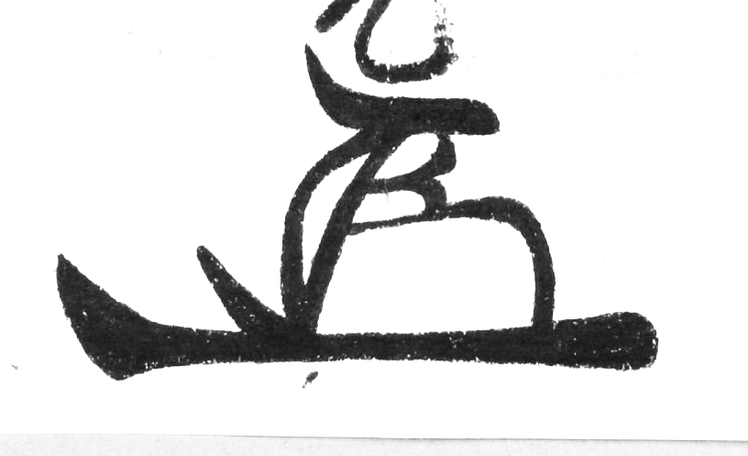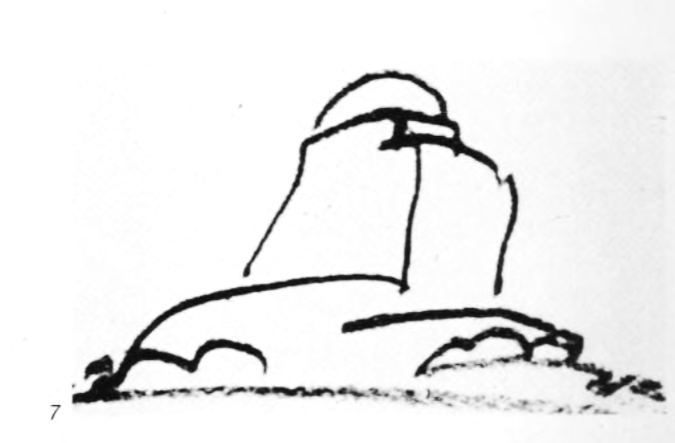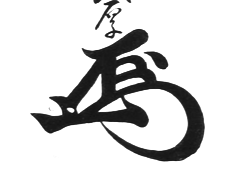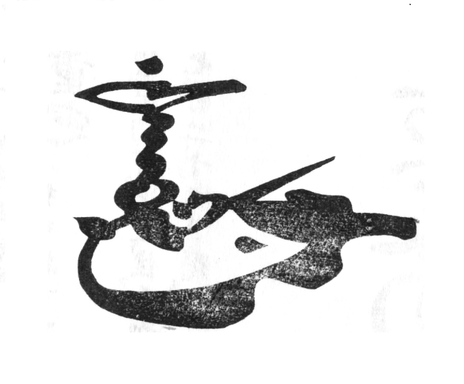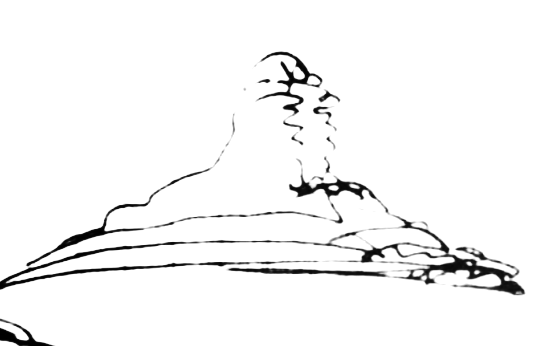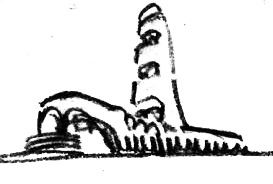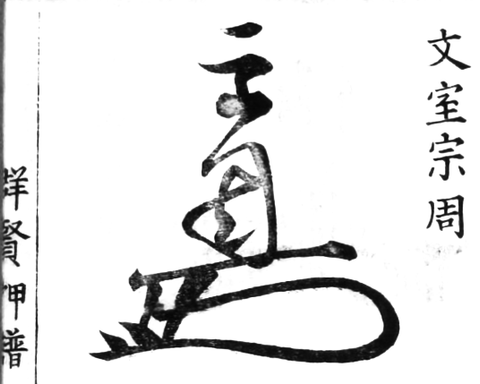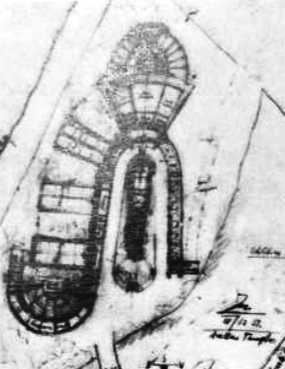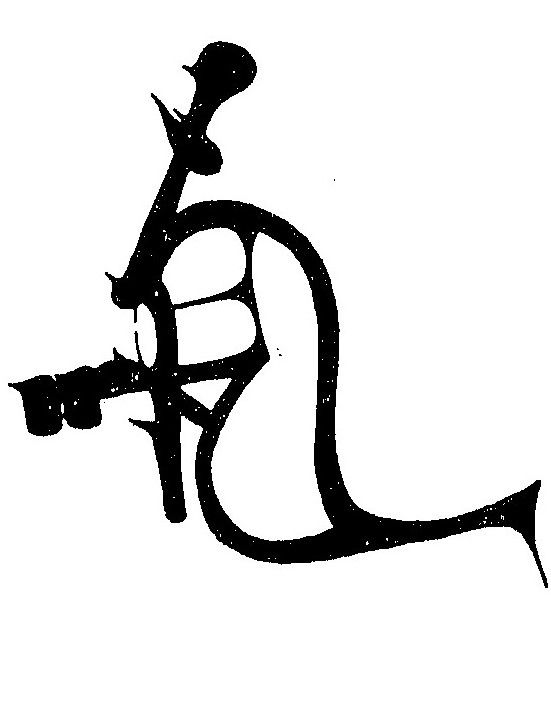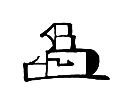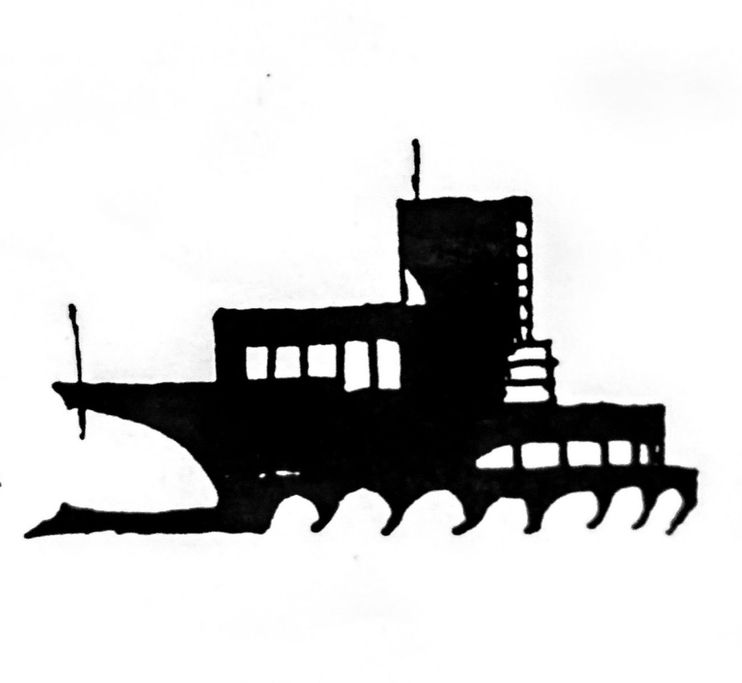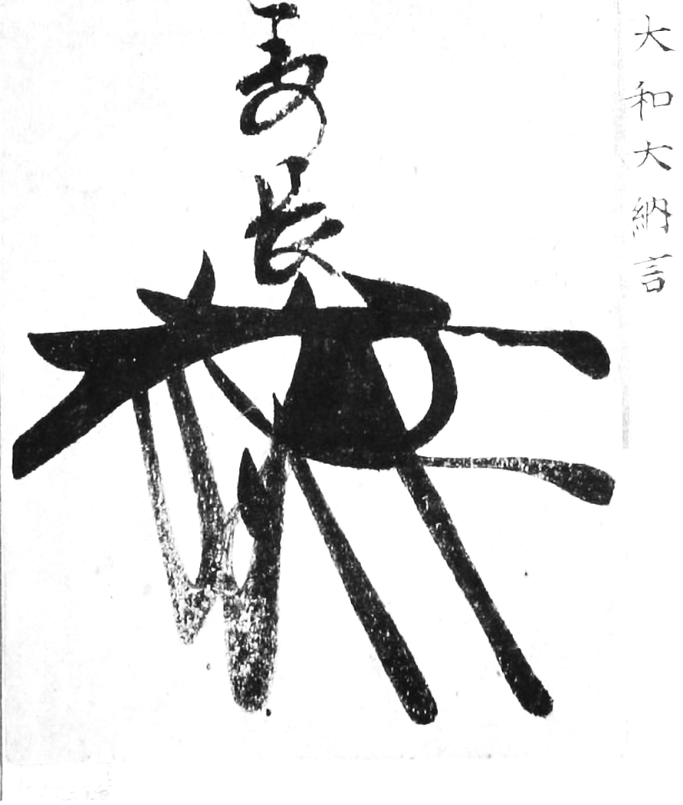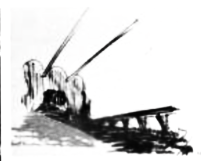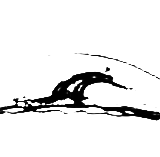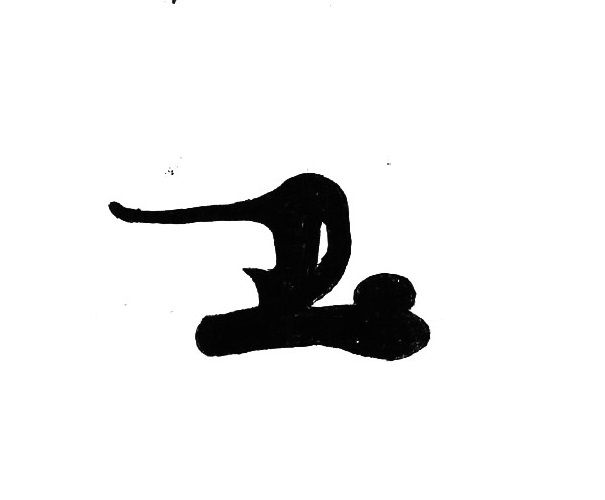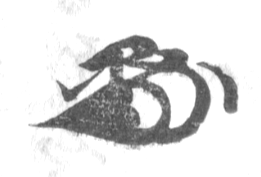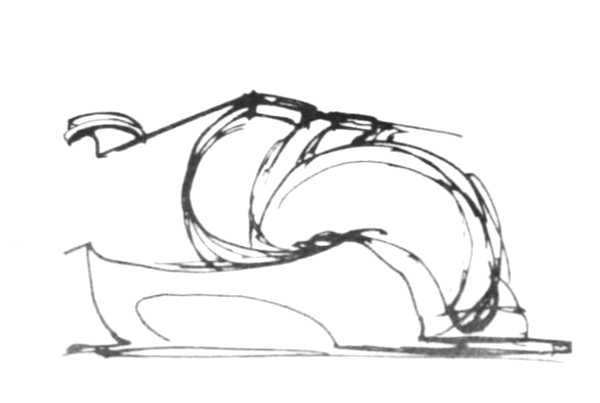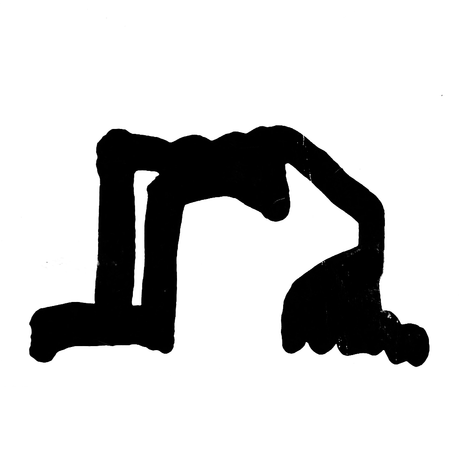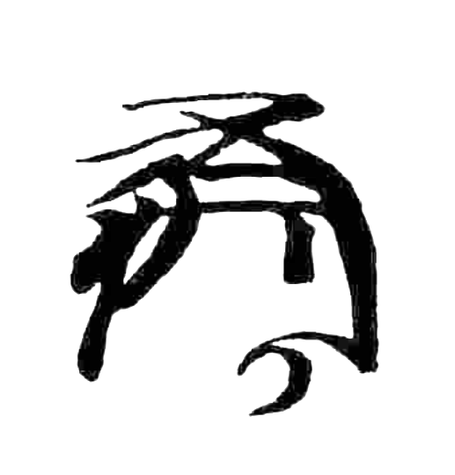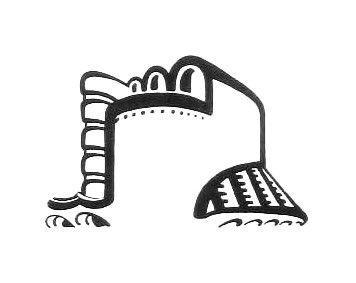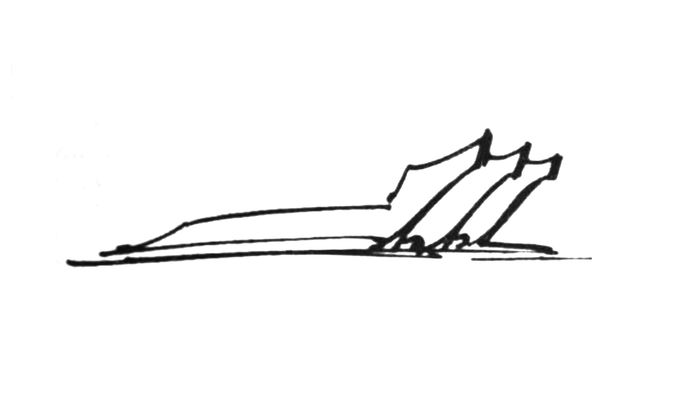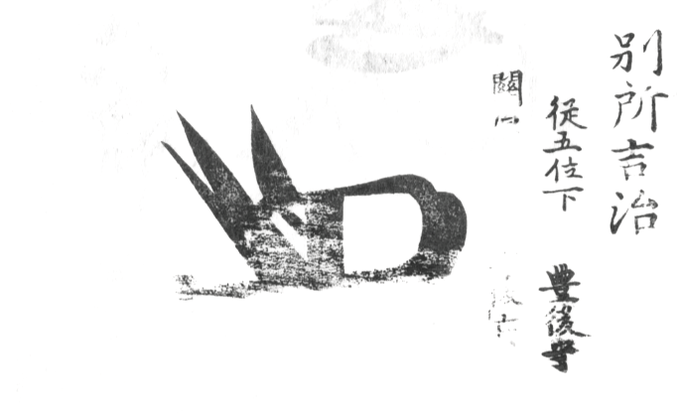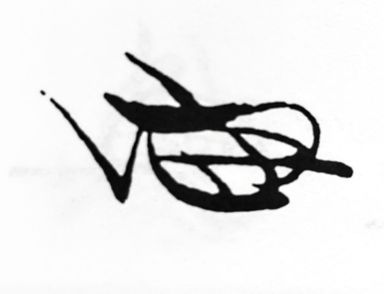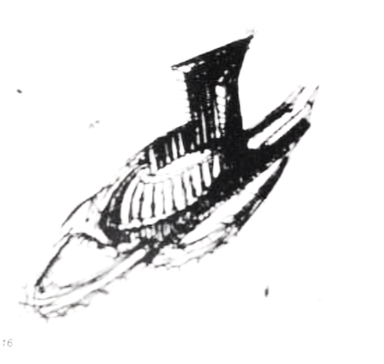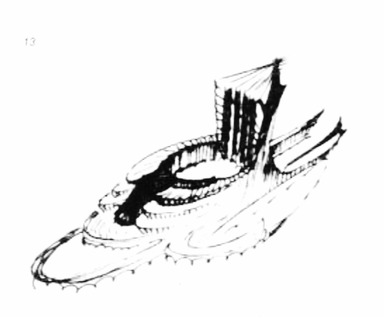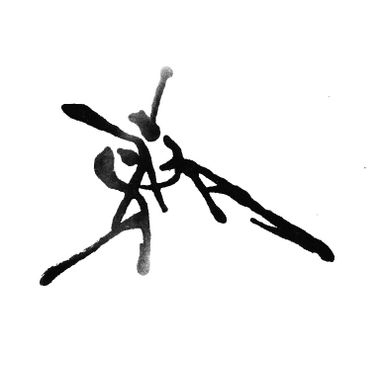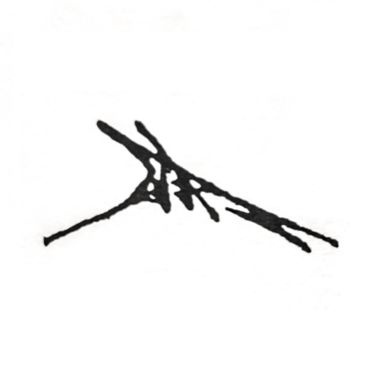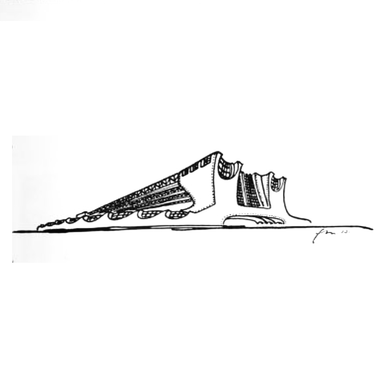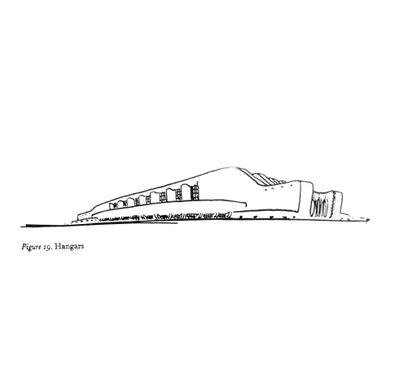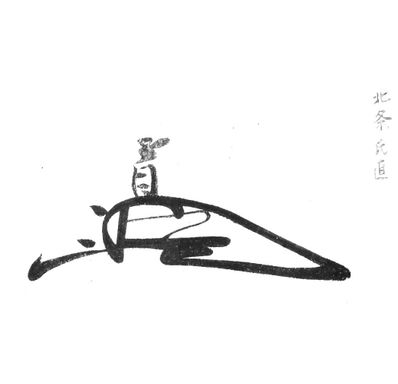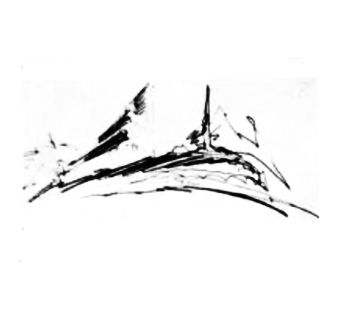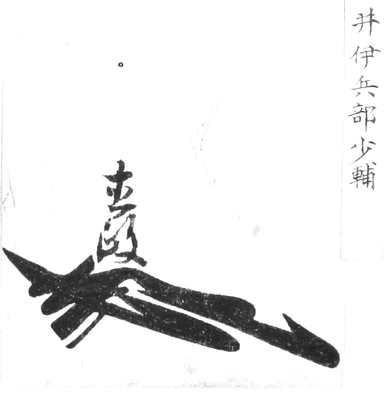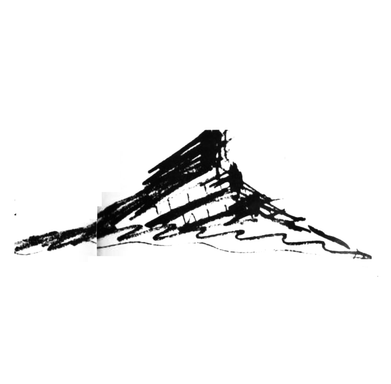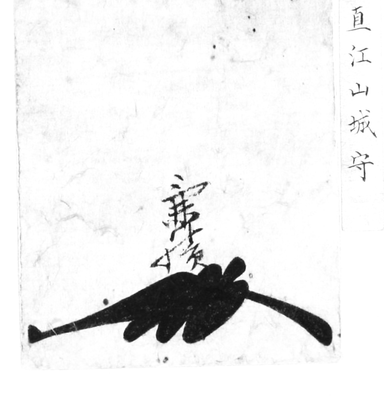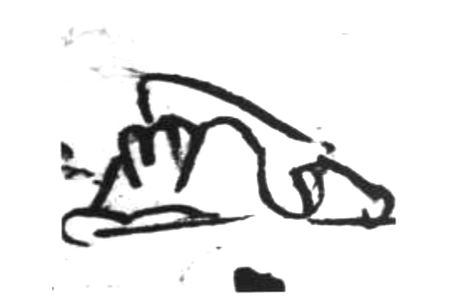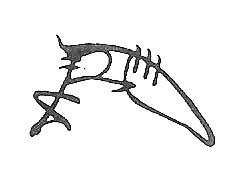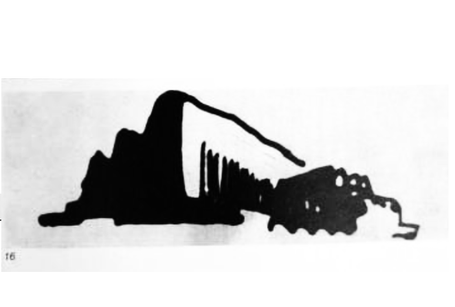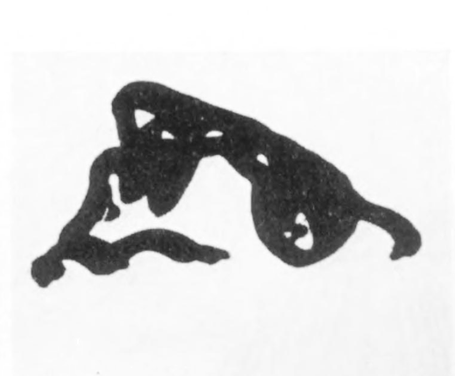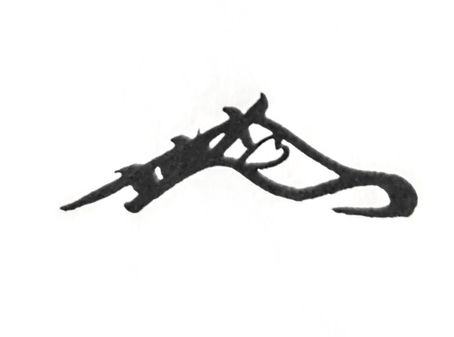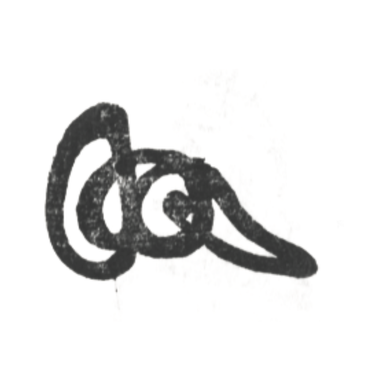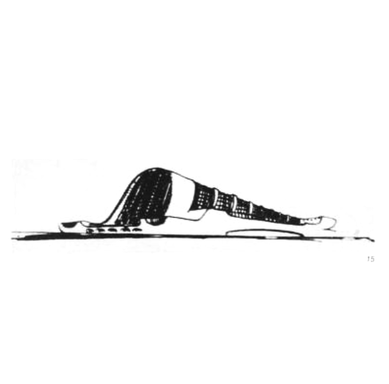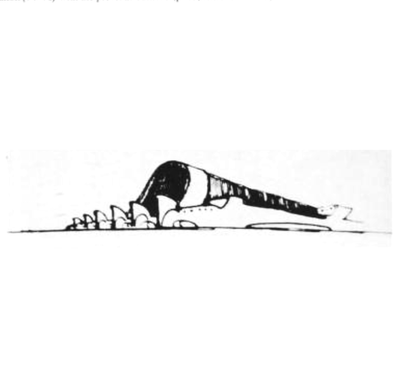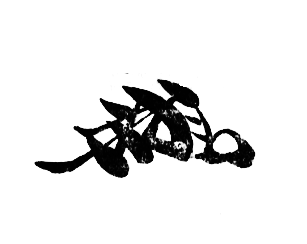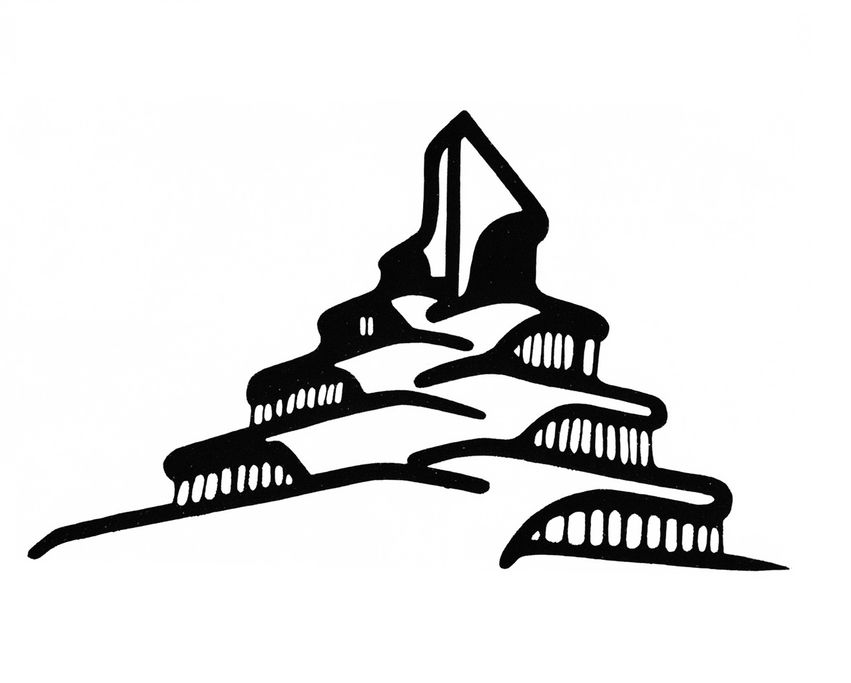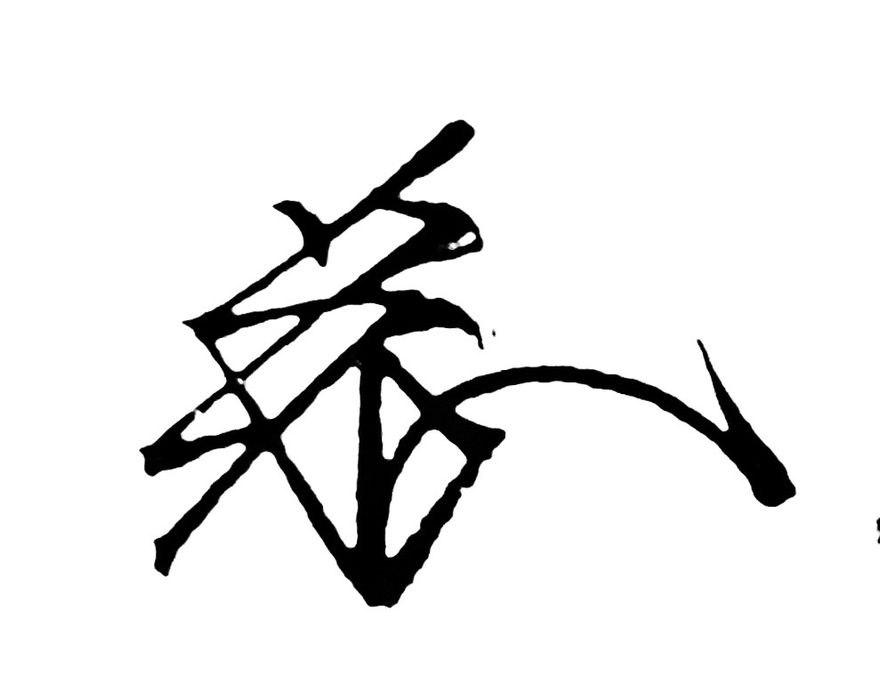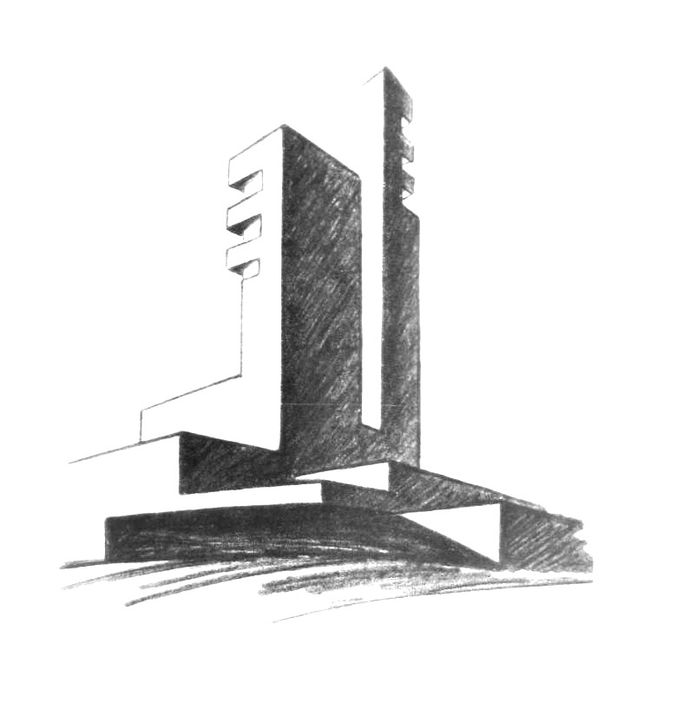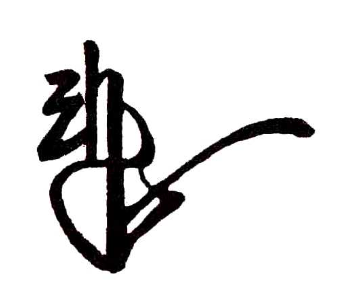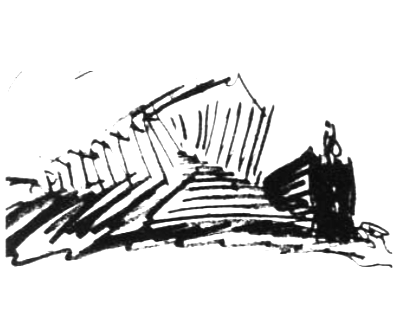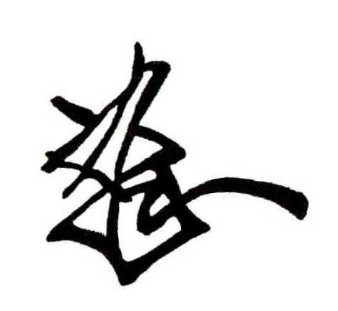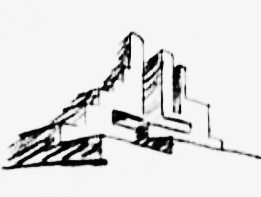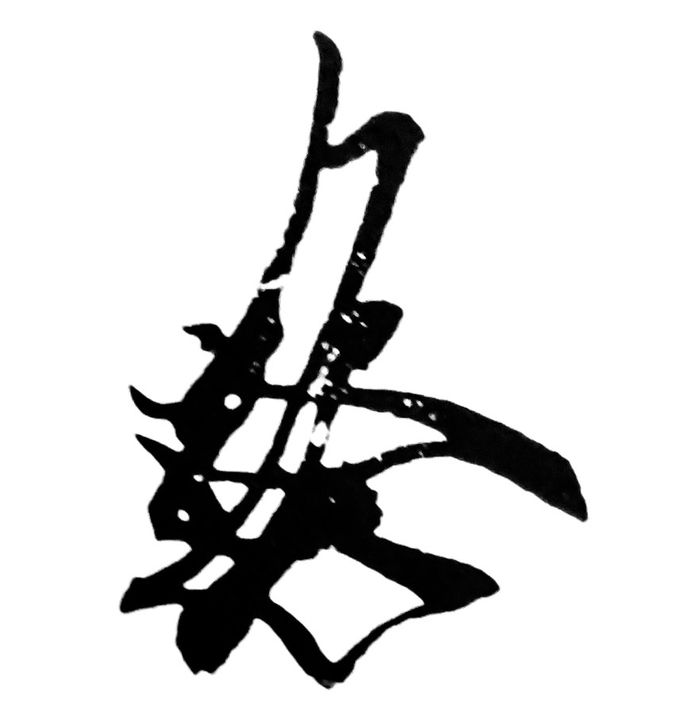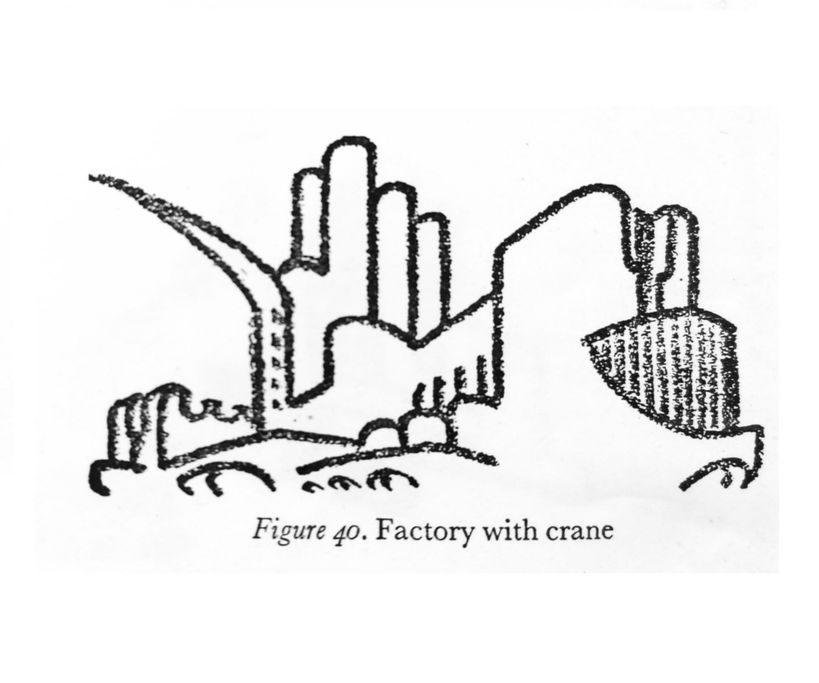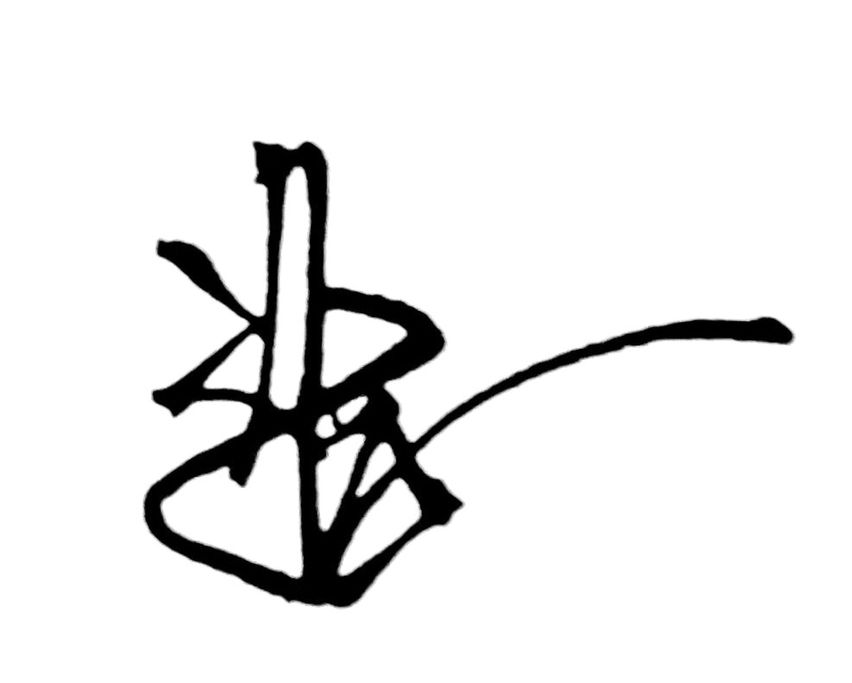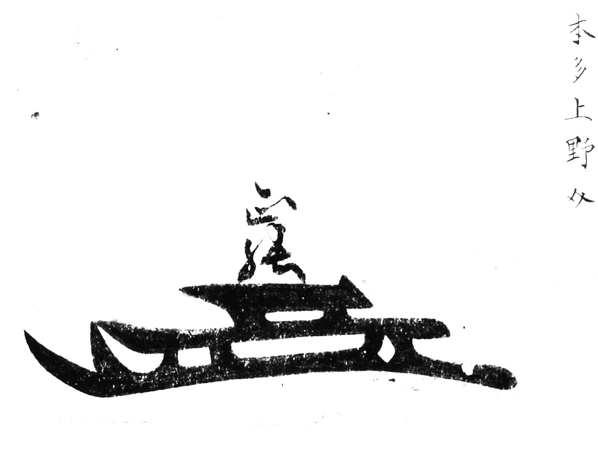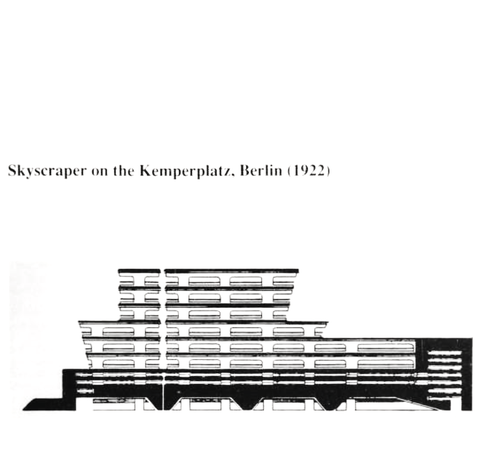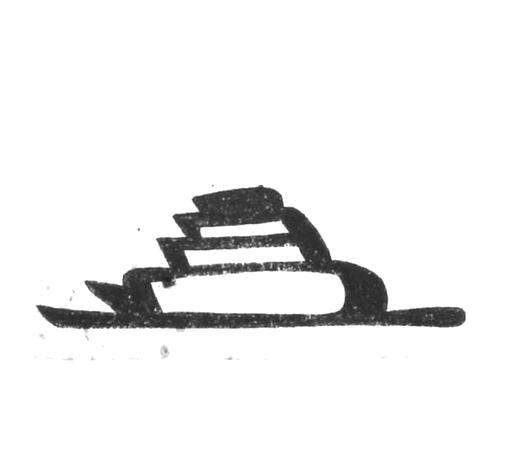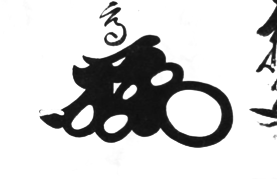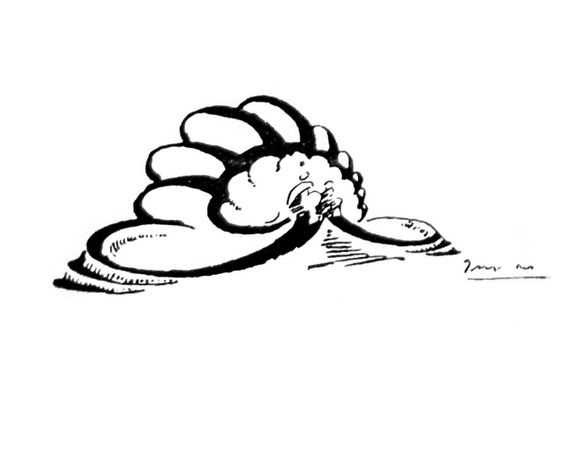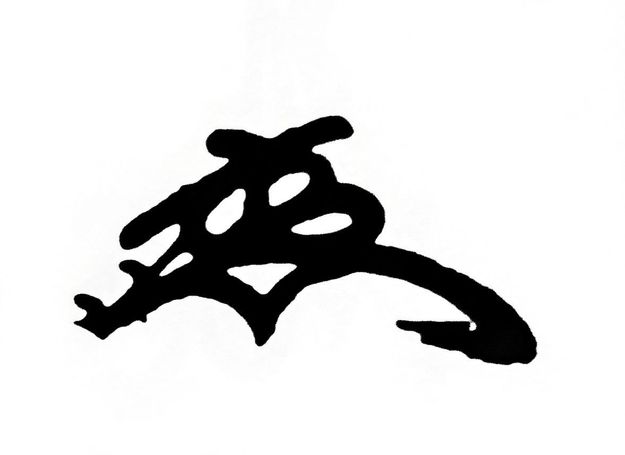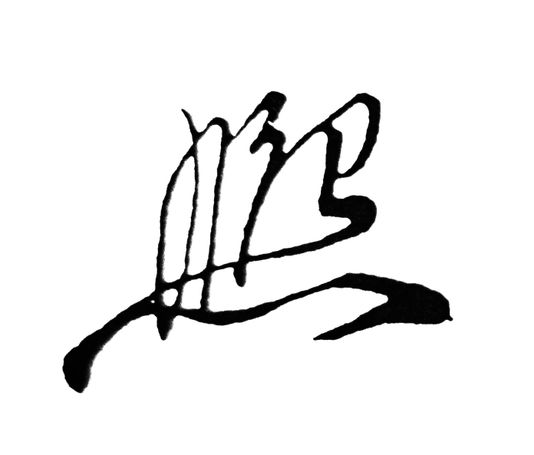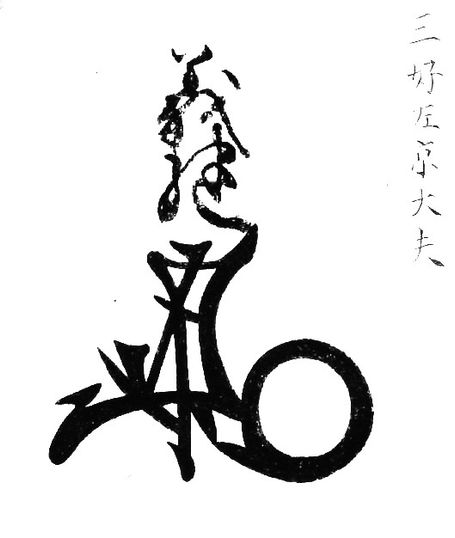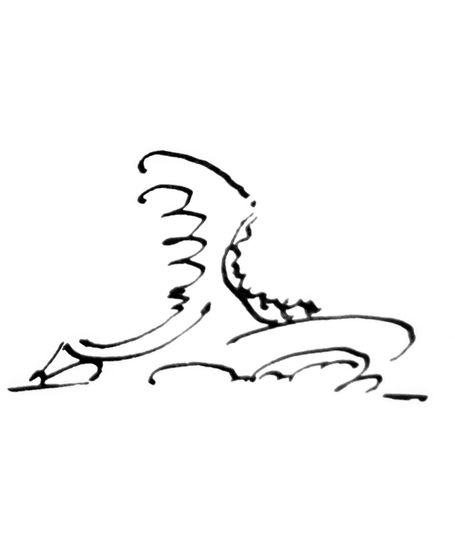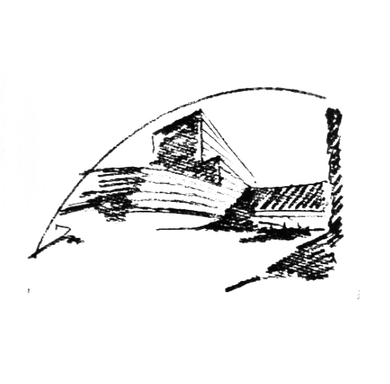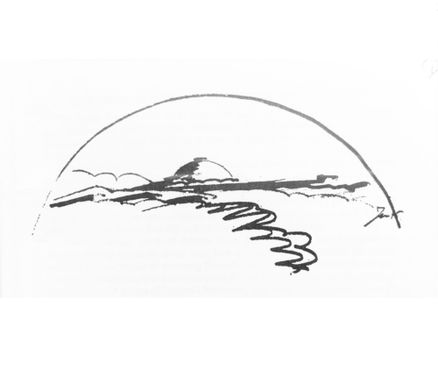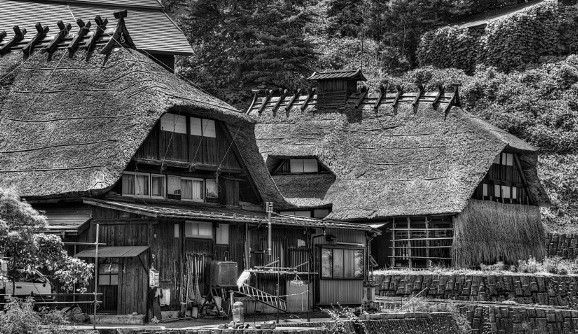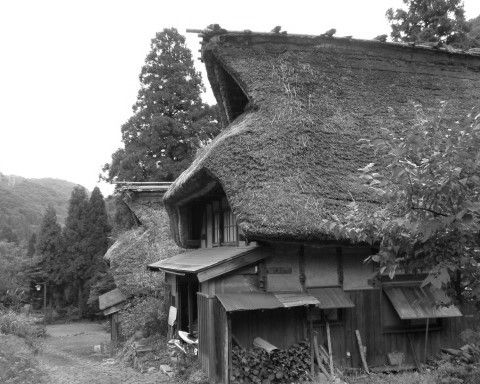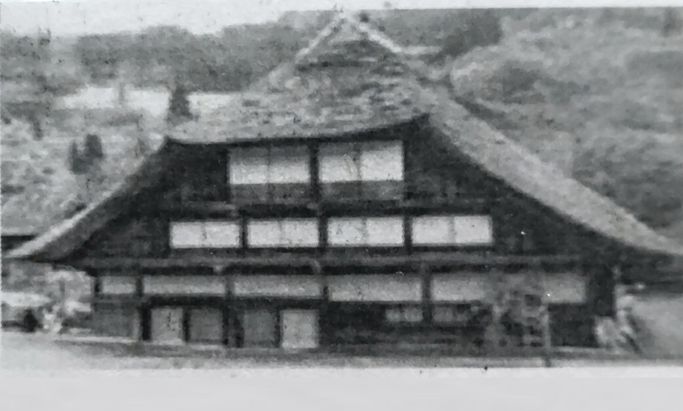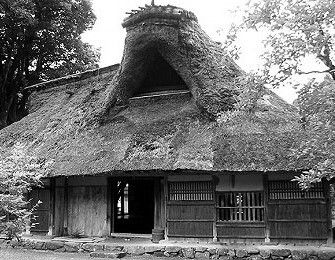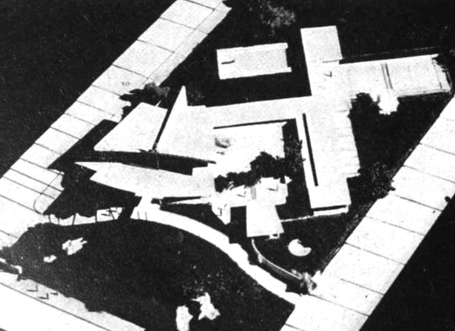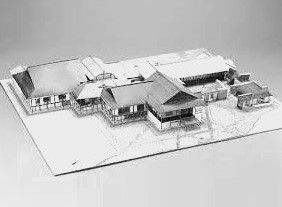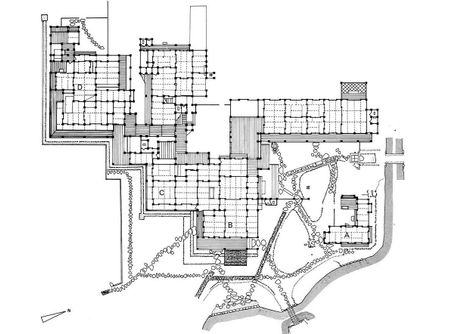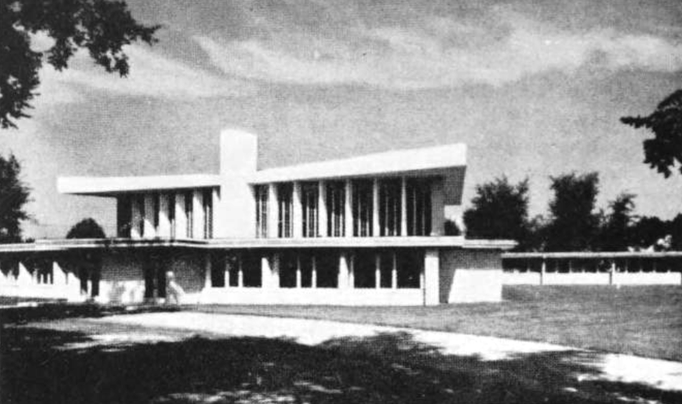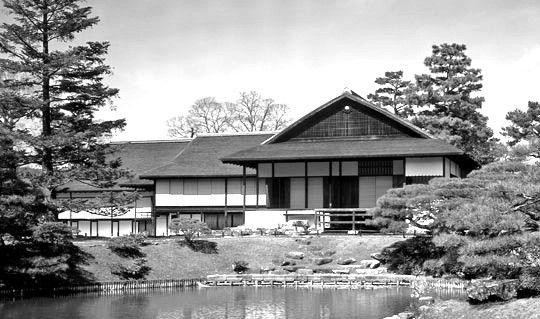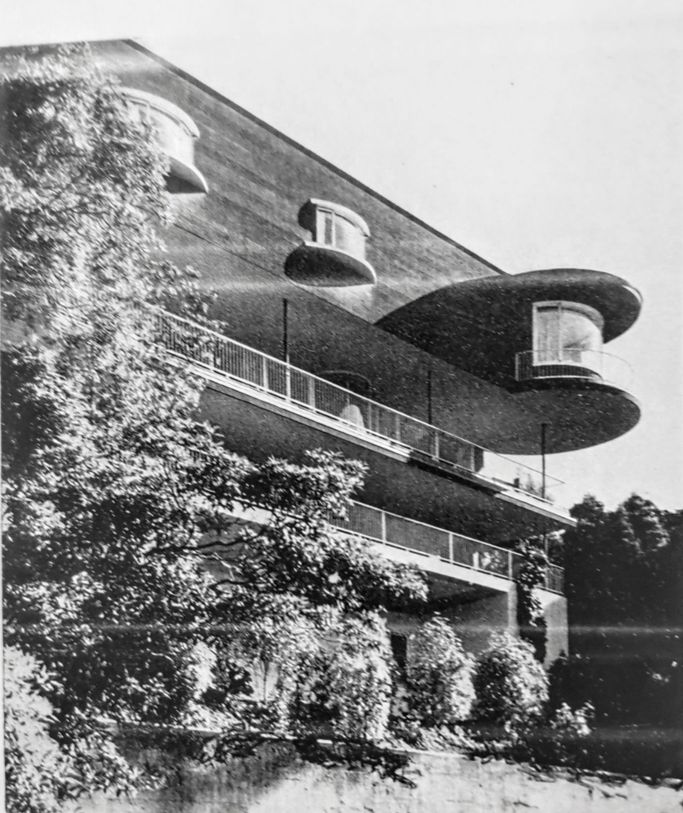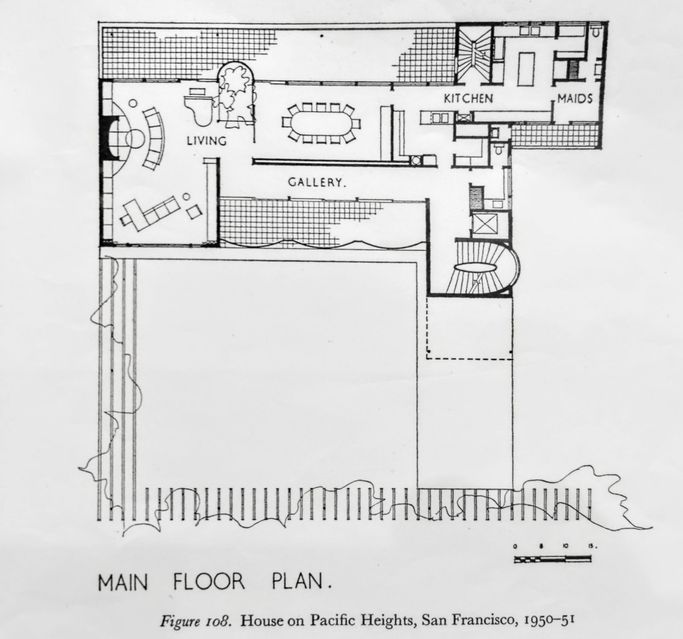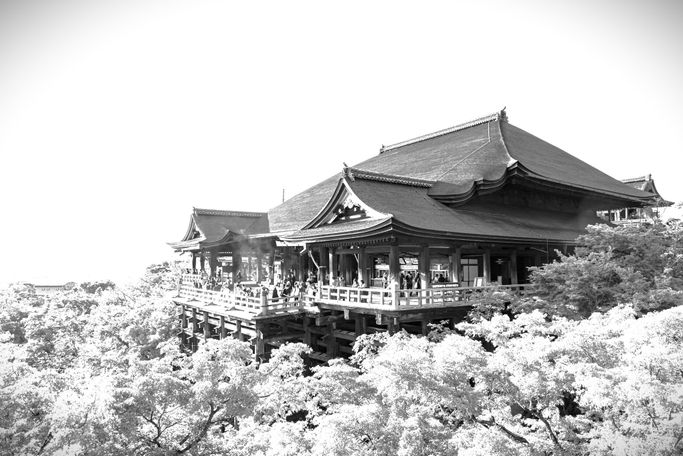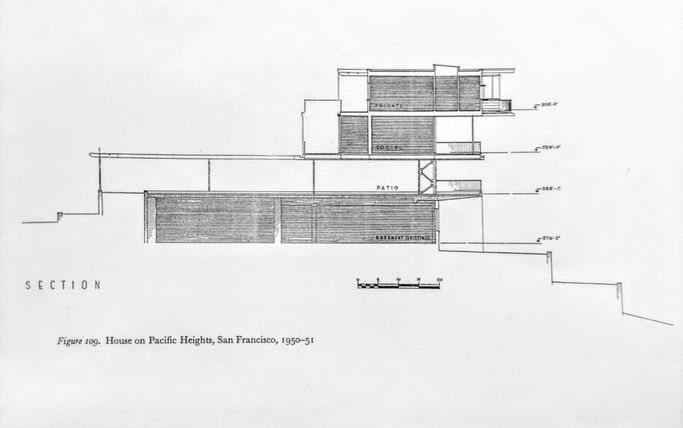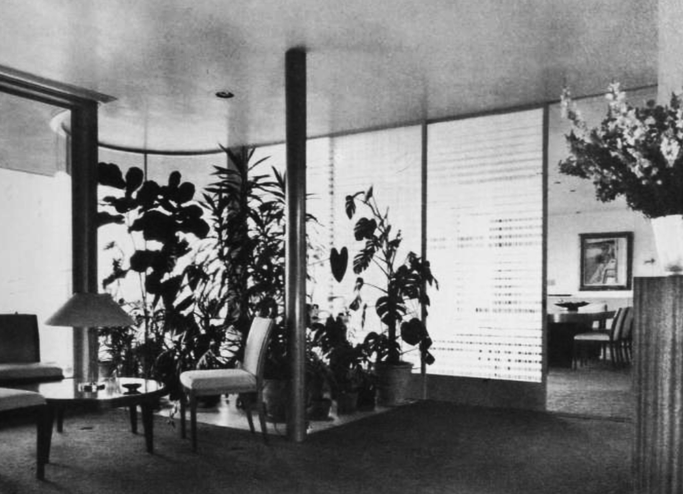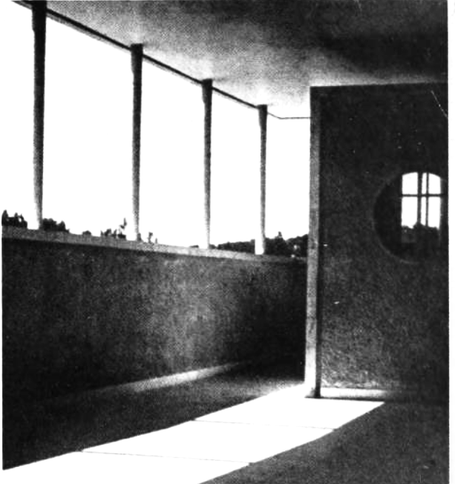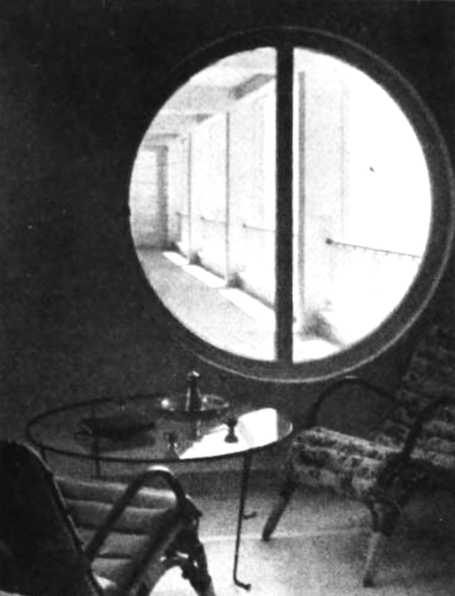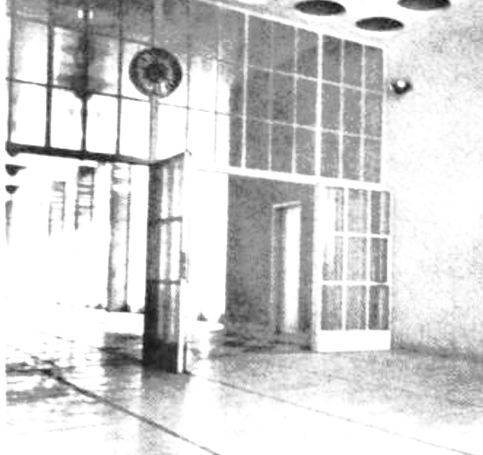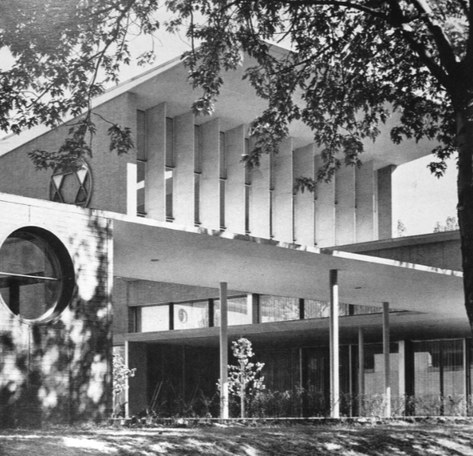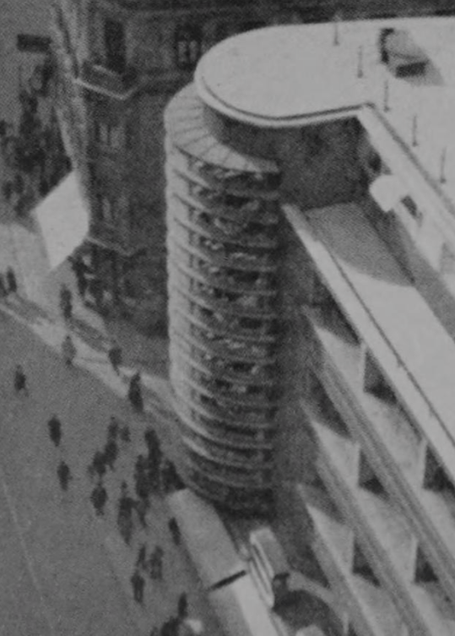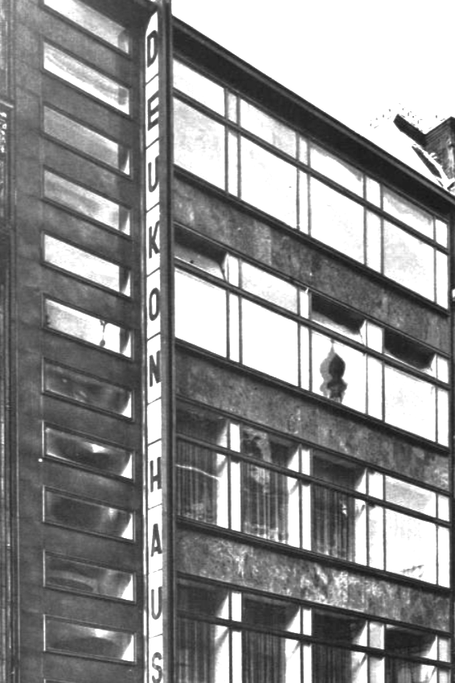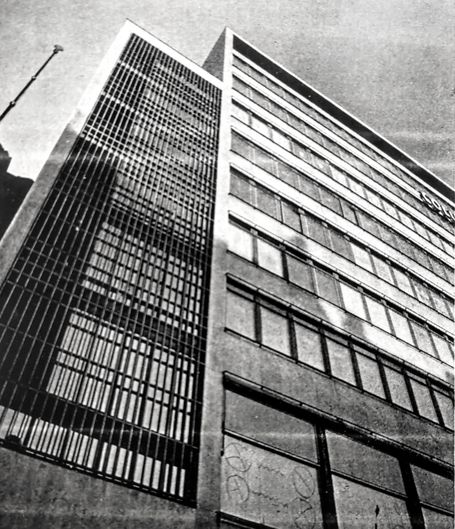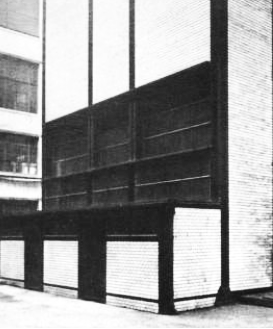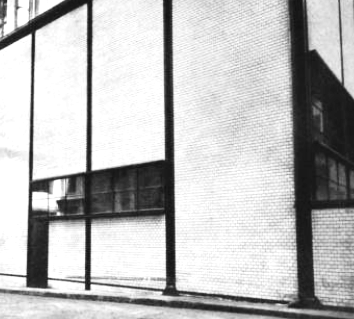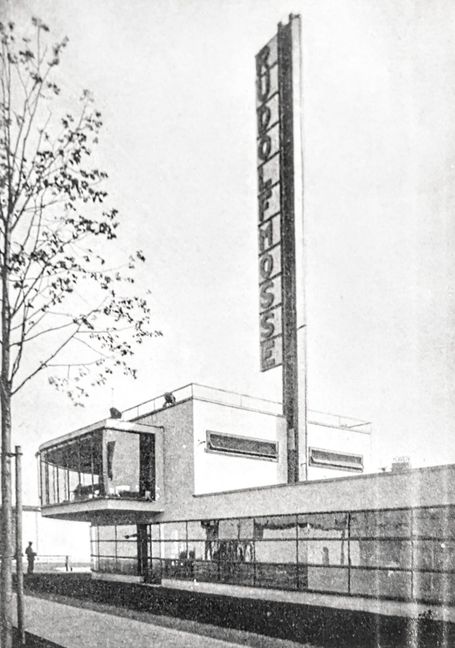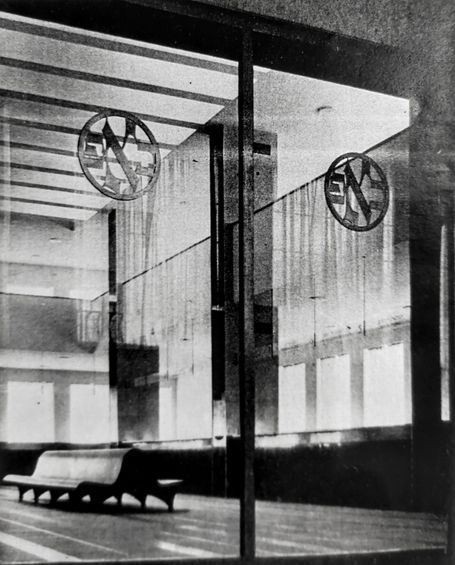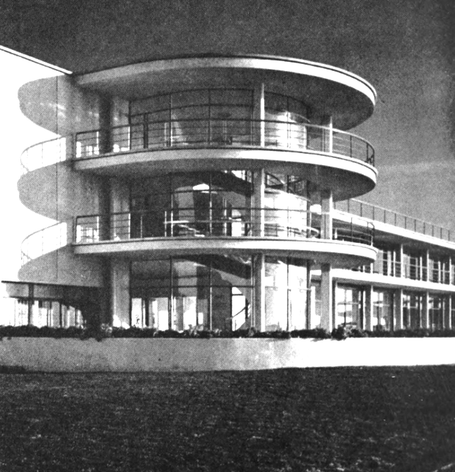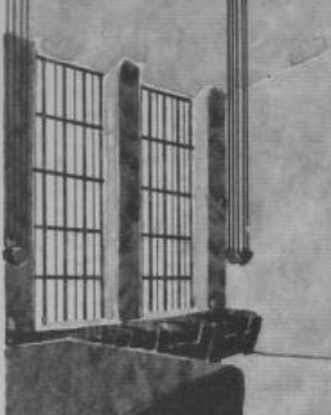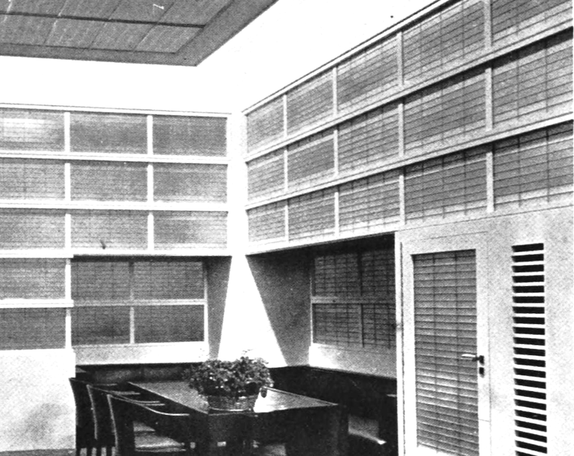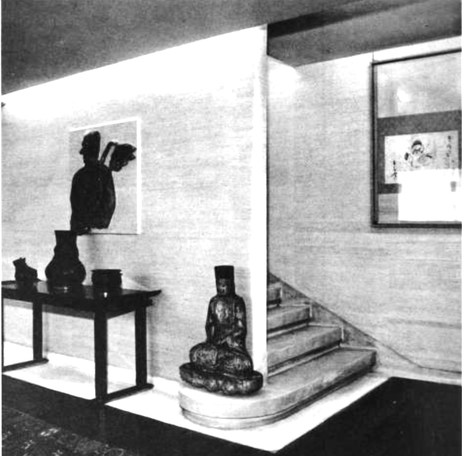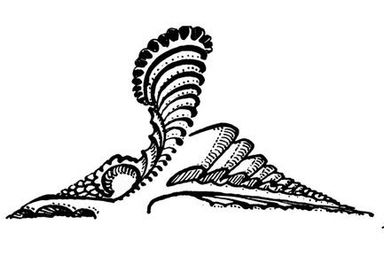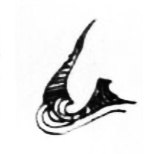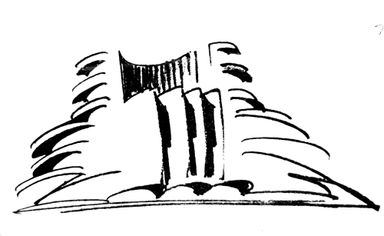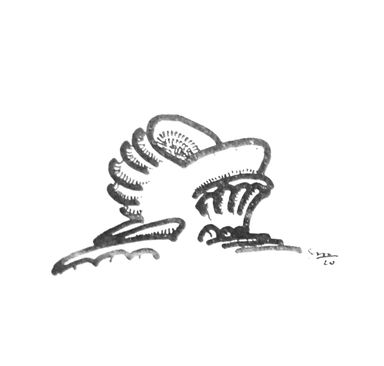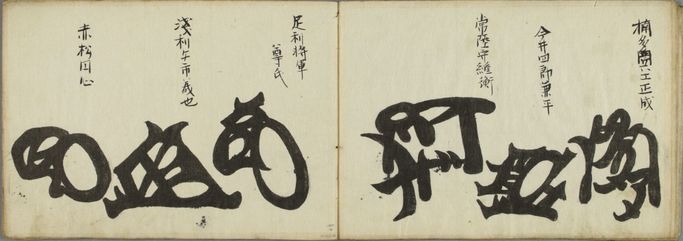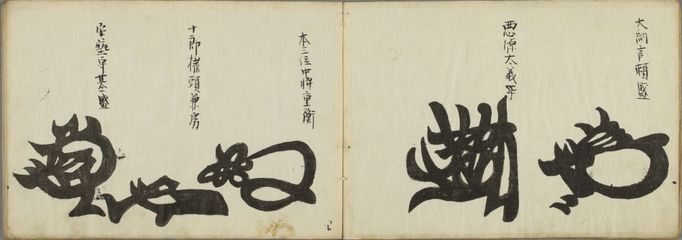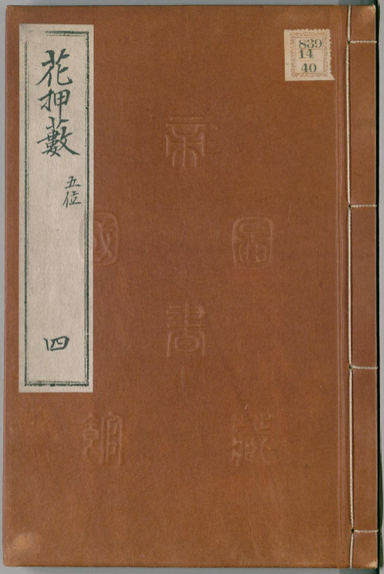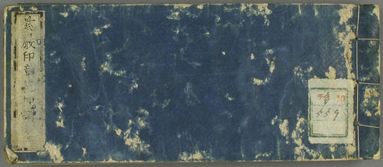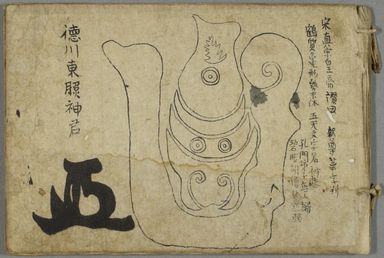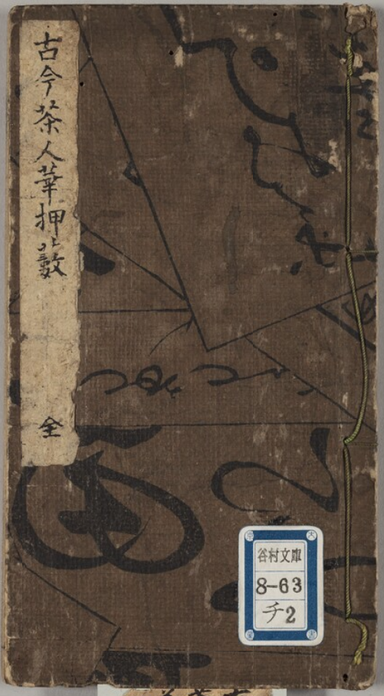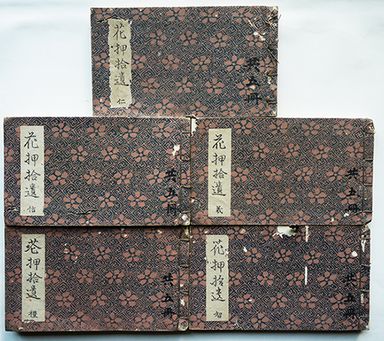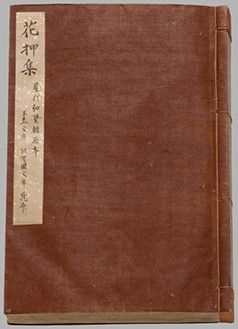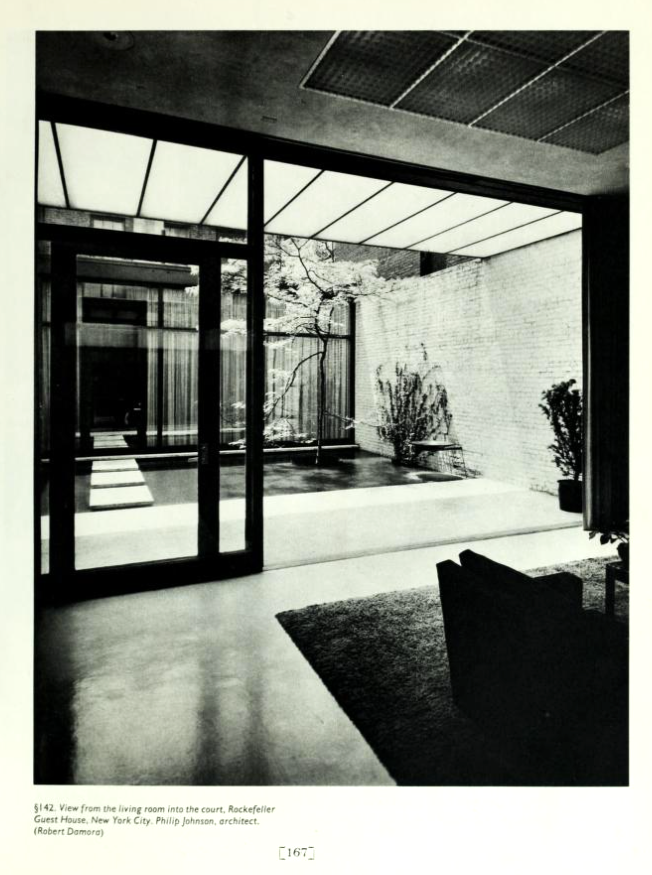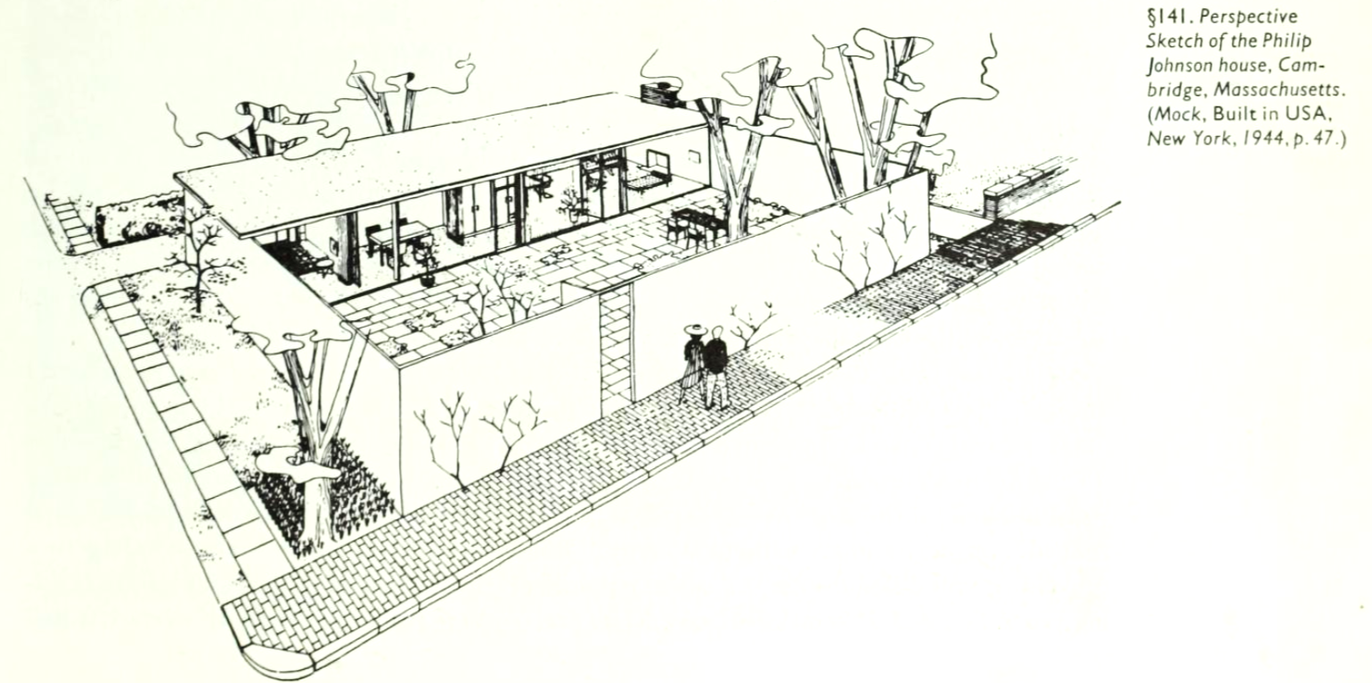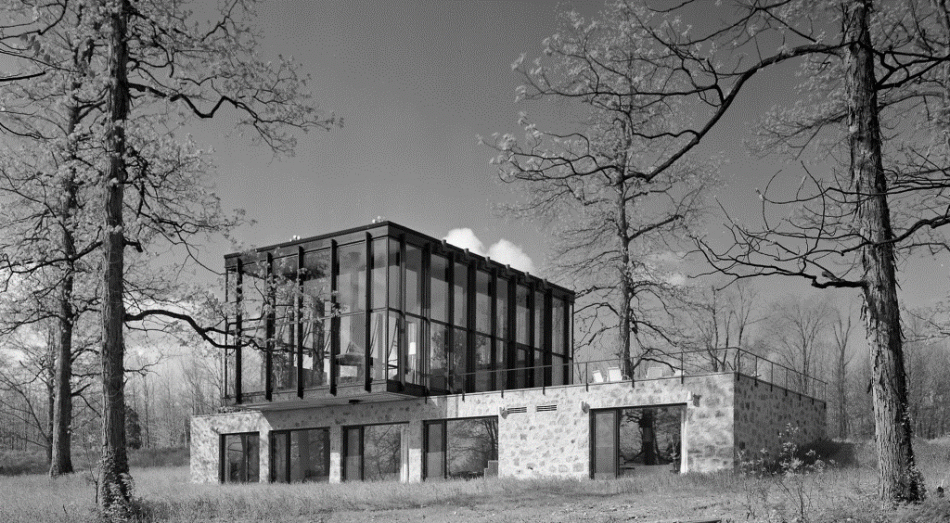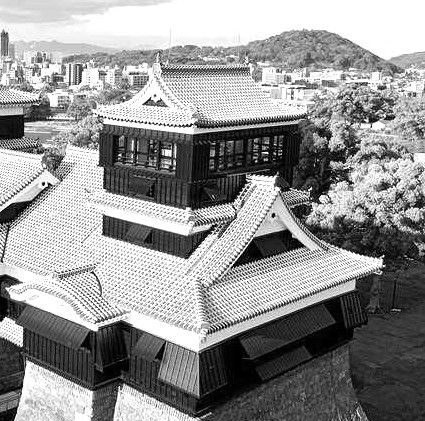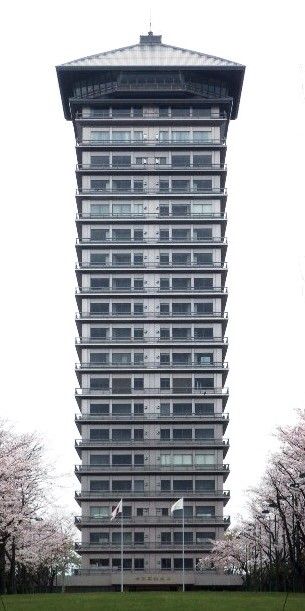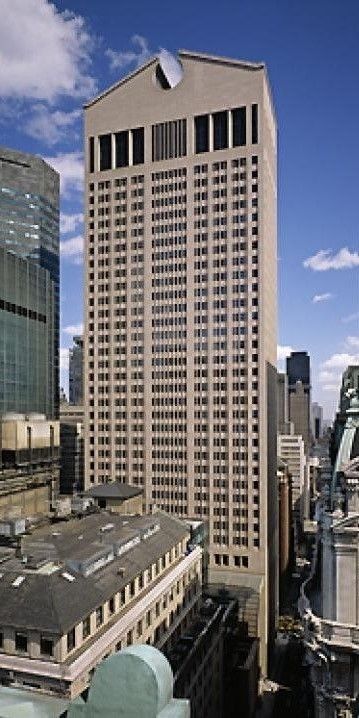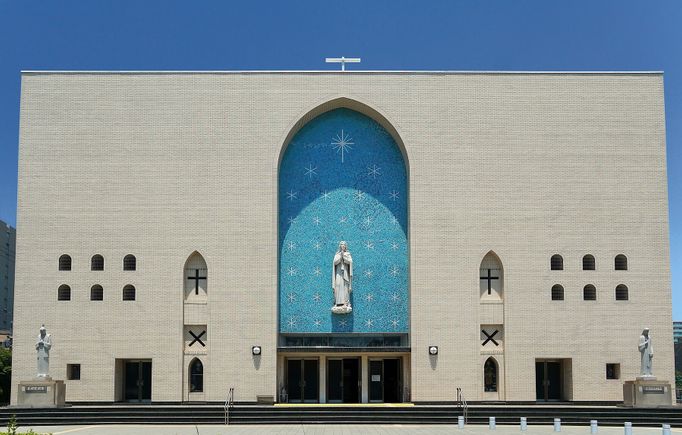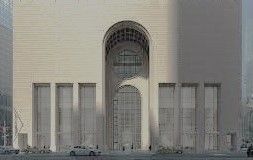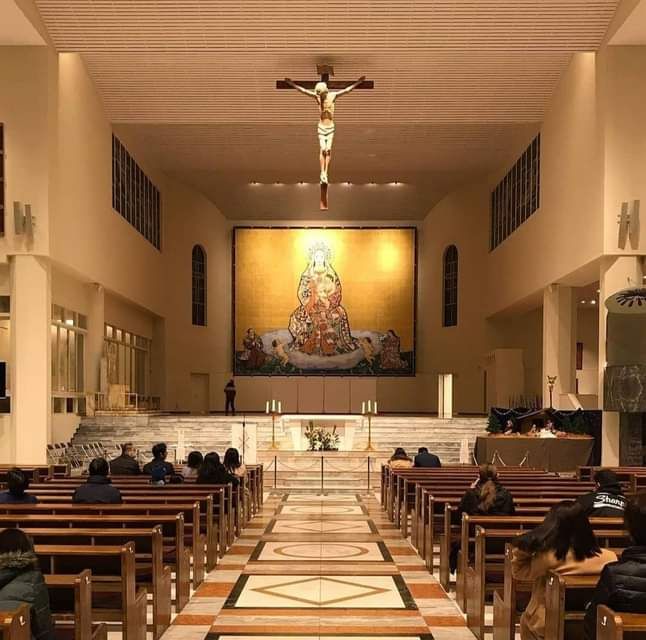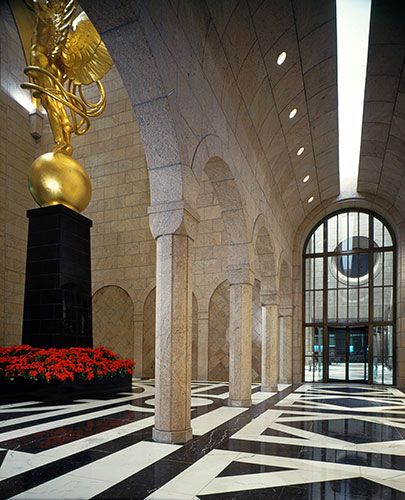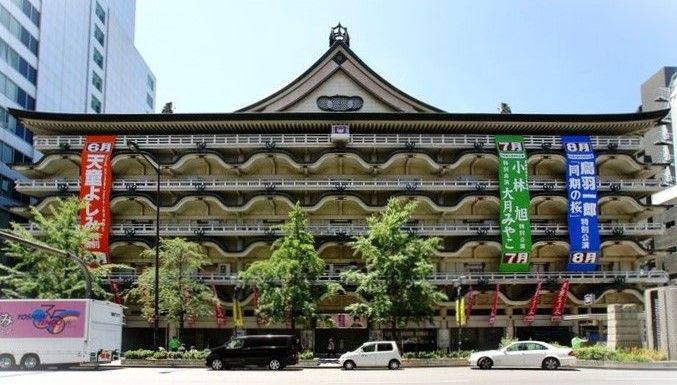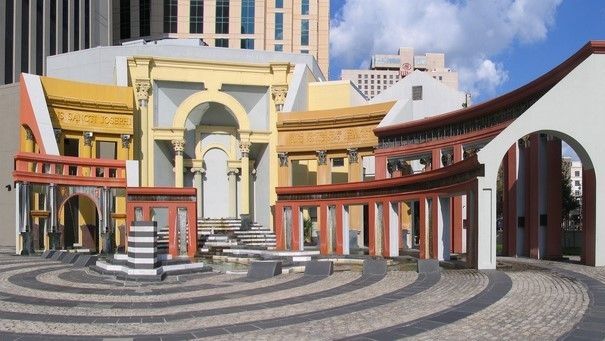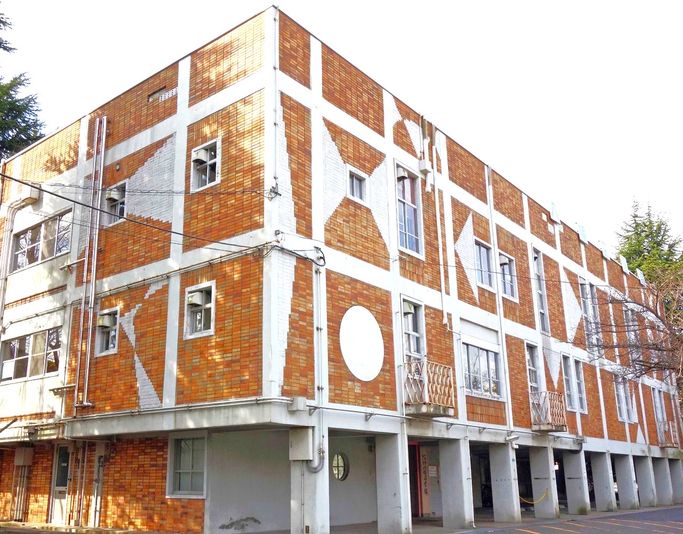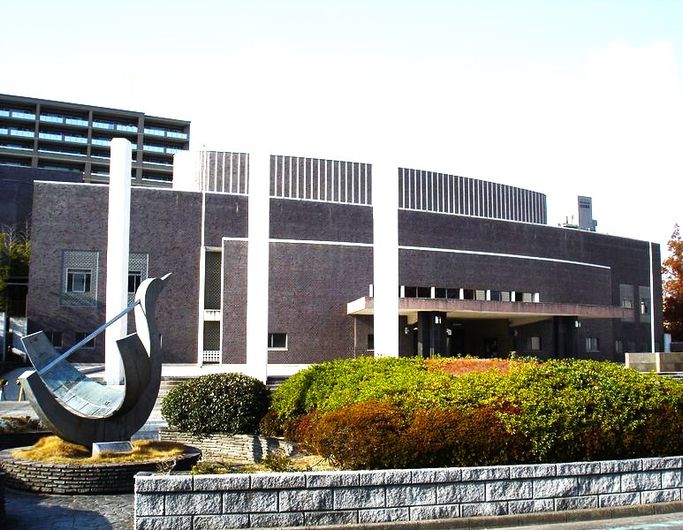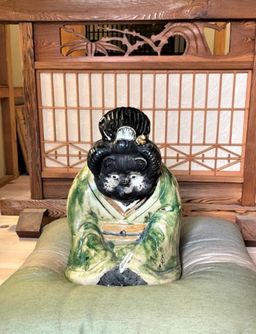Architectural Japonisme Continued
建築のジャポニスム II
Illustration: Inoue Yasuji (1864 - 1889) Tokyo Theater, Chitoseza Scene, 1884
Table of Contents
1. Japan as a Symbol of the Ultra Modern in Design, 1890-1915
2. Le Corbusier Japonisme and the Apotheosis of C-E Jeanneret
3. Eric Mendelsohn: Japonisme in Architectural Expressionism
4. Philip Johnson: From Modernist Subtraction to Post-Modern Addition
5. Murano Togo: Rethinking Post-Modernism's Origins
Uploaded 2023/6/29 Under construction
Japan as a Symbol of the Ultra-Modern in Design, 1890-1915
Yasutaka Aoyama
Japan near the turn of the century was a nation metamorphizing into something quite different from what it was three decades earlier. Despite the average man's housing, dress, and lifestyle having changed only superficially, the elite of society, including intellectuals and artists, had undergone a revolution that brought Japan to the forefront of global innovation and modernity. Particularly impressive was the fact that, probably more so than the Japan of today, late Meiji Japan was a nation that continued to excel as before in traditional arts in unbroken continuity and quality, as well as being on par with the West in terms of the avant-garde. Original woodblock prints continued to be produced actively, and kogei craftsmanship, whether in metal, porcelain, ivory, or wood, reached astonishing levels that have been commonly characterized as 'chozetsu giko' (超絶技巧) which might be translated as 'virtuoso craftsmanship' (literally, something like 'transcendent craft virtuosity') that have never been surpassed, if even rivaled.
Western ideas of Japan too were changing. The painter Alfred Stevens, in his Impressions sur la peinture (1886) perceived in a Japan a strong "element of modernity" and that the Japanese were in fact, no less than Europeans, true Impressionists. Those changes in attitude could be seen not only in books introducing Japan and its art, but even in science-fiction literature:
"Thence they wandered at last to the walls of the hall. It was decorated in long painted panels of a quasi-Japanese type, many of them very beautiful. These panels were grouped in a great and elaborate framing of dark metal, which passed into the metallic caryatidae of the galleries, and the great structural lines of the interior. The facile grace of these panels enhanced the mighty white effort that laboured in the centre of the scheme."
H. G. Wells, When the Sleeper Wakes (1899), Chapter VI The Hall of the Atlas
So wrote Wells in one of his most ambitious and highly acclaimed science fiction novels, When the Sleeper Wakes (The Sleeper Awakes), set in the 22nd century, over 200 years in the future from his time. He was describing the chamber of the "Council" that ruled the world, the most powerful, wealthiest, and modern seat of power to be possibly imagined, and it was in an important aspect aesthetically, "quasi-Japanese". The councilors wear long robes, but why in a society of the distant future they should wear robes is not explained. Somehow wearing robes (somewhat reminiscent of kimono as in the original illustration below, left) in a hall of Japanese decor, is seen as a fitting setting for the future.
The popular image of Japan had changed over the years from one of a feudalistic, isolated society to a fashionable place to go, such that by the 1890's, in forgotten novels as George Gissing's The Odd Women (1893), one of the main characters, Everard Barfoot, who was until then looked upon quite disaprovingly by his astute cousin, after 2 or 3 years in Japan returns in marvelous condition and transformed----cultivated, suave, relaxed, and alluring:
"Excellent health manifested itself in the warm purity of his skin, in his cheerful aspect, and the lightness of his bearing. ... On sitting down, he at once abandoned himself to a posture of the completest ease, which his admirable proportions made graceful. From his appearance one would have expected him to speak in rather loud and decided tones; but he had a soft voice, and used it with all the discretion of good-breeding, so that at times it seemed to caress the ear. ..." (Gissing, 1893, Chapter 8 'Cousin Everard')
Whether or not it was all due to his experiences in Japan, certainly a stay there carried different connotations compared to coming back from India or Africa, or other parts of the non-Western world, as portrayed in contemporary novels. And japonisme too, had come to mean not a quaint archaism, a taste for a feudal culture preserved in time, but rather to symbolize cutting edge sophistication---the wave of the future. Thus aspects of Japanese art, whether kimonos, decorative panels, or Japanese style fans (as shown below, right) used to decorate the cover of Jules Verne's Voyages Extraordinaires, which included his tales of deep sea and outer space travel, were not simply expressing a taste for exoticism, they were associated in minds of artists and the general public with modernity in design.
Regarding architecture, the ukiyo-e master Ando Hiroshige (1797 - 1858) is known for his daring angles and attention to unusual aspects of building and urban spaces. Later, Tsukioka Yoshitoshi (1839 - 1892) in his series 'Tokyo Ryori Sukoburubeppin' (Gourmet Delights of Tokyo, 1871) featuring exteriors and interiors of dozens of culinary retreats in Tokyo, provided stunningly modern images of structures dominated by clean lines and novel architectonic conceptions. His contemporaries such as Yoshu Chikanobu (1838 - 1912, along with his disciple Yosai Nobukazu 1872 - 1944), Inoue Yasuji (1864 - 1889), and Kobayashi Kiyochika (1849 - 1915), among many others, competed in this Japanese golden age of 'architecture as pictoral art' to create compellingly images of secular and religious structures in daily use. European and American photographers, painters, and writers were also busy recording a variety of architectural landscapes in Japan.
In 1886, Edward S. Morse, in his Japanese Homes and Their Surroundings, described in plain English, and with various illustrations, modern conceptions of architecture, such as open floor plans, a system of rooms based on the tatami module, built-in furnishings, multi-purpose rooms, and multi-functional furnishings, as well as asymmetrically intersecting wall planes and window placements. Others followed, including Ralph Adams Cram, Head of the Architectural Department of MIT and foremost authority of the Gothic style in America, who once graced the cover of Time Magazine (as he was considered one of America's greatest architectural authorities in his day). Author of the well-received Impressions of Japanese Architecture (1905), he recognized the future potential of Japanese interiors, writing:
"There is something about the great spacious apartments, airy and full of mellow light, that is curiously satisfying, and one feels the absence of furniture only with a sense of relief. Relieved of the rivalry of crowded furnishings, men and women take on a quite singular quality of dignity and importance. It is impossible after a time not to feel that the Japanese have adopted an idea of the function of a room and the method of best expressing this, far in advance of that which we have made our own.
From the moment on steps down from one's kuruma (rickshaw or carriage) and, slipping off one's shoes, passes into soft light and delicate color, among the simple forms and wide spaces of a Japanese house there is nothing to break the spell of perfect simplicity and perfect artistic feeling; the chaos of Western houses becomes an ugly dream."
Impressions of Japanese Architecture (1905), Chapter 5, Domestic Interiors
Is this not exactly the gospel of Modernism, an emphasis on functionality, spaciousness, simplicity, and light? Japanese art and architecture represented modernity in more senses than one, through a variety of mediums. Truly it was was the key to artistic Modernism itself, or so Frank Lloyd Wright wrote, regarding the significance of ukiyo-e prints:
"The gospel of elimination preached by the [Japanese] print came home to me in architecture as it came home to the French painters who developed Futurism and Cubism. Intrinsically, it lies at the bottom of all this so-called Modernism. Strangely unnoticed, uncredited."
Frank Lloyd Wright, The Japanese Print -- an Interpretation (1967), p. 91
The last line so aptly put, deserves to be repeated over and over again, until things are set right in our understanding of modern art and architecture:
"Intrinsically, it lies at the bottom of all this so-called Modernism. Strangely unnoticed, uncredited."
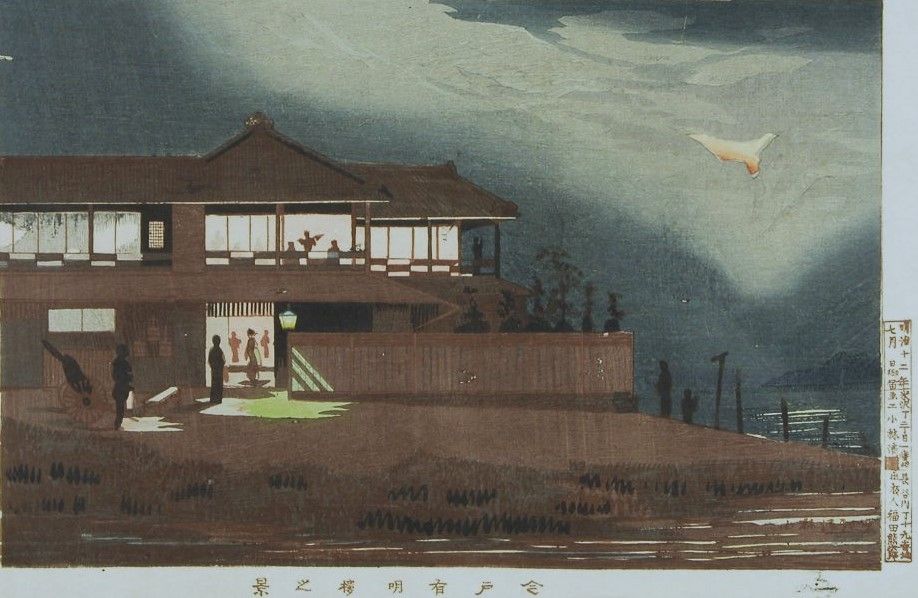
Above: Kyobayashi Kiyochika, 'View of Ariake Lake, Imado', from his series 'Tokyo Meisho-zu' (Famous Sights of Tokyo, 1879). Without knowing any better, seeing only the image without the Japanese writing, might it not be mistaken for a beautifully executed watercolor of a house designed by Greene and Greene or Frank Lloyd Wright?
Actual vs. Imagined Japan
The true level of modernity and innovation (including that of architectural design), occurring in the real Japan of the early 20th century is hardly appreciated in the West, or for that matter, even in Japan today. Even before the Meiji Restoration, in the early 19th century, men like Tanaka Hisashige (1799 –1881) known as 'Karakuri Giemon' (Clever Contraptions Giemon) were building mechanical devices (some prescient of robotic conceptions) of the likes not yet achieved in the West at the time. The economic and technological advance of Japan is often seen as primarily a post-WWII phenomenon; in fact the postwar 'miracle' was but a continuation of a process going on for already three quarters of a century, if not longer.
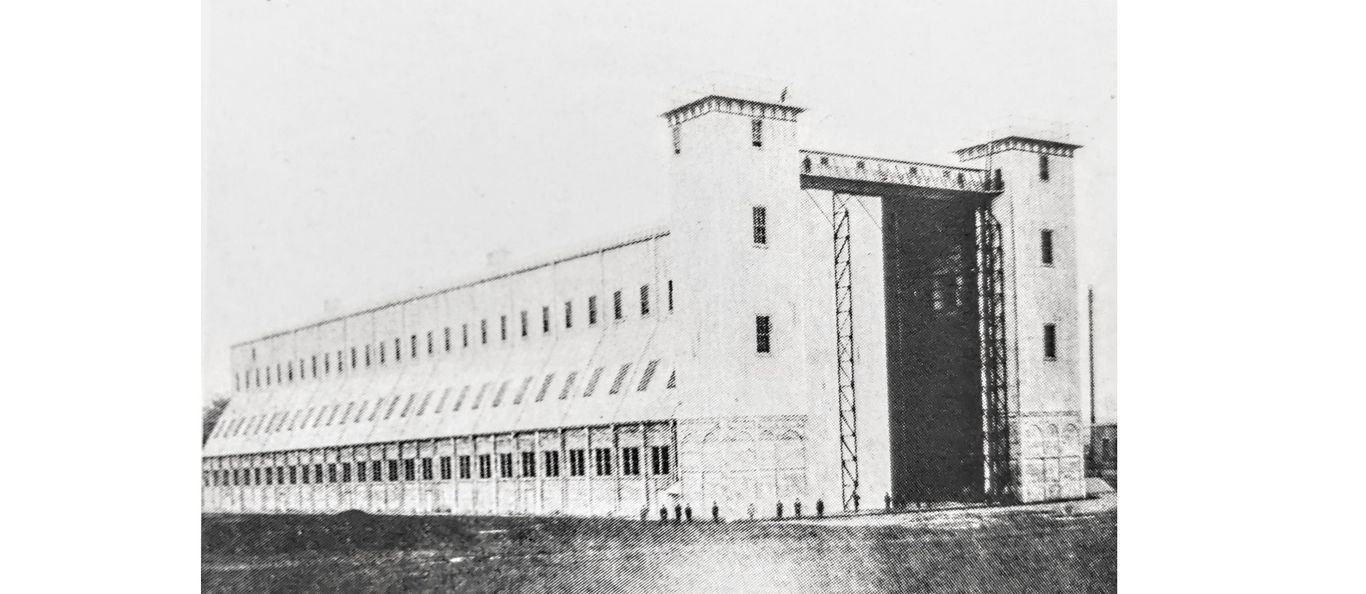
Uchida Yoshikazu (architect),Tokorozawa Hikosen Kakunoko (aircraft hangar), Tokorozawa, Saitama, 1913
Japanese Cinema and Movie Studio Architecture
Japan was in some senses ahead of the West in terms of longer, more plot-developed movie production in the 1910's, creating some of the first complex one-against-many combat action scenes (as those by Onoe Matsunosuke 1875-1926, affectionately known as 'Eyeballs Macchan' for his expressive eyes), and employing drama techniques from Kabuki---which that pioneer of modern film technique, director Sergei Eisenstein, considered vital for the development of modern cinematography.
From an architectural perspective, while glass structures in an ornate Victorian Gothic style were not uncommon as exhibition buildings in England, large scale Japanese movie studios of the time remind one of strictly geometric glass facades of modern buildings that would only come to be seen in the West decades later.
Regarding the influence of Japanese aesthetics on the development of cinematography, see Daisuke Miyao, Japonisme and the Birth of Cinema, Duke U. Press, 2020).
Below, from left: exterior of Kawaura Kenichi designed Yoshizawa Shoten Meguro Satsuejo (movie studio), Tokyo, 1908; the same, interior, filming scene, c. 1910; Kawaura Kenichi and Yoshimoto Keizo, Nikkatsu Mukojima Glass Studio (movie studio), Tokyo, 1913.
________________________
Uploaded 2023/5/27
Under Construction
Draft Preview
'Le Corbusier'
Japonisme
&
The Apotheosis of Charles-Edouard Jeanneret (1887-1965)
Yasutaka Aoyama
Japonisme after 1915
Japonisme in Europe was influenced by the coming of 'The Great War', as almost every aspect of society and thought was, from religion to politics, from propaganda to the philosophy of aesthetics. A different awareness of the world---and of themselves---gripped Europeans; the tremendous angst and disillusionment with European civilization is well-documented. That it became an age of soul-searching, a groping for new sources of rejuvenation was apparent to all. And that it had to appear as something refreshingly different from what was relied upon in the past---this also, was implicitly understood.
Idealized and uncritical appraisals of other cultures diminished; japonisme too, was old, and from 1914, the frilly sort of fad for Japan among the general populace started to dissipate. The sources of japonisme also changed. From ukiyo-e prints being the major source of japonisme in the 19th century, in the 20th century, the scope widened, encompassing lesser known arts and crafts and becoming inclusive of new forms of media, such as recorded film and music. Japonisme became a less obvious force in art, but nevertheless still an important part of the modern artist's 'arsenal', to use Klaus Berger's term.
Creating 'Le Corbusier'
In such an intellectual environment, artists claimed an originality springing from new social or technological forces in society, and of course, most importantly, from their own creativity. Art was considered more and more an expression of purely personal impulses, and something to be understood by "intuition", to use Benedetto Croce's (and Henri Bergson's zen-congruent use of the) term. While art from colonies around the world poured into European collections as 'artefacts' and 'specimens', the overt reliance on other styles or the aping of other cultures, by definition, became frowned upon in an atmosphere of continuing social Darwinism, further bolstered by trends in 'scientific' eugenic research; and as in political thought, the superior man, his unique genius, was exalted in all fields.
Certain artists, more so than others, became adept at cultivating their own reputations in the media, while relying upon talented workers under their aegis. Le Corbusier (Charles-Edouard Jeanneret, 1887-1965) was one of those particularly adept at doing so, ensuring that he gained the lion's share of the credit for co-produced designs, and successfully cultivating what might be almost called a cult of personality. As Jean-Louis Cohen writes in the introduction to Le Corbusier, Le Grand (Phaidon, 2006): "Le Corbusier was a real media star: for almost six decades he never stopped mobilizing the press, radio, and film in support of his ideas and schemes." And as Cohen relates, in a 1926 letter to Josef Cerv, Le Corbusier wrote of himself in the third person:
"Le Corbusier is a pseudonym. Le Corbusier practices architecture, exclusively. He pursues unbiased ideas. He has no right to entangle himself in betrayals, in compromises. He is an entity freed from the weight of the flesh..."
Thus Le Corbusier refers to himself as an entity transcending normal humanity, in what sounds like self-proclaimed apotheosis. Meanwhile, that is at the same time, "Ch. Edouard Jeanneret is the man of flesh and blood, who has had all the radiant or heartbreaking adventures of a pretty eventful life." Or so says Le Corbusier in the same letter. Is this not a vision of Superman and Clark Kent, or some other comic book fantasy? If it were anyone else, it would probably be diagnosed as an authentic case of a patient possessed by serious delusions of grandeur.
Even today, no questions or doubts are raised at Charles Edouard's self-ordained appellation as 'Le Corbusier' with its faint connotations of being a master craftsman or maker of some kind; yet it no more a real or legal name than Benito Mussolini's political version of the same, also preceded by the definite article. This oddly blind acceptance of his unique position by critics and the public has meant that not only Japanese influence, but all obvious precedents in terms of ideas, such as those of Otto Wagner, or designs, such as those of Adolf Loos, have been downplayed in discussions of 'The' Corbusier.
Sigfried Giedion, chairman of the Harvard Graduate School of Design, whose Space Time & Architecture was for years the closest thing to a bible for students of modern architecture, played an instrumental role in solidifying the pantheon of architectural heroes with Le Corbusier at its pinnacle. Le Corbusier is the equal of Michelangelo, Raphael, and Bramante; and quoting none other than himself, Giedion says: "an all-embracing genius: an architect, painter, and urbanist with the vision of a poet". Yet if Ch.- E. Jeanneret were not an architect, could his painting (which either reminds us of previous works by Picasso or Braque or Leger and at times even Klee and Chagall) or his 'poetic urbanism' stand on its own? Giedion's adulation and adoration of Le Corbusier had no bounds. The man is a prophet of the age, fighting obstruction, misunderstood, and psychologically persecuted--almost a martyr; and we hear in Giedion, perhaps more of Giedion himself than the reality of another individual; the fulfillment of both a religious and at the same time a rather Nietzschean or Spenglerian ideal, just as Le Corbusier himself would have wished. Looked at in the cold light of day, however, there is no questioning that Le Corbusier was also the champion of large scale, organized industry, providing the perfect justification for furthering mass production with his ideas of architecture as building "machines for living in".
That the nature of Le Corbusier's reputation is cultish to this day, of an almost religious nature, can be seen in the promotion and elevation of his works, even his lesser designs to special status as UNESCO World Heritage Monuments, even when there are other works in those countries which are of a more original or irreplaceable nature. For instance, Le Corbusier's National Museum of Western Art in Tokyo opened in 1959 when modernism was already ripe, would likely not attract as much attention were it designed by a different architect; Sakakura Junzo's Museum of Modern Art in Kamakura which opened in 1951 is a more significant work in that sense. Or for that matter, the Sanjusangendo Temple (1164 rebuilt 1266) in Kyoto, discussed below as a possible source for Le Corbusier's Chandigarh, is certainly an irreplaceable and more worthy candidate for historical preservation than the Tokyo museum. In the final analysis it is simply the 'brand' of Le Corbusier that has become the determining factor, just as anything done by Picasso is considered museum material regardless of content or composition date.
Quintessentially Japanese
The lionization of Le Corbusier started in his lifetime and his worldwide celebrity status was firmly established by the 1950's, growing stronger with every passing decade. In such an environment, Siegfried Wichmann, in his monumental Japonisme: The Japanese Influence on Western Art Since 1858 (1981), was courageous enough to point out the obvious when he stated that the Villa Savoye "gives a sense of modular flexibility inherent in the Japanese tradition of building on stilts" and that in the case of the Salvation Army Hotel (Cite de Refuge) the "modular divisions were anticipated in Japanese construction methods."
Yet he stopped short of carrying his observations further to their logical conclusion, that in almost all respects conception and detail are combined in Le Corbusier's designs as they are found in Japan. The key difference being two only: Roofing and construction material. The former is removed and becomes unessential due to the second, i.e. concrete which replaces wood. Stated differently, a traditional Japanese house, made in concrete and 'de-roofed' would be in an architectonic sense identical in most respects to Le Corbusier's architecture. Or otherwise put, if Le Corbusier's designs were built with wood and roofed, many of them would be in essence simplified versions of Japanese architecture.
Les cinq points de l'architecture moderne, 1927
Of what are often referred to as Le Corbusier's 5 points, 4 are clearly essential ingredients of traditional Japanese architecture, commonplace and found in the combination that Le Corbusier outlines: 1) 'pilotis' (weight supporting hashira), 2) an open, free floor plan, 3) long windows and 4) open and freely designed facades.
Furthermore, his concepts of the 'modulor', an rectangular unit of measure that is to be applied throughout a building, reflecting a basic ergonomic spatial size, that becomes the basis of larger key units of construction, is precisely what the tatami or 'jo' of Japan is, which when added with another becomes the 'ken' in length and 'tsubo' in area, and is likewise applied as a standard unit of measure that ties in with the plan and elevations. Building was based on standardized 'kiwari' or timber splitting measurements which were integrated with the ken/tsubo into one system. Furthermore, traditionally, the plan of a Japanese house was done on a grid which reflected these measurement criteria, and designed accordingly -- ideas which are reflected in ideas about construction in modern architecture, with of course a switch in building materials.
The Domino House, which is thought to encapsulate Le Corbusier's most fundamental structural principles, has another key feature of traditional Japanese architecture: the raising of the house on stilts, or 'takayuka' construction, leaving a ventilation space underneath for residences. Much higher raised floors can be found in Shinto shrines and in ancient storehouses such as the Shosoin of Nara (which may be meaningfully compared to his Ahmedabad Museum, 1951). For Japan, the raised floor is not only a familiar architectural feature, depicted in prehistoric bronze bells and pottery or thousand year old picture scrolls known as emaki, but an established part of Japanese literary, dramatic, and early cinematic culture as a place of hiding, eaves dropping, and at times even dialogue.
The roof garden is the only one of Corbusier's five points that is not traditionally Japanese, though roofs completely covered with moss or purposely planted with grass did commonly exist in Japan, called 'shibamune' (芝棟). And the idea of a garden as one with house design, that a house be integrated with nature, rather than imposed upon it is a Japanese conception, which Le Corbusier has incorporated vertically as opposed to what was often perceived as horizontally in the case of Japan. But in fact traditional Japanese architecture is integrative both horizontally and vertically with its natural environment. The idea of architecture that accommodates a tree into its design, can be seen not only in house designs with plans which avoid existing trees, but shrines for instance, where roofs have apertures for the trunks of trees.
While not being a feature of traditional Japanese architecture, the first rooftop gardens on modern buildings in fact, are Japanese, built decades before Le Corbusier espoused the idea. It maybe worthwhile here to briefly go over the facinating history of roof gardens in Japan, to gain perspective on just how well established the idea was before Le Corbusier's 'Five Points'.
Starting in the early 1860's (1861-1864), at Chukushima (Hakodate, Hokkaido), Musashino Seijiro built a pleasure pavilion or 'giro' (妓楼), his 'Musashino-ro', a three storey building of which on the second floor roof a garden was built, depicted in Utagawa Kuniteru's print 'Hakodate Toyokawacho Musashino Sangaizukuri Zensei-no-zu' (1873), which even included a pond, and approximately covered a 100 square meters. It seems from this point on more and more roof gardens were built, and for foreigners as well, such as that of the importing and provisions company, Langfeldt & Mayers, in Yokohama (1881).
In the 1890's there are records of 'Tabacco King' Iwaya Matsuhei's combined personal residence and store and its sprawling rooftop garden in central Tokyo, which was eventually equipped with a pump driven waterfall, as mentioned in a 1901 tabacco advertisement. Around the same time, Hattori Choshichi, in the construction business, built a rooftop garden for his mansion in Ginza, some time before 1896, since his roof garden appears in publications from that time on. It was a complete, Japanese style garden, with a pond, tourou stone lanterns, stepping stones, and of course extensive plantings. Perhaps stimulated by Hattori's rooftop garden, the Nihon Engeikai Zasshi (Japan Horticultural Society Magazine) started to routinely use the term 'okujo teien' (rooftop garden 屋上庭園) from 1896 onward. (Kondo Mitsuo, 'Wagakuni ni okeru okujoteien no kigen to reimeiki ni okeru tenkai ni tsuite' Zoen Gijutsu Hokokushu, 2009)
The history of rooftop gardens on modern concrete buildings, however, started in 1907, with the Oriental Hotel of Kobe (catering largely to foreigners) building a rooftop garden for its guests and the Mitsukoshi Department Store in Nihonbashi (central Tokyo) building the first 'Kuchu Teien' or Sky (or Aerial) Garden ( 空中庭園 literally mid-sky garden), which eventually had a fountain, pond, hanging wisteria racks, large numbers of bonsai and other plants, and even a small shrine (Mimeguri Inari) and tea house, covering a total area of almost 200 square meters.
Actually 4 years earlier, in 1903, also in Nihonbashi, the Shirokiya Department Store had built a amusement park on the roof, which was primarily oriented towards children with see-saws and rocking horses but also had a bonsai display (bonsai chinretsu) section and 'pure drinking water' (seiryoinryosui) fountain; however the Mitsukoshi garden was the more full fledged rooftop garden on a modern department store. The Matsuya Department Store at Kanda (Tokyo) built a competing rooftop facility later in the same year, and in quick succession other department stores followed suit, each providing novel features; several years later rooftop gardens appeared in the Kansai region, such as the Kyoto Daimaru Department Store rooftop garden (1912). These gardens expanded in grew in size in the following years to cover extensive rooftop areas. This was much earlier than anywhere in Europe; for instance, the first department store rooftop garden in England was the Kensington Roof Gardens in London which opened in 1933.
We have focused on department stores, but by the early 1920's, in the years just preceding Le Corbusier's proclamation of the roof garden idea, gardens on rooftops were becoming quite common in major urban areas in Japan, appearing on a variety of buildings, including apartment buildings. (See Tsukano Michiya; Sendai Shoichiro, 'The Roof Garden in Japanese Modern Architecture: From the Meiji Period to the End of World War II' Nihon Kanseikogaku-kai Ronbunshi, Vol. 13, No. 1, Tokushugo (2014) pp. 127 - 135. Photos immediately below from the same article.)
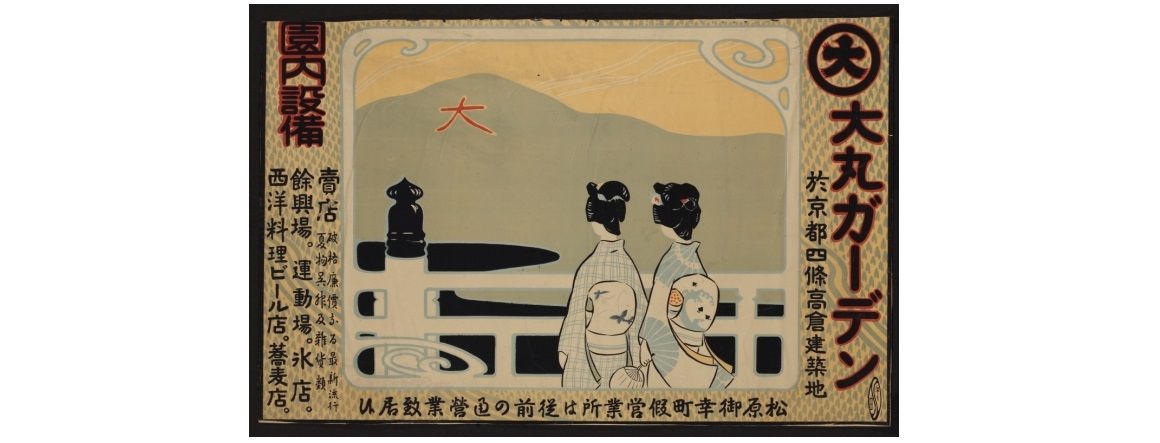
Poster for the rooftop 'Daimaru Garden', c. 1920
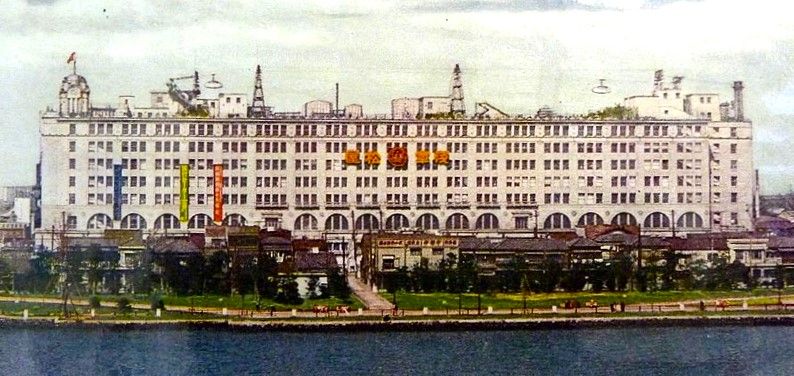
Photo of Matsuya Department Store of Asakusa, Tokyo, with its mammoth rooftop garden and amusement park built in 1931
Thus even Le Corbusier's idea of a rooftop garden, may have taken a hint from trends in Japan. In any case, this probably is the least important of his 5 points, because it is not always present and is not as interdependent with the other principles as the others are with each other. The roof garden is a preferential feature, but not an omnipresent necessity to the working of his system, a point which Le Corbusier himself seems to have understood, occasionally treating a garden as almost an afterthought to be 'shrubbed up' by others, simply given a place to be. If it were of equal weight to the other points, he would have probably designed more detail into them, but in certain cases there is little specificity in his garden designs besides a few nondescript planters as in the Dojunkai Apartment House in Harajuku, Tokyo (lower right of black and white photos shown above).
The essential architectonic ideas of Le Corbusier are the other four, plus two (a foundational unit of space and raised floors) which are also necessary in describing Japanese architecture -- principles without which, traditional Japanese architecture would not be what it is. Furthermore, even key aspects of surface and interior detail that are not directly a result of the '4 plus 2' are rather Japanese in nature: the surface geometries and interior design, for example the repetition of rectangular grids in the interior, and the low center of gravity of the furnishings.
Not to call attention to these facts, and to avoid all mention of Japan in discussions of Le Corbusier's designs in Europe, would be much like describing architecture in Asia that was 1) centrally fronted with columns topped with a triangular decorative space above; 2) had equal length wings on both sides with walls punctuated by upright rectangular windows with thick decorative framing at equivalent intervals; 3) a symmetrical box type floor plan; 4) walled off rooms with openings only large enough for one person to pass through, equipped with newly named 'doh-ah' -- flapping, hinged planar devices to close rooms; and finally, 5) a basement pool -- something surely not a standard feature of Western architecture; and thereby tout it as a purely original conception of 5 key principles (and also thanks to it being constructed let let us say, in plastic rather than stone or concrete)!
Preposterous as it may seem, this is much like the proposition accepted today, that Le Corbusier's designs and his design principles are unrelated to those of Japan.
Japanese Precedents for a Modular, Measurement Systems Approach
Living á la Le Corbusier in 19th Century Japan
Below: Examples in Japan of open facades, free floor plans, long windows, weight supported by exposed piloti--i.e. hashira, and floors raised from the ground on stilts. As shown in the photos taken by European photographers from the late 1860's and early 1870's, the ideas of Corbusier were already actualized, experienced, and documented by Western expatriates in Japan in the 19th century. While the photos below are those by Michael Moser, Wilhelm Burger, and Felice Beato, there were many other such photographers of Japan, among whom the Swiss Pierre Rossier (1829 - 1886) was one of the first, capturing many images of Japan a decade earlier between 1858 - 62. And from 1900 onward, with the international postal system in place and the printing of picture postcards in Japan, photographic and painted pictures of Japanese architecture, often with English language descriptions, were sent or brought back home by Western tourists in fair abundance. The low lounge chairs (visible on the left in the photos) of the British consulate, most likely designed and produced locally, are very much the kind of chairs that would become known as 'Modern' in the next century, five decades later.
Below: Photo by Felice Beato, Japan,1860's with Le Corbusier's Villa Savoye at Poissy (1928-1931), for comparison under it. By the late 1860's the use of glass in shoji sliding panels in mid-section was common. Here, on the ground level, the shoji panels are partially open, but when slid shut (and as the shoji were papered in white) look exactly like Le Corbusier's ribbon windows on his Villa Savoye. As the same was done also on multistorey buildings, the effect was even more modern. Note how we have here four of his key points: structural support by pillars only, an open floor plan, long windows, and a free facade. And furthermore, it is raised from the ground on stilts.
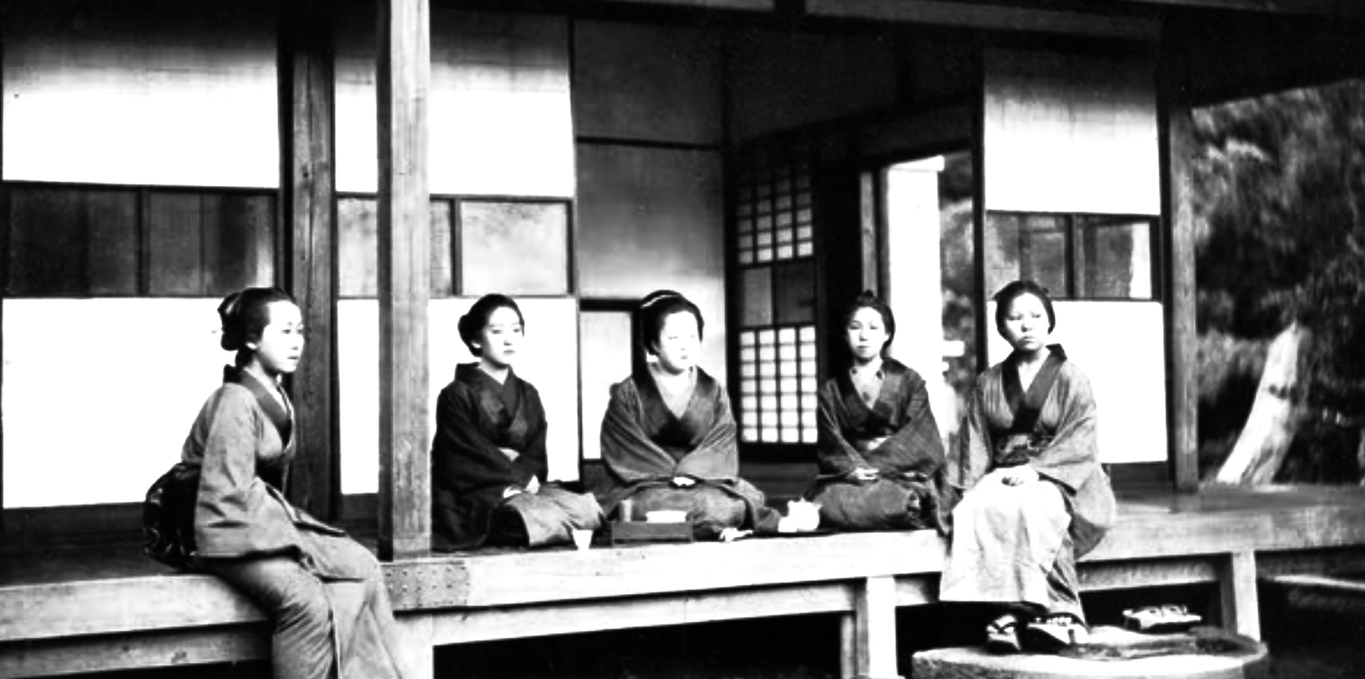

Japanese Floor Plans and the Horizontal and Vertical Harmonization with the Environment
Below: Freely extending, open floor plans, horizontal and vertical integration and harmonization with nature in Japanese architecture. Left: Kodaiji (Temple), Kyoto, early 17th century. Center: Tateriko Shrine, Nara. Right: Plan of Nijojo (Castle), Ninomaru-goten, 1603. Note how the irregular and sloping rooflines in the Kodaiji print below (left) blend in with not only the trees, but with the rhythm of the large and small hill peaks beyond. Le Corbusier's idea of rooftop gardens is congruent with this idea of integrating the roof with nature, which until then in the West, as in the case of palaces or Gothic churches, had been more of a device to stand out from, or reach higher and surpass nature.
Below: Left, photo and plan of Maison de week-end, La Celle-Saint-Cloud, France, 1934. Right, plan of Higashi Sanjo-den, Nara, 1043-1166, an example of a classic layout for Japanese shinden style villas, with an extended walkway ending in a tsuri-dono, or fishing pavilion. Note the similarities of enclosure, the situating of approach and entrance, the basic divisions of site space, the staggered free plan, and the long, straight extensions from the house into the garden, ending with a structure jutting into a clearly defined space. Various residences and temples ever since the Heian period have been modeled upon this basic conception, which is somewhat reflected in the layout of Kodaiji above, and which Alvar Aalto also may have emulated. Other points of interest include the stepping stones, visible in the photo of Le Corbusier's week-end house below, which combine straight paths made of large rectangular stones connecting with curving paths of paired stones, standard in Japanese garden design, the most famous example being the Katsura Villa in Kyoto. Traces of where a Japanese pond would have been can be seen in the placement of stones that outline a pond shaped area in Le Corbusier's plan.
Architectonic Equivalence
Below: Left, Tea House, Negishi, Tokyo. Center, Le Corbusier's Domino House. Right, Yamada Daio Shrine. If replaced with a flat roof, architecture in Japan is structurally analogous to the Domino House, excepting the building material. Even the simple stairway off to the side and somewhat back (unlike in Western architecture where the stairway was given a place of prominence, traditionally in the entrance hall), is a common feature of Japanese multistorey architecture.
Similar architecture was built repeatedly for expositions from the latter 19th century onward, such as the Japanese Satsuma Pavilion at the Universal Exhibition in Paris of 1867, shown below, left. Though not shown here, perhaps the tea house of the Paris exhibition of 1900 is even a more apropos example, being comprised of two floors supported by pillars with a stairway in the back, the front and sides almost wall-less. These expositions which continued into the 20th century were heralded as prominent events that would likely have caught the attention of Le Corbusier since his early days, and photos of the exhibit buildings were not uncommon. The partitions in the Satsuma Pavilion are sliding and removable, thus making the space virtually identical to that of Le Corbusier's. But of particular interest is the Japanese house of Hugues Krafft at his expansive Midori no Sato Gardens near Versailles, built in 1886, which included even more features that would later mark the architecture of Le Corbusier, such as irregular floor plans and windows. A meeting place for renown Japanophile artists and intellectuals (visited by the likes of Marcel Proust), Gonse praised it in his publications, Felix Regamey in his book Le Japon pratique (1891), described it in detail with illustrations, and Albert Maumene published articles, with photos included, in 1909 and 1911 (Omoto Keiko, 'Hugues Krafft', in J.S. Cluzel, Japonisme and Architecture in France 1550-1930, 2018), all in the years Charles Edouard Jeanneret was gestating into Le Corbusier. In other words, whether he saw images of it or not, Japanese architecture was very much in the air in the 1890's to the 1910's in France, and in the minds of other men like Albert Kahn were dreams of also realizing the ideals of Japanese architecture.
Photo to the right: a model of the Domino House built by students at the Venice Biennale XIV (2014), which has become the largest international architectural exposition and gathering. What is interesting here is that the structure has been built in wood, thus partially reverting to and validating its prototypical origins. Wood is a better material, in terms of cost and ease of construction, and even durability, for building such a structure. Concrete is extremely heavy, and in fact, not as suitable for the Domino design which relies on relatively slender pillars. But concrete requires heavy machinery, mass produced concrete, and sufficient metal reinforcement to realize such a concept (beyond the capabilities of a small or self sufficient group), something Le Corbusier, who de facto had become an advocate of large scale heavy industry, seems to have found satisfying rather than problematic.
Again, as in his Towards a New Architecture, has not Le Corbusier simply created a pastiche of alternative images, from Greek temples to luxury cruise ships to convey what already existed as a design package in completed form in Japan for centuries, if not a millenium? Thus the term 'architectonic equivalence'.
Tracing the Natural Evolution Towards Modernism in Japanese Architecture
Regard below, left the Oji-inari no Chaya (tea house, Tokyo, photo from The Far East, a fortnightly paper, 1872); to the right, Le Corbusier's Maison du Docteur Curutchet (La Plata, Argentina, 1949). Note the basic, multilevel structural similarities between the two and the open to the air quality to both of them. Le Corbusier's Villa Baizeau (Carthage, Tunisia, 1928) also can be fruitfully compared to the Oji-inari no Chaya or other similar commonplace buildings of Meiji era Japan, such as onsen (hot spring) resorts of the time, such as the Notoya Ryokan of Ginzan Hotsprings (Yamagata) o rthe Yunoshima-kan at Gero Hotsprings (Gifu), with their multistoried, contiguous glass windows.
In the photo of the tea house, a similar 3 storey building in the background can be made out which is in a 1868 published photo collection of Felice Beato. From the Meiji Restoration onward building heights were not restricted as they were before which led to a great spurt in multistorey building.
Hotels catering to Western visitors, as the Fujiya Hotel (Hakone, c. 1878) shown below left, showing a merging of Japanese and Western architectural features. The origins and evolution of open balconies from the traditional, smaller houses in the foreground into the larger hotel structure is apparent. To the right, one storey structures with open floor plans supported by piloti, and in the background, large floor to ceiling extending grid windows.
Below: left, the Foreign Engineers Residence known as the 'Ijinkan' (1867) in Kagoshima with Le Corbusier's Villa Savoye (1931) to the right. Note how key elements of the Savoye are already present in the Ijinkan: 1) the structure being raised and supported by piloti (pillars), 2) the second floor windows being wall to wall, 3) the wrap around balcony with the ground floor recessed on all sides, 4) relatively open floor plan with long rooms sometimes extending from back to front (though in fact less open than purely traditional Japanese architecture due to the incorporation of Western conceptions of rooms and floor plans). There are actually further intriguing similarities between the Villa Savoye and the Kagoshima Ijinkan interiors, which we will discuss later.
Window Distribution in Vertically Oriented, Multistorey Structures
Left: Tomatsu House, Nagoya, Japan, 1901. Center: Maison Guiette, Antwerp, Belgium, 1926. Right: Torii Kiyohisa's 'Shibai Kyogen Ukie Kinkakuji no Zu'(between 1751-1772). The mid and top floor of the Tomatsu house shows windows that extend for most of the length of the wall as in Maison Guiette. And as in Le Corbusier's design, there are smaller and shorter extended windows on the side. As is standard in Japanese homes, Le Corbusier has placed closely spaced grilled (senbonkoshi style) windows on the ground floor. Putting roofing differences and structural peculiarities aside, the basic pattern shown in Le Corbusier's multistorey residential design, of maximally large windows facing front on the second and third levels, grilled windows on the first (ground) level, among other features, follow the pattern of multistorey housing in late 19th century Japan. For further reference, Torii Kiyohisa's print has been added because it also illustrates similar ideas of multistorey design. Other projects of Le Corbusier's, in particular his Maison-atelier du peintre Amédée Ozenfant (Paris, France, 1922), but also his Villa Shodhan (Ahmedabad, India, 1951), or his unrealized projects such as Maison Cumenge (Bordeaux, France, 1926) and Maison Canneel (Brussels, Belgium, 1929), contain analgous conceptions.
Exterior and Interior Surface Design: Japanese Geometries and Sectionalizations
One of the most visually striking contrasts between traditional Western architecture and Japanese architecture is that of exterior and interior surface appearance, of A) wall surface dominating facades versus window space dominating facades, and of B) interior spaces being divided by thick walls versus movable and often light passing partitions. The latter characteristics are most pronounced in Japan not only in comparison with the West, but with even so with continental East Asia, where stone and brick were more often used to similar effect as in the Occident. The Japanese facade was distinctive in its extensive use of repetitive squares, rectangles, and vertical lines in various proportions over the greater part of facades and interiors.
Those characteristics are, to be more precise, as can be found in Le Corbusier's adoption of them: extensive horizontally extending surfaces of repetitive, primarily rectangular (including square) forms in more often than not similar, but also at times repeating dissimilar, proportions; which are clearly demarcated by relatively thin lines of often similar thickness; these contrasting starkly with wall and window surfaces, creating visually a kind of binary effect; these in turn form upper and lower sectionalizations of exterior and interior surfaces, where sectional divisions arise based on differently spaced or perpendicularly oriented lines (e.g. on one wall surface, a section of narrowly placed vertical lines next to sections of widely spaced vertical lines, or a section of horizontal lines, or squares, or often all of the above); and furthermore, in multiplanar surface combinations (e.g. wall, ceiling and floor; as well as interior and exterior, and layered as in fence, senbonkoshi grill, window, and then shoji sliding door).
Below: Matsuyama daimyo kamiyashiki (main Edo/Tokyo) residence, photographed between late 1871- early 1872. To the right is the scaffolding/screen built before tearing down the structures within; even that seems to exhibit the geometric design aesthetics of Japan.

The Example of the Unités de camping, Roquebrune-Cap-Martin, France, 1956
Below: Left, a preserved 19th century gate house structure at the Edo Tokyo Tatemono-en. Center, Le Corbusier, Unités de camping, Roquebrune-Cap-Martin, France, 1956. Right, typical family room scene that has continued uninterrupted for centuries, 1986.
The dark grid on a white backdrop often appears as a continuous pattern of the ground level as well, in Japan, and on both the exterior and interior, in the scale and proportions as in Le Corbusier's designs. A note regarding color. It is easy to change the impression of architecture with colors, something happening more often over the years with Le Corbusier's buildings. Yet regarding architecture, especially for Le Corbusier, color was secondary, a distraction to the appreciation of space, volume, and form/structure; and is why his works were often in white or unpainted concrete. Therefore in Towards a New Architecture it is 'Mass', 'Surface', 'Plan', and 'Regulating Lines', and nowhere within is color to be found. We could build another Ronchamp and paint it orange or another Savoye with thick zebra stripes; these would succeed in giving a completely different impression and camouflage the architectonic equivalence with the originals. The same might be said about his most Japanese designs: they are often painted in bright 'makeup'.
Below: Ogura Ryuson, View of Yushima, 1880 - 1881. Note in Ryuson's house on the left, the same rectangular window grids combined with sections of wood planks under or next to them with a pronounced emphasis on their horizontality or verticality as in Le Corbusier's Unités de camping exterior, above.
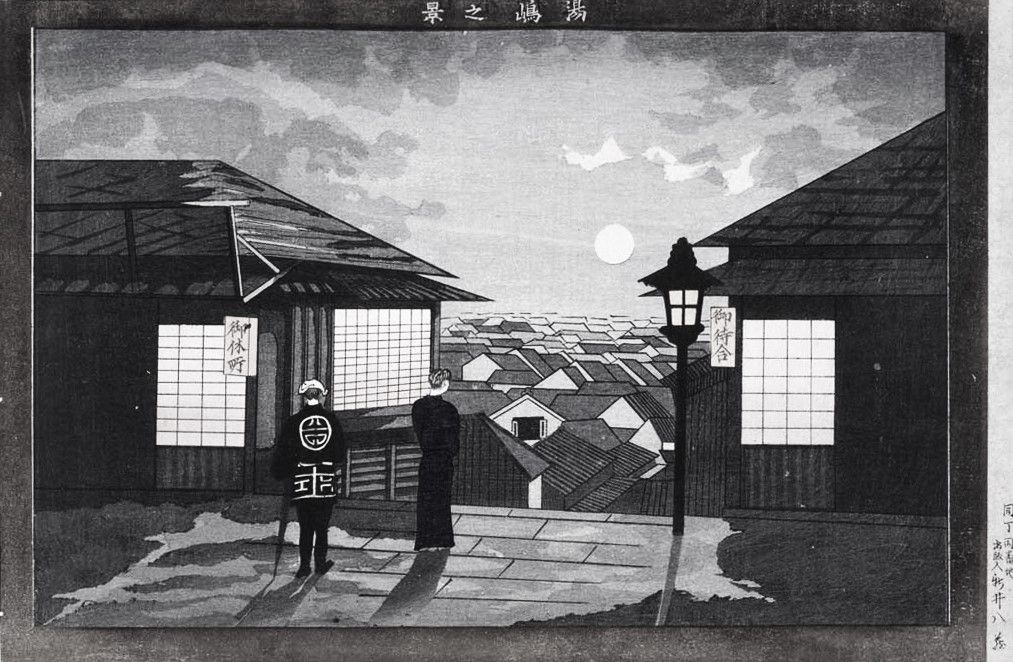
Immeuble Clarté, Geneva, Switzerland, 1930: The fine horizontal 'sudare' and vertical 'senbonkoshi' look of a Kyoto street
Below: Left Immeuble Clarte window. Right Katsura Imperial Villa, Kyoto. Placed side by side, the two seem to almost blend together. Imagine if we remove the chairs, or if we were to place a row of chairs in the Kyoto villa how we would obtain a similar effect.
Below: the 'gotenjo' style grided ceiling at Clarté even replicates the details of Buddhist temple ceiling grid pane surfaces, using textured glass instead of wood.
Immeuble Clarté
One need only go to Todaiji Temple's Daibutsu-den that houses the Great Buddha, and look up towards the ceiling to dispel all doubts as to whether Le Corbusier was influenced by Buddhist temple architecture in his design of Clarté's stairways and halls, in particular Nara temples, where 'gotenjo' grids rise layer after layer to the ceiling high above.
The Example of the Armée du Salut (Salvation Army), Cité de Refuge, Paris, France, 1929
First photo, Le Corbusier, Armée du Salut (Salvation Army), Cité de Refuge, Paris, France, 1929. Followed by Konchi-in, Nanzenji Temple, Kyoto, early 17th century.
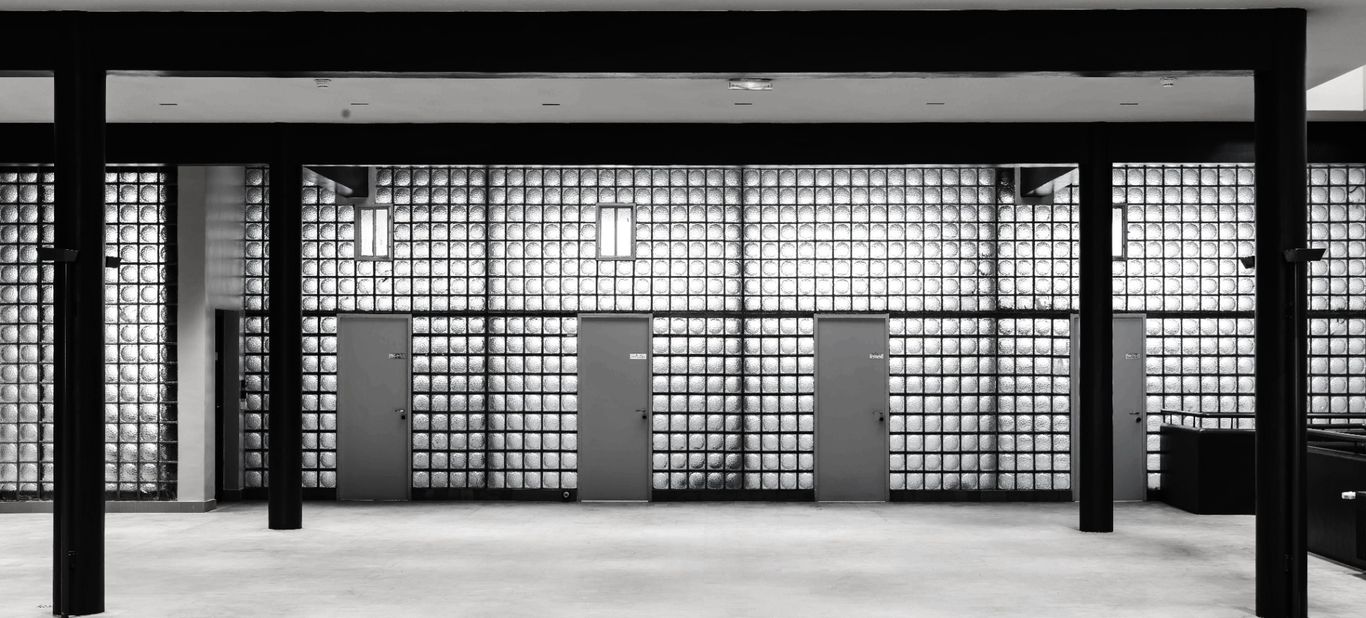
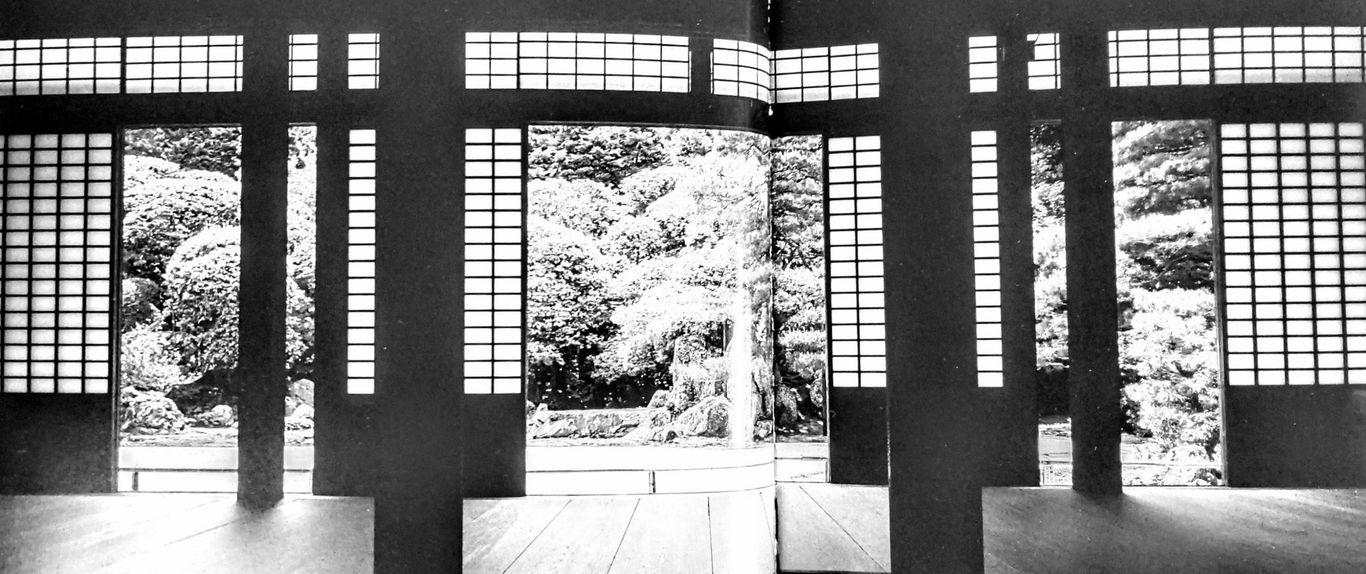
Below: Koshi style framing in the Armée du Salut (Salvation Army), Cité de Refuge, Paris, France, 1929. The grill spacing in the upper left of the photo is slightly wider than that found in Japan, but various types of spacing 'kankaku' can be found according to the thickness and depth of the grill boards. The proportions of the grid to the right can be frequently spotted in Japan.
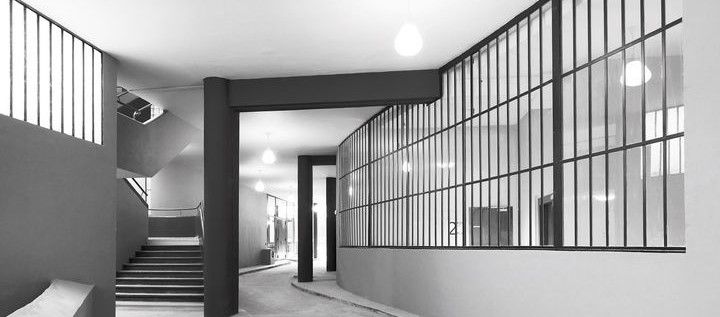
Comparisons with Japanese architecture below. In the Japanese houses below, heavy, massive exposed pillars and beams darkened with smoke intersect above, while below, delicate wood ranma and shoji screens creating lines and rectangles of varying design, situated at different heights due to lighting needs and angles, are integrated as one design as in the Cite de Refuge interior shown above.
Petite maison au bord du lac Léman, Corseaux, Switzerland
"There is actually more sense in this method than may seem at first glance. In this tiny house of 650 ft.² there is a window 33ft. long and the reception area offers a perspective of 45 ft. Movable partitions and disappearing beds permit the improvisation of guest accommodations." (From Le Corbusier's Complete Works, volume 1, 1910-1929) So writes Le Corbusier of this compact house which in various ways, such as movable partitions and disappearing beds reflect features of Japanese homes with their sliding shoji partitions and stored away futon-beds. Even the appearance of the partitions, as shown below, look identical to Japanese byobu of simple homes in Japan, except of course, the addition of metal locks visible on the side. However, on second thought, since the Meiji period, similar modifications of Japanese furnishings and 'tategu' were occurring in Japan in like fashion. Thus Le Corbusier's modernized Japanese elements cannot be said to be necessarily new. Indeed, the entire conception of the house, a simple, affordable, long, one storey structure is reminiscent of low income 'nagaya' (literally 'long house') homes -- though enlarged and 'airlifted' to a marvelous resort setting. The nagaya house of Japan, each built along the same lines, was the closest thing to quickly and mass-produced housing in the Edo period.
The use of Japanese Style Asymmetry, as seen in Chashitsu (tea house) Window Placements
Besides his five points, his modulor concept, and his preference for raising buildings on stilts, another key characteristic of Le Corbusier's work is his constant use of asymmetry. That use of asymmetry extends to many facets of his work, in his plans and elevations, as it does in Japanese architecture. Japanese asymmetry was early on regarded as one of the defining features of Japanese art and architecture, and perhaps no other culture has practiced it so long and artfully as Japan. That asymmetry is one that often occurs in multiple geometric planes which jut out and intersect with each other. The Hasso-an tea house (below center) is a good example of this.
Maisons Jaoul, Neuilly-sur-Seine, France, 1951 juxtaposed with famous Japanese chashitsu windows.
Below: Windows of Couvent Sainte-Marie de la Tourette, Eveux-sur-l'Arbresle, France, 1953, between Japanese chashitsu (tea house) windows.
The Chashitsu as Model and Microcosm for Le Corbusier
Cabanon de Le Corbusier (Roquebrune-Cap-Martin, France, 1951) compared with Japanese tea houses.
While the design and architectonics take from those of a chashitsu, the philosophical conceptualization of absolute economy reminds one also of Kamo no Chomei's classic Hojoki, written in 1212 (in English translated as: The Ten Foot Square Hut, in French: La Cabane de dix pieds carrés) which ranks among the most renown literary works of Japan.
Note on the Hojoki in Western languages: Translations began to appear from the late 19th century, starting with Natsume Soseki's version (1891) and one based upon it by his professor at Tokyo University, James M. Dixon (1893). Itchikawa Daiji's Eine kleine Huette, Lebensanschauung von Kamo no Chōmei came out in 1902 (Berlin: C. A. Schwetschke und Sohn); A. L. Sadler's The Ten Foot Square Hut and Tales of the Heike in 1928 (Sydney: Angus and Robertson Ltd), was the standard for decades in English. Other translations, to name a few more, include those by Minakata and F. Victor Dickins (1907) and Alexander Chanoch (1930); even an Esperanto version was done by Nohara Kyuichi (1936).
Here is are a few passages from Chomei on his cottage (Sadler's translation):
"If I compare it to the cottage of my middle years it is not a hundreth of the size. Thus as old age draws on my hut has grown smaller and smaller. It is a cottage of quite a particular kind, for it is only ten feet square and less than seven feet high... All the joints are hinged with metal so that if the situation no longer pleases me I can take it down and transport it elsewhere. And this can be done with very little labor, for the whole will only fill two cart-loads, and beyond the small wage of the carters nothing else is needed.
... In the eastern wall there is a window before which stands my writing-table. A fire-box beside my pillow in which I can make a fire of broken brushwood completes the furniture. To the north of my little hut I have made a tiny garden surrounded by a thin low brushwood fence so that I can grow various kinds of medicinal herbs. Such is the style of my unsubstantial cottage.
As to my surroundings, on the south there is a little basin that I have made of piled-up rocks to receive the water that runs down from a bamboo spout above it, and as the forest trees reach close up to the eaves it is easy enough to get fuel. ...
In the morning, as I look out at the boats on the Uji River by Okanoya I may steal a phrase from the monk Mansei and compare this fleeting life to the white foam in their wake, and association may lead me to try a few verses myself in his style. Or in the evening, as I listen to the rustling of the maples in the wind the opening lines of the "Lute Maiden " by the great Chinese poet Po-chui-naturally coccur to my mind, and my hand strays to the instrument and I play perhaps a piece or two by Minamoto Tsunenobu. ..."
For those who know the location, views, and ideas associated with Le Corbusier's cabin, the above might ring a few bells...
Indeterminacy, Integration, and Interpenetration of Exterior / Interior Space
Below: Left, Pavillon de l'Esprit Nouveau, Paris, France, 1924. Right, Shokatei chashitsu of Katsura Villa, Kyoto, early to mid-17th century. Note how in both pavilions how one climbs steps obliquely to the structure, which leads to a space that is half indoors and half outdoors, where the boundaries between the two are hard to define--but would not most judge the Shokatei does it more artfully?
Below: Maison Citrohan, unrealized project sketch (1922) compared with a model of the Taian chashitsu (before 1592) to the left; and to the right, a typical traditional house front in Takaoka City, Toyama (19th century). Large eaves or awnings on one side of the tea house, supported by two poles, under which grilled windows and sliding doors open to the exterior as in Le Corbusier's sketch. Round windows to one side were also a common feature not only of tea houses, but of city houses in Japan. Offset entrances to one side in Le Corbusier's sketch, creating asymmetries, as in both the tea house and city house shown here, are a defining feature of Japanese secular architecture.
Below left: Le Corbusier House, Maisons de la Weissenhof-Siedlung, Stuttgart, Germany, 1927; right Miidera, Kojo-in, Kyakuden (guesthouse), Shiga,1601
Another example of Le Corbusier's use of Japanese type approaches to the integration/interpenetration of interior and exterior space, of nature and the man-made. In Japan, structures which are fundamentally long corridors encased by extremely porous walls, or otherwise are open to the exterior supported only by pillars (or some combination of the two) have an ancient history. One of the most famous of these types of structures is the Kojo-in guesthouse, 'Kyakuden' of Miidera, renown for its wall which extends unitarily out into space. An almost 'Escher' type of visual effect is achieved confounding distinctions of interior and exterior.
Views of the outstanding feature of the Le Corbusier's design, i.e., the peculiar 'コ' shaped (konojigata) structure below and one of the analogous elongated spaces of the Kyakuden.
Below: Early color sketches by Le Corbusier (center) show closer resemblance in conception to the Miidera Kyakuden. The emphasis on garden-building integration and interpenetration is more evident and central as a basic idea, where the line between inside and outside is indeterminate and can be modified. Like the Kyakuden, the wall can be closed or opened in various degrees. If one looks carefully, in Le Corbusier's sketch there a pond adjacent to the building, which seems to flow into the structure, much like the effect of the pond of the Kyakuden, which seems to almost run underneath the building.
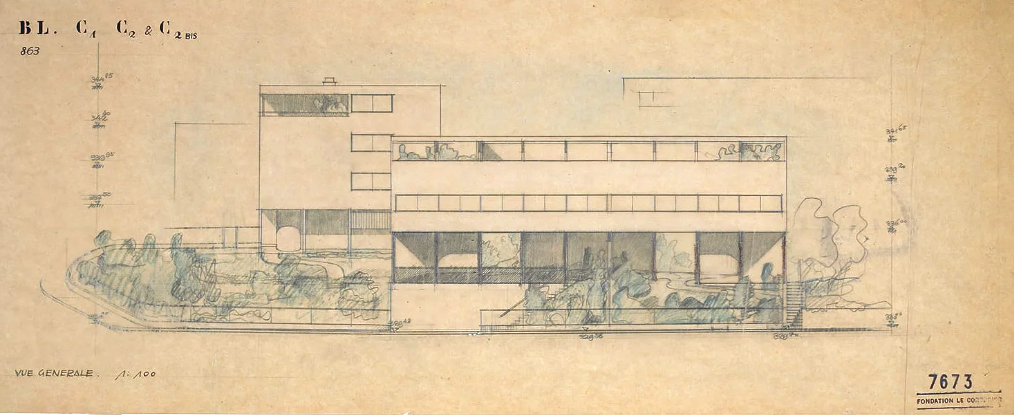
While the important point is the peculiar quality of indeterminate, interpenetrating indoor and outdoor space, it is in the various corresponding smaller, idiosyncratic details that are telltale clues that Le Corbusier was in fact conscious of the Kyakuden, as those shown below. Note the similar full height exterior exposed partitions under the roofs, and the smaller partitions hanging out beyond.
Le Corbusier's House was just one of many houses at the development at Stuttgart. Here we have only looked at one, but that the general project itself was one which was conceived with Japanese architectural principles in mind can be surmised from the extract below by Le Corbusier himself regarding the basic concept of the house interiors:
"The large living room was created by the removal of mobile partitions which were used only at night to convert the house in a way similar to a sleeping-car. During the day the house was open from one end to the other, forming one large room." (Oeuvre complète, volume 1, 1910-1929, www.fondationlecorbusier.fr) Furthermore, the beds, it seems, could be stored away in hidden compartments, like bedding in Japan.
Now for anyone who knows traditional Japan, all of the above certainly sounds like a perfect description of a Japanese interior!
The Confirmation of Eclecticism in Le Corbusier's Work
The example below provides a clear case of eclecticism in Le Corbusier, despite his determined blending and abstraction of borrowed motifs. The bamboo theme, the staggering of narrow vertical pane sizes, an early element of japonaiserie interiors, can be found in the Couvent Sainte-Marie de la Tourette (Eveux-sur-l'Arbresle, France, 1953).
The Round (and oval) Windows of Villa Schwob, La Chaux-de-Fonds, Switzerland, 1916
It is not only in the rectangular windows and grids, or the vertical and horizontal use of grills that a Japanese influence can be detected in Le Corbusier's exterior and interior facade designs. The use of Japanese style round windows, with fine gridwork, in various different planes for both the exterior and interior, along with other more typical oriental flourishes such as garden pavilions with curving roofs (Villa Jeanneret-Perret, La Chaux-de-Fonds, Suisse, 1912), can found in in his early works, which are still relatively traditional in their plans and conception of rooms.
A good example is Villa Schwob, is one of the few designs that the Fondation Le Corbusier admits to an oriental influence in its summary for the work:
"This is the best-know and most remarkable of Charles-Edouard Jeanneret's creations in La Chaux-de-Fonds. Rich in symbols, and with elaborate technical and aesthetic aspects, it is his most accomplished work before leaving for Paris. The ochre brick-work associated with concrete accentuates the oriental character of the house."
Thus it is not only the windows where an oriental influence may be found, but here we will focus on his combined use of round and rectangular windows and grids, especially inside the house. Round windows were often filled with fine grids in Japan, either made of woven bamboo or twigs, or with shoji (with finely spaced kumiko) sliding partitions that could be slid open. Round windows have long been a traditional element of both secular, residential architecture and sacred, Buddhist retreats for meditation in Japan. In the former they were often placed on second floors, off to one side or facing different angles and generally smaller in size than those in temples or chashitsu for tea ceremonies where they were often situated prominently in a single floor structure.
There is no mistaking the oriental flavor of Le Corbusier's round windows on the second floor overlooking the living area. Originally the surrounding walls were painted black, and they give the appearance of lacquered surfaces. The round or otherwise oval windows are placed abundantly at various angles as in the Japanese examples shown below, and in combination with both expansive and small grided window or vent sections, also reminiscent of Japan.
There are various other interior details of Villa Schwob that are very much in an oriental style. Below a vendor with a Japanese cabinet with curved chigaidana shelves filled with goods (left) next to Le Corbusier's built-in cabinet with curved chigaidana shelves (right), and though indistinct, a Japanese or Chinese figurine and incense burner are placed on the shelves. The reader, if he/she is knowledgeable regarding Japanese and Chinese antiques, has probably come across cabinets with more exactly the same configuration of Le Corbusier's shelves.
Below: Le Corbusier's Villa Schwob living room chandelier( right), is almost identical in design to wooden Japanese farmhouse irori fireplace wooden hanging grids. To the left is a illustration from Edward S. Morse's Japanese Homes and Their Surroundings (1886), which has a large central opening for the kettle holder to pass through, but often these farmhouse grids are more exactly like that of Le Corbusier's chandelier, that is 7x7 squares, the kettle chain passing through the middle square. Le Corbusier has placed bulbs hanging from his chandelier, but even in Japan, with the coming of electrification in the early 20th century, old photos show single light bulbs hanging from these irori fireplace devices.
As is often the case with Le Corbusier's designs, his early sketches are often more oriental in feeling than his completed buildings perhaps reflecting the constraints of culture, client wishes, and at times, means. Below, the 'yashiki'-like quality of the compound, with Japanese style lamps in the garden near the entrance as found in shrines, and surrounded by a wall with 'yagura' reminiscent gate posts with curved roofs, and round windows, convey an unmistakable oriental impression.
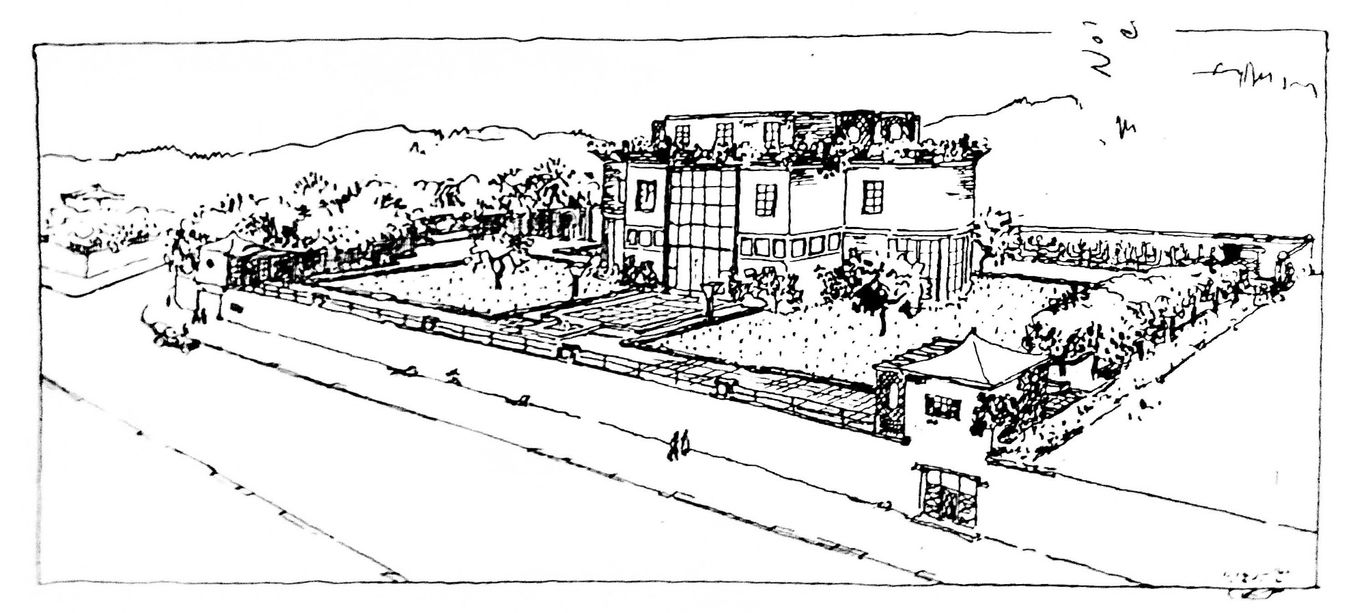
Below: left followed by right side perimeter wall details. Note small details of the 'ikegaki' style fencing in the left image, and the yagura-like entrance gate and lamp within the compound, in the image to the right.
Maison de week-end Jaoul, project, 1937
An example of where Le Corbusier's use of round windows has more clearly Asian connotations is his project for a small week-end house raised on stilts. The facade, when seen in color, in browns and yellows, looks very much like the patchwork of bamboo wall framing, reed and wood wall materials that are reminiscent of Japan, but perhaps even more so of Southeast Asia. Anyone who has spent time in the countryside of Cambodia, for instance, should recognize the analogous nature of Le Corbusier's concept here. His project Maisons rurales (Lagny, France, 1950), is even more so Cambodian in form; but of course minus the roof. On second thought, it was not as if corrugated tin roofs did not exist in Cambodia, thus a more exactly similar design might be found there. By 1950, designs like this could not in anyway be considered original as modern architecture; especially in Japan where traditional facades were being tinkered with in a variety of ways. Even the idea of an inverted roof, the V-shaped roof, shown further below, was not new; for example, Endo Arata's Ginza Hotel utilized the same idea more than a decade earlier than the Jaoul sketch of late 1937.
The Confirmation of Precedents in Le Corbusier's Work
Regardless of whether it be conscious borrowing or not, the recognition of precedents is an important part of any appraisal of the historical value and significance of architectural design. As Le Corbusier has often been acclaimed for outstanding originality and innovation, it is important to establish the simple fact of frequent precedents in his work. Villa Church (Ville-d'Avray, France, 1927), with a typical Le Corbusier Interior, shows suspended, built-in wall to wall cabinetry with horizontally long sliding doors as in Japanese traditional built-in cabinets with ceiling 'tenbukoro' and floor 'jibukoro'. Low seating with minimum height backrests follow the 19th century 'Anglo-Japanese Drawing Room Furniture' of Edward William Godwin and testify to the fact that the fundamental conception of Le Corbusier's interior furnishings had precedents in older, Japan inspired European interior designs. In Japan, the entire center of gravity was lower, where seating was on zabuton cushions, or on the floor, or on backless benches, or foldable, portable seating without backrests, and of course tables were made to be used at these heights, and this influenced ideas of interior design already in the late 19th century. Indeed, the concept of the low 'coffee table' may very well originate from the use of Japanese 'zataku' in Western homes. Also, by the early 20th century, zabuton floor cushions with attached backrests, and furnishings to fit in Japanese scale rooms appeared in Japanese inns and hotels bringing Japanese furnishings one step closer to modern designs.
One of the instrumental personalities in shaping Le Corbusier's interiors was Charlotte Perriand, whose use of Japanese architecture and crafts is well documented in Charlotte Perriand et Le Japon (2011), an exhibition catalogue that is much more than that and a must read for anyone wishing to further probe the strange contrast between Le Corbusier's noticeable disinterest in Japanese architecture displayed to fellow Europeans (including Antonin Raymond, a well-known architect in Japan), and the enthusiasm for it by someone closely associated with him. Though abundant material in the form of books, ukiyoe prints, and photographs of Japanese architecture would have been available to Le Corbusier from his early days, he also had ample opportunity, not only through Perriand, and certainly after 1928 and through most of the 1930's, to discreetly learn about Japanese architecture from some of Japan's most promising young architects working at his office (not to mention those visiting) including Maekawa Kunio and Sakakura Junzo; and after WWII, Yoshizaka Takamasa.
Below from left to right: A scene from the Nenjugyoji Emaki (picture scroll of festivities throughout the year) of the 12th century, showing low drum-like stools surrounding a low dining table; followed by some examples of furniture designs by Charlotte Perriand.
The second image ,showing Perriand's table (1937, photo 1940), is clearly based on a Japanese winnowing device; the chairs are basketwork of the villagers in Yamagata.
The third image is that of a dining room set designed by Perriand, exhibited at the Maison Japonaise, Salon de Arts Menagers in Paris, 1957. The chairs look very much like Japanese hand-held noh drums.
The last image is that of a table designed by Perriand (1941), indistinguishable from Japanese zataku tables made from cut tree trunks, except that the legs are metal rather than wood. The asymmetrically rounded forms of the modern dining table in the previous image is an abstraction of such traditional, organic table forms.
The clear evolution of modern interior design, in the case of Perriand, from traditional Japanese interiors or non-furnishing related folk crafts (re-employed to serve as furniture), is clearly documented in Charlotte Perriand et le Japon (2011, photos below from the same).
Interlocking and Interpenetrating Planes, Lines, and Spaces
Built-in combinations of cabinet and 'floating' shelf formations
We should note here that 'chigai-dana', especially the more complicated versions as the 'Kasumi-dana' of the Shugakuin Villa of Kyoto, contained a working conceptualization of complex form/space interpenetration and structural support; of how walls, floors, ceilings, rooms, might converge and diverge, interlock or separate and change in multiplanar ways. In some of Le Corbusier's sketches there seems to be a chigaidana like approach to trying to derive solutions for a project. Illustrations of chigaidana can be found in various 19th century European and America texts, such as Edward S. Morse's 1886 Japanese Homes and Their Surroundings.
Early sketches by Le Corbusier of decorative elements also reveal Japanese conceptions of interlocking patterns, as shown below. Again, one can find points of commonality between Le Corbusier's designs and the illustrations in Morse's Japanese Homes and Their Surroundings (1886) and Christopher Dresser's Japan: Its Architecture, Art, and Art Manufactures (1882). Similar Japanese patterns would later be described in Arthur Dow's (Ernest Fenollosa's one time assistant at the Boston Museum) Japanese design based Composition (1899), which Frank Lloyd Wright seems to have studied (see Smithsonian Magazine, 'Frank Lloyd Wright Credited Japan for His all American Aesthetic' June 8, 2017) and used as a source for architectural ideas.
Intersecting, colliding and overlapping geometries and planes as illustrated in Edward S. Morse's Japanese Homes and Their Surroundings (1886) as a possible source of inspiration for modernist plans and elevations. Rather than focusing on one to one correspondences, the following examples show how even one book available in Le Corbusier's time, contained numerous images which hint at and lead to some of the basic aesthetic principles and concepts in his most famous work, the Villa Savoye.
This is not to insist that Le Corbusier must have used Morse's book; another possibility is Arthur Dow's Compositions, mentioned above. And as J.S. Cluzel in Le japonisme architectural en France, 1550-1930 (2018) amply illustrates, similar images and records of Japanese structures, including many built in Europe, would have been available in Francophone countries, including Le Corbusier's part of Switzerland, not to mention plentiful German sources. It should be stressed that the type of images in Morse were plentiful in Europe by the early 20th century, certainly by 1914, not only in books of Japanese art and architecture, but guidebooks, exposition memorabilia, a variety of journals, abundant ukiyo-e prints, artist sketches by westerners, photographs, Japanese postcards, and even in elaborate stage sets for opera productions such as Madame Butterfly, or small wood models that were brought home by western visitors to Japan. Morse's illustrations however, are an example of how one reference could have acted as a sourcebook for many of his ideas.
First, a sampling of intersecting, colliding, or overlapping geometric formations in Morse's book.
Compare the above designs with the floor plan and sections of the Villa Savoye below.
Below: Floor plans that have partially overlapping lines, staggered rooms of varying rectangular shapes and sizes fitted together like a puzzle, U shaped circulation spaces, etc. The plan in the middle is that of the mid level (main residential floor above the ground level) of the Villa Savoye, with illustrations from Morse on both sides.
Below: An idea of pronounced 2nd floor extension over the 1st floor facade, to a degree that surprised Morse. The Japanese construction is in some ways more advanced in its use of cantilevering, and that in wood!
Below: Diagonally angled walls, changes in material, window and door size in 3-D asymmetric positioning at different levels, small projecting single shelves, varied intersecting of planar lines.
Below: The clustering, juxtaposition of different volumes and planes with different geometric qualities, such as round and thick contrasted with the thin and porous, and various curved and straight lines converging from more wider open spaces. The similarities are not literal but conceptual, spatial. In the first Morse illustration there is a clustering of structures around a circulation pathway/entryway, including curved walls, delicate structures, and changes in ceiling and floor height. In the second Morse illustration of a garden, there is a convergence and divergence of forms and function, where thick rounded shapes are placed close to fine rectangular grids, combined with changes of floor/ground levels and line spacing of horizontal and vertical elements, also seen in the first illustration.
Below: Long, walled on one side corridor-like garden paths, set at right angles to each other, creating forced turns, plant clusters or grills hiding or partially hiding areas tucked away beyond.
Examples of short partitions extending from the building structures into the garden, obscuring the view of a small area beyond.
Plantings are clustered, leaving large unplanted central open areas. Walls/fences with apertures are frequently changing direction, creating complexity and interest.
A final observation regarding the Savoye and Morse. Multiple planes that are cut and thus of different height, or projecting, or perforated, but nevertheless all connected as a single architectonic entity.
Comparisons with Officially Registered Historic Structures in Japan
Japanese public and hotel baths and the Villa Savoye bathroom
Le Corbusier's bathroom (center) is clearly reminiscent of Japanese baths in hotels, inns, hotsprings, and public baths (sento) across the nation that existed at the time of his designing Villa Savoye. Public baths often were done in light blue with black or grey trim, with scenes of Mount Fuji, or other local scenes of mountains, trees, and lakes. They were low set, and surrounded by open areas with facets for washing oneself before entering the bath. Note how Le Corbusier's bath shares many features with the two examples shown below (left, the Jizoyu in Nagoya, c.1905, moved and rebuilt between 1912-1924; and right, the Waka no Yu in Maizuru, Kyoto, 1903). Even Le Corbusier's irregularly edged low tile wall seems to be a reflection of mountain depictions or hill-like constructions in Meiji, Taisho, and early Showa public and hotel bath interiors.
Opening, curved wall surfaces with grill-work designs
Below: Left Negoroji Temple Great Pagoda, Wakayama. Right Villa Savoye, ground floor.
Low incline and gradient movement, elongated U-shaped pathways between floors
Earlier, we looked at basic structural parallels between the Kagoshima Ijinkan and the Villa Savoye. Another observation should be added. While the Ijinkan still uses steps, each tread is extremely long, with the stairway extending straight and relatively narrow and bending back the same length, with unadorned white walls as in the Villa Savoye, creating a similar relaxed pace and easy feeling of accession without distractions.
Precedents for Aspects of other Le Corbusier Designs
Projecting overhead constructions in grid accentuated open floor plans
Below left, Le Corbusier Maison-atelier du peintre Amédée Ozenfant, Paris, France, 1922. Right: 'doma' area of the Yoshimura residence, Habikino, Osaka, basic design early 17th century, additions until the first years of the 19th century. Note the overhanging cubicle like constructions on the upper left corners of both photos. A ladder is used to reach the small window-like door to the cubicle in the Yoshimura residence, but is not depicted in the photo.
Japanese Castle Style Bays with Small Windows for Defense
Maison Planeix, Paris, France, 1924 and Himeji Castle. Adolf Loos had also followed this Japanese castle style feature, years earlier. The projecting bay and its small window in the Japanese castle was a natural result of protection against attack from which guns or arrows would be fired.
Japanese Precedents for the 'Thick' and Massive: Architectural Brutalism as Japanese Fortress Turned Monastery
Much architectural japonisme focuses on 'thin' structures: wood walls, paper sliding doors, delicate gridwork and the like. Here we look at the japonisme of the thick, not just the thin; the massive and heavy, not just the delicate and light.
Couvent Sainte-Marie de la Tourette, Eveux-sur-l'Arbresle, France, 1953, and Himeiji Castle compared. Dense, thick masses combined with intricate forms, with a pronounced structural overhang.
The general appearance of the priory/monastery, at first glance, might seem to be quite different from that of Himeji Castle. Certainly the foundations are more like a concrete version of the Hondo (main hall) or Hikarido (hall of light) of Ishiyama-dera Temple of Shiga prefecture, or the Nigatsudo of Todaiji, Nara or other 'butai-zukuri' or 'kakezukuri' on stilts built into the sides of hills or rocky cliffs (and in that respect too, it may be surmised that the priory expresses an eclectic spirit). Especially the Ishiyama-dera structures reveal various similarities of detail, not just in the sloping hillside pillars, but design elements that remind one of the grill, gridwork, and windows of Le Corbusier's convent.
Nevertheless, the visual, tactile impact of the edifice is more analogous to that of a fortress, such as that of Himeji castle, of overwhelmingly massive solidity, with heavy, pronounced overhanging eaves, an impression which grows as one approaches and stands at neck bending proximity, looking up. Like the Japanese castle, the convent is visually and structurally divided into two major parts, the massive supporting structures below, and the supported structures above with their fine detailing of grillwork, including protruding rafters/taruki. The pronounced protrusion of the rafter-like elements in Le Corbusier's monastery is not necessary for a concrete structure, but is simply a decorative feature, echoing Japanese eave design. There are elements that may be interpreted as taking from European castles as well, as the double line of recessed windows reminiscent of Chateau de Pierrefonds. But besides that, there is much more in detail, that reflects Japanese structures more than those in Europe.
The Japonisme of the 'Thick' and Massive Continued
The Windows of the Chapelle Notre Dame du Haut, Ronchamp, France, 1950 - 1955 and Himeji Castle, 16th-17th century.
Note below the analogous shapes, irregular placements, narrowing of aperture, etc.
Below: Photo of wall detail with irregular shaped windows at irregular intervals near the ground at Chapelle Notre Dame du Haut, Ronchamp, sandwiched between photos of walls with irregular shaped windows at irregular intervals near the ground at Himeji Castle, Hyogo.



Below: Similar effect of light from Ronchamp windows compared with that of the gun and arrow holes of Himeji Castle at sunrise/sunset.
A note on the 'Bunriha' (Succession Group) of the early 1920's: faint premonitions of the Ronchamp Chapel
We should add that the asymmetric placement of small windows of differing shape and size on curved surfaces appeared in Japan in the 1920's, an age of architectural experimentation in Japan. Furthermore, curving, massed designs with a strong sculptural element and a sense of the organic, reminiscent of qualities that would be manifested in the Ronchamp Chapel, were being created and published by the Bunriha group of architects in Japan at that time. These were also characteristics of German Expressionism, which most likely was an influence upon the Bunriha, but the forms being produced in Japan seem closer in spirit to that of Le Corbusier's than those in Germany.
Below: Left, Murayama Tomoyoshi, beauty salon of Yoshiyuki Aguri, Tokyo, 1926; center column, Bunriha Kenchiku Kai 4th Exhibition, 1924 (photo of exhibits top, close up of one of the unidentified models below); right Yamaguchi Bunzo, Hilltop Monument, model, 1924. In the Bunriha exhibit photos center and Yamaguchi Bunzo's model left, note the emphasis on diagonal or otherwise angled forms in combination with sinuous and rounded shapes with flat cut surfaces and recessed areas, as well as 'protuberances' from the main body of the structures, qualities shared with the Ronchamp Chapel.
Sanjusangendo in the Shadows of Chandigarh: The Extended Play of Volume and Shadow that was Japan
Text to be added.
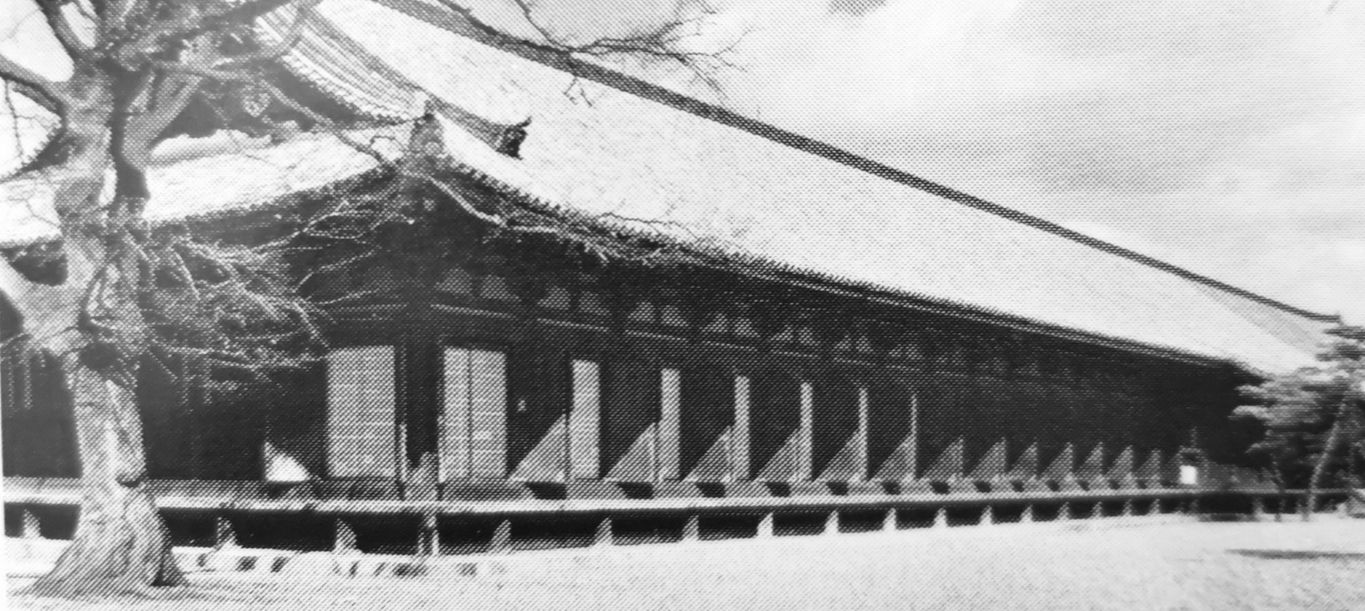
Sanjusangendo, Kyoto

Palace of Assembly, Chandigarh
Below: Accentuation and changes in scale
Below: From a hall of divinities that is the interior of the Sanjusangendo to the abstraction and the shearing away of cultural markers in the interior of the Palace of Assembly, Chandigarh.
The Adaptation of Singular, Voluminous Forms found in Japan
While Japanese traditional architecture is often perceived as one of straight lines and delicate grids, extremely sinuous, voluminous forms, ranging from the enormous 'o-shimenawa' hanging in front of Shinto shrines such as Izumo Taisha (Shimane) or Miyajidake Jinja (Fukuoka), or huge 'ebikoryo' beams bent like the backs of shrimps in Buddhist temples or farmhouses, or the ever-curving thick walls of Okinawan 'gusuku' castles, or the slinky or dragon-hump like Kintaikyo Bridge of Iwakuni (which even Giedion thought fit to include in his book on modern architecture), or the once ubiquitous 'tourou' garden lanterns, great 'land' sculptures of arched and bulbous stone topped by sometimes enormous disks, and of course all that is Middle Jomon and Kofun Haniwa and Heian Suwa--all this is also a prominent characteristic of traditional Japanese design.
The voluminous nature of purely indigenous Japanese roof design, as that of the Ise Shrines or thatched farmhouses, particularly in northern Japan, appeals to the senses much in the same way Le Corbusier's Chapelle Notre Dame du Haut, Ronchamp (France, 1950 - 1955) does with its roof, in its 'sori' type curving and thick thatched-roof like roundness. Japanese architecture across the land echoes the shapes and volumes of Ronchamp, even the tones and texturing of the roof. The particular, uneven curve of Ronchamp's roofline even appears on Japanese castle walls. Among farmhouses, the Nara Residence shown below, right, is one example of a roof sharing a similar voluminous quality to that of Le Corbusier's church. While Ronchamp by simple measurements might outsize the Nara Residence, the farmhouse creates an analogous impression when viewed in isolation, on its own ground. It is larger than it might seem from the photo; raised on a stone platform with a magnificent entrance which, only because of the magnitude of the roof, is dwarfed in size due to it.
Enormously thick thatched roofs of various kinds exist in Japan, where the sculptural intent of the thatching is self-evident. When viewed from the side, the asymmetric thatched roofs of gates and shrines (the front usually being longer than the back, often with subtle variations in thickness and curvature) cannot but help remind one of Le Corbusier's roof design. The Ise Shrines should also be compared with Ronchamp; for who could deny that the thick exposed 'munamochi bashira' pillar of the Shrines, standing forward on their own, uninterrupted from ground to ridge board, along with their play of light and shadow, are not simulated by the great white vertical edge and recess of Ronchamp's wall?
Metonymy and Magnification
Another, related example to the case above is Le Corbusier's design for the Stade of Baghdad, Iraq, designed in 1956 (but only built many years later between 1978-1980) which included an indoor sports complex now called the Baghdad Gymnasium, shown below.
Here, Le Corbusier appears to use the technique of 'metonymy and magnification' (discussed in The Japonisme Museum Newsletter), also employed by ukiyo-e arts, in separating one part of a whole to represent the whole, blowing up that one part to enormous proportions.
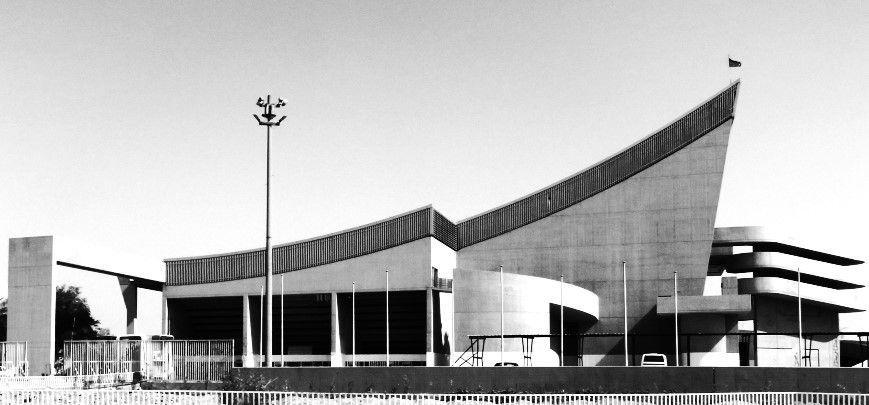
The sweeping, curves of the gymnasium roof, where a smaller jagged edge is followed by a much larger and more curvaceous jagged edge follows the roof pattern of Japanese shrines and temples. Note how in the case of Kushida Shrine (Fukuoka) that the roof line connects with other shrine structures, creating one continuous roof with interesting angulations.
Below: the roof lines of Kushida Shrine (left) compared with the roof lines of the Baghdad Gymnasium (right). Note how the clear delineation of the shrine roofline with contrasting bands and lines is utilized by Le Corbusier in his gymnasium roof design.
The curvature and rhythm of the small and large points is so similar that Le Corbusier's roofline on the right blends into that of Kushida Shrine to the left, so that they almost appear as a contiguous and unified form in the images below.
The continuous, elongated, ski-jump-like roof surface of the gymnasium below, when viewed from above, appears as an inverted version of a Japanese temple or shrine roof as that of the Mikage-do (Koya-san Temple) shown on the left.
Even the conception of the front facade and sides of the gymnasium are not unlike that of a temple or shrine, which too is porous and open in front, though with pronounced structural supports which define the entrance, while the sides are divided by clearly marked wall segments and are more closed in nature.
Le Corbusier's Keen Awareness of the works of Contemporary Architects in Distant Countries
Kawakita Renshichiro's Ukrainian Theater Project, May, 1931, and Le Corbusier's Palace of the Soviets Project, 1932.
A case can be made that Le Corbusier was well aware of the works of his contemporaries, especially his Japanese contemporaries, and that their design conceptions at times seeped into his projects shortly after their completion or publication.
An interesting example is that of the entry of Kawakita Renshichiro (1902-1975), a 29-year-old architect from Japan, for the State Ukrainian Theater, who was awarded the fourth prize in May 1931, outranking world-famous entrants such as Walter Gropius, Norman Bel Geddes, Hans Poelzig, and Marcel Breuer (as noted by Umemiya Hiromitsu of Kobe University, 2022.12.12, Docomomo Journal, 'The International Competition for the State Ukrainian Theater'). Kawakita was a theorist as well, and a fairly prolific writer. His Kosei kyoiku taikei on constructivism, for instance, co-authored with Takei Katsuo, is a beautiful book, filled with explanations and ideas.
The early designs of Le Corbusier, show none of the most striking features of the completed design: the suspension of the the roofs with a parabolic arch, and particularly prominent, huge L shaped devices that stood outside and loomed over the buildings. The L-shaped structural supports were one of the key features of Kawakita's design for the Ukrainian Theater, and one of his ideas outlined in previous project ideas of his as well.
Le Corbusier has increased the number of these L-shaped structures in his final design for the Palace of the Soviets, but the similarities between Kawakita and Le Corbusier can still be discerned, despite Le Corbusier having 'stretched apart' Kawakita's design to fit his site specifications. From the very start Le Corbusier follows the general layout of forms shown by Kawakita, though some similarities are dropped to be replaced by other features also found in Kawakita. But in general there is a progression from the sketches of Nov. 1 to Nov. 22, 1931 (that is well after the publication of the results of the Ukrainian Theater design competition) and from there to the later model of convergence with Kawakita's design.
In the sketch of Nov. 1, Le Corbusier follows the asymmetrical perimeter treatment of Kawakita; but in his Nov. 22 sketch focuses on the major elevated circulation paths on both sides around the central spaces as in Kawakita; there is also a closing of the gap between the two major structures, which follow Kawakita: A) the raised, longer and narrower 'pie slice' shaped structure connecting to the B) more wide also raised pie slice shaped structure. Even the knob/wedge like feature jutting outwards of the wider piece of pie is added -- all bring the design closer to that of Kawakita's. Furthermore, Le Corbusier's intermediary structures between the two pie slices almost appear to be accordion like expansions of Kawakita's compacted building shapes. From there, Le Corbusier's finished design model grows even closer in conception to the Ukrainian model design with the addition of the L-shaped suspension devices.
In turn, Kawakita's design seems to echo the form of the 'zenpokoen' shaped kofun of the 3rd to 6th centuries, those giant Japanese graves of pyramidal proportions (some greater in terms of mass, but much less in height). That is to say, modernist Japanese designs, which may have influenced other modern architects, still find their originating impulse, though perhaps unconsciously, in forms born out of the creative imagination of the ancient past. And once again we see that Le Corbusier's fundamental design conceptions, in their formative state, at the esquisse stage, are almost always highly congruent with archetypal Japanese design forms.
Similar, though perhaps not as self-evident similarities can be found between various projects of Le Corbusier's and his former Japanese apprentices, such as Sakakura Junzo and Maekawa Kunio. Of course, they themselves firmly believed they were following Le Corbusier's footsteps; yet the sequence of events at times (from the 1950's onward) indicates otherwise.
Take for instance, Le Corbusier's Couvent Sainte-Marie de la Tourette (Eveux-sur-l'Arbresle, France, construction from 1956 to 1960) discussed above, in relation to Himeji Castle. Even those aspects of the priory/monastery not found in traditional Japanese castle or temple construction can be traced, in terms of constructional tendencies, from contemporary architecture in Japan from the preceding years. For instance, Sakakura's Institut français du Japon - Tokyo (1951) which, though much smaller in scale and plan, is moving in the same constructional and aesthetic direction as Le Corbusier's monastery, with its more than necessary thickening of concrete structural elements and the attachment of contrasting, massive sculptural forms to the main building, and other premonitions of architectural brutalism.
Certain facade characteristics such as the use of gridwork and deep eaves, aspects of plan, and the use of natural light in the priory remind one of Maekawa Kunio's Kanagawa Prefectural Library and Music Hall, also built on a slight hill, whose designs were based on the 1952 design competition for the project, with construction starting in 1953 and the building completed in 1954, again, much earlier than the La Tourette priory.
Finally, of equal if not greater importance, is Tange Kenzo's Hiroshima Peace Memorial Museum (shown further below), designed in 1949 and completed in 1955 (the designs being public from late 1949). The use of different sized, diagonally or otherwise asymmetrically angled concrete slabs as pillars upholding the museum, and the museum's vertically long, unevenly spaced concrete slats separating the windows, are both reflected in Le Corbusier's La Tourette Priory.
While very general parallels with, for example, centuries old clifftop monasteries (e.g. Dionysiou) of Greece or other historic European buildings are eagerly pointed out by some, they hardly explain the differences between such medieval designs and the modernity of Le Corbusier's, whose total package of elements, in terms of design conception, construction, and detailing, can all be found in Japanese architecture, though Le Corbusier has often multiplied and repackaged them.
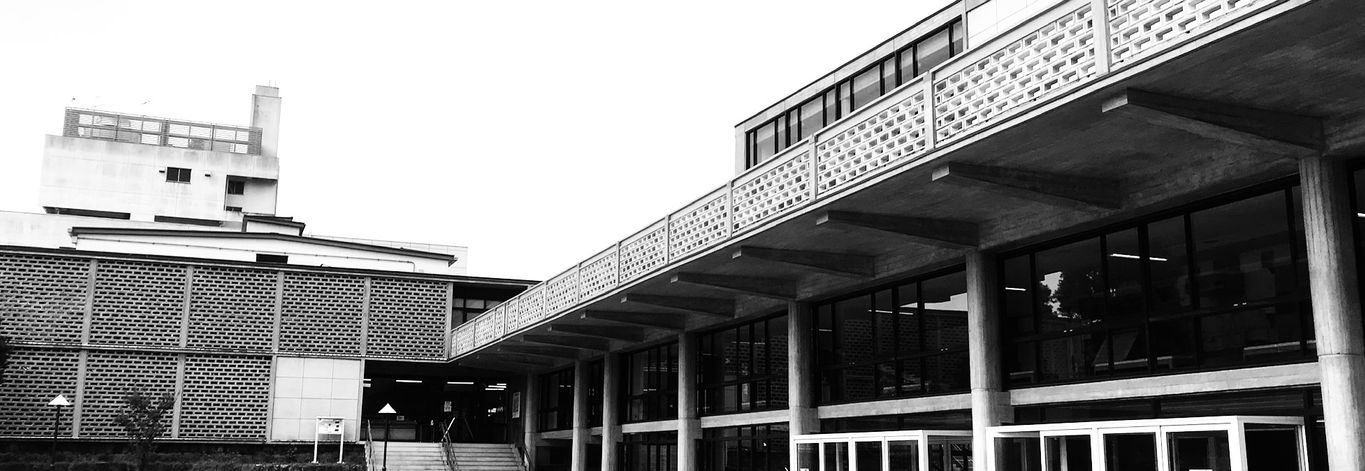
Above: Maekawa Kunio's Kanagawa Prefectural Library and Music Hall, 1954. Below: Le Corbusier's La Tourette Priory, 1960.

It is important to note again that the ideas of Tange Kenzo, Sakakura Junzo, and Maekawa Kunio, just as we saw with Kawakita Renshichiro, very often have their antecedents in ancient, archetypal Japanese architecture. The Kanagawa Prefectural Library and Music Hall, designed by Maekawa, which we have mentioned above as an instance of Le Corbusier following the example of one of his 'disciples', simulates the architectonics of the Ujigami Shrine of Kyoto, dating from the late Heian Period. The similarities are multifold and obvious, but the equivalence in the conception of an elevated, stepped approach to a porous, finely grided facade divided into two rows of clearly delineated large square/rectangular sections, from which light seeps in and maximally fills the space with a combination of filtered direct and indirect light, should be emphasized. This 'Ujigami Shrine Model', if we may call it that, is one that has been fully utilized by others as well, such as the Finnish architect Juhani Pallasmaa. Thus, as discussed in multiple issues of The Japonisme Museum Newsletter, the japonisme influence may occur either by direct (from observing the ancient source) or indirect (from observing a more modern source influenced by it) transmission, or both.
Along the same lines, we should probably mention in closing to this discussion of modern Japanese precedents for the Couvent Sainte-Marie de la Tourette, the Shimane Prefectural Museum (1958) by Kikutake Kiyonori. Contemporaneous with Le Corbusier's monastery, and sharing certain structural resemblances, it's basic form was one that Kikutake had conceived as influenced, according to his own words, by the design of Izumo Shrine (Sanin Chuo Shinpo, 2021.2.12). That influence is especially apparent when one looks at the east and west elevation drawings, which in some respects are almost indistinguishable from that of a Japanese shrine; but the thick roof has been changed into a box-like interior space.
Precedents for the curved, interior ramp: Entsusanso-do Temple, or better known as the ’Sazae-do’ of Aizu-Wakamatsu, Fukushima, 1796
Even Le Corbusier's trademark curved ramp has its precedents in Japan. Indeed, the Sazae-do may be the oldest and still extant extensive curved ramp in the world, and an interior ramp at that (and, by the way, worthy of being a UNESCO World Heritage Monument). It is a true ramp; the slats have been added only to prevent people from slipping and sliding down. This is a unique multidirectionally-oriented, curved ramp in an imaginative structure ahead of its time; and might also be considered a forerunner of architectural Expressionism.
The Early Designs of Charles-Edouard Jeanneret
Confirmation of Specific Design Transmission, whether by Direct or Indirect Means
An example of 'direct transmission': Le Corbusier's lamp for Madam Schwob, an electrified 'bonbori'
One of the clearest examples of literal borrowing from Japan in Le Corbusier is his 1922-23 design of a lamp for Madam Schwob's apartment, which is indistinguishable from a Japanese four sided bonbori lamp, except for the fact that it has been electrified, and that forged iron and etched glass has been substituted for black lacquered wood and washi (Japanese paper). Yet even here, Le Corbusier's use of etched glass creates an impression close to that of Japanese paper. This rather direct imitation is similar to what Peter Behrens had done with Japanese hammered kettles, to which he attached an electrical cord (see section on Peter Behrens on the previous page of this website). The four sided bonbori was the more ubiquitous form in earlier days, as in the Hiroshige print (Yoshiwara Nakanocho Yozakura, of the Tokyo Meisho series, 1840's); but nowadays bonbori are found primarily in shrines and temples, where it is often of the six sided type. However, even today, during festivals, such as those in Kamakura, four sided bonbori are lined up in great numbers. In Le Corbusier's time, they were still a commonplace sight in Japan. By the way, note also in Hiroshige's print the extremely long ribbon window, above the bonbori lamps. It is longer than anything Le Corbusier designed, and a century earlier!
The use of traditional Japanese textile patterns, a case of possibly indirect or direct transmission: the Bishamon-kikko
Le Corbusier uses a flexible, adaptive pattern in his designs (first row, left, bottom part of the drawing), and next to it is a excerpt from Eugene Grasset's Ornamental Composition (1905), with a similar design, which is none other than the centuries old 'Bishamon-kikko' pattern of Japan.
Le Corbusier mixes this pattern with other designs, as is done in Japanese kimonos. The Bishamon-kikko is considered an auspicious design, one with a long history, carrying multiple connotations of good fortune, and comes in endless, elegant variations. One of them is in Edward S. Morse's Japanese Homes and Their Surroundings (1886) along with other patterns that seem to be echoed in Le Corbusier's ornamental sketches.
Combinations of the 'Bishamon kikko' and 'yagusuri' type patterns
'Below: From one book such as that by Edward S. Morse, we can find many of the elements that comprise Le Corbusier's early decorative work. Note the design of bent, zigzaging lines on the right side in Le Corbusier's drawing, shown earlier. Morse's example of a Japanese window design is one indication of the various bent zigzaging type art forms, including byobu screens, that existed in Japan. One of the more common kimono motifs was the 'yagasuri' pattern of densely packed arrow feathers, a simple version of which is shown below. There are also more complex arrow feather designed textiles, and just as in Le Corbusier's drawing here, it was common to juxtapose or mix these symbols in kimono designs as in the Noh kimono shown further below.
Le Corbusier’s use of 'tomoe' ( 巴 )type patterns, and the Japonisme of Eugene Grasset
Regarding the sketch below, first row left: A "decorative design based on underlying unit system of contiguous circles apparently inspired by Eugene Grasset" according to H. Allen Brooks in Le Corbusier's Formative Years (1996, Fig. 291). Of course not one mention of Japan in the book, nor does the author realize that Eugene Grasset, as well as Auguste Perret, Adolf Loos (whose writings Perret introduced him to), Peter Behrens, and Viollet le Duc (see Nishida Masatsugu, 'Pierre vs Bois: Construction en bois dans l'histoire de l'habitation humaine', in V. Delpech (ed.) Viollet-le-Duc: Villegiature et architecture domestique, 2016; also discussed in J.S. Cluzel (ed.) Le Japonisme architectural en France, 1550-1930, 2018) some of the most influential designers of his younger days, were showing clear indications in their designs that they were conscious of Japanese art. We have already introduced the japonisme of Perret, Loos, and Behrens in the previous page of this website, and regarding Viollet le Duc the aforementioned material is suggested. Let us briefly discuss Grasset as it relates to Le Corbusier.
A note regarding Eugene Grasset, an important early influence on Le Corbusier's education
As Klaus Berger, in his section on Grasset in Japonisme in Western Painting from Whistler to Matisse (Cambridge Studies in the History of Art, 1980, 1992), "Grasset had been studying the graphic expression of the Japanese more closely than any of his continental colleagues." (p.198) He had visited Samuel Bing's Japanese exhibition of 1890, which seems to have been an important stimulus in consolidating his artistic approach, using also Gothic motifs,
"But he was too much aware of the disciplined structure of the 'new' reality not to acknowledge the unique consistency and depth of Japanese design, and he gave it pride of place over all his other sources. Here, for him, lay the core of the new design, in the use of line as a representation of force, movement and life; witness his Ornamental Composition. The deliberate asymmetry of the Four Leaf Clover poster, its undulating lines, its format, its cropping, its ornamentation, its abstract presentation of the object: all this is nourished by the artist's familiarity with the universe of Japanese art. This is the sole determining impulse; the rest is no more than a historical prompting." (p. 199)
In the beautiful catalogue of the Hokusai and Japonisme (2017) exhibition held at none other than the Le Corbusier designed National Museum of Western Art in Tokyo, intriguing examples of Grasset's very literal copying (as well as Paul Klee's) of Hokusai's sketches are provided, such as his 'Birds and Bat' (1904-13) which replicates images of Hokusai's Quick Lessons in Simplified Drawing volumes 1(1812) and 2 (1814), with Grasset writing at the top "Procédés Japonais" and nearby "Hoksai"; or otherwise extremely similar images such as his 'Swirling Waters' (1890-1903) labelled by Grasset in pencil as "Trad. Japonaises" (probably an abreviation for 'Japanese traditions') which follows Hokusai's Modern Designs for Combs and Pipes, vol. 1 (1823).
As the catalogue biography relates, "According to his own memoirs, Grasset's first encounter with Japanese art came at the beginning of the 1870's. The young Grasset, newly arrived in Paris, seems to have then first discovered the Hokusai Manga that was widely popular in Paris. The late Grasset's collection of Japanese art was auctioned in March 1918. The auction catalogue indicates that not only did he own a complete set of the Hokusai Manga, his collection also included numerous ukiyo-e works. A photo of his studio taken ca. 1896 shows large numbers of ukiyo-e works hanging on the studio walls." ( p.360. See also Grasset's illustrations for Emile Bergerat's short article, 'Causerie. Le Japon a l'Exposition universelle' in Les Chefs-d'oeuvre d'art l'Exposition universelle, vol.1, 1878 for an example of his obvious familiarity with Japanese art.)
Thus whether Le Corbusier worked from direct samples of designs from kimonos, Japanese pattern books, or the Hokusai Manga (or perhaps from perusing European/American books such as those by Christopher Dresser as Robert Schmutzler indicates), or whether, on the other hand, he worked with Japanese influenced designs by Grasset (i.e. indirect transmission), it is in any case unreasonable to deny the possibility of Japanese influence in Le Corbusier's work. Frank Lloyd Wright, for one, is believed to have used Hokusai's system of circles as a method of deriving his 1938 plan for the Ralph Jester House (Smithsonian Magazine, June 8, 2017).
Le Corbusier's designs and tomoe patterns
Below: a small sampling of tomoe monsho (crests)

Eugene Grasset and Japanese art
Learning draughtsmanship from Hokusai
Below: examples of Grassets study sketches of Hokusai's forms as identified in Hokusai and Japonisme (National Museum of Western Art, Tokyo, 2017). Now, considering that an esteemed designer of the day and the author of an important text Charles-Edouard learned from dilligently applied himself to the study of Japanese artistic forms, is it hard to believe the student of those texts might have done so too?
Adopting the forms of Isoda Koryusai
Below: Grasset's use of the vertically long 'hashira-e' (pillar picture) format in his 'Extravagance' (1897), used in Japan for hanging on square cut supporting pillars (i.e., piloti). The hashira-e was a well-established genre by the mid-18th century. Subject matter is most typically of the 'bijin-ga' (a beautiful woman picture) type, and often she holds a fan or other such object (below an example of a flower-like duster, 2nd from left by Isoda Koryusai 1735-1790?, famous for his hashira-e) to add interest to the picture, and usually there is a secondary subject of either plant, animal, or supernatural nature. Grasset has his bijin fronted with flowers that echo Koryusai's duster in form, holding a fan and a pair of spectacles. The overall color scheme may take from Koryusai picture to the left as well.
Catching the fire of Tsukioka Yoshitoshi
Below first row, center: Grasset's The Century Magazine cover, 'A New Life of Napoleon Magnificently Illustrated' (1894), and his 'Joan of Arc' (starring) 'Sarah Bernhardt' (1890) compared with Tsukioka Yoshitoshi's (1839-92) vivid depictions of smoke and fire in his 'Mirror of Famous Generals of Great Japan' series (Dai Nippon Meisho Kagami, 1880), 'Yoshitoshi's Courageous Warriors' series (Yoshitoshi Musha Burui, 1883), and 'One Hundred Aspects of the Moon' series (Tsuki Hyakushi, 1886). There are numerous parallels with Yoshitoshi's style in his latter works, particularly from the 1890's onward. Yoshitoshi was the star of the Meiji ukiyo-e masters, and as his prints were bestsellers, they were accessed as easily, if not more easily, by European collectors in the last decades of the 19th century, compared to earlier artists such as Hokusai and Hiroshige. Yoshitoshi and his kind were most likely a major impetus behind the sudden growth of poster art in the 1880's in Europe, as he did various poster type prints as well, of which his series on firemen may rightly be called a masterpiece of modern style graphic art.
Pursuing the feminine ideals of Utamaro
And of course Utamaro is there in Grasset. Does the relationship of the two images need an explanation?
A quick genealogy of japonisme to Grasset
Again, no explanation is required to see the clear lineage of art from Japan to Grasset, shown below.
There is so much more that can be pointed out regarding Grasset's japonisme in terms of framing and composition, motifs and patterns, and especially his depiction of leafless tree branches, as in his black and white prints for Jules Massanet's Eclarmonde, but the examples provided here should suffice to make the point clear as to the vital role of Japanese art in a Swiss artist influential in the artistic development of the younger Le Corbusier.
Le Corbusier's use of 'chokin' and other Japanese mixed metal craftsmanship depicting common Japanese design motifs
Charles-Edouard Jeanneret in his days at the Ecole d'Art seems to have imitated Japanese metalwork crafts, such as the 'chokin' (彫金)technique of using mixed metals for making tsuba (sword guards), metal inro, netsuke, vases, sculptures of birds and insects, figurines, and in the Meiji period, leather purse clasps, watchcases, and other small objects, many of which were exported to Europe.
A great variety insects were depicted, and it was not until Japanese art reached Europe that insects were considered befitting motifs for personal jewelry and accessories to be carried on one's person in view of others. Inro, like watchcases, were hanged from the waist, as personal ornaments, and the combination of insects on bamboo, rocks, or other natural surfaces was commonplace. As an example, a cicada on bamboo, the Semi Makie Take Saya Inro (mid-19th century or earlier, engraved signature 寛哉 龍斎) is shown below. The author has seen an extremely similar combination of winged insect on a similar rocky surface as that of Le Corbusier's watchcase design (1906) done as a student at the Ecole d'Art, but has not been able to locate it (possibly part of the Baur Collection in Geneva). The angular, abstract looking depiction of a rocky surface, is in fact a standard mode of depicting a rocky surface in Japanese art, of which there are actual rock formations looking precisely like Le Corbusier's design, in coastal areas of Japan as those in Fukui prefecture.
A somewhat similar design of rocks on a Japanese sword guard, or tsuba by Goto Ichijo (late 18th - mid-19th century), is provided, as well as a sketch from Hokusai's Manga, to show how in oriental painting rock formations were drawn in overlapping sharp angles as in Le Corbusier's watch. The mixture of design motifs, the use of different colored metals, somewhat reminiscent of 'shibuichi' (silver bronze 四分一) and 'shakudo' (gold bronze 赤銅 literally red bronze), is unlike that done in Europe until that time, and it is highly unlikely a student could build up whole traditions, that took centuries to evolve, from scratch without models.
Another indication, that in his student days Charles-Edouard was quite fascinated by Japanese art, is his extremely detailed and faithful drawing of a Zao Gongen Buddhist deity from a Japanese etching (shown at the top of this article);--for there is a precision and meticulousness in his rendering when one looks at a high resolution image of it (not available) that is quite unlike his usually quick and impressionistic sketches of non-Western artifacts.
A note on Charles L'Éplattenier (1874–1946) and his Japanesque design
One of the important figures in Le Corbusier's early years was his instructor for many years, Charles L'Éplattenier. Despite the fact that all of the most well-known names in Art Nouveau have been documented as having been influenced by japonisme, hardly anything has been said about L'Éplattenier's 'Style Sapin' and its parallels with Japanese design. While his motifs in painting, like Grasset, take mostly from historical European sources, a closer look at some of his sketches, such as ornamental and furniture designs, reveal a strong affinity to Japanese forms. Below is one example, of a drawing of a table by L'Éplattenier, which most likely derives from Japanese lacquered 'taka-ashi-zen' tables, of which a few samples have been provided for comparison. These come in limitless variations, some most likely closer in detail to L'Éplattenier's design. This sort of dining ware, traditionally in black and red, was exhibited in universal exhibitions in Europe, and such items were easily obtained by visitors to Japan from the latter 19th century onward, even possibly as minatures (as part of hina doll sets).
William Ritter (1867 -1955), Charles-Edouard Jeanneret's 'mentor' c. 1910-1917 (frequent correspondence thereafter)
Text to be added.
The japonisme of suiboku pictures, especially the sansui genre: the example of William Ritter
Ritter following the classic formula passed down for many centuries in his 'View of Lake Neuchatel' (1886): a waterside solitary rocky clump on a beach with vegetation sprouting up in two or three distinct clusters, against a wide, quiet expanse of water blending with sky. His use of suiboku 'notan' (dark and light) should also be recognized.
The influence of originally Chinese style charcoal ink painting, or suiboku painting, especially the 'sansui' (mountain and water) genre, has not been sufficiently explored in European painting, and not enough emphasis has been placed on the influence of exposition, museum, shop, traveler, and collector holdings of scroll paintings, as well as to Japanese books and European articles (containing such forms of Japanese art) as artist resources, from the 1880's onward. Too much attention has been paid to the same names such as Bing, Goncourt, and Bracquemond who generally were focused on ukiyo-e, and not enough to Hayashi Tadamasa, Justus Brinckmann, and other European and Japanese art dealers, collectors, and diplomats who at times supplied the goods and probaby something of the understanding to the former, and who were often more wide ranging in their artistic tastes regarding Japan. Elsewhere, Ernest Fenollosa, for one, advocated greater attention be paid to the 'nobler genre' of Chinese style ink wash painting, 'suiboku-ga' (we should include the terms 'sumi-e' and 'bunjin-ga') as it had evolved in Japan (see for instance, Minami Asuka, 'Georges de Tressan and the artistic qualities of Muromachi ink painting in three of his works'. Studies in Japonisme, no. 32, 2012), and there is no reason why an artist in Central Europe like Ritter could not do so in the Europe of the latter 1880's.
In any case, Ritter surely had seen examples or illustrations of such ink painting, as testified in his work shown here. However, the added color seems to follow that of 'meisho' (famous sight) ukiyo-e pictures, such as Hokusai's 'Sodegaura Kaigan' (1830, further below to the right).
Japonisme in psychological portraiture and William Ritter
Ookubi-e. The 'mie', the 'look' in Kabuki. The angled face, the eyes looking upward, staring intensely at the viewer or elsewhere but always at a noticeable angle, so that the whites of the eyes are also pronounced, with a provocative or defiant, or at times somewhat suspicious, sinister expression. In any case, the extreme close-up portrait, the 'ookubi-e' (literally 'giant head picture') with part of the portrait subject's head or body cropped off from the picture along with the off centering, are widely considered to be included among japonisme influences in Western painting. There is a surprising modernity to the portraiture technique of the kabuki actors to the left and right of Ritter. To the left is an actor by Kabukido Enkyo (a masterful artist ahead of his time and truly under appreciated perhaps because he seems so contemporary) reminiscent of recent psychological photo portraiture; while the print on the right by Utagawa Toyokuni recalls modern caricature with a marvelous flair for graphic design; ---both were done in the late 18th century! Some more examples are shown below to get a general idea of the kabuki 'look' genre.
The Milieu of Japonisme in Switzerland, 1885 -1915
At this point it is perhaps better to discuss the general influence of japonisme in Switzerland during Le Corbusier’s formative years.
First of all, interest in Eastern civilizations in general, among intellectuals, was growing in Europe, and in Switzerland, most notably Carl Jung (1875-1961) and Herman Hesse (1877-1962) during this time, immersed themselves in oriental philosophies. That influence was significant not only in the humanities, but played a meaningful role in the dawning of new conceptualizations that were occurring in physics in Central Europe, such as in Denmark, Germany, and Switzerland.
The influence of Japanese art and culture was also continuing strong in the countries surrounding Switzerland---in France, Germany, Italy and the Hapsburg empire. Swiss artists were sensitive to what was happening in the major European capitals, and they, including Paul Klee (1879-1940, see e.g., ‘From Japonisme to Zen: Paul Klee and the Far East’, Museum für Ostasiatische Kunst Köln, 2015), Felix Vallotton (1865-1925, discussed in most introductory texts on japonisme and recent biographies of the artist), Ferdinand Hodler (1853-1918, e.g. Cambridge Studies in the History of Art), Augusto Giacometti (1877-1947, briefly mentioned in the same), Johannes Itten (1888-1967, see lectures on Itten in the previous page of this website) of the Bauhaus, Eugene Grasset (1845-1917, Hokusai and Japonisme, National Museum of Western Art, 2017) as discussed earlier, Jean Dunand (1877-1942, learning lacquering techniques from Seizo Sugawara, 1884-1937) of Art Deco fame, and as proposed above, William Ritter (1867-1955), and probably even art school teachers such as Charles L'Éplattenier (1874–1946), did not escape the allure of Japanese art.
What are today lesser known Swiss painters, but well-regarded in their time, such as Hans Sturzenegger (1875-1943), were openly pursuing Japanese approaches to artistic creation, just as less familiar artists in the rest of Europe and North America were doing, though frequently passed over in discussions of japonisme. As Hans Bjarne Thomsen (Chair for East Asian Art History, Univ. of Zurich) writes, Sturzenegger shows “an intensive engagement with Japanese woodblock prints, and the artist continually sketched and copied themes and compositions from Japanese prints and incorporated them into his own compositions.” And that he “claimed to have picked up ideas for portrait paintings from Utamaro prints and ideas for landscape paintings from Hokusai and Hiroshige prints." Sturzenegger also had an extensive collection of ukiyo-e which remain in the Museum zu Allerheiligen in Switzerland (‘Japanese Collections in Switzerland’, international symposium at Ruhr University, Bochum:‘Siebold’s Vision of Japan’, 2014.2.11-12). The same (learning from Utamaro, Hiroshige, and Hokusai) can be said for Ferdinand Hodler, as shown below, even if Hodler is not widely known for doing so.
That is to say, Switzerland was not lacking in creative minds with an open or hidden interest in Japan, and had at last become a place receptive to the growth of japonisme during the final decades of the 19th and first decades of the 20th century.
Regarding Ferdinand Hodler's japonisme
At this point, a brief investigation of Hodler may be illuminating, not only because he was one of the Charles-Edouard's favorite painters (up to the 1910's), but also because his case parallels that of Le Corbusier in certain ways: he is held to be one of Switzerland's greatest artists, his japonisme influences are profound and varied, and yet he is hardly considered by the mainstream art history/criticism community to be part of that movement. Hodler's sources are attributed variously to the Italian Primitives, Hans von Marees, and Puvis de Chavannes, for instance. Yet, as Berger (Japonisme, English trans. 1992) writes, "he surely also became directly acquainted with Japanese prints themselves: at Bing's gallery, in the pages of Bing's publication, Le Japon Artistique, or even in Bing's great Japanese exhibition. When we compare his 'Eurhythmy' of 1895 with Shunsho's 'Five Actors in the Kabuki Play Karigane', the affinity is striking." Berger goes on to point out various parallels between the five figures in both of the pictures, and how the "rhythmic relationship between empty and filled area is strictly controlled in both cases" though otherwise, the "comparison ends there." (p.304) Berger also suggests 'The Monch' as taking from Hiroshige's Fujiyama, and regarding 'Eiger, Monch and Jungfrau in Moonlight' (1908):
"Japanese in its almost square format, in the economy of colour, in the decorative blend of ornamental and object related forms, in the surface coherence of its spatial recession, in the essential simplification through the pattern-ground principle, the painting avoids the pitfalls of decorative craft design. The result is a magnificent synthesis, a new chapter for European landscape painting as a whole, magical and cosmic in its intensity -- and unimaginable without the Japanese devices that underlie it. Even the gentle transition of colour, a la Hiroshige, form part of this." (p. 305)
Elsewhere, Siegfried Wichmann (Japonisme,1981) says that "Ferdinand Hodler had studied Hokusai in detail" (p. 283) and finds Hodler's 'Mount Niesen' (1910, Basle Kunstmuseum) as taking key ideas from Hokusai's 'View of Mount Fuji with rising dragon' (c.1835), from the 'Fugaku Hyakkei' series. (p. 284-5) He was probably eluding to aspects including, but not limited to, the form of clouds enveloping the mountain fore and aft, especially the foreground presence, reflecting that of Hokusai who has used the dragon and clouds to good effect.
But there is much, much more that can be said about Hodler and Japanese art. Neither Berger nor Wichmann seems to realize the role of Japanese art in his portraiture pieces, the vital role that Utamaro plays in his work. Clearly, it was not only Hans Sturzenegger who "picked up ideas for portrait paintings from Utamaro prints"; it may very well be that Sturzenegger took his hint to do so from Hodler, so pronounced are the parallels between Hodler's portraiture and that of Utamaro. Indeed, Utamaro's influence may be considered foundational in the area of female portraiture, and at times even in depictions of men. Furthermore, regarding the influence of Hokusai and Hiroshige, it was not limited to the paintings mentioned above. Nor was the Japanese influence necessarily restricted to those three ukiyo-e masters, nor only to ukiyo-e prints for that matter. Like Klimt, who was Hodler's good friend, it can be argued that the lively importation of ceramics, painted screens, and especially a massive number of fans in the 'Rimpa' style, had a strong impact on Hodler as well.
Vegetation -- form, positioning, backdrop, contrasting
The same print by Hokusai shown above approached differently by Ferdinand Hodler in 'Pastures at the Jonction at Geneva' (Weiden an der Jonction bei Genfture, 1878) in contrast to William Ritter discussed earlier. The surrounding landscape of the central subject, the stump with its clump of branches, has been changed, but the shape and positioning of elements within the frame retains much of Hokusai: 1) The distinctively shaped vegetation (growing out of a tree hump instead of a rocky formation but to the same effect), dominates the picture, 2) whose leaves extend upward barely beyond the top of the frame. 3) The sky is clearly divided into layers, cutting across the lower part of the leafy portion. 4) A wide open field to the left and beyond. To the right, a wall of vegetation. The central subject, the sprouting vegetation, is 5) clustered into a large primary, upward sprouting group, and a smaller, sideways extending group, in classic 'sansui' style as shown by Hokusai and his illustrious predecessors per the section on Ritter. 6) A placement of a smaller subject matter in the left foreground to create depth and compositional balance; in Hodler some brambles, in Hokusai a group of three human figures. Thus compositionally, it takes much from Hokusai.
The style of painting, the brushwork, however, reminds one of suiboku brush painting (shown above in the Ritter examples) in its soft blurs as leaves, combined with clearer, freely done outlines of the trunk and branches (more apparent in reality than in this photo). In other words, he has applied a watercolor suiboku brush approach in his oil painting.
Depiction techniques/treatment of coastlines, bodies of water, clouds
Wichmann in his Japonisme summarizes Holdler thus: "Painter of bird's eye view landscape inspired by Japanese colour prints. Views built up in areas; accentuation of colour values and ornamentalized direction of light."(1981, p. 422) Regard, despite the difference in colors used, a similar technique of chromatic distribution and differentiation in 'Lake Geneva seen from Chexbres' (c.1904, one of many Hodler paintings of Lake Geneva somewhat like a lake version of Hokusai's Mt. Fuji series), to achieve a parallel effect as in Japanese prints of Edo/Tokyo Bay and other bays by Hiroshige as well as other ukiyo-e artists. Note too, the similar flatness of the entire picture, the straight clouds extending like layered lines, the aggregation and admixture of color groups in the center (even more similar to Hiroshige in this sense is Hodler's 'Genfersee am Abend von Chexbres aus'/'Lac Léman le soir à Chexbres' of 1895); the curving coastline pushed to the botton edge of the frame and jutting from the right into the water; and further beyond, on the right side of the picture, the mountains extremely low and surrounded by flat surfaces, accentuating a sense of extreme distance, and the cloud lines in that distant horizon, etc.
Mountains: form, texture, coloration, outlining
Though not shown here, the peculiar combination of certain deep blues and greens in Hokusai's mountainous landscape prints appears in Holdler as well. Below: Hiroshge, Hokusai, and Hodler's 'La Jungfrau vue de Mürren' (1914).
Use of landscapes for background settings in portraiture
Hiroshige's forms of landscape harken back to brilliant Momoyama and early Edo period byobu screens of mountains in bold green and gold (16th and 17th century). Though not shown here, 'Rimpa' style backdrops, reminiscent of Sakai Hoitsu's (1761-1829) 'Natsuakikusa-zu' byobu mixing delicate greens with touches of blue on backdrops of nuanced silver and gold, or Suzuki Kiitsu's (1796- 1858) 'Shirotsubaki' byobu of greens, white, and gold for instance, also frequently appear in Hodler, as in his 'The Dream of the Shepard' (Der Traum des Hirten, 1896) or 'Spring' (Der Frühling,1901).
Below: Hodler's 'Silence of the Evening' (Stille des Abends, 1904/5) next to two Hiroshige prints from the '53 Stations of the Tokaido Road'. Others in the Hiroshige series also repeat the features of Hodler's background image, such as his reisho script version of Fujikawa. Equally illuminating would be Hokusai's variation on this mountain path theme, 'Poem by Yamabe no Akahito', from '100 Poems Explained by the Nurse' (1835-36) or his 'Ushigafuchi Moat at Kudanzaka Hill' (1804-07).
Composition--placement and direction; groupings, divergences and convergences
Foreground vs. background treatments, contrast and linkages, the use of objects to create interest. It is a hot day, and the women are holding parasols in Utamaro's picture. Since men in Europe did not use parasols, instead we have the red rolled clothe in Hodler's 'Le grutli moderne' (1887); but it seems somewhat out of place, even if it is a flag. However in the context of Utamaro's image, one can see why Hodler wanted to place some kind of prominent object in one of their hands. Hodler has followed Utamaro in other compositional details, besides the clear division into two groupings. Note the small figures in the background in both pictures, the similar formations of men and women in file. And do not miss also the symmetry of the backdrop, the exposition pavilion with the straight and wide converging path to it, serving to function as the bridge does in Utamaro, creating depth, and likewise limiting the amount of sky. If, in Hodler's painting, one draws a white line from above the eagle perched on the building in the background to the central handshake below, dividing the picture in half, the parallels with Utamaro become clearer.
Of course there is a noticeable difference: the two men shaking hands in the center foreground, though largely hidden by the figures in front of them. But their symmetry, their both being hidden in so much the same way, so alike and somewhat stilted, suggests that perhaps it was an afterthought; because for a European painting, it would otherwise have been criticized as being too disjointed -- thus the insertion of the handshake device.
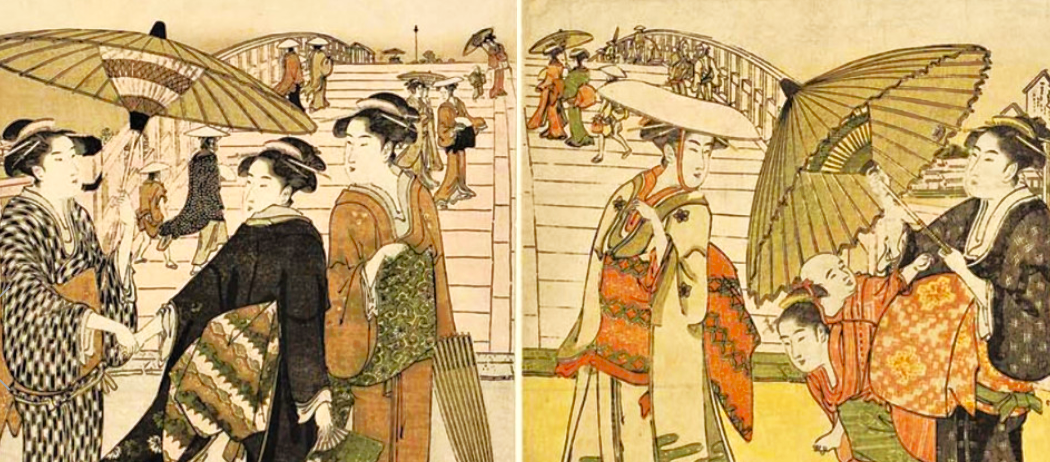
Utamaro conceptions of hands poise in individual portraiture with the blank backdrop from the days of Manet's japonisme
Below, Hodler's Ergriffenheit (1942), sandwiched between Utamaro. Truly, the hands are vital in Utamaro female portraiture, whether fully shown or half hidden; so much so that in the mirror (in the right print below) it is the hand that is mainly reflected, not the face, so that we can enjoy the hands thrice over!
Stance and pose, angled necks, glance in opposing directions in group portraiture
This was also adopted by Dante Gabriel Rossetti much earlier, as discussed in the previous page of this website. Below: Ferdinand Hodler, 'Heilige Stunde' (1911), followed by Utamaro poses and further below, pictures by Ippitsusai Buncho (c.1727-c.1796) and the Kaigetsudo school, of whom Kaigetsudo Ando (1673-1743) was renown for accentuating this type of pose in ukiyo-e.
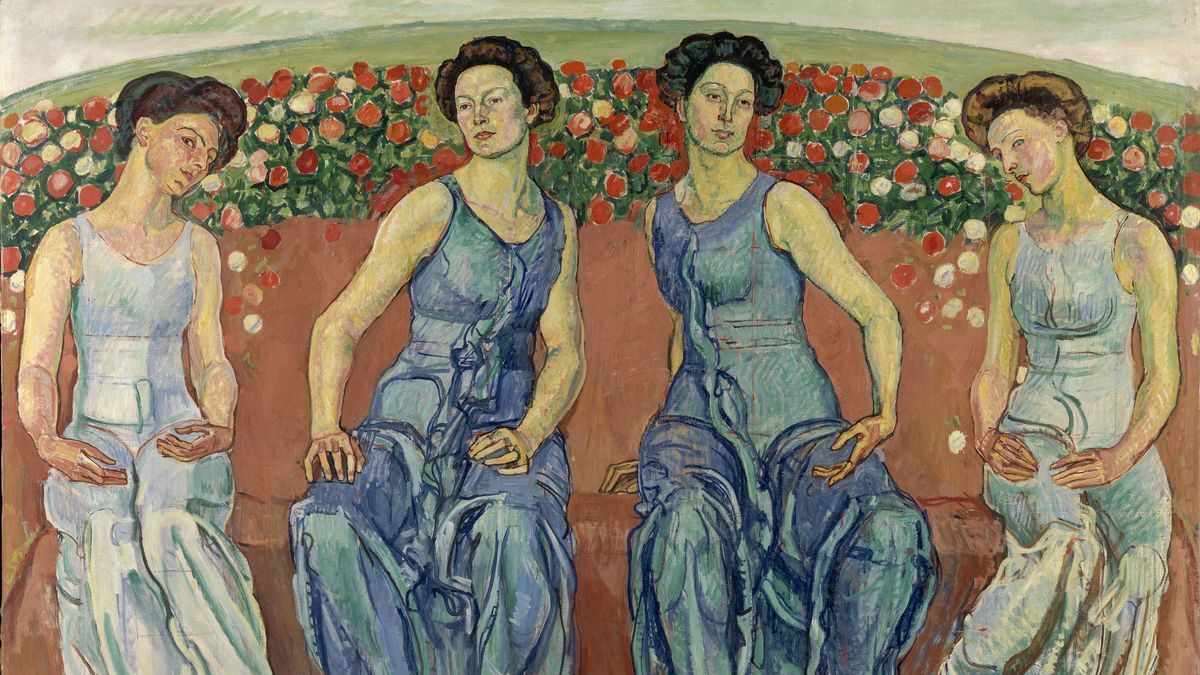
The traditional Japanese admiration of the back and nape of the neck as hallmarks of feminine beauty
The concept of 'Back Portraiture' of single individuals as an established genre, with a reduced view, or even no view of the face. The peculiar form of dress Hodler repeatedly uses as an alternative means to express the same thing, as in his 'Joyous Woman' series (1909-1911). Therefore the hands and forehand, neck and upper back are exposed, the body and legs covered, and the hair bundled up. But how much more elegant is the Japanese kamigata (hair style) and the kimono, as vehicles of artistic expression!
Regard also the use of Rimpa style backdrops -- almost as if the figure is painted on a giant fan, which of course was not an uncommon theme of 'senmen' design, i.e. designs on folding (sensu/ogi) fans: bon odori, other dancing, or Noh drama figures. In any case, the general shape and composition of the background is reminiscent of a Rimpa style fan, with its large expanses of gold and natural forms centered often in the lower half, cropped off at the bottom. Like many artists, Hodler under the surface was eclectic, apparent when one is able to recognize the sources employed. And this is all just the tip of the iceberg; but it is hoped that enough has been provided to convey the point, that in the case of esteemed artists, whether they be painters or architects, the debt owed to other aesthetic traditions is, might we say, 'brushed under the rug'.
Below: Yoshino Screen, 16th century, Suntory Museum, Tokyo. A typical late Muromachi byobu screen, the sort which would influence the Rimpa School. Compare the screen with Hodler's backgrounds above. Note Hodler's expansive gold, greens, touches of grey, rocks, and scattering of white flowers, as in the Yoshino Screen.
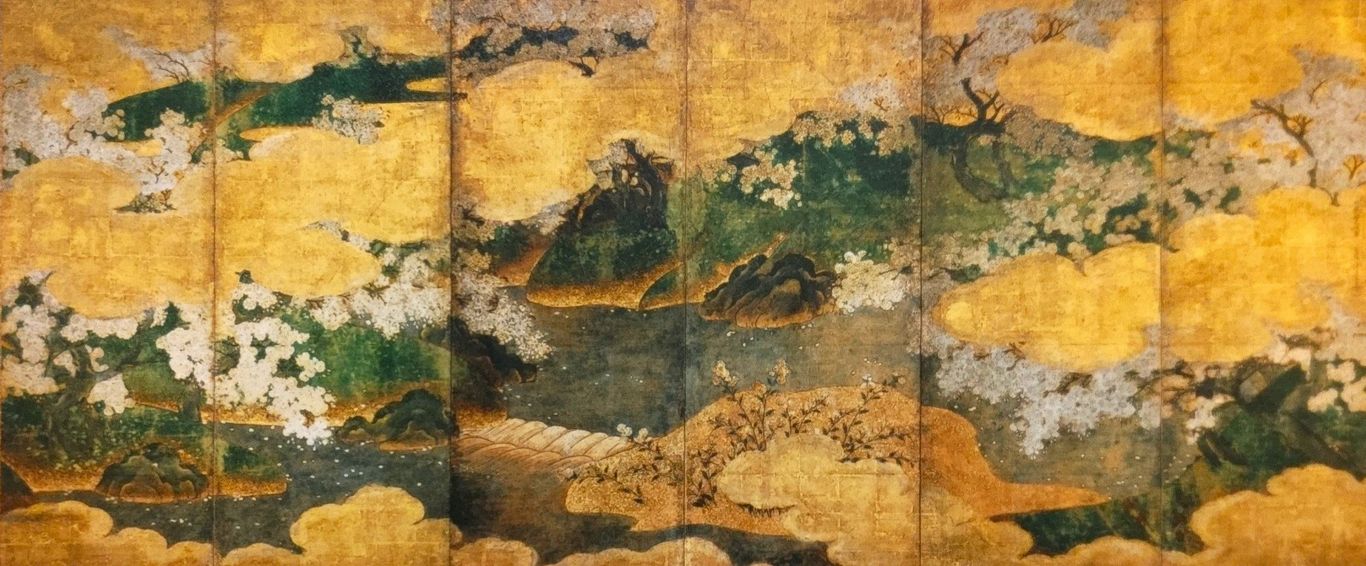
Collections of Japanese art in Switzerland
Numerous collections of Japanese art existed throughout Switzerland at the time. We have already mentioned the collections of artists such as Grasset and Sturzenegger above. Thomsen discusses the existence of various merchant collections, especially those of textile merchants such as Rudolf Lindau (1829-1910). Some of those collections are now part of museums, such as the Textile Museum in St. Gallen, which holds over a 1000 such artifacts, primarily East Asian textiles, as well as hundreds of katagami and woodblock prints. Various specialized collections from that era also exist, such as those focused on ceramics (Ariana Museum, Geneva), ukiyoe prints (Print Cabinet, Geneva), bamboo crafts (the Hans Sporri collection), and netsuke (exhibited at the Historical and Ethnological Museum, St. Gallen).
Generalist collectors of Japanese and East Asian art include Alfred Baur (1865-1951), whose Baur Foundation holds some 9000 Chinese and Japanese art objects. Various other private collections are now being discovered and investigated (e.g. Sabine Sophia Bradel, 'Japanese Woodblock Prints in a Private Collection in Winterthur, Switzerland'; or Matilde E. Tettamanti, 'A First Examination of the Japanese Art Collection of Monte Verita in Ascona, Switzerland'. Both from Proceedings of the Art Research Center, Ritsumeikan University Symposium: Seiyo ni okeru nihon bijutsu no juyo wo sakanoboru -- chuo no case study wo toshitemiru', 2023.1.28).
Finally, what is perhaps especially interesting, is that Japanese artefacts were even being introduced in schools. Thomsen recounts how Heinrich Schiffmann (1872-1904), son of a cheese magnate, donated his large collection which included artefacts from East Asia to a local gymnasium (competitive high school) where a museum was established, which students were actively involved in curating.
In other words, Switzerland, despite not being as high profile in the world of japonisme, and somewhat a ‘late bloomer’, was in full blossom at the turn of the century, and opportunities to access Japanese artistic resources were not lacking in Switzerland at the time.
Swiss architects and japonisme
Thomsen discusses an episode particularly relevant to our discussion of architectural japonisme and Le Corbusier. Rather than paraphrasing, here is what he has to say (bold added):
"Collections of East Asian objects were also gathered by noted Swiss architectural firms, active in the late nineteenth century. An example would be the remarkable Villa Patumbah, which was built by the firm of Chiodera and Tschudy between 1883-85 on the outskirts of Zurich. This villa was built for Karl Grob (1823 - 93) who had made his fortune in Sumatra as a tobacco manufacturer. He had the house built in contemporary fashionable style with numerous exotic elements, and included a remarkable "Japanese room" in the innermost, private section of the house. Here the architects had their painters create a wide range of designs, all relating at some level to East Asia. Particularly interesting are the calligraphy panels that all relate to actual prints and material objects brought from East Asia, that likely were in the collection of the architects and their staff of painters."
Switzerland amidst the world-wide luxury goods and crafts japonisme movement
Especially in the area of luxury crafts, of which the young Charles Eduoard Jeanneret was preoccupied with, the Japanese influence was pervasive at this time. Across all of Europe and in America, it was a driving force nurturing what would become the biggest brands in luxury goods and jewelry such as Tiffany, Gorham, Chaumet, Louis Vuitton, Hermes, Christofle, Van Cleef & Arpels, Lucien Gaillard, and Rene Lalique—to name a few, and not to mention any of the high-end chinaware manufacturers (for a easy synopsis of the influence of Japanese art on high-end metal crafts, jewelry, and other luxury brand goods in the West, see New York Times "How Japonisme Forever Changed the Course of Western Design' by Nancy Hass, Pub. Feb. 11, 2012). It is hard to believe that in this golden age of the 'japonisme of the luxurious', in a nation with a burgeoning number of high quality watchmakers (of which the Jeanneret family was part of), that someone of Charles-Edouard's sensibilities would be untouched by that enormous wave.
Japanese art and aesthetic ideas, in other words, were inevitably permeating Switzerland’s artistic circles and their client/patron communities. It is this perspective that we must keep in mind when considering Le Corbusier’s case as well.
Exploring Unusual Sources for Le Corbusier's Architectural and Sculptural Forms

Samurai kabuto helmet in the stylized form of a sea creature, with a sun disk, late 16th century, British Museum
The idea that Le Corbusier might have been influenced by Japanese forms of armor, especially helmets, may not be as unlikely as it might seem at first. Le Corbusier's influential teacher of his student days, Charles L'Eplattenier, and the architect he called the most influential in his maturity, Eugène Viollet-le-Duc, were both admirers and sketchers of medieval European arms and armor, with a particular fascination for helmets. He himself in his sketches shows that his attention was directed at reliefs, sculptures, pottery and other objects from a wide range of cultures.
Below, to the left is a typical Japanese 'eboshi' hat, worn by aristocrats since Heian period, a thousand years ago, frequently depicted in Japanese art, and still worn by Shinto shrine priests. The idiosyncratic form of Le Corbusier's architectural model (center), is very much that of the eboshi or eboshi style helmets (right, tango no sekku display minature helmet).
Below: The exhibit room of Japanese armor at the Deutsche Gesellschaft fur Natur-und Volkerkund Ostasiens (OAG) Tokyo, from 1874-1878. Japanese suits of armor are found throughout Europe, especially in royal and aristocratic collections, as well as in major museums. The type of helmet shown above, can seen in the photo below hanging high above, far right. Miniature iron versions of these helmets were held by most families in Japan, and more decorative versions displayed annually not only in homes but in inns and hotels for the Tango no Sekku celebration in May. These ubiquitous miniature versions of helmets have a voluminous, sculptural quality to them, and can be bought for a very reasonable price. Yet it would hardly be possible, if Le Corbusier was in fact inspired by such forms, to admit that his ideas came from what can be considered 'toys' for boys, without deflating his carefully cultivated reputation for original genius.

Kawari Kabuto: Strikingly Unique Helmet Forms and their Potential as Sculptural Art and Architecture
First row: Japanese kabuto (helmets); second row: various buildings of Le Corbusier with similar qualities. What is interesting is how the peculiar, idiosyncratic spirit of the shapes that Le Corbusier creates have a strong affinity to forms found in traditional Japanese cultural artifacts. The possibility that these sorts of forms may have been a source of inspiration for Le Corbusier is strengthened by the fact that his earlier sketches, at the esquisse stage, are even closer to the kabuto forms.
Take for instance, his sketches for the Eglise Saint Pierre at Firminy. This author only discovered the sketch shown below after seeing the completed building, but sensed the affinity to the cut bamboo form from the start; and sure enough, the earlier design of Le Corbusier's was closer to the 'archetypal' Japanese form. Furthermore, the same shape appears elsewhere, as on the top of his Chandigarth Assembly, even more faithful to the cut-bamboo form.
Other parallels may seem less obvious. The Juogashira helmet (1st row far right), it seems, has been deconstructed; the inside round helmet with a crease in the middle and the outside leaning whirls are separated and placed apart in his Unité d'habitation (2nd row far right). We should add that this, and other parallels found here, need not be a conscious act of imitation for us to see the strong psychological affinity of artistic forms between those of Japan and Le Corbusier.
And of course, design histories and the personal commentaries of Le Corbusier make no mention of such possible associations. The pronounced curved shape of the Assembly of Chandigarth roof, for instance, was inspired by the shape of a bull's horn, or so it is said (this too may be true; there may be a confluence of several inspirational sources, but the heavy, cumbersome shape of the roof is closer to the helmet, and lacks the sense of delicate curvature found in a bull's horns). Or the shape of the Firminy church or rooftop structure on the Chandigarth Assembly is supposed to come from the chimneys of Jura region farmhouses. For each of Le Corbusier's buildings, an unrelated source from the others, or an alternative resemblance, is always offered. But how much more elegant and coherent is the japonisme hypothesis presented here, which provides the thread that ties together his various, disparate works, like no other source can!
Below: 'Kuro Urushi Nuri Shukongousho Nari Kabuto' (黒漆塗執金剛杵形兜 Black urushi helmet in the shape of an arm holding the vajra, diamond thunderbolt, of the deity Shukongou), 17th century, Yasukuni Shrine Collection. Made using the harikake (張掛け)method, in the shape of an arm of the Deva King Shugongo, symbolizing the power in Buddhism, holding the pestle shaped vajra with 5 prongs which destroy evil. It must have made a deep impression on friend and foe alike on any battlefield, as well as on any sculptor or architect who might behold it, and is older and more potent than Le Corbusier's Open Hand Monument at Chandigarh.

The author claims the above image as his creation (based on a photo from the Fukuoka City Museum), and entitles it:
'This Hand holds Truth more More Potent than the Open Hand Monument at Chandigarh'
2023/9/18
_____________________
Uploaded 2023/5/18
Formatted for PC and tablet viewing only
Draft
Eric Mendelsohn (1887-1953)
Japonisme in Architectural Expressionism
'Kaoh'--Seal of the Worthies--Cornucopia of Croquis
Yasutaka Aoyama
"Where observers have hitherto seen one stylistic tendency after another, each obliterating its predecessor and pointing in a different direction, now an inner bond can be discerned. It is one that has been deliberately masked, in many cases; for artists have often been reluctant to acknowledge the existence of their 'Japanese arsenal'."
Klaus Berger, Japonisme in Western Painting from Whistler to Matisse,1992, p. 334 (Cambridge Studies in the History of Art)
Whether one calls it an arsenal, or otherwise a guidebook, a treasure trove or cornucopia of the imagination, --the fact is that Japanese art, artifacts, books, and cultural practices, in all their endless multiplicity of forms and ideas, produced in quantity and quality, have been a font of inspiration since the mid-19th century for many of the most acclaimed artists and thinkers in the West.
When Japanese art was a novelty, known only to few, artists could openly sing its praises and sound original; after the dawn of the 20th century, almost 5 decades had passed since the opening of Japan, and every other bourgeois family now had a Japanese fan, porcelain, or some such object. Too many artists had already paid it high tribute--thus it no longer sounded original to be inspired by Japan. But what if it still was, by all measures, the best place for good ideas, the richest of artistic treasure troves?
After ukiyo-e prints had seen their day, Western artists searched for new sources of inspiration--to keep for themselves. Places like Kyoto or Tokyo had been scourged, and yet they still had much to offer; others looked to places further away, as to the north of Japan, to its folk arts, crafts, and architecture, or to other lesser known facets of Japanese culture--or so we propose here. It is something that has already been proven to be true for many architects like Charles and Ray Eames, Charlotte Perriand, Walter Gropius, Wells Coates, Bruno Taut, and other self proclaimed Japan enthusiasts who were part of a wider circle of well-known architects.
Whether it was true for Eric (Erich) Mendelsohn, that the reader can decide for himself after reviewing the circumstantial evidence below. These varied examples should suffice, but many more could have be added.
What is particularly fascinating about Eric Mendelsohn, is his particular type of japonisme: his possible use of the 'kaoh' (which we will henceforth shorten to 'kao') as a source of ideas for croquis, that is initial sketches of the basic concept of the design. The kao have been translated by certain museums as 'Seals of the Worthies'. These are not, however, stamped seals, but rather signature-like personalized artistic designs, an identifiable hand drawn 'brand' added to a signature. It was reserved for important documents and letters by emperors, aristocrats, samurai lords, high priests and the like.
While the japonisme of 'monsho' or family or business crests is well-documented (the use of monsho patterns by H. H. Richardson and the de Stijl circle has been discussed in earlier sections of this website page, and luxury brand companies as Louis Vuitton are known to have incorporated Japanese monsho into their designs), no research has been done to date on the influence of the 'kao'.
Thus Mendelsohn's case is of particular interest. It may be possible to match a good amount of his entire sketch portfolio with a limited number of kao designs. That is to say, it is not as if there are an infinite number of kao designs available; the designs of the kao can be divided into several categories, and Mendelsohn's sketches as a whole also tend to fall into those categories. He needed only to see a few books, at most a few hundred kao total, possibly less than a hundred. As the kao were employed almost exclusively by leading figures of state or religion, and because only the kao of famous or popular historical figures are usually included and repeated in kao collections, it is truly astonishing how his sketches can be aligned with those kao, not just by closely matching objective characteristics, but in a very intuitively satisfying way.
Kao often appear to be 3-dimensional grounded forms, and those are often used as elevations in Mendelsohn's sketches; while those that look 2-dimensional, and are more abstract in shape, are used as plans. The typology of his sketches, if you will, follows the broad categories of the kao in more ways than one. Furthermore, it seems there were certain kao that Mendelsohn was particularly fond of, and would repeatedly use, creating variations on a theme. The kao acts as a bridging image, making us see underlying connections between his sketches. Take the example from the series following the Einstein Tower, comparing Mendelsohn and Mori Motonari, further below. Both of Mendelsohn's images retain the same basic kao shape, but one image contains and emphasizes certain details of the kao that are left out in the other image, and vice versa. Sometimes Mendelsohn's croquis look so much like kao, that it is hard to tell them apart without the labeling, as in the example of Mendelsohn compared with Oda Nobunaga and Asakura Yoshikage, further below.
Mendelsohn's manner of drawing croquis is unique, to say the least, when compared with other famous architects, and that too adds to the plausibility of the 'kao to croquis hypothesis'. Kao simply do not to fit well with the sketches of other architects; it is this snug fit of Mendelsohn's artistic foot in the shoe of the kao, so as to speak, that makes the hypothesis so interesting. These distinctive shapes then, at the very least, are a useful tool in categorizing and analyzing the basic forms he creates. Mendelsohn's sometimes seemingly nonsensical images also become less oblique; and his entire portfolio reveals a clearer unity, when considered from the perspective of the kao.
But there are still other reasons to believe the kao were likely known to Mendelsohn. It is not just the forms themselves that are so strikingly similar, but the way his sketches were done: on small squarish pieces of paper, upon which he would draw tiny, perhaps a few centimeters in size images in the center of the paper--which is just the size and way most of the kao were printed, in the various small booklets they were contained in. And despite the small size of his croquis, Mendelsohn often drew them with what seems to be a rather thick ended pen (as if with a brush--as in Eastern calligraphy?).
After organizing and compiling the images below and the writing the above, this author came across the following extensive interview conducted by Susan King (University Art Museum, UC Berkeley) of Luise Mendelsohn, Mendelsohn's life-long spouse (who, among other things, introduced Mendelsohn to H. Freundlich, client for the Einstein Tower) :
"He read a great deal about architecture, and he also became deeply interested in Oriental philosophies. He thought that America should turn away from Europe and look more to the Orient for its inspiration. I know he liked San Francisco not only because it is a beautiful city, but because it is close to the Orient." (King, p. 26)
As van Gogh had gone south to be closer to the Orient in climate and light, so it might be said that Mendelsohn had gone West to be literally closer to a key source of his creative inspiration. However, though Luise Mendelsohn afterwards mentions China and India, as well as various aspects of European culture, but not Japan. The same can be said of Eric Mendelsohn himself, from whom we hear nothing, even of the above, in his most widely published public lectures. But this is odd, since the architects that Mendelsohn most closely associated or corresponded with included the ones most vocal in their enthusiasm regarding Japan, such as Frank Lloyd Wright and Henry Van de Velde -- the dominant avant-garde architect in Europe during Mendelsohn's early adulthood. Regarding Van de Velde, Mrs. Mendelsohn says:
"Van de Velde was extremely important to Eric, and in fact Van de Velde came to think of Eric as his disciple. Eric also felt this was true, that he was indeed a disciple of Van de Velde. He was impressed by Van de Velde’s architecture, by his sense of design, and also by his writings.” (bold added)
Luise Mendelsohn in Susan King, The Drawings of Eric Mendelsohn, p.34, 1969
If he was interested in Van de Velde's sense of design and writings, and he thought of himself as Van de Velde's disciple at the time, then how possibly could he not have understood Van de Velde's strong conviction about what he called "the sudden revelation of Japanese art" or the Japanese line being an "overwhelming revelation" and "salvation" as he had written as late as 1910?
"It took the power of the Japanese line, the force of its rhythm and its accents, to arouse and influence us. Its rhythmic strength and intensity could not but awaken even the deepest sleepers. The wonders born of a well-judged balance between the subordination that can be demanded of line and the freedom that must be granted to it came to us as an overwhelming revelation: it was like a sudden blaze of sunlight emerging from thick cloud. The Japanese line brought salvation. Its reckless courage and the boldness of its gestures, picking on the most unexpected moments to introduce an emphasis; the powerful, haunting rhythm that carries brain and soul along like the clouds of incense that rise to the Buddhas -- all this aroused our astonishment, and this strange astonishment fell on our reawakened longing for a fertility of our own like rain on the parched, yearning, concupiscent earth."
Zum neuen Stil, ('Die Linie' pp. 181-95) in Klaus Berger, Japonisme in Western Painting from Whistler to Matisse, 1992.
Perhaps the omission of Japan, not only by scholars but by relatives, may again be due to the phenomenon, mentioned at the beginning of this discussion, of believing they are guardians of the deceased's reputation and originality. While inspiration from ancient Greece or modern European masters is met with nodding approval, the influence of foreign cultures is frowned upon by some. As Klaus Berger, one of the foremost scholars of Odilon Redon recalls,
"When I asked Odilon Redon's son what were his father's precise Japanese sources, he bridled and declared: 'Mon père, vous savez, n'a imité personne, il était un artiste tout à fait original': 'You see, my father didn't imitate anyone; he was a totally original artist.' "
Japonisme in Western Painting, p. 334, 1992
What is clear, aside from the question of the kao, is that Mendelsohn did follow well-known Japanese architectural principles, in terms of plan, elevation, and interior decor, and that he frequently combined those elements in a single project. Several of his final plans diverged greatly from his early partis/croquis; it seems that he often used the kao as a brain-storming tool, but would come to rely on proven Japanese architectural principles in his completed projects. But that is not to say that there are a good number of completed projects that did retain the qualities of the kao expressed in the early croquis.
Let us first take look at Mendelsohn's most famous work, his Einstein Tower in Potsdam (1920), and compare it with the kao of some famous Japanese historical figures, displayed in many of the kao booklets. It is postulated that Mendelsohn would have seen these kao below, or one like them. All the kao that relate to the Einstein Tower are post 1500 and some are from the 19th century. From this, it would seem that one of the kao compendiums he viewed was one that included or focused upon kao from the Sengoku to Meiji periods.
First row: center Mendelsohn; left kao of Yoshida Shoin (1830-1859); right kao of Emperor Higashiyama (1675-1710). Second row: left kao of Reizei Tametoyo (1504-1560); right kao of Emperor Go-Komyo (1633-1654).
Below are further variations on this basic schema. First row: center Mendelsohn, left Konoye Nobutada (1565-1614); right Kato Tomosaburo (1861-1923). Second row: center Mendelsohn; left Matsudaira Tadanao (1595-1650); right Sakai Tadatoshi (1559-1627).
Below, some early croquis included. First row, center Mendelsohn; left Tokugawa Iemitsu (1604-1651); right Satake Yoshihiro (1812-1846). Second row center Mendelsohn; left Date Masamune (1567-1636); right Bunshutsu Soshu (c. 1571-1640).
Distinctive kao forms and their possible 'Mendelsohnian' transformations
First row, left Mendelsohn, Emanu-El Community Center, Dallas, Texas, 1951; right kao of Ashikaga Yoshiaki (1537-1597). Second row, left kao of Uesugi Kenshin (1530-1578); right Mendelsohn sketch for a theater, 1917. Third row, left Totoyotomi Hidenaga (1540-1591); right Mendelsohn. Fourth row, left Mendelsohn; right Toyotomi Hidetsugu (1568-1595). Fifth row: left Hachisuka Yoshishige (1586-1620); right Mendelsohn. Sixth row, left Mendelsohn, 1917; center Mori Motonari (1497-1571); right Mendelsohn, 1917.
Designs with up cut pointed ends reminiscent of Japanese kao drawn with a brush
First row: left, Mendelsohn; right, kao of Bessho Yoshiharu (1579-1654). Second row: center images Mendelsohn; far left kao of Konishi Yukinaga (1558-1600); far right Saito Yoshitatsu (c.1527-1561).
Croquis with flatish, ground hugging, downward sloping, often bent designs
First row two center images Mendelsohn; far left Asai (Azai) Nagamasa (1545-1573); far right Hojo Ujinao (1562-1591). Second row, from left to right: Mendelsohn; Ii Naomasa (1561-1602); Mendelsohn; Naoe Kanetsugu (1560-1620).
Croquis with funnel like or bent, form with jagged or ribbed elements
First row, Mendelsohn to the left and right. Center Oda Nobunaga (1534-1582). Second row, Mendelsohn center, left Oda Nobunaga, right Asakura Yoshikage (1533-1573).
Below, from left: Gyoen Hoshinno (son of Emperor Kameyama, 14th century) kao of 1335; Mendelsohn;Mendelsohn; Hirai Sadatake (16th century).
Croquis emphasizing verticality and angularity, with sharp edges and wedge like cuts and pointed extensions
Mendelsohn left, various Ashikaga Shogun kao on the right. First row: Mendelsohn, Ashikaga Yoshimasa (1436-1490). Second row: Ashikaga Yoshizumi (1481-1511). Third row: Mendelsohn; Ashikaga Yoshinori (1394-1441). Fourth row: Mendelsohn; Ashikaga Yoshimitsu (1358-1408). Fifth row: Mendelsohn; Ashikaga Yoshinori. The kao here are all from the Muromachi period from the 14th to mid-16th centuries, of the Ashikaga shoguns.
Example of more finished elevation, kao japonisme via the technique of 'elaboration'. Center: Mendelsohn's Skyscraper on the Kemperplatz, Berlin (1922). Note in particular the similarities of Mendelsohn's elevation with the kao to the left. If one looks closely, the parts of the kao find their corresponding sections of Mendelsohn's building. The kao functions wonderfully as a croquis, where exaggerated elements are toned down to the level of realizable construction, and are elaborated upon with greater detail, but the basic idea remains. Left Honda Masazumi (1565-1637); right Hosokawa Tadatoshi (1586-1641).
Roundish organic designs whimsical and fantastic in nature
The Mendelsohn designs are center, to the left and right are Japanese kao. First row: center Mendelsohn pleasure pavilion; left Okudaira Masayuki (1855-1884); right Ashikaga Yoshiharu (1511-1550). Second row: center Mendelsohn pleasure pavilion; left Konoye Iehiro (1667-1736); right Makishima Akimitsu (late 16th century - 1646). Third row: center Mendelsohn pleasure pavilion; left Miyoshi Yoshitsugu (1549-1573); right Date Masamune (1567-1636).
Use of kao as a framing device
Two center images are by Mendelsohn, to the far left and right are Japanese kao. Far left: Otomo Sorin (1530-1587); far right: Hoan Kokei (Kokei Sochin) 1532-1597).
The following are built designs of Mendelsohn, with comparisons to Japanese architecture:
Herrmann & Co. hat factory, Luckenwalde, Germany, 1921
Mendelsohn's hat factory compared with farmhouses, typical of the Tohoku (northern) region of Japan.

Temple and Community Center, Congregation Emanu-El, Grand Rapids, Michigan, USA, 1948-1952
Temple and Community Center, Congregation Emanu-El, Grand Rapids, Michigan, 1948-1952 compared with Katsura Imperial Villa, Kyoto. The plan also reminds one of the Bauhaus, which is even more analogous to the Katsura Villa, and it seems Mendelsohn takes from both. While the positioning has been altered, the spatial concepts remain the same: a prominent, frontward projecting main hall, the basic bent building formations, and the square and corridor-like semi-enclosed courtyard areas; all are still clearly recognizable. Like the Katsura Villa, the main building is approached from the side, first passing along a wall.
Pacific Heights, San Francisco, USA, 1950-1951
The Mendelsohn designed Pacific Heights house, San Francisco, 1950-1951. Echoes of Kiyomizu-dera (Temple), Kyoto. The bulky, solid top floor corresponds to the roof of Kiyomizu-dera, and Mendelsohn's outward projecting round bay echoes the corner deck of the temple, shown in the photo to the right. The floor below, the Main Floor, whose floor plan is shown below, with its spacious and wide balcony, corresponds to the 'Kiyomizu-no-Butai' or 'stage'-like deck. Like Kiyomizu-dera, the Pacific Heights house juts over an incline with sweeping vistas below, one of San Francisco Bay; the ancient temple, of the whole valley of Kyoto. Exposed pillars support the Mendelsohn designed house, as do wood ones at Kiyomizu. Mendelsohn's design, though more faithful to the Kiyomizu-dera concept, also reminds one of Frank Lloyd Wright's famous Falling Water (Pennsylvania, 1937), which, by the way, was also likely to have been part inspired by Kiyomizu-dera, as discussed by Clay Lancaster in his The Japanese Influence in America (However the main hall of Hasedera Temple (Sakurai, Nara), with its far extending rectangular platform, was probably the more important model for Wright). The photo of the interior shows shoji-like sliding doors and a small nakaniwa style area for plants. The main floor plan also reflects other typical features of Japanese residential architecture, such as its 'engawa' corridor and then balcony combination, a double 'buffer' zone layout, corridor-like balconies on both sides of the dining room, ending with a 'tsuke-shoin'-like corner room whose two sides face the exterior--these are all related features found together in Japanese traditional residential architecture. It is easy to forget just how revolutionary this sort of plan was, compared to traditional Western architecture, where corridors were in the center of a building, branching out to rooms placed in rows along the exterior of a house; and how quintessentially Japanese were modern plans.
Hebrew University, Mount Scopus, Jerusalem, Israel, 1936-1938.
The massive, solid, block-like nature of the university buildings, viewed from the exterior, belies Japanese style features blended within. From the left: a 'sode-kabe' (kimono-sleeve wall) style partition with interior window, somewhat like a scene in a chashitsu (tea house); a large round interior window, also found in tea houses and temples overlooking nakaniwa or corridors; a glass wall-partition with 'koshi' (shoji wood grill) proportioned window panes.
Examples of various Japanese architectural features found in Mendelsohn's works
Other facade treatments, signs, and interior features characteristic of Japanese architecture or culture. Often those elements of plan, facade, and interior design are packaged together in Mendelsohn's designs.
Kao: The Whimsical Parade of the Imagination
Above: Eric Mendelsohn, a variety of imaginary, whimsical project drawings; below, two spreads from a booklet of kao. A similar spirit of Mendelsohn's whimsy and fantasy can be found in kao (no specific parallels intended here). Collections of kao were numerous and republished in the Meiji period, and often in compact pocket sizes.
Bibliography
(under construction)
Hitomi Rihei (人見 理兵衛) and others, publishers (author unidentified). Chajin Kaoso (茶人花押藪), Osaka, 1746.
Kawazu Horai (河津 蓬莱). Zoku Chajin Kaoso (続 茶人花押藪), 1805.
Kohitsu Ryochu (古筆 了仲). Shigan Insho Kaofu (紫巌印章花押譜), Okamuraya Shōsuke (岡村屋 庄助) publisher, Edo, c. mid-19th century, before 1869.
Maruyama Yoshizumi (丸山 可澄 1657-1731). Kaoso (花押藪 7 volumes), first printing 1690, sequel (続編, 7 volumes) 1708; reprints of the combined 14 volumes in the following centuries up to the Meiji era.
Matsuzaki Sukeyuki (松崎 祐之). Koofu (古押譜 6 volumes), 1715.
Nakagawa Toshiro (中川 藤四郎) publisher (author unidentified). Gunken Oofu (群賢押譜) Takemura (武村) version, Kyoto, 1824.
Yashiro Hirokata (屋代 弘賢 1758-1841) editor. Kaoshu (花押集), late 18th - early 19th century.
Yokoyama Kan (横山 寛). Kaoshui (花押拾遺 5 volumes), Eirakuya Toshiro (永楽屋 東四郎) and others, publishers, 1836.
________________________
Uploaded 2023/5/21 - 7/11
Philip Johnson (1906-2005)
From the Ancients to Contemporaries of Japan
or
From Modernist Subtraction to Post-Modern Addition
Yasutaka Aoyama
Modernist Subtraction--the Abstraction of Traditional Japanese Architecture
"Philip Johnson, born in Cleveland, Ohio, in 1906, gained a profound knowledge of Japanese building while he was Director of the Department of Architecture at The Museum of Modern Art in New York."
Siegfried Wichmann, Japonisme: The Japanese influence on Western art since 1858 (1981, p.366)
Like Mies van der Rohe, whom Philip Johnson collaborated with, Johnson's early japonisme is characterized by the abstracting of key Japanese architectural principles into his designs using industrial materials, and the shearing away of traditional, identifying markers.
Clay Lancaster, a noted historian of 19th and early 20th century American architecture, who wrote the milestone work The Japanese Influence in America (1966), discussed the clear influence of Japanese architectural concepts upon Johnson's early designs (images from his book are shown below), focusing upon the Rockefeller Guest House in New York City (1950) and the Philip Johnson House in Cambridge, Massachusetts (1942).
The photo of the courtyard garden of the Rockefeller Guest House is very much in a 'naka-niwa' style, and takes from classic Japanese gardening principles. Observe the square stepping stones to cross the shallow pond, the single, sparsely branched tree enclosed by a wall, and the style of open framing on the other sides, all in roughly Japanese 'tsubo-niwa' scale and proportions. The house is relatively narrow and deep, reminscent of classic kyoto city homes, or 'machiya'.
The Philip Johnson House in Cambridge is another case of abstracting (including 'de-roofing') of the most fundamental concepts, and scaling, of a traditional Japanese residence, with its enclosed, walled garden and small street entrance from which the interior may be glimpsed; and its living spaces that are open in continuous fashion to the garden, as in a typical one storey Japanese 'hiraya'. His personal residences seem to have been generally Japanese in conception. Of his house in New Canaan, CT (1949), built several years later, Wichmann notes how "All exterior walls are glasss, creating an open effect comparable to a Japanese house. The simplified ground-plan is like Japanese modular systems." (Japonisme, p. 361)
Elsewhere too, one finds parallels between Johnson's works and traditional Japanese architecture. His idea of a black, glass box placed crossways and overhanging a solid, stone based, larger rectangular structure (below left) seems to echo the same basic concept found in castle 'tenshukaku' design, as in the case of Kumamoto Castle (below right).
Post-Modern Addition, or the Grafting of Contemporary Japanese Architecture
The AT&T Building, Madison Avenue, New York
Not the First Post-Modern Skyscraper
The first post-modern skyscraper was not designed by Philip Johnson and completed in 1984 in Manhattan, but in 1965 in Yokohama, by the Obayashi Gumi's (corporation) architectural team, who came up with innovative modern and post-modern designs throughout the 1960's and 70's. Indeed, it can be argued that post-modernism was born in Japan as the great-grandchild of the Meiji Restoration (a de facto revolution): the merging of traditional Japanese and Western styles, producing the 'wayo-secchu' style as its first offspring; which married to industrial technology produced a more modernist 'machine' style in Japan as a natural consequence; and finally from there a re-uniting with traditional motifs that led to the post-modern movement, from the early 1960's (at the latest) in Japan.
The phenomenal recovery of Japan in the post-WWII period, whose pace quickened in the early 1960's, saw the rapid construction of a variety of original designs, in a country with few building restrictions or community imposed restraints on design compared to Western countries. Innovative and sometimes outlandish buildings sprouted up in cities across Japan, and a new kind of architectural japonisme, based on contemporary designs took hold of architects in Western countries, especially the United States.
James Steele, in his section on 'The Japanese Influence' in his book on Charles and Ray Eames, discusses that widespread phenomenon in architecture; and Philip Johnson was no less influenced by it. It was a japonisme, however, by different means: it was, simply put, a japonisme of addition, of surgical graftings and of elaborations, in contrast with his japonisme (and that of his contemporaries such as Mies van der Rohe) of subtractions and abstractions of Japanese aesthetic principles.
Johnson's skyscraper on Madison Avenue with its 'Chippendale' roof (first the AT&T Building, then the Sony Building, and now called 550 Madison Avenue) is a prime example of that shift in approach, so much so, that we might encapsulate the building's design, and only half tongue in cheek, as a simple formula:
OG(1965) + HE(1963) = PJ (1984)
Where OG = Obayashi Gumi (Corporation 1892- ); HE = Hasebe Eikichi (1885-1960); and PJ = Philip Johnson (1906-2005).
The basic idea, that of tall, extremely slender skyscraper, with a non-uniform window pattern, in beige-like, non-industrial tones, topped with a traditional motif, making the edifice a giant magnification of a more traditional structure, is all present in the design of the Obayashi Gumi's Hotel Empire (presently the library of the Yokohama Univ. of Pharmacy) in Yokohama. This structure was meant to evoke a pagoda, with its roof and spire. It has, when one looks carefully, slight eaves on each level which echo the eaves of a pagoda. The top floor is a panoramic viewing area, as in the case of the Madison Avenue building. But of course it is not a pagoda, and never pretends to be; it has simply utilized traditional elements for its own purposes.
The entrance level of Johnson's design however, is different from that of the Hotel Empire. Instead, it parallels in many ways St. Mary's Cathedral of Osaka, designed by Hasebe Eikichi, a pioneer of post-modern architecture (along with Kikutake Kiyonori and Murano Togo, among others). Hasebe's cathedral, designed before his death in 1960, and completed in 1963, is ahead of its time, yet also reassuring, unassuming, and elegant. Its combination of broad, unadorned surfaces combined with traditional arches and images is more innovative than Johnson's more predictable design, which combines elements of the front and side facades of Hasebe's St. Mary's. In surface texture and color, too, Johnson has faithfully reproduced Hasebe's church. Johnson's lobby is indeed cathedral-like; and further confirmation is gained when one looks inside St. Mary's: even the oversized, geometric floor designs, which lead from the entrance to altar in St. Mary's, are recreated with similar affect inside the Madison Avenue lobby, if reoriented in direction. In St. Mary's, the crucifix is fixed high up hanging from the ceiling, not on the wall of the altar, but more upfront, as if suspended; and due to the backdrop of the golden wall of the altar, the crucified Jesus glows in gold. This effect too, is somewhat reproduced using a glittering gold statue of a Greek god, it seems, in Johnson's design, which is placed on an unusually high pedestal.
To summarize, it is as if Johnson has attached a 'Westernized' version of the 'Easternized' Hotel Empire of Yokohama on the roof of St. Mary's Cathedral of Osaka, and placed it in Manhattan.
Text to be added.
Uploaded 2023/6/2
Afterword
Murano Togo (1891-1984)
Rethinking Post-Modernism's Origins
Yasutaka Aoyama
Murano Togo, one of Japan's most original and internationally under-appreciated architects, also deserves mention here. Murano has been wrongly characterized as an architect without a distinctive style; but this is simply due to a lack of global perspective. More than Hasebe Eikichi discussed above or even Kikutake Kiyonori, it is Murano Togo who perhaps best deserves the title of 'Father of Post-Modernism'.
His Shin-kabuki-za (New Kabuki Theater) of Osaka, shown below, was built, incredibly, in 1958; Charles Moore's iconic Piazza d'Italia, shown next to it, 20 years later in 1978. Murano, in the example below, has played with the forms of a traditional 'karahafu' arch in precisely a post-modernist way, multiplying, stacking, and recoloring them to create a strikingly new facade design. Has not Moore re-enacted what Murano did with ancient Japanese arches, this time with classical Roman arches, playing with those traditional elements in ways that conflict with their original principles of proportion, function, and number -- in the spirit of Murano's work? Or are we to say that post-modernism must utilize only Western, Greco-Roman symbols to qualify as post-modern? If so, it could rightly be condemned as the most blatant case of intellectual, ethnocentric chauvinism in our time.
In Japan, modernism was already studied and practiced by artists before WWII; and with the gut-wrenching devastation of nuclear defeat, on to the post-WWII rebuilding of the nation, there was much architectural experimentation going on. Japan was indeed somersaulting through political, social, technological, philosophical, and artistic change at great speed. Imperialism, marxism, existentialism, futurism, modernism, and every possible ideological and aesthetic movement was embraced and attacked between 1925 to 1955. From Taisho democracy to military dictatorship, and from there to the loss of sovereignty and occupation, on to independence and liberal democracy, Japan went through multiple political upheavals and paradigm-shifts as well as splinterings of worldview. America went through economic boom and bust, and its political systems and moral values were challenged, but not overthrown. In more ways than one, America was a more conservative and slower evolving society during that age. Post-modernism did not start in the 1970s in America, but in the 1950's in Japan.
The agelessness (or age-defying quality) of Murano Togo's designs
Murano's buildings often look a quarter to half a century younger than they actually are. Take the two examples below: to the left, the Yahata Library built in 1955 (sadly recently demolished), which reminds us of the Gordon Wu Hall (1983) at Princeton by Robert Venturi; and even more surprising is the Watanabe Okina Memorial Hall, built astonishingly in 1937, but looking something like an Isozaki Arata design from the 1980's! Charles Jencks' omission of Murano (and Hasebe Eikichi) in his numerous editions of The Language of Post-Modern Architecture is one of the major flaws of his otherwise inclusive approach to Japanese designers in his now classic exposition on the rise of architectural Post-Modernism.
________________________
We need your consent to load the translations
We use a third-party service to translate the website content that may collect data about your activity. Please review the details in the privacy policy and accept the service to view the translations.
